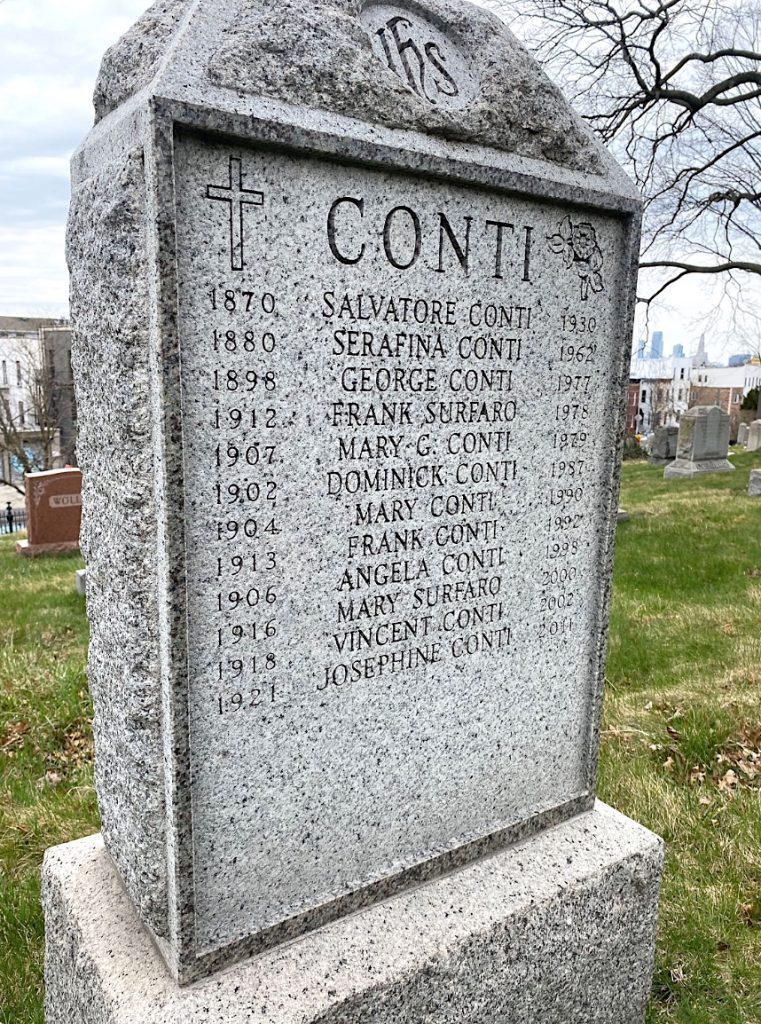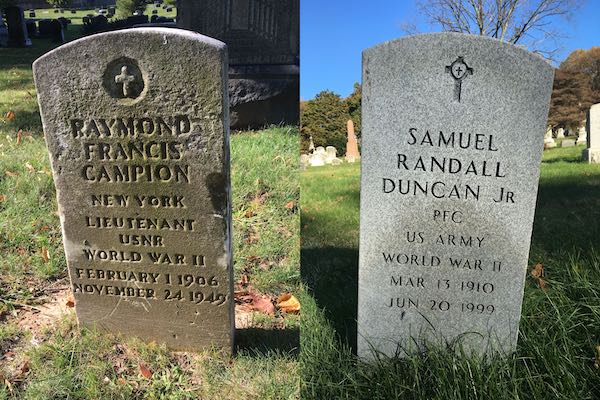
WWII Bio Search
Click for the other World War II biographies: Part 2 (Costa-Krutz), Part 3 (La Barbera-Phipard), and Part 4 (Pizza-Zeltmann)
Click here to share the story of someone you know who took part in World War II.
To mark the 80th anniversary of the United States’ entry into World War II, we are proud to announce the Green-Wood World War II Project. The goal? To honor the memories of individuals who served this country, whether in the military or as civilians, and who are interred at The Green-Wood Cemetery.
To launch this initiative, we put the word out in February 2021. It wasn’t long before we heard from hundreds of you. Children, grandchildren, nieces, nephews, friends, and neighbors shared stories of their loved ones with us. And because you knew these veterans personally, your descriptions are a rare gift to historians: namely, first-hand accounts of the men and women who served during World War II. We thank the dozens of dedicated volunteers, both as researchers and as writers, who stepped up to make this project possible. They’ve augmented the personal stories with extensive research, both here and offsite. The short biographies they’ve written commemorate these extraordinary individuals.
The stories are fascinating. One soldier stood guard at the Nuremburg Trials. One woman was a real-life “Rosie the Riveter.” We learned of a soldier who landed at Normandy and went on to fight his way through the Battle of the Bulge and across Europe. A sailor in Pearl Harbor fed ammunition to crews trying to fend off the air attack by Japanese forces. These are just a few of many accounts you’ll read here.
According the Brooklyn Public Library, 326,000 Brooklynites served in the US armed forces. That was twelve percent of Brooklyn’s total population and fifty-eight percent of Brooklyn’s males between the ages of eighteen and thirty-seven. In total, Brooklynites comprised two percent of the sixteen million Americans who served. Approximately 11,500 died in service.
This project is ongoing. If you know someone who took part in World War II, whether in military or civilian life, and is interred at Green-Wood, click here to share their story.
Biographies: Aceto – Conti (See other parts above)
ACETO, ERNEST (1921-1981). Unknown service history. Born in Brooklyn, the 1930 census reports that the eight-year-old Ernest Aceto lived with his parents, Bernard and Philomena; his four brothers, Angelo, Frank, Bernard and Ralph (see); and his three sisters, Henrietta, Louise, and Edith. His father was born in Italy and worked as a tailor. His mother was born in Brooklyn and was of Italian descent. The family resided at 1250 41st Street, Brooklyn. According to the census of 1940, Aceto, now 18 years old, still resided with his family on 41st Street, had completed two years of high school, and worked as an operator for a private business. However, his mother was listed as head of household and spelled her first name “Filomena” as opposed to “Philomena” as per the 1930 census. His father does not appear on the latter census.
Aceto’s World War II draft registration states that his father was designated at the “Person Who Will Always Know Your Address” and that both still resided on 41st Street. His registrar’s report from February 16, 1942, describes him as white, 5′ 7″ tall, 130 pounds, with brown eyes and brown hair, ruddy complexion, and had a scar on his right ankle. Details about his service are unknown. As per his niece, he never served in World War II. Section 106, lot 36368, grave 2.
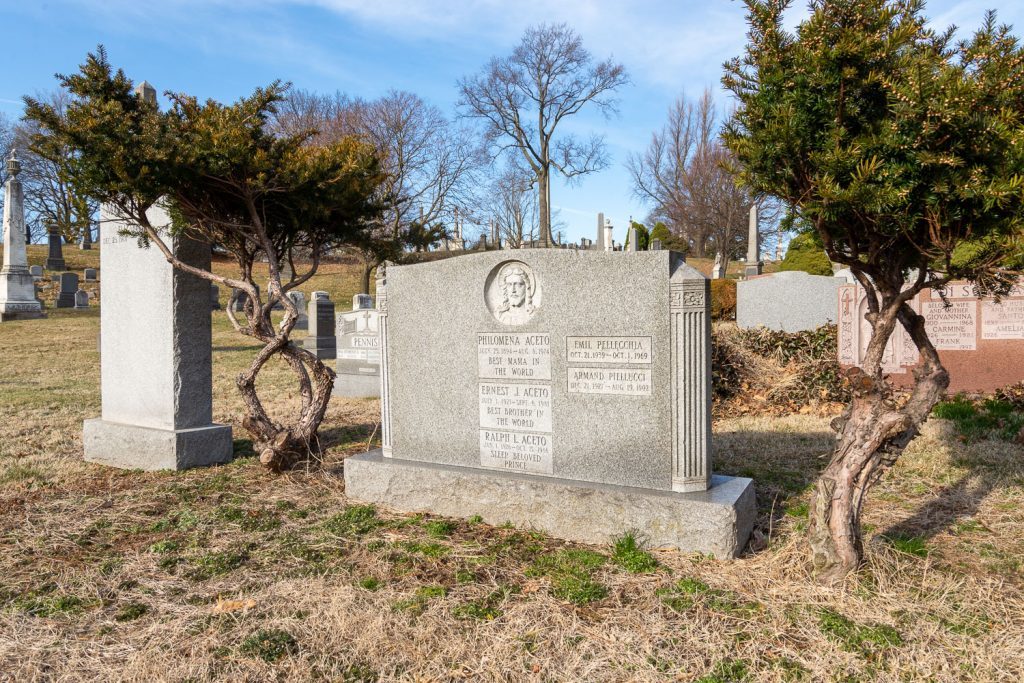
ACETO, RALPH L. (1926-1986). Seaman first class, United States Navy. Born in Brooklyn, the 1930 census reports that the four-year-old Aceto lived with his parents, Bernard and Philomena; his four brothers, Angelo, Frank, Ernest (see), and Bernard; and his three sisters, Henrietta, Louise, and Edith. His father was from Italy and his mother was born in Brooklyn. The family resided at 1250 41st Street, Brooklyn. According to the 1940 census, Aceto still resided with his family on 41st Street and had completed his first year of high school. However, his mother was listed as head of household and her first name was spelled “Filomena” as opposed to “Philomena” as per the 1930 census. His father does not appear on the latter census.
Aceto’s World War II draft registration card, dated January 1, 1944, states that he lived at 1354 44th Street and was unemployed. His mother was designated as the “Person Who Will Always Know Your Address” and the card indicates that she still resided at 1250 41st Street. The accompanying registrar’s report from the same date describes him as white, 5′ 10″ tall, 135 pounds, with brown eyes and black hair, and light complexion. There were no physical characteristics that would aid in identification cited.
As per his grand niece, he served in the United States Navy. Navy muster rolls show that he was transferred from Guam, Marianas Islands, to the receiving station in San Pedro, California. While in Guam, he was aboard the YDG-11, originally named the USS Drake. After the war ended on August 15, 1945, that ship, originally a minesweeper in the Pacific Ocean, was a degausser, a vessel that detected magnetic fields. He received an honorable discharge on July 9, 1946, at San Pedro.
He may be the Ralph Aceto who married Rose Aghamalian on August 4, 1950. However, his niece who lived with him for many years, states that he was never married. She relates that earned a high school equivalency diploma and was at the time of his death, Chief of New York State Court Officers; he served with the courts for more than twenty-five years. Section 106, lot 36368, grave 2.

ACKERLIND, HOLGER CARL (or VICTOR) (1918-1975). Sergeant, United States Army Air Force Signal Corps. Born in Brooklyn, according to the borough’s record of births, to Swedish-born parents Carl Uno Ackerlind and Esther Johanna Amalia Ackerlind, and baptized at Bethlehem Lutheran Church in Brooklyn, Holger was the youngest of three children (older siblings were Eva and Erik) and the first to be born and grow up in the United States. The 1920 census shows him living with his family in Brooklyn on Prospect Park West. In 1924, at age six, he traveled with his mother to visit relatives in Sweden and the United Kingdom. He attended Manual Training High School (now John Jay Educational Campus) in Park Slope. He was a good student there, receiving an award for scholarship, as reported in the Brooklyn Daily Eagle in 1932. Ackerlind attended New York University, made the honor roll in 1938, and was inducted into the national honorary commercial society of Beta Gamma Sigma, also in 1938. He graduated Magna Cum Laude in 1939, with a bachelor’s degree in commercial science. Ackerlind was following in the footsteps of his father, who also graduated from NYU in 1917—at the advanced age of 36.
After graduation, he lived with his parents in Forest Hills, Queens, and worked in the family business, Ackerlind Steel Company, Inc., in Manhattan. He registered for the draft at age 22, probably in 1941, and enlisted on May 23, 1942, as a private. His home address was listed as 108-21 69th Avenue in Forest Hills. Ackerlind was sent to Chanute Field in Rantoul, Illinois, the Army Air Force Technical Training Command. As per his discharge paper, he was sent overseas to England on November 24, 1942, and assigned to the 13th Weather Squadron. According to his widow, he served in the Signal Corps as a weather forecaster in Oujda, French Morocco. (The Signal Corps operated in the North Africa Theater of Operations in Oujda, French Morocco, from mid-1943 to 1945.) In February, 1944, Ackerlind was admitted to the hospital with a diagnosis of cholangitis, a bacterial infection of the bile duct that was not unusual for soldiers in North Africa. Per his admission card, he spent a month in hospital, then returned to his duties.
Ackerlind’s wife shared a recommendation letter dated May 31, 1945 from the 12th Weather Squadron in Pisa, Italy, written by Major Edward W. Hughes, Air Corps, Base Weather Officer. Hughes wrote:
Sergeant Holger C. Ackerlind has been associated with me since November 1943. He is an excellent observer, very reliable and very neat. He has taken charge of this station’s records for the past year and during this time the records have been constantly at the top or very nearly so in the scale of accuracy and correctness as compared to the other stations in this region. This is due to the untiring efforts of Sgt. Ackerlind. He has been recommended for promotion to S/Sgt. many times; the only reason that he has not received the promotion has been the unfortunate state of the T. O. [Theater of Operations] in this region.
Ackerlind sailed for the U.S. on July 16, 1945, arriving on August 4. According to the Department of Veterans Affairs and his paperwork, he was discharged from the Army on October 4, 1945 at Greensboro, North Carolina; his rank at discharge was sergeant.
As per his Army enlistment and separation paper (honorable discharge), he was 5′ 8½” tall, 117 pounds with brown hair and hazel eyes. His uniform was adorned with an AAF Tech Badge with Weather Observation Bar. Ackerlind served in the following campaigns: Tunisian, Sicilian, Naples-Foggia, Rome-Arno, Northern Apennines, Po Valley and the Rhineland. He was awarded EAME (Europe-Africa-Middle East) Theater Ribbon with 7 Bronze Service Stars, the Good Conduct Medal and a Lapel Pin, the latter issued on October 4, 1945. The aforementioned document notes that he received the following vaccinations while in service: smallpox (January 9, 1944); typhoid (December 23, 1944 and January 3, 1945); and tetanus (December 23, 1944). His pay data was also enumerated on his discharge paperwork. Ackerlind received $100 of his $300 mustering out pay. In addition, soldier deposits were made of $79.28 and $1050 and travel pay of $25.45 with a total deposit of $1297.55.
Following his discharge, he returned to civilian life and his career at the Ackerlind Steel Company, which he pursued for more than 30 years. At the time of his death, he was president of the company. Per public records, after a first marriage to Margareta Akerlind, Holger wed Sheila Rogers in Belmont, Massachusetts, in 1970. His death notice in The New York Times states that he died of cancer at his home in Bayside, New York; his widow, Sheila Rogers Ackerlind, along with a son, Robert, and daughter, Anita, survived him. Section 25, lot 37544, grave 1.
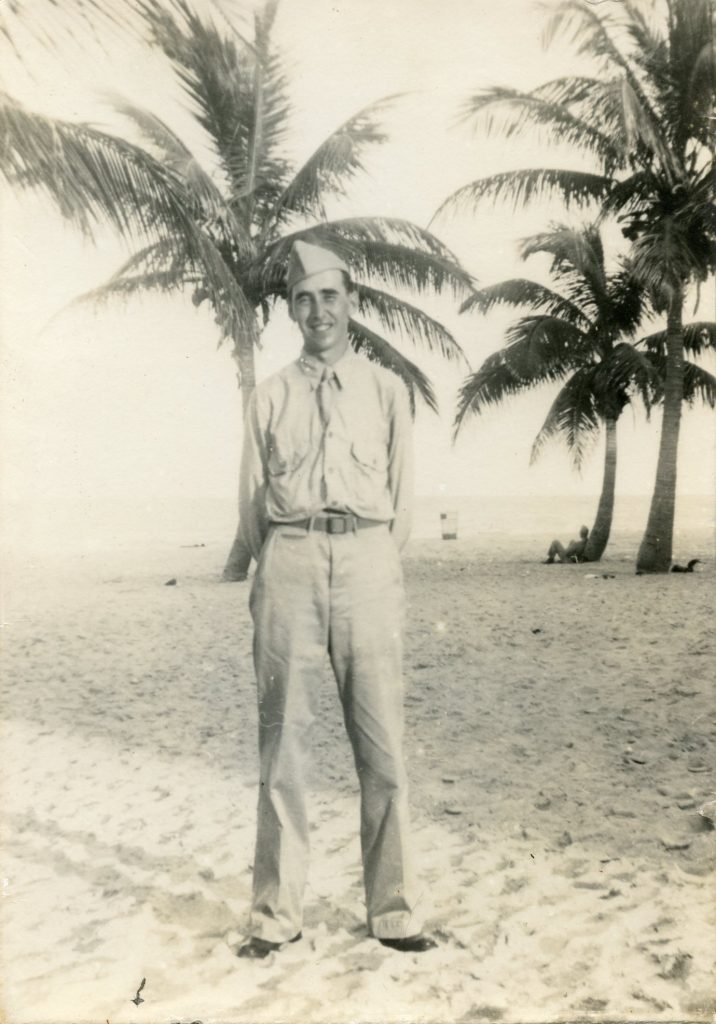

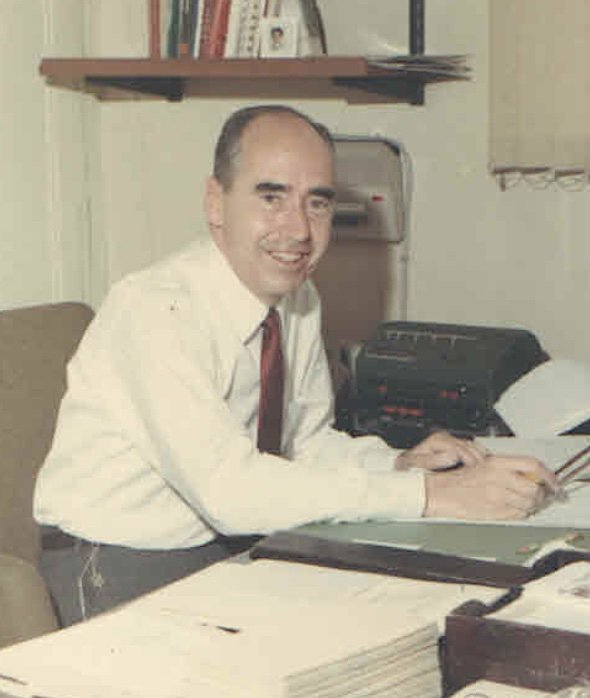
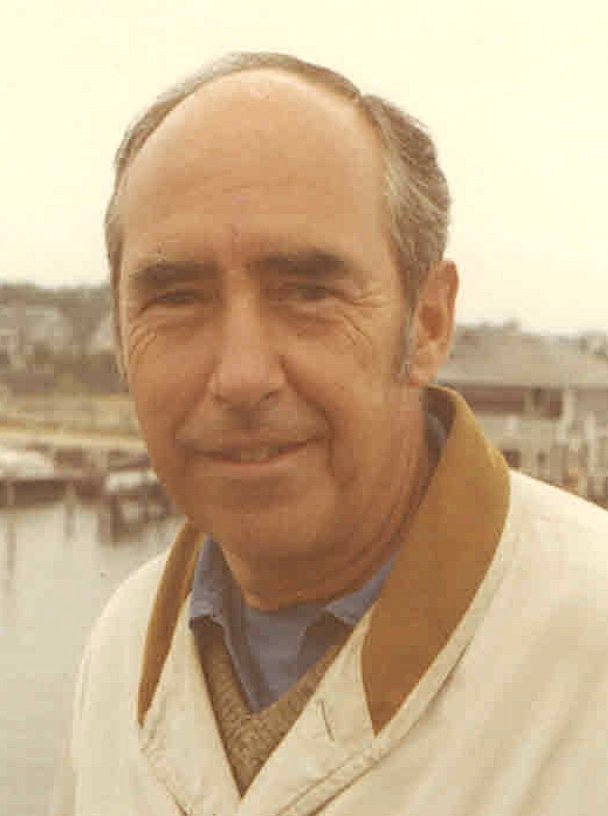
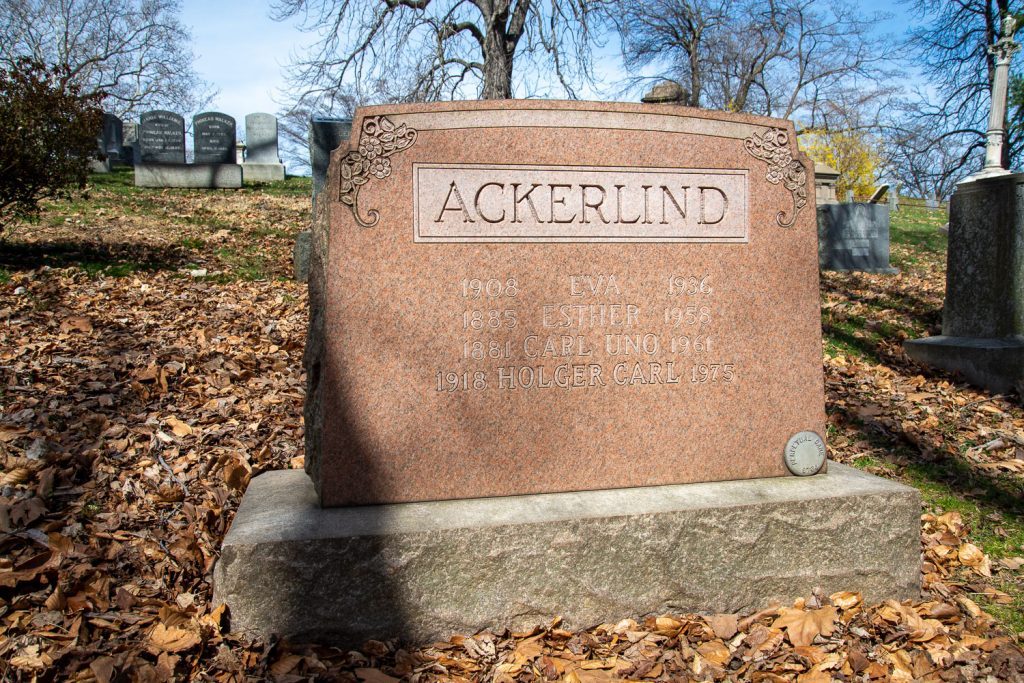
ADASKO, HERBERT ISAAC (1912-1991). Radio repairman, United States Navy. Born in New York City, he was the eldest child of Morris Adasko and Lena Berman Adasko, both of whom immigrated to the United States from Russia. As per the 1915 New York State census, Morris had been in the United States for twelve years, Lena for eight, and the family was living at 602 Eldridge Street, on Manhattan’s Lower East Side. By 1925, according to the New York State census of that year, the Adaskos had moved to 10 Eyck Street in Williamsburg, Brooklyn. Morris Adasko’s occupation is given as tailor. Adasko had two younger siblings, Miriam and Joseph.
Adasko graduated from New Utrecht High School in 1929 with an academic diploma. As per the 1940 census, the Adaskos were living at 234 85th Street in Brooklyn; at that time. Herbert had completed four years of college and worked as a clerk. As per his son, Hardy Adasko, his father graduated from New York University.
On Adasko’s draft registration card, likely completed in 1940, the family address on 85th Street is crossed out, and written in red ink is another address, 8320 Bay Parkway. On the line that asks “Name of Person Who Will Always Know Your Address,” Adasko lists his mother, Lena. For eye color, Adasko checked brown; for hair color, black. He was 5′ 11½” tall. Asked for a physical characteristic that will aid in identifying him, Adasko wrote mustache. His employer is listed as the City of New York Department of Welfare. Adasko worked for the city for thirty-six years, his son reports.
In 1943, the Brooklyn Daily Eagle reported that a Herbert Adasko was the president of Engine Company 253 in Brooklyn and served as an auxiliary fireman. That firehouse was located near where the subject of this biography had lived, and is likely him.
Hardy Adasko, the son, states that his father served in the Navy as a radio repairman, stationed in Guam. Adasko likely trained at the Naval Station Great Lakes in Illinois, which is the largest Navy training installation and the site of the Navy’s only boot camp. On September 21, 1944, in Cook County, Illinois, he married Mary E. Hardy. Mary Hardy was born in Mississippi and grew up in Texas, according to the 1940 census of Childress, Texas.
After the war, Adasko continued working for New York City. He and Mary made their home in the Midwood section of Brooklyn where they raised two children, Herbert Hardy Adasko and Laura Beth Adasko Lenzer. Section 71, lot 44605, grave 39.
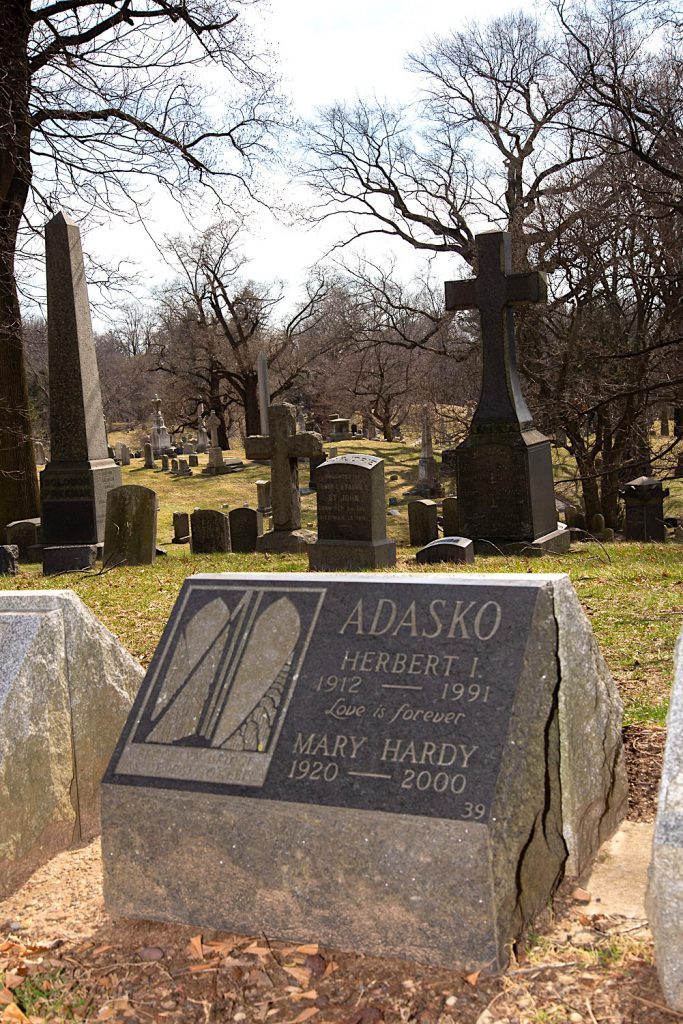
ADDEO, MICHAEL JAMES (1917-2006). Fire controlman third class, United States Navy. The 1925 New York State census reports that the eight-year-old Michael lived in Brooklyn with his parents, Vincent and Catherine, and his three younger brothers. That census states that Vincent and Catherine were born in Italy while their sons were born in New York City. As per the 1940 census, Michael resided on Irving Avenue with his parents and siblings, was single, had completed his second year of college, worked as a handyman for a private business, and had earned $1,040 in 1939. He attended New York University where he ultimately earned a master’s degree and completed part of his doctorate.
Addeo’s World War II draft registration card, likely filled out in 1940, indicates that he was born in Manhattan, 23 years of age, resided at 58 Irving Avenue in Brooklyn, and was employed at Sperry Gyroscope Company, Inc., located at 40 Flatbush Avenue in Brooklyn. The United States Department of Veterans Affairs BIRLS (Beneficiary Identification and Records Locator Subsystem) Death File lists his Navy enrollment date as February 24, 1944. As per the May 17, 1944 USS Astoria muster roll, he was a seaman second class. The USS Astoria, the third ship that bore that name and which was named in honor of the heavy cruiser USS Astoria which was sunk on August 9, 1942, during the Battle of Savo Island, was a light cruiser that fought in the Pacific from December 1944 to the end of the war, fighting off the Philippines, Okinawa and supporting attacks on the Japanese Home Islands. The Astoria earned five battle stars during World War II. By September 1, 1945, the USS Astoria muster roll reports that Addeo attained the rank of fire controlman third class (FC3c); fire controlmen operate, repair and trouble-shoot weapon systems on ships. He was discharged from the Navy on November 27, 1945.
He married Marie Nappi on January 15, 1950. As per his daughter, Kathryn Addeo Bistreich, her father had two children, taught at Bay Ridge High School, was an assembler for American Bausch Armor Corporation, and was also employed as a counselor for New York State. Kathryn comments that “Michael J. Addeo was very proud to serve in the crow’s nest on the ship Astoria in the Pacific (1944-1945) where he searched for enemy ships, etc.” Hillside Mausoleum, Phase III, Crypt, Section 3129D.
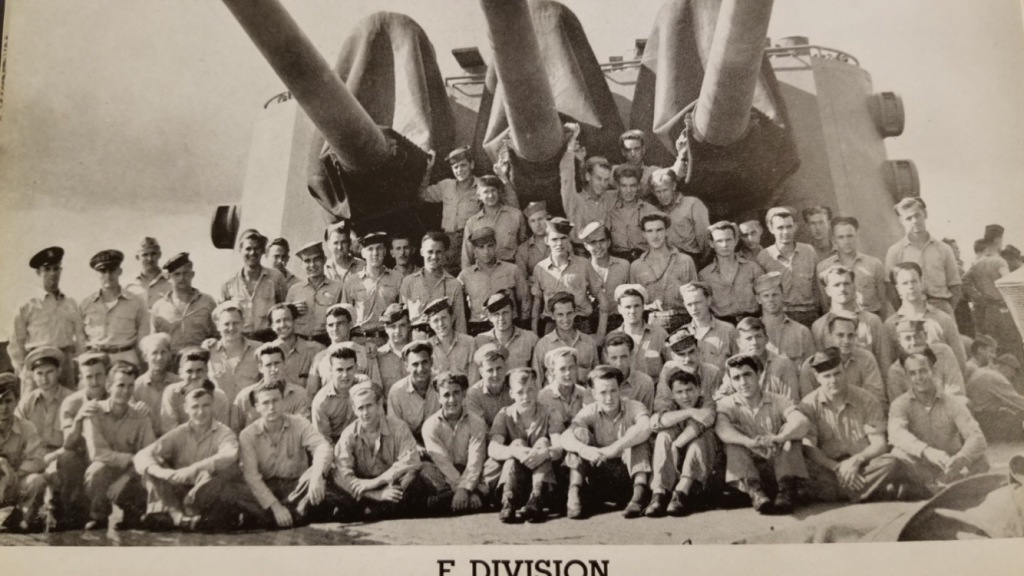
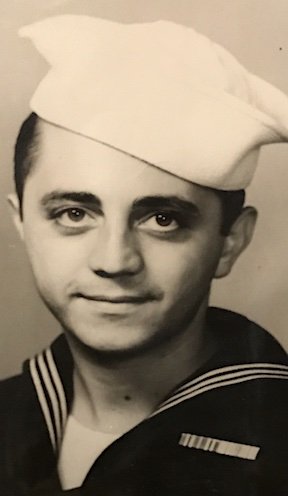
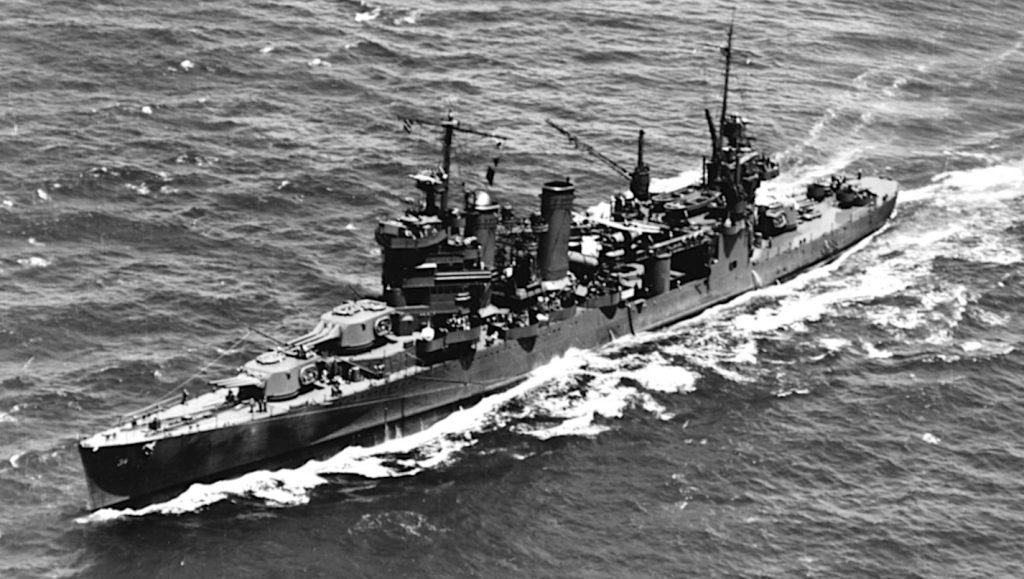

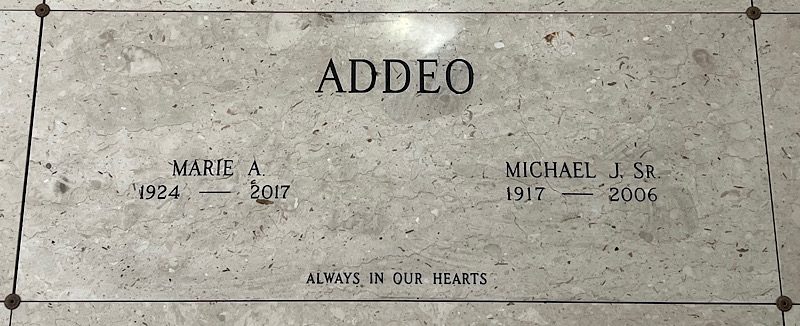
ADDIEGO, VITO (1914-1989). Sergeant, United States Army. According to an Ancestry family tree website, Vito was born in 1914 in Brooklyn. The 1930 federal census states that his father, Joseph, and mother, Frances, were born in Italy and his father was a laborer in a factory. Vito had an older sister, Teresa, and possibly a twin sister, Rose, as both were sixteen years old at the time of the census. A June 25, 1930 Brooklyn newspaper announced the graduation of 261 students from Dewey Junior High School, located on 4th Avenue and 40th Street. The ceremony took place at Bay Ridge High School on 4th Avenue and 67th Street. Addiegio was listed among those who graduated. The 1940 federal census records that the twenty-six-year-old Vito was residing with his parents on 4th Avenue in Brooklyn. He was single, had completed 8th grade, and was an unpaid family worker repairing shoes in a store. Neither of his sisters were entered in the census.
According to his World War II draft card, Vito was 26 years old and resided at 424 39th Street. His was employed by Nick Cavaliere at 508 40th Street. Little is known of Addiego’s military service. His son, Joseph, shares that he was a sergeant in the United States Army and served in Italy and Africa.
After the war, Vito married Catherine Marsico on September 23, 1945 and was a shoemaker for over 45 years. His last residence was Jamaica, Queens. Section E, lot 40053, grave 3.
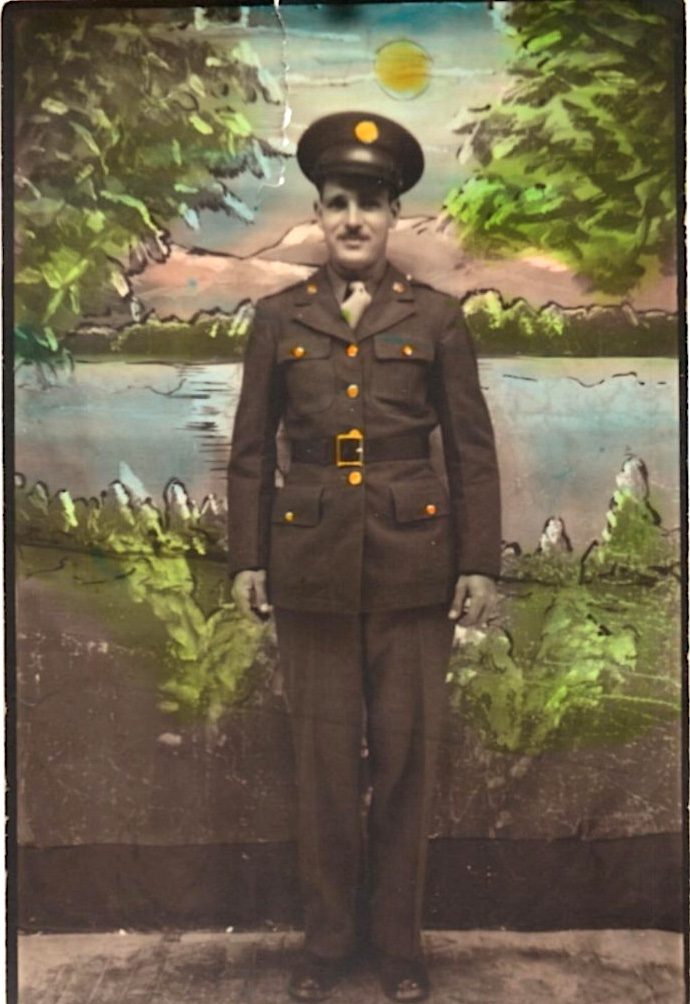
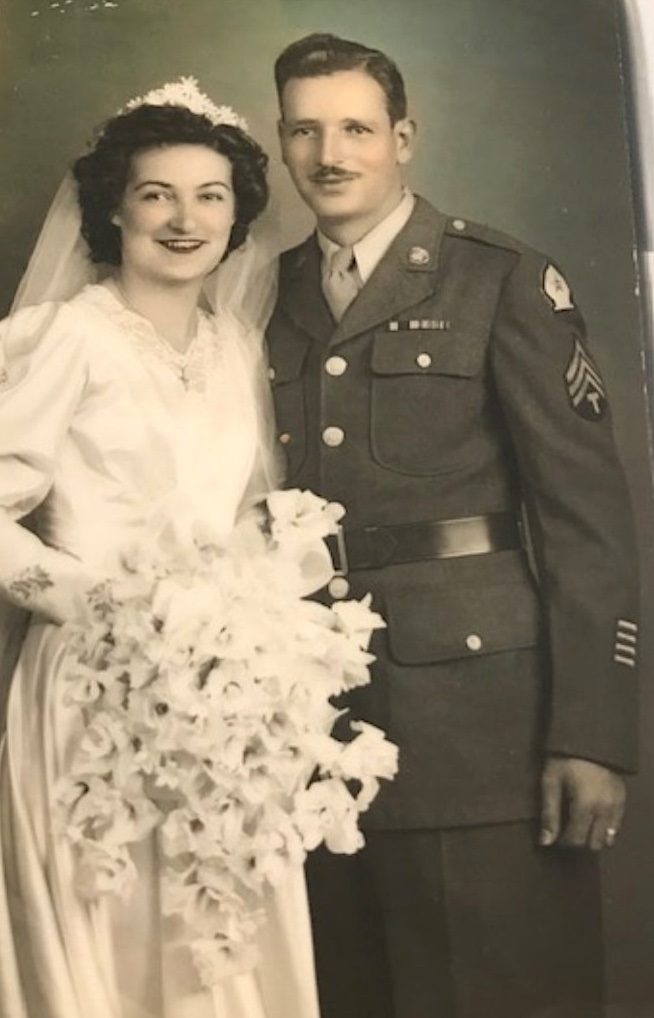
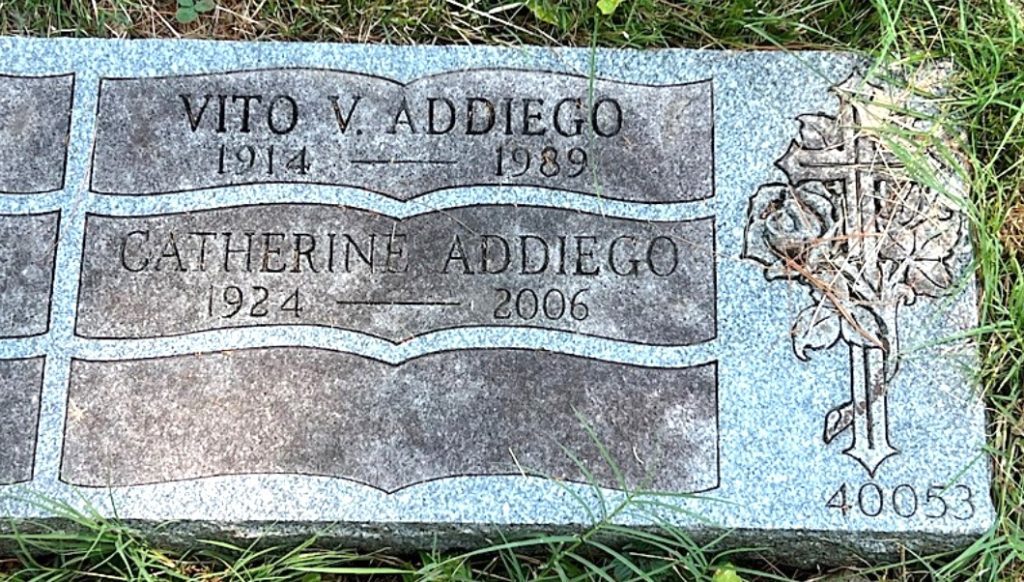
ADINOLFI, RALPH A. (1920-1970). Machinist mate petty officer 3rd class, Ship Repair Training Unit, United States Navy. According to the New York birth index, Adinolfi was born in Manhattan. The 1930 census notes that he lived with his parents, Michael and Mary, and four siblings at 144 Gattling Place in Brooklyn. His father was a machinist at a carton manufacturing company. Adinolfi was a member of the St. Anselm’s Boys Club baseball team. The September 26, 1935 edition of the Brooklyn Times Union released a picture of the team and highlighted its forty-one victories and only nine defeats. His daughter reports that he graduated from Fort Hamilton High School in Brooklyn. As per the 1940 census, the family lived at 100 Gattling Place and his father was a tool maker in a machine shop. He and his older brother worked as machinists while his younger siblings attended school.
Adinolfi’s World War II registration card states that he was twenty-one years old, a tool maker, and his mother was designated as the contact person. He worked for ARMA Corporation at 354 36th Street in Brooklyn. His registrar’s report, dated July 1, 1941, describes him as 5′ 10″ tall, 160 pounds with brown eyes and hair, and light complexion. As per his daughter, he served in the Ship Repair Training Unit at the United States Naval Base at Mare Island, California. According to the National Park Service, “During World War II, the shipyard turned out scores of ships and submarines, assembling new destroyer escorts with prefabricated sections brought in from as far away as Colorado. Warships damaged in battle were also repaired and refitted in the base’s drydocks. By the end of the war, Mare Island had produced 17 submarines, four submarine tenders, 31 destroyer escorts, 33 small craft and more than 300 landing craft.” Mare Island was one of the largest naval facilities in the world, employing more than 39,000 civilians and 40,000 Navy contractors. It is reported that the base repaired 1,227 ships and returned them to battle. According to his daughter, he was honorably discharged in June of 1946 as a machinist mate petty officer 3rd class.
After the war, he and Helen Cyran applied for a marriage license in Brooklyn, married on May 24, 1952, and the couple had two children. He worked for Empire Metal Work for fifteen years. Section 18, lot 41213, grave 1.

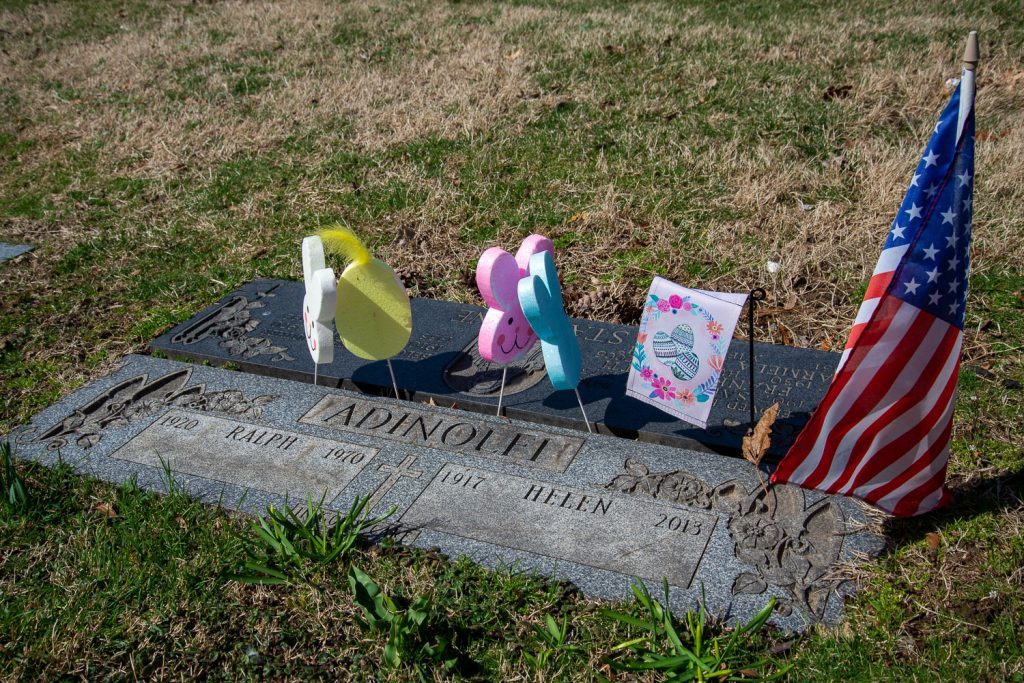

AFFLITTO, JOSEPH (1923-2007). Rank unknown, unit unknown, United States Army. According to the New York birth index, Afflitto was born in Brooklyn. The 1930 census notes that he lived with his parents, John and Caroline, and two older siblings, Palmira and John. The family resided at 98 Village Road in Brooklyn. His father was born in Italy, immigrated to the United States in 1905, became a citizen, and was a tailor. His mother was born in New York. As per the 1940 federal census, the family lived at 1959 58th Street and his father worked in the ladies’ garment industry. His parents now had four children, all living in the 58th Street residence. His father had served as a soldier in World War I and his World War I draft card indicates that he was born in Gatrinoli, Reggio, Calabria, Italy, was inducted into service on July 25, 1918, and was honorably discharged.
Afflitto’s World War II registration card notes that he lived at 8316 16th Avenue and his mother was designated as the contact person. He worked at the Firestone Rubber Company on West 63rd Street and West End Avenue in Manhattan. His registrar’s report, dated June 30, 1942, describes him as 5’6”, 140 pounds with blue eyes, brown hair, and light complexion. There is no information regarding his rank, unit, or where he was stationed during the war. The Department of Veterans Affairs BIRLS (Beneficiary Identification and Records Locator Subsystem) Death File records that he enlisted in the Army on January 2, 1943, and was discharged on December 8, 1945.
After the war, he and Jean D. Tolino applied for a marriage license on October 11, 1947, in Brooklyn. On April 24, 1977, the New York Times announced the marriage of his daughter and reported that Afflitto was an associate producer in women’s fashions. The United States Public Records notes that he was living at 998 East 4th Street in 1996, and relocated to Staten Island in 2006. As per the Social Security Index, he passed away on Staten Island. Section 105, lot 39605.
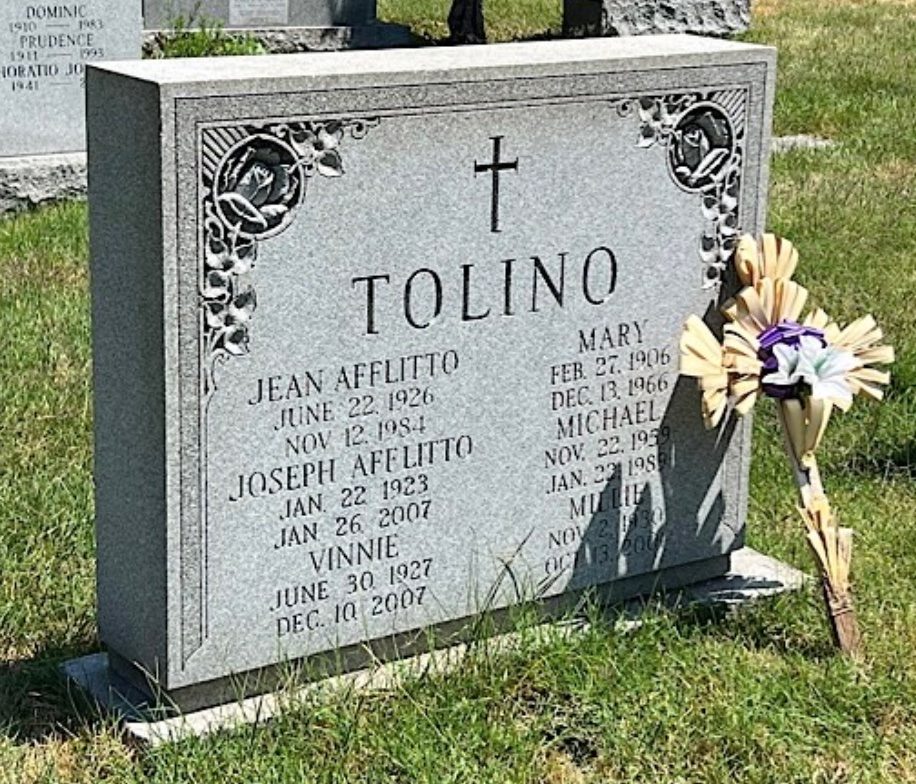
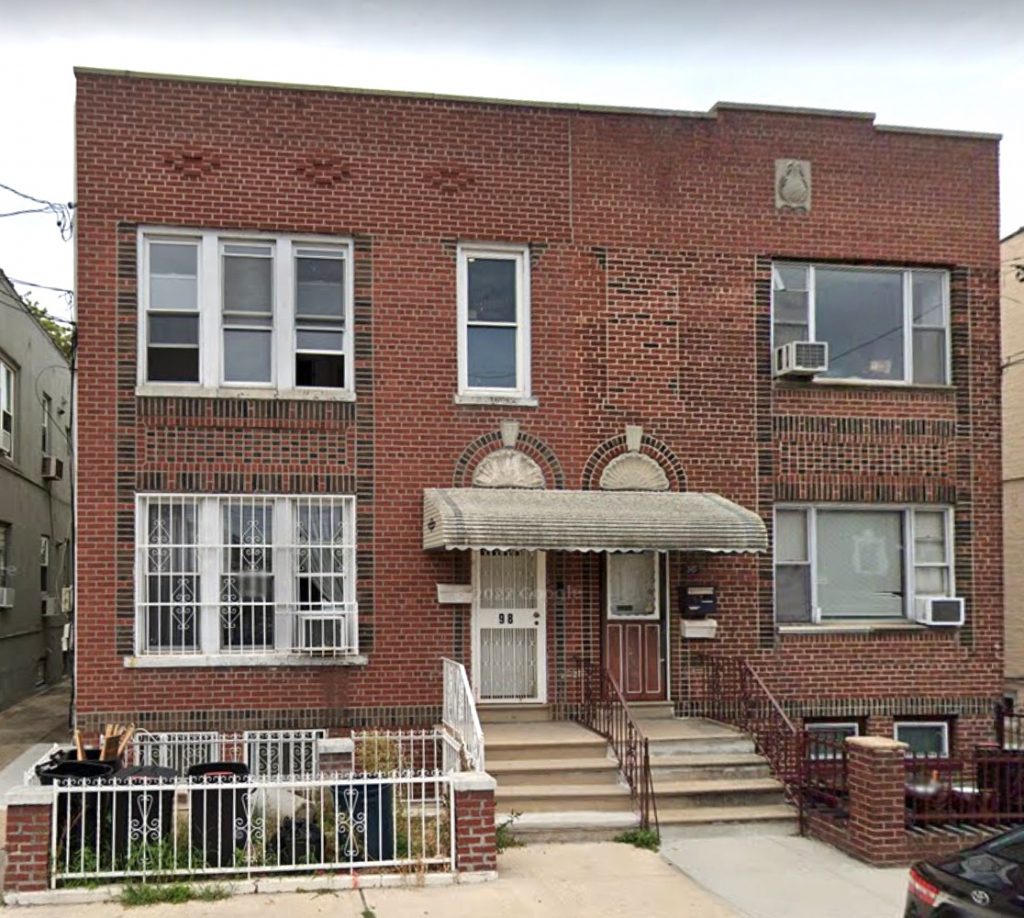
AGOGLIA, ROCCO MICHAEL (1927-1971). United States Navy. Agoglia was born in Brooklyn. As per the 1930 federal census, Rocco was the son of Joseph and Mae. Rocco had a younger sister, Ida, and the family resided on Fourth Avenue in Brooklyn. The 1940 federal census records that the Agoglia family lived on 15th Street in Brooklyn and both parents were born in New York. The family grew to three children with the birth of a second son, Joseph. Rocco’s father was a WPA laborer. As per the History website, “The Works Progress Administration (WPA) was an ambitious employment and infrastructure program created by President Franklin Roosevelt in 1935, during the bleakest days of the Great Depression. Over its eight years of existence, the WPA put roughly 8.5 million Americans to work building schools, hospitals, roads and other public works.”
Rocco’s draft registration card notes that he was eighteen years old and resided at 430 49th Street in Brooklyn. He was unemployed and his mother was named next of kin. The registrar’s report, dated July 7, 1946, describes him as 6′ tall and 155 pounds with blue eyes, brown hair, and light complexion. His niece, JoAnn Tormey, shares that he served in the United States Navy during World War II and was stationed in the Pacific.
As per the 1950 federal census, the twenty-two-year-old Rocco lived with his parents and siblings on 49th Street. Ida appears to no longer be living with the family, but Rocco’s two brothers are documented as attending school. Agoglia was a shipping clerk at a food manufacturing company. The manifest of the American vessel, SS Mobillan, documents that Rocco was on board the ship which sailed from Rotterdam, Netherlands, and arrived in Manhattan on April 15, 1951. He was listed as a crew member with the designation of O.S., possibly signifying ordinary seaman. According to his niece, Agoglia never married. His obituary appeared in the Brooklyn New York Home Reporter and the Sunset News. He is interred with family members in a mausoleum at Green-Wood Cemetery. Section 41, lot 36080.
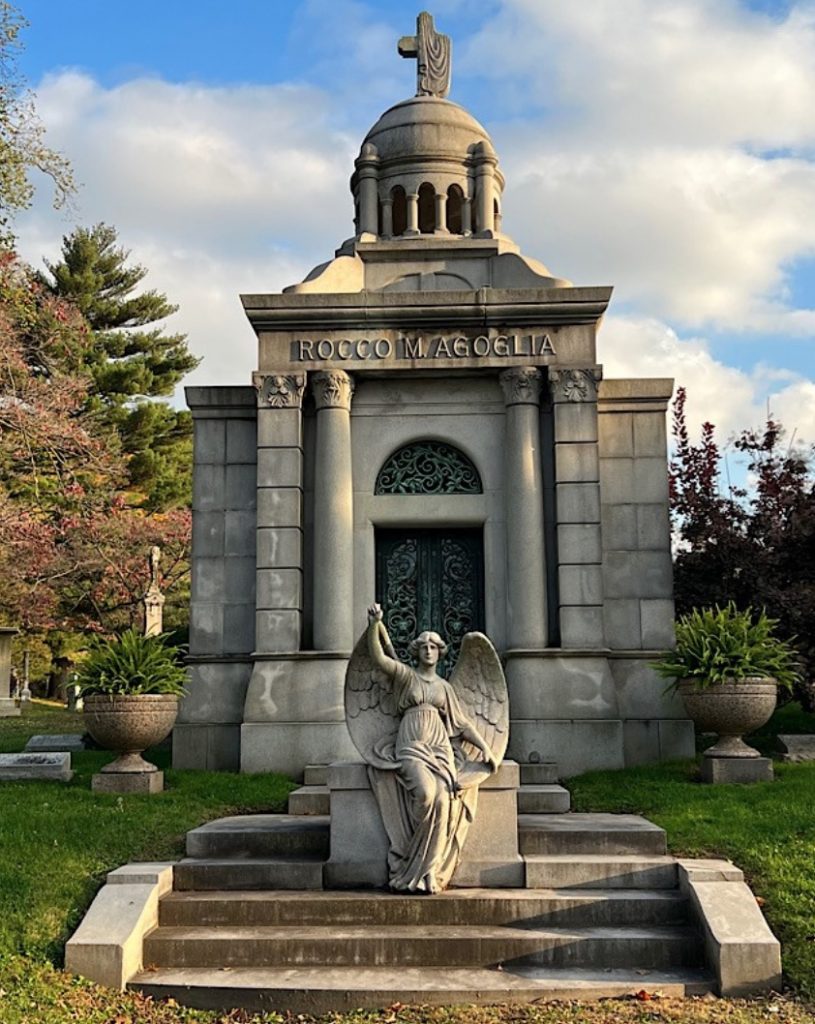
AKBERG, EMILY BISHOP (1855-1951). Red Cross worker. Emily Bishop was born in Brummage, England, in 1855, and was brought to the United States at age three by her parents: William, a painter and printer, and Elizabeth, a homemaker.The family settled in Brooklyn and had increased by two sons—John (later Joseph) and Robert—by the time of the 1870 federal census.
In 1879, Emily married Charles Akberg, who had immigrated from Sweden six years earlier. They lived with the Bishop family at 307 2nd Street, Brooklyn, according to the 1880 federal census. By the time of the 1892 New York State census, the Akbergs were still living there, with five children (12-year old Emily, William, Wilhemina (later Jeanette), and five-year-old twins Charles E. and Edna), Emily’s father, and one brother. Charles Akberg worked as an interpreter for the courts. In 1904, the City Directory lists his home address as 587 6th Avenue.
The Akbergs were involved in their community through several organizations, most prominently All Saints Episcopal Church in Park Slope. Charles was a member of the Scandinavian Democratic Club and the Masons; Emily’s name was printed in newspaper society columns when she attended fundraisers and cultural events on behalf of children’s aid. Her work with the American Red Cross brought Emily the most recognition for her service.
Once the United States entered the World War in 1918, the American Red Cross organized critical aid on the home front through blood drives, training, and other forms of support, especially during the first wave of the influenza pandemic. Although there are no details, Emily Akberg was cited for her work with the Red Cross during the war. She was 63 years old when she served.
At the same time, Emily’s son, Charles E., was drafted in 1918 and sent to Europe. He was honorably discharged at age 30, in 1919. His discharge papers report that, while not wounded in action, he was considered one hundred percent disabled.
In the 1930s, Emily Akberg saw both her eldest son, William, and husband, Charles, pass away: William, at age 53, in 1933; Charles, at age 84, in 1937. Early in the 1940s, another war was looming. Again, her son Charles E. was registered according to the 1941 Selective Service Act. Being 54 years old in 1942 and disabled, (according to his discharge papers from 1919), he was unlikely to be called up this time.
But once again Emily Akberg heeded the call on the home front, volunteering with the American Red Cross. Again, the details are lost, but the American Red Cross involvement in World War II included blood donor service, “aid to the sick and wounded, … relief … and communication,” and much more. By the end of the war, Emily was 90 years old.
Emily Bishop Akberg died at age 96. Her obituary observes that she was the oldest communicant of All Saints Episcopal Church, and had been a member for 55 years. Section 131, lot 35153.
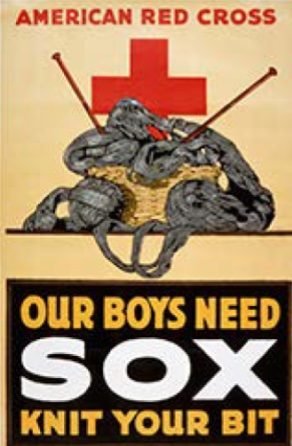
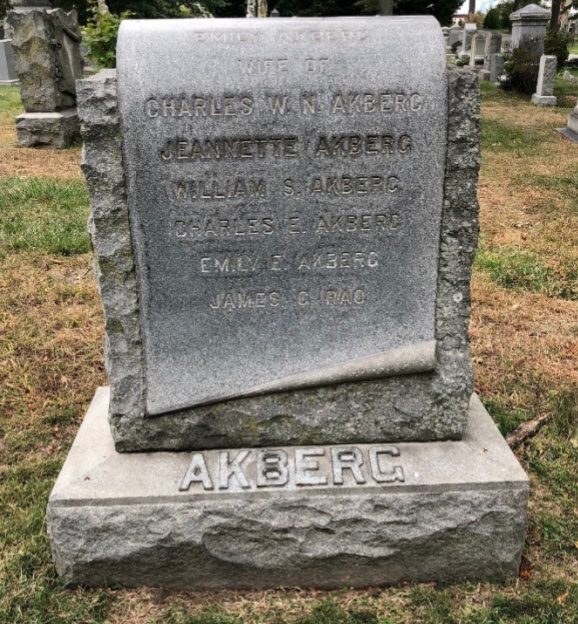
ALBERGO, DOMINICK (or DOMENICO) (1917-1998). Private, United States Army. Domenico Albergo was born in the United States in 1917 to Italian immigrants Nicolo and Teresa Albergo, the third of six children. They lived at 245 South 3rd Street in Brooklyn at the time of the 1930 census, when Dominick was 13 years old. In 1935, when Dominick was 18 years old, he is listed as a returning passenger on the S.S. Rex from Naples, Italy. Also listed is Italian citizen, Lavinia Tanciotta, who was about to become Dominick’s wife.
By the time of the 1940 census, the Albergo family was living at 146 8th Street in Brooklyn. Twenty-three-year-old Dominick was head of a household that included his wife; two young sons; his younger brother, Anthony; and his sister Catherine. Albergo’s occupation was listed as coal yard laborer. His draft card of the same year described him as 5′ 8″ tall, 160 pounds, with dark complexion, brown hair, and brown eyes. He may have moved down the street, to 225 8th Street.
Albergo was drafted into the Army sometime in 1941. There are no details from his induction, but he was admitted to a military hospital in Fort Meade, Maryland, in June, 1942, and diagnosed with lymphosarcoma, a form of cancer. According to the hospital admission record, he underwent gastroenterostomy, a surgical procedure, and was discharged the same month. The report also noted that he was injured in the line of duty. There is no information on how much longer he served, or when he was discharged from the Army.
He returned to Brooklyn and his family, which grew to include four children; Nick, Sam, Guy, and Catherine. His wife, Lavinia, joined him in Green-Wood in 2007, age 94. Hillside Mausoleum, section 3212E, crypt.
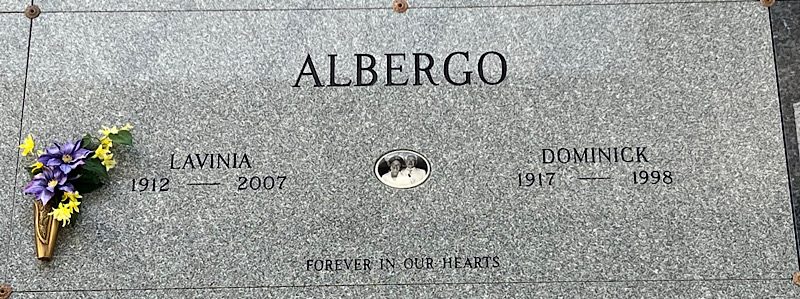
ALOI, LOUIS AMEDIO (or AMEDO) (1921-1999). Corporal, United States Army Air Force. A Brooklyn native, the 1930 census notes that he lived there with his parents and four brothers; his father, who was born in Italy, was a ship caulker. As per the 1940 census, he lived at 285 Carroll Street with his parents, five brothers and one sister; at that time, he was in his fourth year of high school. Aloi’s World War II draft registration, dated February 15, 1942, states that he still lived at the same Carroll Street address and worked for Ira Bushey Incorporated at 764 Court Street in Brooklyn. His mother, Letizia Aloi, with whom he lived, was listed as his emergency contact. His registrar’s report of that same day indicates that he was white, 5′ 8″ tall, 162 pounds, with brown eyes, brown hair, light complexion and slight scar on his forehead.
Aloi’s World War II Army enlistment record shows that he enlisted as a private in Kings County on April 6, 1943, was single, had completed three years of high school and worked as a machinist’s apprentice. As per his discharge papers, he entered service on April 13 and was a general clerk. His discharge papers indicate that he attended trade school in New York City for twelve weeks after his enlistment. On February 11, 1944, he departed for the Western Pacific Theater of Operation, arriving on February 21, 1944. He departed for the United States on December 12, 1945, and arrived on December 27. Among the medals that Aloi received were the Asiatic Pacific Service Medal, the Good Conduct Medal, and the World War II Victory Medal. He was not wounded in action. During his service, he was immunized for smallpox, typhoid and tetanus. After serving two years, five months and five days for longevity pay purposes, he received $100 out of $300 mustering out pay, a soldier’s deposit of $85, travel pay of $4.05, for a total amount of $252.43. His official discharge papers were signed at the Headquarters Air Depot at Fort Dix, New Jersey, on January 10, 1946. The papers state that he was issued a lapel pin upon his discharge.
In 1952, Aloi married Josephine Castagna in Brooklyn. After the war, in civilian life, he worked for Consolidated Edison for 30 years until his retirement in 1984. His wife, who is interred with him, died in 1989, and six years later, he moved to Wilmington, Delaware, where he died after a long illness. A funeral mass was celebrated in his memory at St. Ephrem’s Church in Brooklyn. He was survived by his son, daughter and six grandchildren. His obituary in The News Journal [Wilmington, Delaware] confirms his World War II service and notes that a special mass for Aloi would be held in Hockessin, Delaware. A family online biography also confirms that he served in the United States Army Air Force during World War II and that he served in the Pacific Theater. Section 6, lot 39340, grave 466.
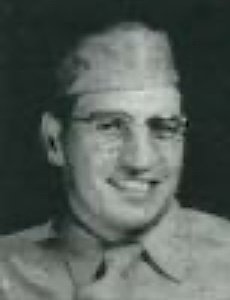


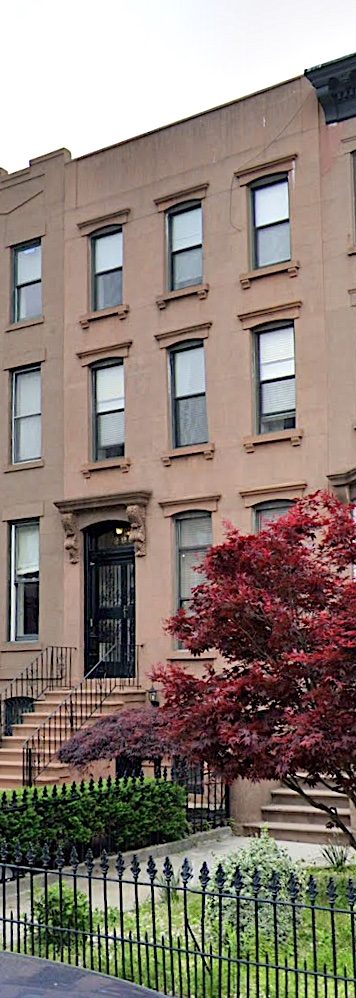
AMATO, JR., FRANK WILLIAM (1925-2009). Yeoman first class, United States Navy. Amato was born in Brooklyn. As per his draft registration card, likely completed in 1945, he lived at 1346 40th Street in Brooklyn, was 20 years old, had no home telephone, and was not employed. He listed his mother, Sarah Amato, with whom he lived, as his next of kin.
According to his Navy muster rolls, Amato enlisted on January 22, 1945, and was listed as serving aboard the USS Nashville as a seaman first class in January and July 1945. At the time Amato boarded the vessel, she was at the Puget Sound Naval Shipyard, undergoing major repairs after being struck by a kamikaze aircraft on December 13, 1944, off Negros Island, killing 133 sailors and wounding 190. On March 12, 1945, the Nashville left Washington State for training exercises and departed San Diego, California, on April 15, arriving at Subic Bay in the Philippines on May 16. It spent the closing months of the war providing fire support for landings at Brunei Bay, Borneo, and protecting aircraft carriers in the Makassar Straits, in the Dutch East Indies. Her last wartime action was a sortie from Subic Bay to intercept a Japanese convoy off Indochina, an action that was ultimately canceled.
In October 1945, after the war had ended, the Nashville was on Yangtze River Patrol, off Shanghai, China. As of November 1, 1945, Amato was listed as a yeoman first class and on temporary duty with the Navy Group China. The Navy Group China was the United States Navy’s intelligence unit in China during World War II. That unit, working alongside Chinese guerilla forces in China-Burma-India Theater of Operations, trained the guerillas in techniques of demolition, sabotage and radio handling; ultimately, over 200 enemy bridges, 141 ships/river craft and 84 locomotives were destroyed. It also killed 71,000 Japanese troops.
Amato’s muster rolls for January and February 1946 show that he was still a seaman first class on the USS Nashville. On March 1, 1946, the Nashville arrived at the Receiving Station Terminal Island in San Francisco, California. He was honorably discharged on March 14, 1946. His registrar’s report, dated March 15, 1946, and filed at 2115 Church Avenue in Brooklyn, indicates that he was 5′ 5″ tall, 128 pounds, with green eyes, black hair and a light complexion.
As per his obituary in the Asbury Park Press, Amato was a self-employed ice cream salesman for 36 years in the Borough Park section of Brooklyn, retiring in 1985. Amato moved to Brick, New Jersey, in 1989, and was a communicant of the Epiphany Roman Catholic Church there. One of his sons died in 1995 and his wife, Jennie Chirrillo Amato, died in 2001. He died at his daughter’s home in Eatontown, New Jersey. He was survived by a son, a daughter, four grandchildren, a sister and a niece. His funeral liturgy took place at the above-mentioned Epiphany Church. Section 3222E, Hillside Mausoleum Phase III Crypt.
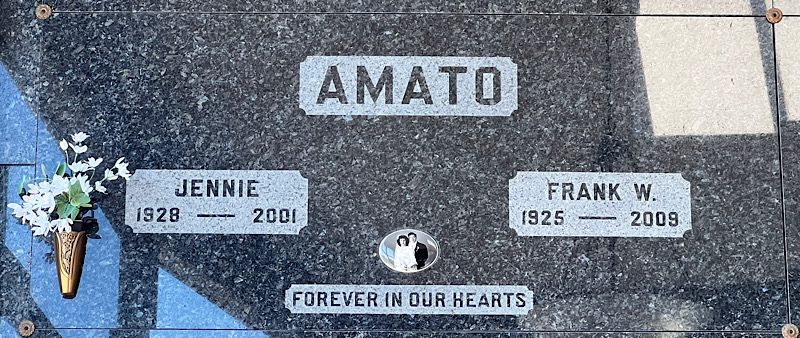
AMORE, ARMATHA SUSAN BRYAN (1924-1997). Navy Corps WAVE. Born in Broaddus, Texas, Bryan attended elementary and high school there; she was known as Susan. As per her daughter, Carol Amore Laga, she met Sebastian Amore (see) in Beaumont, Texas, where she was stationed at the Veterans Hospital. Sebastian was on leave from Camp Polk, Louisiana, where he was stationed in World War II before deployment abroad. Bryan served as a Corps WAVE (Women Accepted for Volunteer Emergency Service) in the Navy during the war, remaining stateside. The WAVES, the women’s branch of the United States Naval Reserve during World War II, was established on July 21, 1942, by Congress and signed into law nine days later. It freed officers and men for sea duty and replaced them with women at 900 shore establishments. An enlisted woman had to have a high school or business degree (officers needed a minimum of two years of college plus two years of professional experience); enlisted women performed duties ranging from clerical work to rigging parachutes. Reportedly, many women experienced harassment from their male counterparts. At its peak, nearly 100,000 women served; many of the officers were recruited for their knowledge of mathematics, science and engineering, and performed complex operations such as calculating bomb trajectories.
Her daughter notes that she married Sebastian Amore (see) on February 8, 1947, in Brooklyn, during a blizzard. During their 41-year marriage, the couple had four children, lived at 196 Lawrence Avenue in Brooklyn, and moved in 1970 to 57 Cheever Place, near where Sebastian grew up. She worked for Citi Bank on Wall Street. Section 176, lot 44603, grave 307.

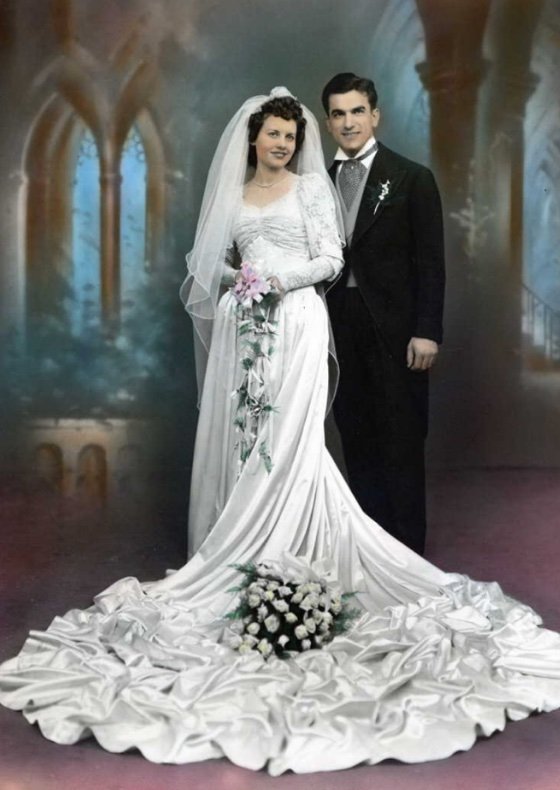

AMORE, SEBASTIAN (or SEBASTIANO) VINCENT (1918-1988). Corporal, 7th Armored Division, United States Army. Born in Brooklyn, his birth certificate uses the name “Sebastiano.” His daughter, Carol Amore Laga, reports that he attended Sacred Hearts of Jesus and Mary Catholic School there where he attained an eighth-grade education; the church subsequently merged in 1941 and was known as Sacred Hearts of Jesus and Mary and St. Stephens. His father, Antonio, completed a World War I draft registration card but it is unclear whether he served. The 1925 New York State census reports that Sebastian lived with his parents, both of whom were born in Italy, and eight siblings at 475½ Hicks Street; his father was a dock laborer and his mother was a dressmaker. The 1930 census reports that Sebastian’s father immigrated to the United States in 1900 and that his mother immigrated in 1902; neither were naturalized citizens or spoke English. At the time of the 1940 census, the family lived at 16 Cheever Place in Brooklyn; Sebastian was a laborer at a knitting mill.
Sebastian Amore’s World War II draft registration card notes that he lived at 16 Cheever Place and worked at a knitting mill at 505 Court Street in Brooklyn. His registrar’s report shows that he was white, 5′ 7″ tall, with brown eyes, black hair and a light complexion. As per records from the Department of Veterans Affairs, he enlisted on March 12, 1942, for the duration of the war plus six months subject to the discretion of the President or otherwise according to law. His enlistment information notes that he enlisted as a private at Fort Dix, New Jersey, was single, had completed two years of high school, and worked at an unskilled machine shop.
His daughter notes that he served in the Aleutian Islands and in India and confirmed that information with Sebastian’s older brother, Anthony, who said that his brother never spoke about being in Europe and served in the Pacific Theater. However, as per the patch on his uniform photo, he served in the 7th Armored Division, also known as the “Lucky 7th.” Its insignia, pictured below, depicts a tank track signifying mobility; a cannon for fire power and a red bolt of lightning for shock action.
That unit, activated on March 1, 1842, trained at Camp Polk, Louisiana, until March 18, 1943. Built at a cost of $22 million, thousands of soldiers in all branches were trained there, including the new armored divisions who used the piney woods of Louisiana parishes for training. Texas’s Beaumont Journal of February 4, 1943, reported that Amore was a participant in a Golden Gloves Boxing Tournament. The article noted that Amore drew a bye in the first round of the competition. (Amore is in the front row, second from left in the picture below and is identified as a corporal.) Anecdotally, the first group of Hollywood celebrities arrived at Camp Polk in the fall of 1941 shooting scenes of soldiers in training for the movie, The Bugle Sounds.
After Camp Polk, the 7th then headed for the Desert Training center at Camp Coxcomb, California, from March 18 through August 12, 1943. After time in Fort Benning, Georgia, from August 12, 1943 to April 25, 1944, time was spent at Camp Myles Standish, Massachusetts, from April 25-May 2, 1944, then at Camp Shanks, New York, from May 2 through June 6, 1944. On June 6, the 7th Division boarded the Queen Mary in New York Harbor and set sail for Europe the next day. After debarking at Grenoch, Scotland, on June 13-15, 1944, the unit moved by train to Tidorth Barracks in Wilshire, England, where they remained until August 7. The next day, they sailed to France from Southampton, England.
The Lucky 7th entered combat on August 14, 1944. During 172 days of combat, the 7th was in Northern France from July 25 through September 14, 1944; the Rhineland from September 15, 1944 to March 21, 1945; Ardennes-Alsace from December 16, 1944 until January 25, 1945; and Central Europe from March 22, 1945 through May 11, 1945. In Continental Europe, the 7th fought in France (landing in Omaha and Utah Beaches in Normandy on August 10-12, 1944, and moving through Chartres, Rims and Verdun from August 26 through September 2, 1944, liberating many places famous as World War I battle sites, then engaging in heavy combat in the greater Metz area from September 6 through 25, 1944); three times in Belgium (ultimately rebuilding roads blown up by the Germans to block the Allies’ path); the Netherlands (heavy combat and major casualties at Overloon from September 30 through October 8, 1944 and at Meijel and Liesel from October 27-29, 1944); and three times in Germany (ultimately crossing the Rhine to reduce the Ruhr Pocket and moving north to the Baltic and east to meet Russian forces). After victory was declared in Europe on May 8, 1945, the 7th served in occupied German in the future zone of the Soviet Union from June 1-June 30 then moved to the U.S. Zone for the first three days of July. On July 14, 1945, a large contingent of the “low-point” men departed to train for the invasion of Japan. By October 11, 1945, the unit was deactivated. He was discharged on February 14, 1946.
On February 8, 1947, he married Susan Bryan (see Amore, Armatha Susan) in Brooklyn; his daughter notes that he met his bride in Beaumont, Texas, while on leave from Camp Polk. The couple, who had four children, lived at 196 Lawrence Avenue. He worked for the Department of Sanitation, from which he retired. Section 176, lot 44603, grave 307.
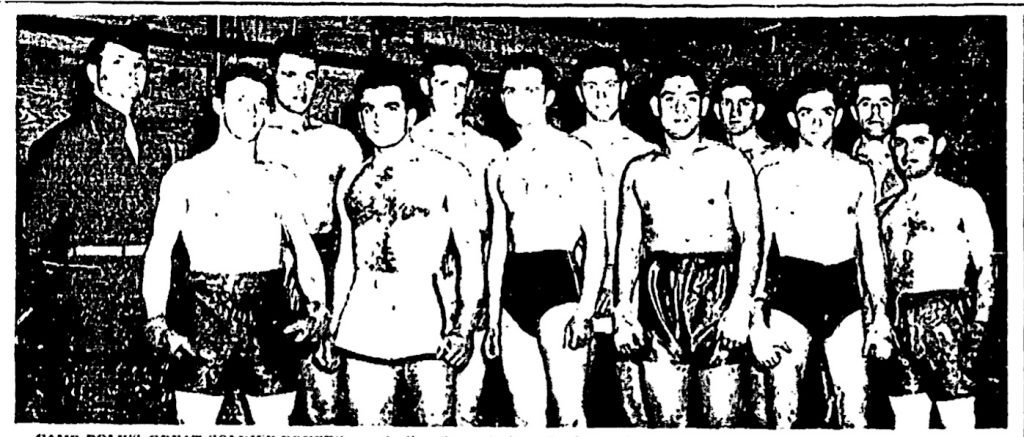
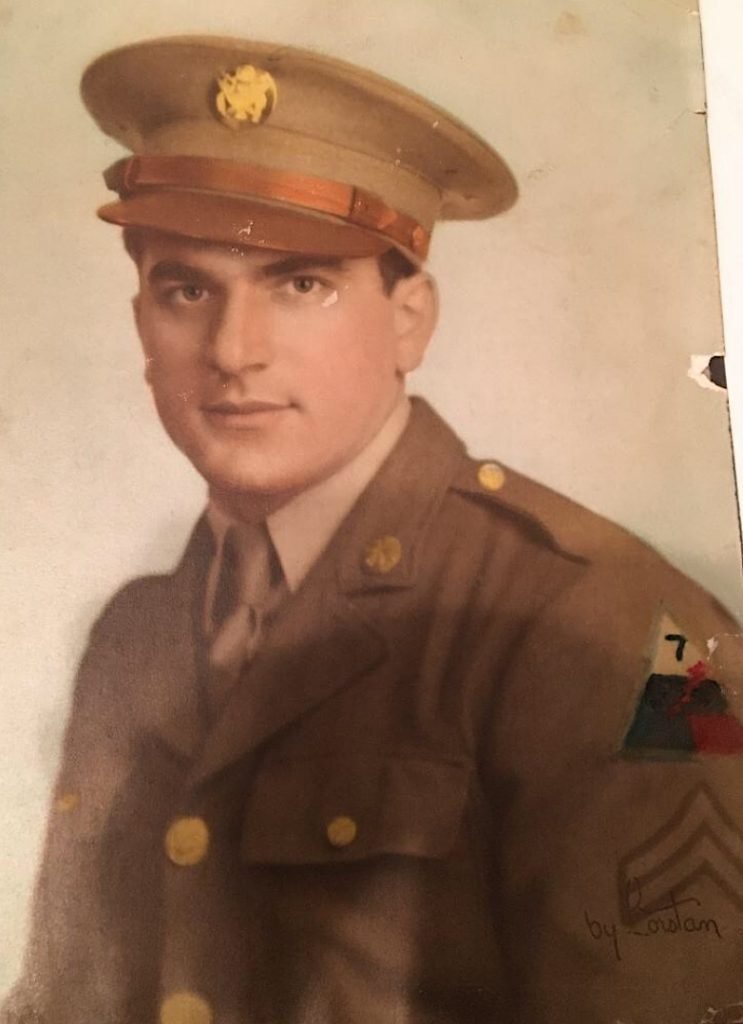
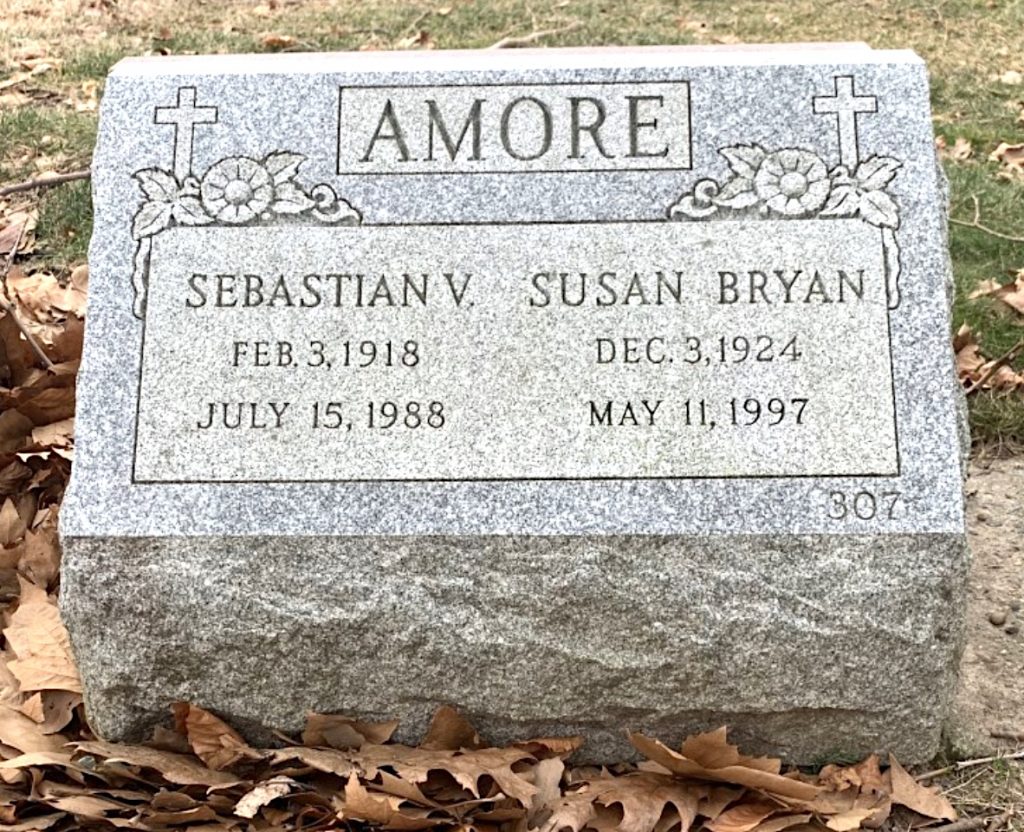
ANASTASIA (or ANASTASIO), ALBERT (or UMBERTO or ALBERTO) (1902-1957). Technical sergeant, United States Army. A notorious killer and organized crime boss, Albert Anastasia, as he was known in the United States, was born in Parghelia in Calabria, Italy, to Bartolomeo and Mariana Anastasio on September 26, 1902; Find A Grave and other documents list a February birth date. His birth name was Umberto Anastasio; over his lifetime, he had numerous aliases and nicknames, including “Mad Hatter,” “One Man Army” and “Lord High Executioner.” Bartolomeo, his father, was a railway worker and Umberto had many siblings. As per records, there were twelve children born to the Anastasios, three of whom (two sons and a daughter) died young; however, his Wikipedia biography notes that he had seven living brothers and one sister while his FBI report indicates two female siblings. FBI files and other sources note that his father died before World War I and that his mother never left Italy. Michael Newton, in Boss of Murder, Inc.: The Criminal Life of Albert Anastasia (McFarland & Co., 2020), agrees that Anastasia’s family tree is subject to dispute because of sloppy scholarship; there were 12 children but many of the first names are not confirmed.
After his father’s death, the Anastasio brothers went to work on fishing boats or freighters, or engaged in farming; one immigrated to Australia and another brother, like his father, worked on the railroad. Anastasia arrived in New York City on September 17, 1917, when he jumped ship as a sailor on the SS Sardegna, where he was listed as a sailor/deck boy. That vessel had departed from Genoa, Italy, and was the second sailing on which Anastasia (listed on the manifest as Anastasio) worked; he had been on the July 2, 1917 voyage sailing from Palermo. A Report of Desertion of Alien Member of Crew was filed on September 24, 1917. As per Michael Newton in the aforementioned biography, Anastasia was described at 15 years old, 5′ 3″ tall and 104 pounds; Newton notes that three of Umberto’s brothers also jumped ship at other times; the brothers all had criminal records in the United States.
Becoming a dock worker, Anastasia, at age 19, was convicted of beating another dockworker to death and sentenced for 1st degree murder on May 25, 1921, and was awaiting execution at Sing Sing Prison scheduled for July 3 of that year. The receiving blotter notes that he lived in Providence, Rhode Island, at the time of his arrest, was a longshoreman, single and Catholic; his mother in Italy was his contact. When the testimony of a prosecution witness was questioned, a new trial was granted; due to a lack of witnesses at the second trial, Anastasia was freed, and he re-entered his notorious life, becoming a powerful figure on the docks.
The 1925 New York State census lists him as an inmate at the Raymond Street Jail, a facility that was known for its unsanitary and awful conditions; it is unclear when he was released. His occupation was expressman, a person responsible for packing and transporting cargo. He served jail time from 1923-1925 on a misdemeanor for violating the Sullivan Law which prohibits carrying small firearms without a license in New York.
An organized crime figure who controlled the New York City docks and its unions, Anastasia was prominent in Murder, Inc., of which he was a co-founder. That organization was composed of a cadre of professional killers who received assignments and payments to kill those identified by the National Crime Syndicate in the 1930s. FBI files note that 63 men in the New York area were slain by Murder, Inc. between 1931 and 1940. After Abe Reles, a member turned informant who fingered Anastasia in killings, committed suicide at the Half Moon Hotel in Coney Island on November 12, 1941, Anastasia, once again, was able to “get away with murder.”As per an article on his death in the Times Record [Troy, New York], he was implicated in at least 31 murders. Anastasia went on to become head of the Gambino crime family in the 1950s. Although indicted for several murders, he was only convicted once, and as stated above, that conviction was reversed on appeal; “convenient” deaths and refusals of witnesses to testify saved him other times. The Times Record also reports that Anastasia was a key figure behind New York and New Jersey racketeering schemes which took millions of dollars a year from legitimate businesses.
On June 22, 1938, he married Elsa Bargnesi, a 23-year-old hairdresser who was born in Copperchiff, Canada. His marriage license, issued in New York City, bore his birth name and listed his occupation as oil dealer. The couple had four children: Richard, Bert, Gloriana and Joyana.
Anastasia was involved in a scheme related to SS Normandie, a French luxury cruise liner that was docked at Pier 88 in New York City. In June 1940, when France surrendered to Germany, the United States Navy placed the vessel in “protective custody” fearing that it would fall into Nazi hands if it was returned to France. When the Normandie, renamed the USS Lafayette in honor of the French general, was being converted into a troop ship after the United States entered World War II, it caught fire on February 9, 1942. Although an FBI investigation concluded that the fire was accidental and occurred when a welder’s torch touched life preservers, rumors of mobster involvement persisted as well as rumors of German sabotage. Previously, in 1939, Charles Luciano, known as “Lucky,” while serving a prison sentence at Dannemora, a high security New York State prison, was aware that the Navy feared Germans sabotaging ships in the harbor. He plotted with visitors, including a henchman, Frank Costello, that a “sabotage incident” would be staged and fixed. The Navy would then come to Luciano for help and in return, would release him from prison. Within a month, Luciano was told that Albert Anastasia and his brother, “Tough Tony,” would stage something big with the Normandie.
As per Lorraine B. Diehl in Smoke Over Manhattan: The Fate of the SS Normandie, the sight of the destroyed ship’s carcass in New York Harbor made New Yorkers question the ability of the Navy to safely patrol the coastline where U-boats had caused deadly mischief; there was also fear of Italian spies among the longshoremen. In March 1942, Manhattan District Attorney Frank Hogan met with Lieutenant Commander Charles R. Haffenden of the United States Office of Naval Intelligence. Diehl notes that Hogan, believing that Anastasia was involved in the burning of the Normandie, set in motion a plan to rely on information from Luciano, who was moved to Great Meadow Correctional Facility in Comstock, New York, a lower-security prison, on May 12, 1942. Luciano was promised a one-way ticket to Sicily after his sentence was served; the offer was made good upon Luciano’s parole in 1946. Luciano who still believed that Anastasia was involved in the destruction of the Normandie, provided other help to authorities but Anastasia was never prosecuted for its burning.
During World War II, using the name, Umberto Anastasio, Anastasia registered for the draft on May 9, 1942. He used the September 26, 1902 birth date, gave 1123 Webster Avenue in Utica, New York, as his home address, noted that he was unemployed and identified his wife Elsa as his contact person. The accompanying registrar’s report described him as 5′ 8″ tall, 195 pounds with brown hair, black eyes and a dark, on July 30, 1942, was not yet a citizen, was a salesperson in civilian life, had completed grammar school, and weighed 201 pounds. Many sources state that he enlisted to avoid criminal investigations into his mob activities. During his service, he was stationed at Indiantown Gap, Pennsylvania complexion. Anastasia’s Army enlistment record shows that he enlisted as a private at Utica, New York, at a stevedore unit, where according to Wikipedia, he trained soldiers to be longshoremen.
An article in the Brooklyn Daily Eagle on September 28, 1943, described the transformation of the top murder and racket boss of Brooklyn to master sergeant in the United States Army; other sources state he was a technical sergeant, a soldier who had a particular trade or skill and who was below a master sergeant in rank. That article, which included many of the charges against him during his career of crime, stated that Anastasia was at Belmont Race Track, where he was seen by a reporter placing a $600 bet; apparently, Anastasia was given many liberties during his service. The Brooklyn Daily Eagle also noted the next day that his promotion in the Army was “unusually rapid.” As reported in that second article, his wife answered the door at his one-family home on Ocean Parkway and Avenue H in Brooklyn and refused to answer any questions other than verifying that her husband was in the Army; although he lived there, he registered from his hideout in Utica. Anastasia obtained citizenship in 1943, while still in service. In September 1944, he was hospitalized as an enlisted person after a car accident. He was honorably discharged in December 1944. The Brooklyn Daily Eagle reported on December 5, 1944, that he was discharged as a technical sergeant because he was over age; that article noted his Brooklyn criminal activity as an “underworld boss.” On December 10, 1952, the military newspaper, Stars and Stripes, reported that proceedings were underway to strip Anastasia of his citizenship because of his alleged “gangsterism” on the New York docks.
An FBI file, dated February 25, 1954, indicates that Anastasia took advantage of a law granting quick citizenship to serviceman. That document also stated that after the war, he left the docks and began operating a dress factory in Hazleton, Pennsylvania. In addition, he purchased a yellow stucco house for $75,000 in Fort Lee, New Jersey, described as of “phony” Spanish-style, guarded by a steel fence and two dogs. That file reports that he owned two Lincoln automobiles, his son attended college and that he and his brothers bought their 76-year-old mother a house in Parghelia, Italy. On May 23, 1955, The New York Times reported that Anastasia had pled guilty to tax evasion and underreporting his income; he was sentenced to one year in federal prison and a $20,000 fine. Wikipedia states that although a petition to revoke Anastasia’s citizenship was approved, it was overturned on September 19, 1955.
Anastasia’s life ended in a stunning blaze of gunfire in 1957. Having previously escaped an attempt on his life in 1951, he was shot to death by two masked men as he sat in a barbershop at the Park Sheraton Hotel on West 56th Street and Seventh Avenue in Manhattan; his driver had parked the car and went for a walk. Allegedly, he was targeted by rival bosses, Vito Genovese and Carlos Gambino. His autopsy report, filed on October 27, 1957, two days after his death, determined the cause of death as a gunshot wound to the back of the head, lodging in the left side of the brain; there were other shots to the hip, hand and back of the neck. As per Wikipedia, the Catholic Diocese refused to sanction a Catholic burial. His gravestone bears his name as Umberto Anastasio. In 1958, his family moved to Canada and adopted the surname “Anisio.” Section 39, lot 38325, grave 182.
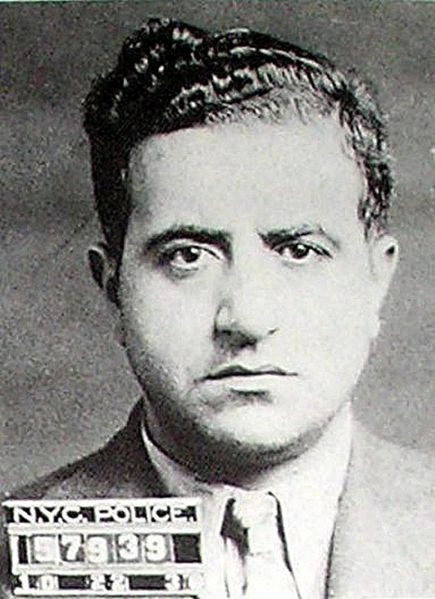

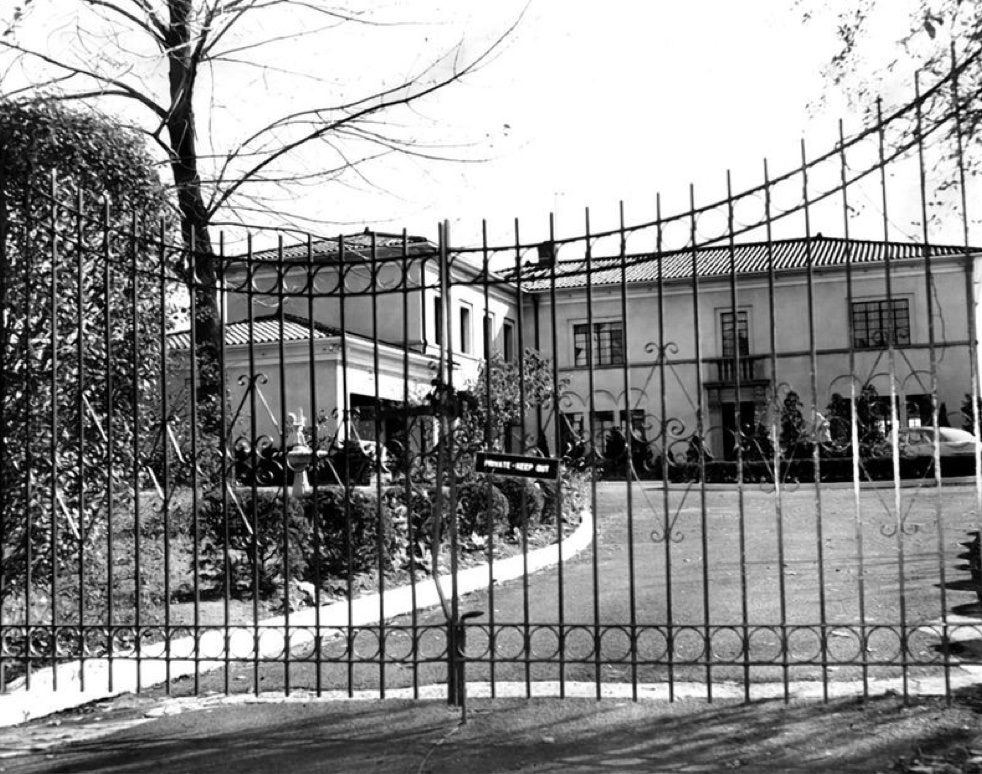
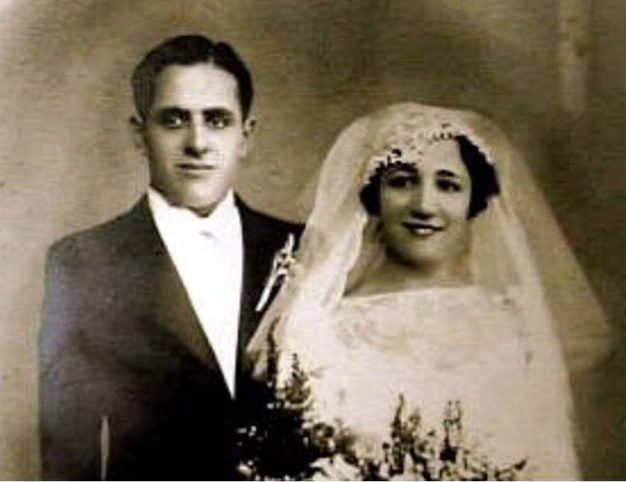

ANDERSEN, CHARLES HENRY (1918-1945). Lieutenant junior grade, United States Navy. Charles Andersen was born in the United States to Norwegian immigrant Henry Andersen and his New York-born wife, Helen Andersen. At the time of the 1920 census, the family was living at 7109 Third Avenue in Brooklyn, along with Henry’s brother and sister-in-law. Charles’s father was working as a carpenter in the ship building industry.
According to church records, Charles was baptized on December 22, 1918, at Zion Lutheran Church in Brooklyn, and confirmed in the same church at the age of 13, in 1932. He belonged to Boy Scout Troop 269 at the church; in his adult years he would teach Sunday school there.
Andersen graduated from Public School 102 in Brooklyn in 1932. As an honor pupil, he took part in a commencement-day tribute to those P.S.102 graduates who had died in what was then known as the World War. He went on to Brooklyn Technical High School and completed two years at Brooklyn Polytechnic Institute, according to his obituary.
At the time of the 1940 census, the Andersen family was living at 344 80th Street in Brooklyn. Twenty-one-year-old Charles Andersen had completed a year of college and was working as a clerk in a hardware store. His father’s occupation was listed as warehouse clerk. His mother worked as a waitress in a restaurant.
His draft registration of the following year described 22-year-old Andersen as 5′ 8″ tall, 148 pounds, with light complexion, blond hair, blue eyes, with a scar on his forehead. He listed his employer as the U.S. Expansion Boat Company.
In 1943, Andersen was commissioned as an ensign in the Naval Reserve, according to military records. He became a pilot in 1944, and was promoted to the rank of lieutenant, junior grade. He served as a flight instructor at the Naval Air Station in Minneapolis, Minnesota, before being transferred to Bunker Hill Naval Air Station, near Kokomo, Indiana.
According to New Jersey marriage records, 1943 was also the year of Andersen’s marriage, to Mary Emerson. No other details are available.
On January 9, 1945, Andersen was killed when his training airplane crashed during what was called a test hop at Bunker Hill Naval Air Station. He left behind his wife, Mary Andersen, and two young children: William T. Andersen and Sandra C. Andersen. The crash was reported the day it happened in the Kokomo Dispatch (a special edition of the Kokomo Tribune), and two days later in The Brooklyn Daily Eagle, on page 1. Charles was 26 years old.
In 1947, Mary Andersen, his widow, applied for a veteran’s headstone for her husband’s grave. Section 87, lot 1715, grave 238.

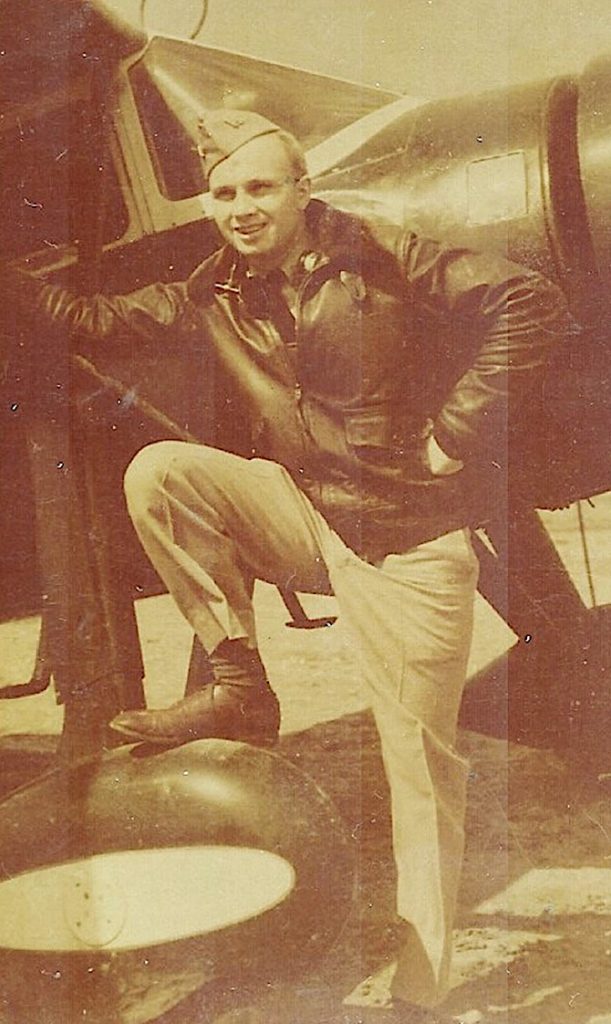
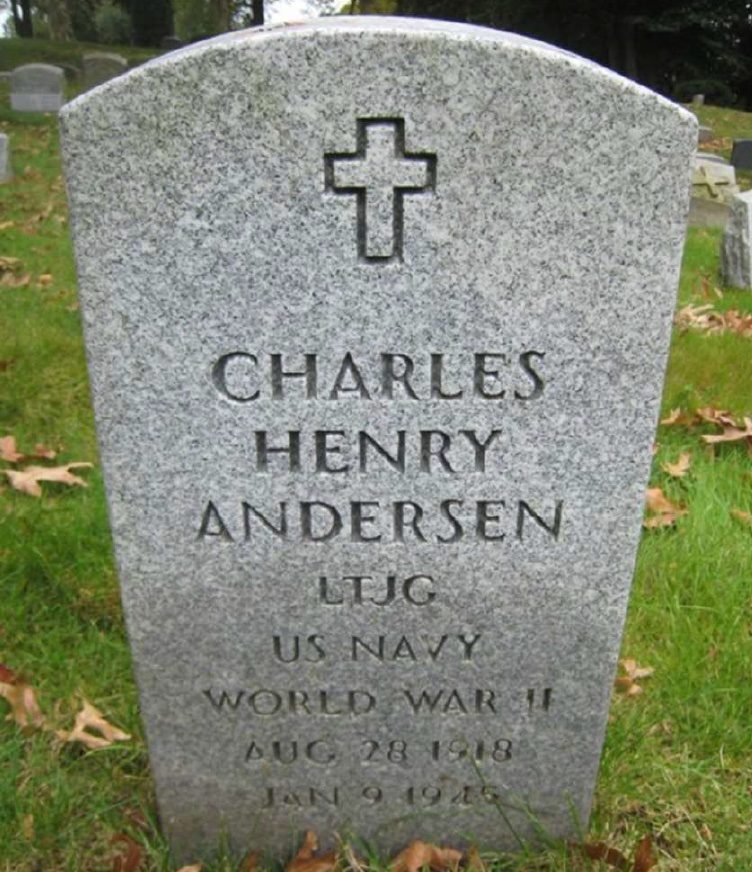
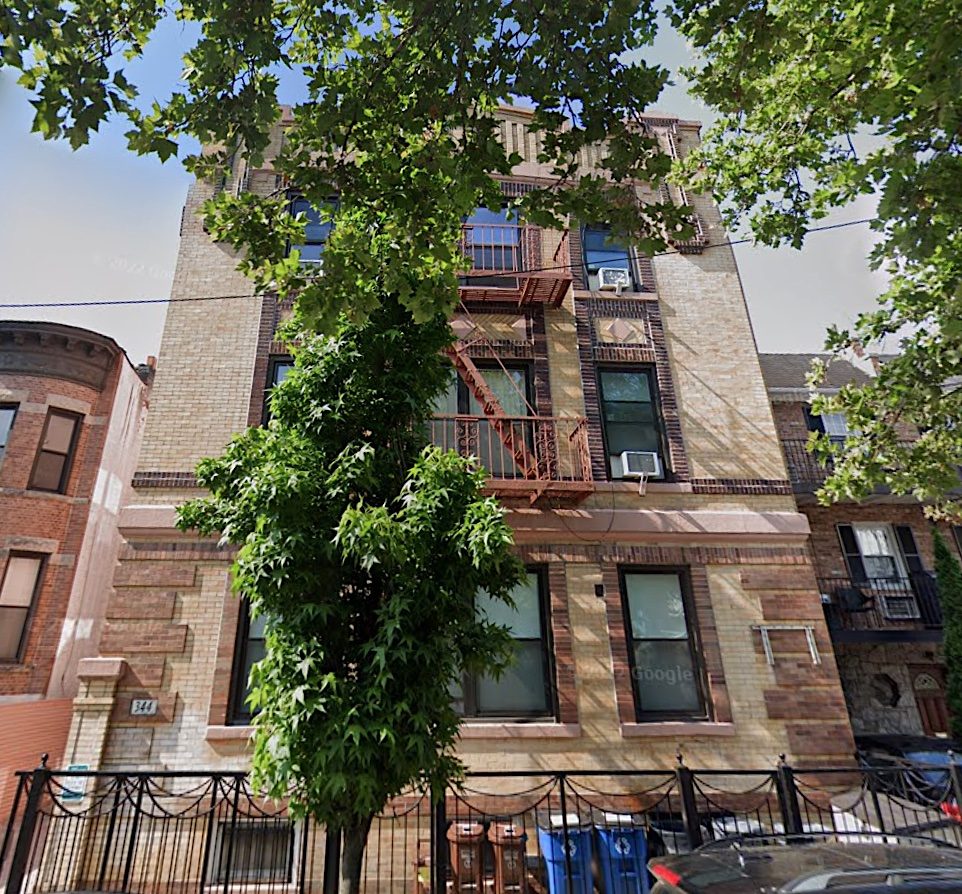
ANTONINO, GEORGE (or GIACINTO) (1912-1979). Rank unknown, unit unknown, United States Army. According to the New York birth index, Antonino was born in Brooklyn and his given name was Giacinto. As per the 1920 census, his father and mother immigrated from Italy and his father was a carpenter. His parents had four children: Ferdinand, Maria, Elia and Giacinto. All the siblings were born in Brooklyn and the family lived at 705 Union Street. Residing at the same address were his mother’s extended family consisting of his maternal grandmother, three aunts, and two uncles. The 1930 census notes the family continued to reside at the address on Union Street. His brother Ferdinand, twenty-four years old, was a salesman at a paper box factory, his sisters Marie and Elisa, twenty-two and twenty years old respectively, were secretaries, and Antonino, recorded as George, was eighteen and attended school. As per the 1940 census, Antonino’s mother is listed as head of household. By the time of this census, his father had passed away, Marie was a contractor for a hat factory, and Elisa was working for the government as a secretary. Antonino’s employment is documented as “other work” with no job designation.
Antonino’s World War II draft card notes that he lived at 110 Garfield Place and his sister, Marie, was named as the contact person. He also recorded that he was twenty-eight years old, self-employed, and worked at 707-A Union Street. His registrar’s report, dated October 16, 1940, describes him as 5′ 8″ tall, 150 pounds with gray eyes, black hair, and a freckled complexion. The World War II Army enlistment records show that he enlisted on June 3, 1941, at Fort Jay, Governors Island, New York. These records indicate that he was single, had completed four years of high school, and his civil occupation was “public official.” There is no information regarding his rank, unit, or where he was stationed during the war.
After the war, according to the May 24, 1949, issue of the Brooklyn Daily Eagle, Antonino was installed as an adjutant for the South Brooklyn Memorial Post 1406 of the American Legion. As per the Social Security death index, his last benefit was sent to Delray Beach, Palm Beach, Florida. Section R, lot 43343, grave 2.
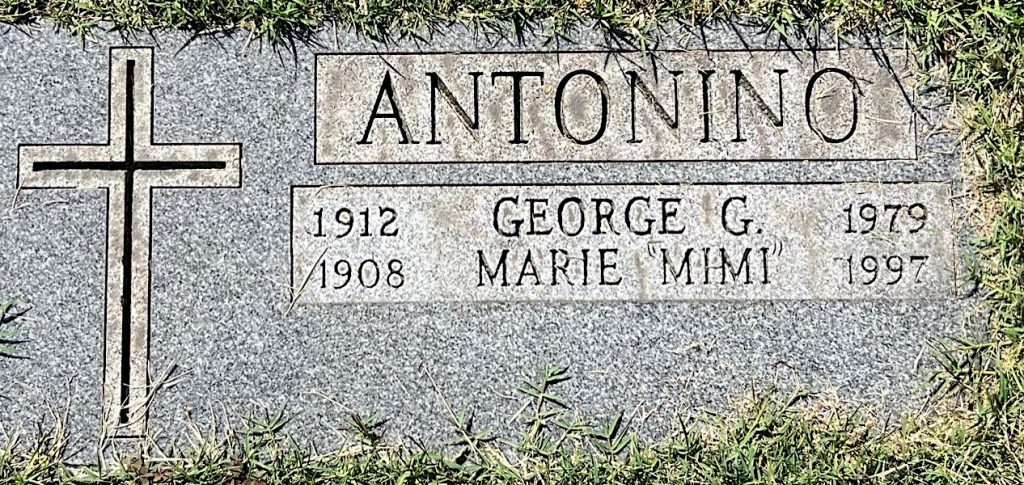
ASMANN, WALTER C. (1926-2006). Rank and unit unknown, United States Army. Walter Asmann was born in Queens. As per the 1930 federal census, Walter was the only child of Andrew and Irene. Both parents were born in New York and his father was a telephone repairman. According to the 1940 federal census, the family still resided in Queens. Walter, at the age of thirteen, attended school.
Walter’s World War II draft registration card documents that he was eighteen years and a day old when he signed his draft card on July 11, 1944, in Queens. He was residing at 9416 – 210th Street, Queens Village, and his father was designated as his contact. Walter worked for Otto A. Witt at 211-08 Jamaica Avenue, Queens Village. As per his registrar’s report, Walter was 5′ 9″ tall and 135 pounds with brown hair and eyes and a light complexion.
There is little documentation regarding Walter’s military service during World War II. As per his World War II Army enlistment record, his enlistment date was November 18, 1944. According to the Veterans Affairs BIRLS (Beneficiary Identification and Records Locator Subsystem) Death File, he was discharged from the United States Army on October 31, 1946.
As per the New York Marriage License Indexes, he and Lillian Thompson obtained their marriage license on March 22, 1948 in Brooklyn. According to a relative’s ancestry.com tree, and a certificate posted online, the couple married on March 27, 1948, at Trinity Lutheran Church. Before their wedding, Walter was living in Hempstead, New York and Lillian resided in Brooklyn. The 1950 federal census documents that the Asmanns were living in Brooklyn with Lillian’s brother, Henry Thompson (see) who was named “head of household.” Walter was employed as a splicer’s helper for the New York Telephone Company.
Walter was implicated after an eight-month-long Federal Bureau of Investigation probe, from May 25, 1953 through January 29, 1954, which ultimately resulted in his arrest. The following excerpt from the November 10, 1953 FBI communiqué succinctly describes the details of the investigation:
This is the case wherein information received from Herbert C. Heller, 60 Sutton Place, New York City, that his wife retained Barbara Barb, an attorney, to obtain evidence of unfaithfulness on his part. Barb in turn retained John C. Broady, a private investigator, to handle the investigation. Mrs. Heller has stated that on 3-27-53 three men came to Heller’s apartment and told her they wanted to make a survey of the wiring of the apartment. These men returned on 3-30-53 at which time Mrs. Heller understood they placed a wire tap on the telephone in Mr. Heller’s bedroom. According to Mrs. Heller, no evidence of unfaithfulness on the part of Mr. Heller was determined. Mrs. Heller instructed that the entire operation be called off on 4-17/18-53.
Walter’s Name Card Index to AP (Associated Press) Stories documents the following timeline:
ASMANN, WALTER
Phone employee, 29, arrested in probe of undercover wiretap center. Feb. 19, 1955
Defense lawyer said wiretap center is still a mystery. Feb. 24, 1955
Pleads guilty to illegal conspiracy to tap phone lines; continued on bail. June 20, 1955
Given suspended sentences. June 15, 1956
The above is verified by a Federal Bureau of Investigation report, dated June 25, 1956, which states: “Walter Asmann, Carl Ruh and Warren Shannon were sentenced to two years and their sentences were suspended on June 15, 1956. Broady case is still not settled in so far as the appeal is concerned.” The report details:
Asmann was questioned as to whether he had been performing any unauthorized operations in connection with his employment and relative to his financial situation. Asmann at first denied any wrong-doing but after considerable questioning he finally admitted his activities. He said that about six months previous, Ruh had approached him and asked him if he would like to make thirty-five dollars in a couple of days for running a cross-connection. Asmann agreed to do this since he said he needed the money being in debt to the extent of about $700.00 because of an automobile accident, and subsequently Asmann ran approximately 18 cross-connections for Ruh, being paid thirty-five dollars on each occasion.
Hesse said that he believed that Asmann is just a young fellow who was a tool in the matter and had been easily led. Asmann told them that he had no idea what he was doing and did not think it was serious…
According to the Department of Veterans Affairs BIRLS Death File, Walter passed away on February 2, 2006, due to natural causes. Section K, lot 46000.
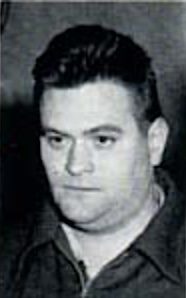
AVITABLE, FELIX JOSEPH (1927-2018). Private, 92nd Air Repair Squadron, 44th Air Depot, United States Army Air Force. Felix was born in Brooklyn, the third child of Alessio and Antoinette Avitabile. Both parents had immigrated from Italy, Alessio having arrived in 1906 and Antoinette in 1913.
As per the 1930 census, the family lived at 89 Carroll Street in Brooklyn. The records list Felix’s father’s name as Anthony, thirty-seven years old at the time, a naturalized citizen, who worked as a shoemaker in a shoe factory. Felix’s mother’s name was Antoine, she was thirty-three years old and had been married to Anthony for ten years. By this time, the couple had four children: Alicio, the eldest son who was nine years old, Frank who was seven, Felix who was three and a half, and their daughter Theresea who was two years old.
In 1937, when Felix was just ten years old , his mother passed away at the age of forty. By the next census in 1940, the family continued to live at 89 Carroll Street in Brooklyn. Felix’s father, listed here as Alessio, was now forty-six and a proprietor of his own shoe repair shop. Felix’s eldest brother, also listed as Alessio, was nineteen and worked at a laundry factory as a shirt starcher along with Frank who was seventeen. Felix was thirteen years old, his sister Theresea was twelve and both were attending school.
In 1945, after graduating from Alexander Hamilton Technical and Vocational High School, the only one of his siblings to complete his public school education, Avitabile, eighteen, enlisted in the Army. His registration card shows that his home address was still 89 Carroll Street and that he worked for a stevedore company, Turner and Blanchard, at 21 State Street in New York City. He was described as white with brown eyes, brown hair and a ruddy complexion; 5′ 7″ tall and 155 pounds. Avitabile listed his sister, written as Theresa here and who now lived at 86 Douglass Street, as his contact.
Avitabile’s family shared that he served in Germany but did not face combat. Following his enlistment, he reported to Fort Dix in New Jersey. On September 2, 1945, Victory over Japan Day, he was training in Amarillo, Texas. He started with the rank of private and was a “basic” soldier, until he was promoted to private first class and held the positions of fire fighter and then clerk. He was in the service for about nineteen months, ten stateside and nine in Europe, as part of the Army of Occupation in Germany, where he was based at Oberpfaffenhofen Air Depot, about eighteen miles from Munich. Avitabile’s son writes that his father loved to repeat the name of that town over and over again.
His duties as a clerk involved a variety of tasks in connection with the operation of a military unit including compiling and filing reports and statistics, as well as requisitioning supplies. While at that depot, Avitabile assisted in putting out a fire in the nearby town of Unterbrunn; his fire company worked alongside the military police and civilian fire companies from surrounding towns. After over three and a half hours of their collective efforts, the fire was extinguished and a house and cattle stable saved. The incident earned Avitabile a mention in a military newspaper account of the fire. In 1946, Avitabile was honorably discharged and his family reports that he was awarded the Victory Medal.
During his service in Europe, Avitabile was fortunate that a former teacher of his was one of his commanding officers. This likely expedited his getting a compassionate furlough of several weeks to visit his grandmother, Cecelia Cuomo, whom he had never previously met and who lived on the island of Ischia in the Bay of Naples. While visiting his grandmother, he met Francesca Cuomo and their relationship blossomed to the point where, before he returned to Oberpfaffenhofen Air Depot, he proposed marriage. In 1947, following Felix’s discharge from the service, Francesca immigrated to the United States at the age of twenty-one and the couple were married at Sacred Hearts and St. Stephen’s Church in Carroll Gardens, Brooklyn.
After military service, Avitabile worked as a clerk for a firm in the garment industry, as a taxi driver, and as a checker and clerk on the Brooklyn waterfront. In 1990, when he retired, he held the position of chief clerk of the Brooklyn Container Port. He lived on Seeley Street in Windsor Terrace for almost fifty years and had four children: Antonina who later became a nun in the Missionary Sisters of the Sacred Heart of Jesus, Alex, Libera, and Salvatore who passed away in 1985 at the age of twenty-five. Avitabile and his wife Francesca remained married until his death at the age of ninety-one; Francesca passed away in 2020 at the age of ninety-three.
Avitabile’s son writes that from what he told his children and others, his military experience was a positive experience. He loved to sing Army songs and he taught the songs to his children and got them to sing along with him. One particularly memorable song goes: “The biscuits that they give us, they say is mighty fine. One fell off a table and killed a pal of mine. Oh, I don’t want no more of Army life. Gee, Ma, I want to go home.”
Avitabile’s funeral services were held at Sacred Hearts and St. Stephen’s Church in Brooklyn.
He is survived by his children Sr. Antonina MSC, Alex and Libera; grandchildren Naomi and John; his brother Alex and many nieces and nephews. Avitabile shares his final resting place with his wife and their son Salvatore. Section 126, lot 44600, grave 67.
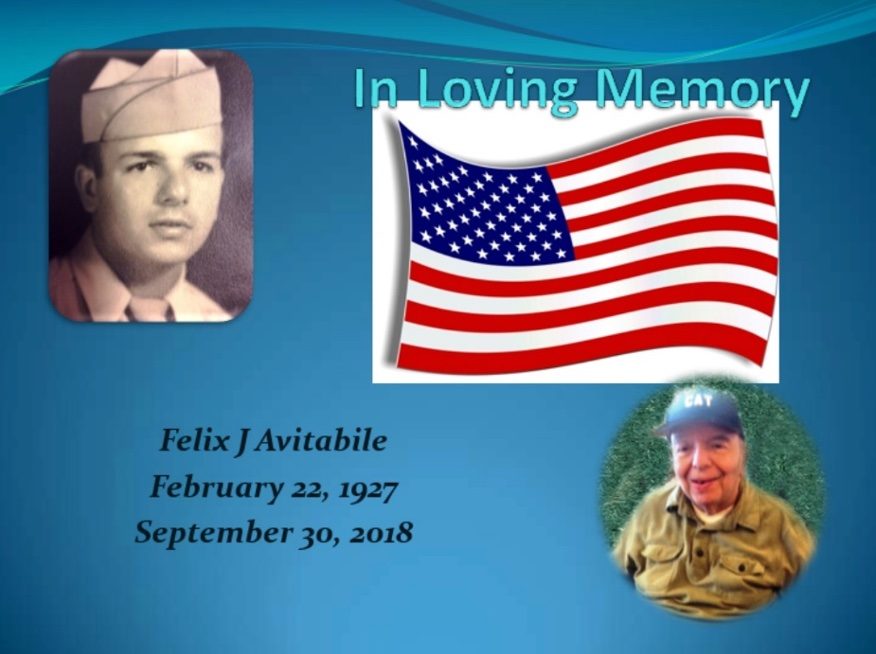
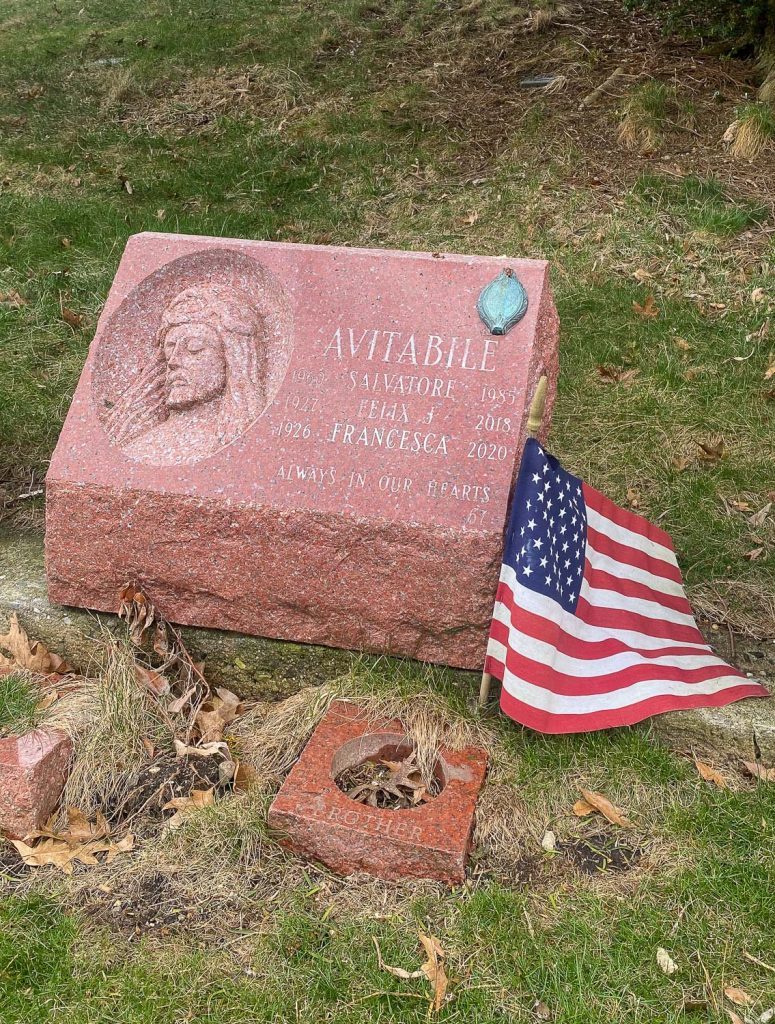
AZRAK, CHARLES EDWARD (or ELIAS) (1920-1994). Private, United States Army. Azrak was born in Brooklyn. As per the 1930 census, Charles lived with his Syrian-born parents at 286 Marshall Street in Paterson, New Jersey, with his seven siblings, the eldest two of whom were also born in Syria. That census indicates that his parents and their two eldest children immigrated to the United States in 1912 and that his father was a weaver in a silk factory; his father became a naturalized citizen in 1950. Charles Azrak’s draft registration, likely filed in 1940, reports that he lived at 135 Windsor Place in Brooklyn and worked as a bill deliverer and process server for the Brooklyn Union Gas Company. He listed his father, Louis, with whom he lived, as his emergency contact.
At the time of his enlistment on February 4, 1942, his Army enlistment record shows that he was single, had completed one year of college, and had been employed as a general industry clerk; at that time, he was 5′ 11″ tall and weighed 176 pounds. As per a family member, he served in North Africa and Italy during World War II. Italy, originally a member of the Axis, changed its allegiance to the Allies in September 1943, weeks after Benito Mussolini was ousted from power in July of that year. The fighting in Italy continued until May 2, 1945, days before Victory in Europe (V-E Day) on May 8. Many units were involved in that long and deadly struggle; it is unknown to which unit Azrak was assigned. His last service pay check was issued on August 31, 1945 and that payment was sent to his house at 135 Windsor Place in Brooklyn. A copy of Azrak’s pay stub, which was received by Brian White, a researcher, in response to his request for any military records from Azrak’s service, notes his final foreign service pay of $230 and change, less deductions, for a total payment of $157.30. That stub shows that Azrak enlisted at Fort Totten, New York, and was also at Fort Dix, New Jersey. Azrak was discharged on October 28, 1945.
On May 19, 1946, the Brooklyn Daily Eagle announced his marriage to Virginia Liam. Their marriage took place at Our Lady of Lebanon Maronite Church with a reception at the Hotel Bossert. Azrak ran a garment factory, Valmar Garments, on Prospect Avenue and Prospect Park West; as per a notice in the Brooklyn Daily Eagle on December 23. 1950, Azrak and a partner purchased that two-story building that housed the business. He later was the proprietor of Star Apparel Products at 444 12th Street in Brooklyn.
Azrak was a Knight of the Order of St. Gregory, an honor bestowed upon members of the Maronite Church (an Eastern branch of Catholicism that shares many rites with the Orthodox Church) for their service to the Holy See and to their community. Many of his activities were highlighted in the Caravan, a local newspaper for the Arab-American community in Brooklyn. That paper noted on May 14, 1959, that Azrak was chairman of the board of the Allepian Fraternity and Allepian Foundation. He was also a member of the Syrian Young Men’s Association; his involvement in the above-mentioned community organizations focused on fund-raising and preparing programs and journals for social events. As of 1968, he was general chairman of the Maronite Laity Committee.
In 1993, he lived at 171 85th Street in Brooklyn. Azrak’s obituary in the New York Daily News noted that he was survived by his wife and that he was a father, grandfather and brother. A Mass of Christian Burial was held in his memory at St. Anselm’s Roman Catholic Church at 82nd Street and Fourth Avenue in Brooklyn. Section 133, lot 39823, grave 1.
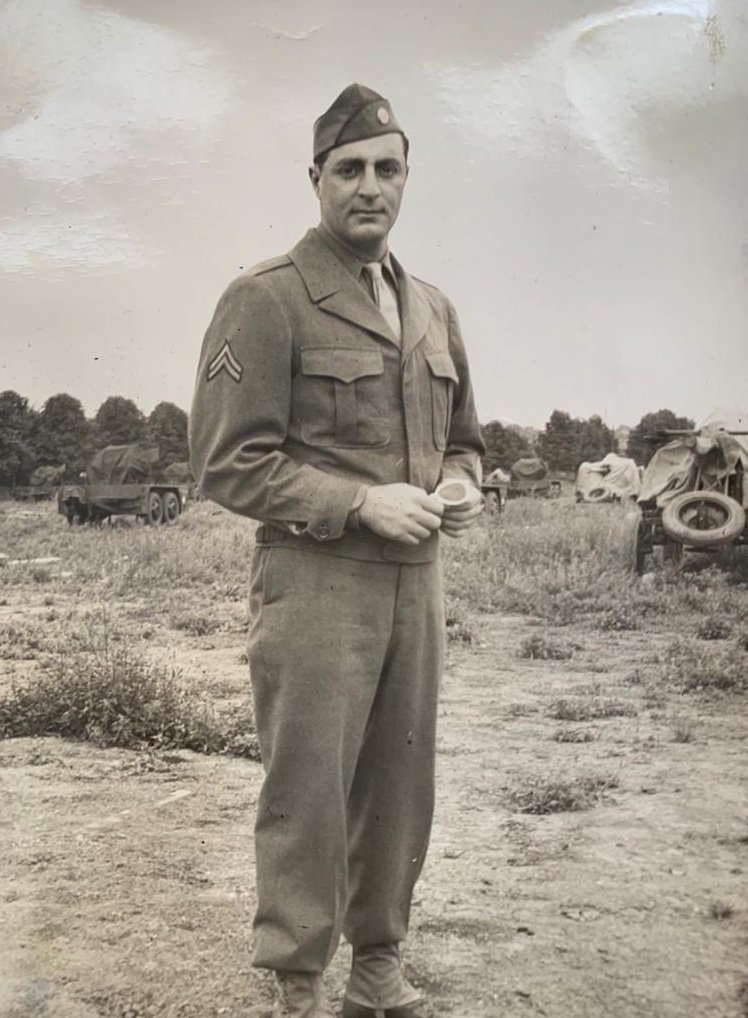

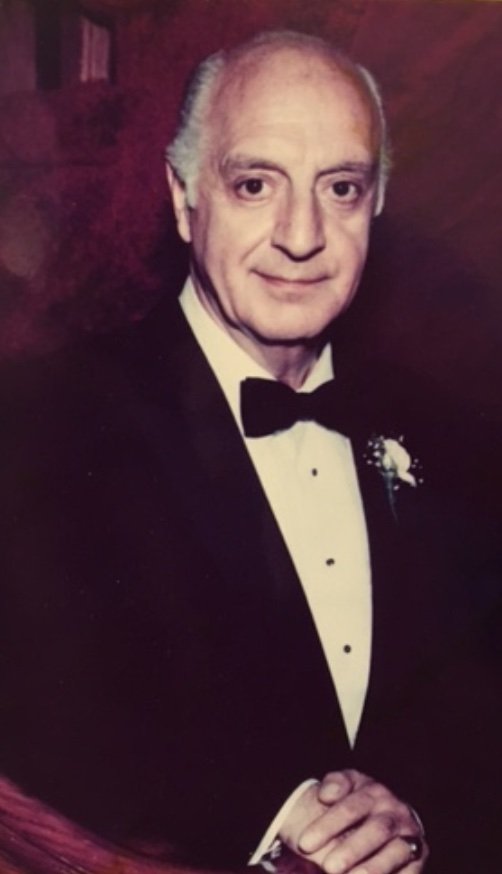
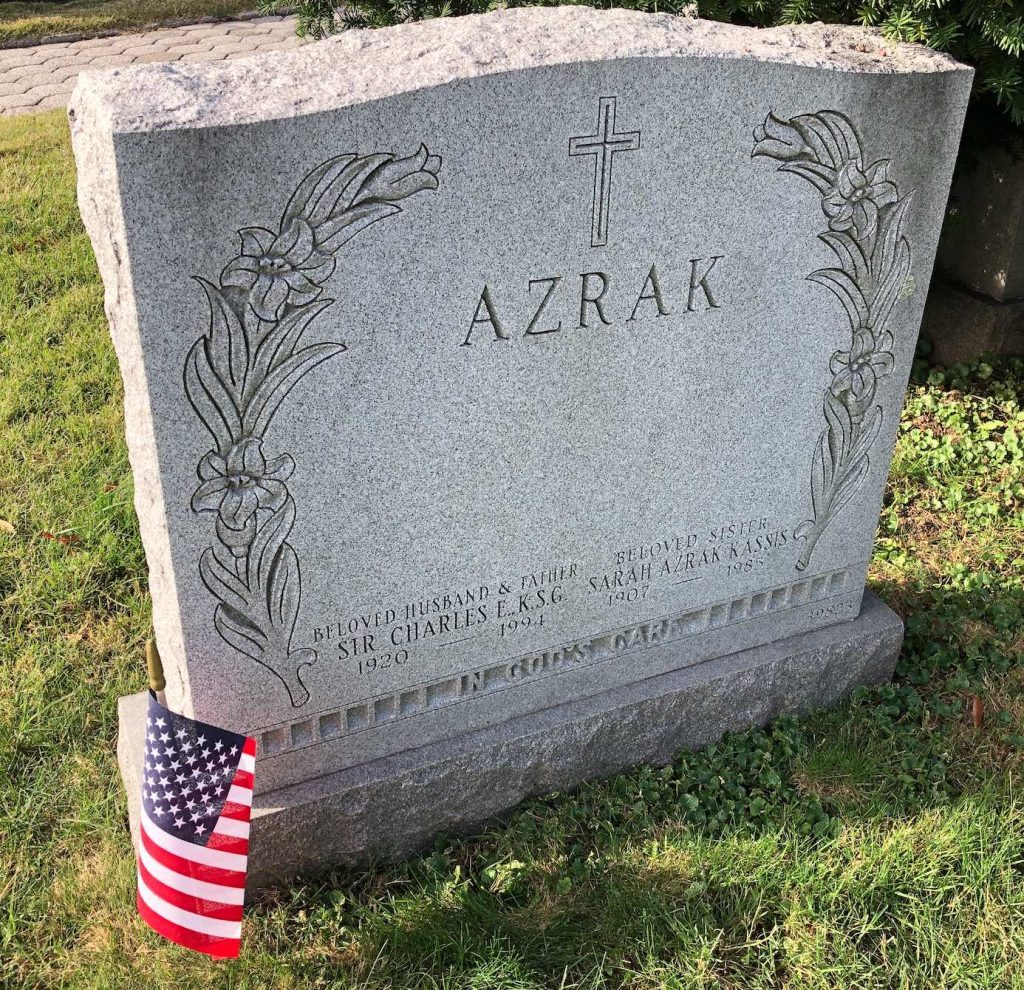
BALDWIN, JOHN STANLEY (1904-1957). Sergeant, Marine Corps Reserve. John was born to William N. and Nellie S. Baldwin in Newark, New Jersey. As per the 1910 census, William N. Baldwin, aged 34 and a dock clerk, and his wife, aged 26, and children were living at 623 53rd Street, Brooklyn. John had two younger sisters, Norma, 2 years old, and Florence, an infant. By 1915 the family had moved to 4812 11th Avenue, Brooklyn; Nellie was identified as a housewife.
By 1925, William Baldwin worked as a shipping clerk; the family had moved to 629 77th Street, Brooklyn, John worked as a bank clerk, his younger sisters were in school and there was another younger child, infant William. At the time of the 1930 census, John and Norma both worked as bank clerks, Florence was an insurance clerk and younger brother William was in school. The family then lived at 621 77th Street, Brooklyn, the same address as would appear on John’s 1942 draft registration card. Sadly, John’s mother Nellie had passed away in 1937; she was interred at Green-Wood Cemetery. Florence Baldwin had married and was listed in Nellie’s obituary as Mrs. Leslie H. Larsen. In 1940, the family still lived at this address, William Sr. was now an assistant superintendent on a shipping line, William Jr. was 16 years old and in school, Norma and Raymond O’Keefe were married with a son also named Raymond. John’s younger sister Margaret “Norma” O’Keefe, also a bank clerk; Raymond O’Keefe, a French Canadian, was an accountant working at a savings bank. John, Norma and family all lived at this address.
According to his draft registration card signed February 15, 1942, John Stanley Baldwin was 38 years old, 170 pounds at 5′ 9″ tall with a light brown complexion, brown hair and gray eyes. At this time, he worked at Chase National Bank in the Financial District in Manhattan, at 18 Pine Street. “Name And Address Of Person Who Will Always Know Your Address” was listed at Mrs. Raymond O’Keefe, his sister.
John Stanley Baldwin enlisted on May 4, 1942, and was honorably discharged as a sergeant from the Marine Reserves on October 12, 1944. Five months after his death in 1957, his younger brother, William N. Baldwin Jr., submitted the application for his brother’s Department of Veterans Affairs flat bronze marker. Section 145, lot 26559.

BANGS, JR., FRANCIS NATHAN (1922-1944). First lieutenant, 703rd Tank Destroyer Battalion, 3rd Armored Division, United States Army. Francis Bangs was born in New York City to Francis Nathan Bangs and Catherine Woodbury Clement Bangs. The Bangs name belongs to one of the oldest English families in America; its founding member, Edward Bangs, arrived at Plymouth Plantation in 1623 on the Anne, the third ship to land at Plymouth. Numerous Bangs descendants, including Francis senior, planned a grand memorial to Edward Bangs in 1927, according to a news article in the Boston Globe.
The Francis Bangs family, including the youngest child, Catherine, lived in Manhattan at 1239 Madison Avenue with two maids (one Swedish and the other Scottish), as listed in the 1930 federal census. According to their respective obituaries, Francis senior was a third-generation lawyer, a partner in the firm of Ferris, Bangs, Davis, Trafford & Syz, who served at the Mexican border in 1916 and in Europe with the 77th Division in World War I; Catherine Clement Bangs was dedicated to the cause of birth control after being inspired by a speech by the pioneer Margaret Sanger in 1921. Catherine served as president of the American Birth Control League, which was founded by Sanger that year and, twenty years later, became the Planned Parenthood Federation.
Francis junior attended St. Paul’s School in Concord, New Hampshire, regarded as one of the most elite prep schools in the nation. He went on to attend his father’s alma mater, Columbia College, in the summer of 1940, and pledged the Delta Psi fraternity. At the same time, he enlisted in the New York National Guard, 101st Cavalry Squadron. In early 1941, the National Guard was federalized, supposedly for one year. But by the end of 1941 the United States was at war, and Francis was therefore in the United States Army. He was sent to Officer Candidate School in Fort Knox, Kentucky, as a second lieutenant. There he became engaged to Caroline B. Joyes of Louisville in October, 1942, according to an engagement announcement in the Louisville Courier Journal. A promotion to first lieutenant followed in 1943, and Bangs departed for training in England that August.
As part of the 703rd Tank Destroyer Battalion, 3rd Armored Division, he landed in France in late June, 1944. Known as “Spearhead,” the 3rd A.D. pushed through northern France during the Normandy Campaign, reaching Belgium in September and moving into Germany in the following months.
Francis Bangs was killed in action in Belgium on December 18, 1944. He was awarded a Purple Heart posthumously. He was 22 years old. The actions that ended his life were part of the Battle of the Bulge, the largest and bloodiest single battle fought by the United States in World War II and the third-deadliest campaign in American history.
Francis and his younger brother, Whitney Bangs (see) are buried next to each other in Henri-Chapelle American Cemetery in Belgium. A cenotaph commemorating the brothers can be viewed at Green-Wood, in the Bangs family plot. Section 52, lot 8027.


BANGS, WHITNEY WALDO (1924-1945). Private first class, 94th Infantry Division, United States Army. Whitney Bangs was born in New York City to Francis Nathan Bangs and Catherine Woodbury Clement Bangs. The Bangs name belongs to one of the oldest English families in America; the founding member, Edward Bangs, arrived at Plymouth Plantation in 1623 on the Anne, the third ship to land at Plymouth. Numerous Bangs descendants, including Francis senior, planned a grand memorial to Edward Bangs in 1927, according to a news article in the Boston Globe.
The Francis Bangs family, including the youngest child, Catherine, lived in Manhattan at 1239 Madison Avenue with two maids (one Swedish and the other Scottish), as listed in the 1930 federal census. According to their respective obituaries, Francis senior was a third-generation lawyer, a partner in the firm of Ferris, Bangs, Davis, Trafford & Syz, who served at the Mexican border in 1916 and in Europe with the 77th Division in World War I; Catherine Clement Bangs was dedicated to the cause of birth control after being inspired a 1921 speech by the pioneer Margaret Sanger. Catherine served as president of the American Birth Control League, which was founded by Sanger that year and, twenty years later, became the Planned Parenthood Federation.
Whitney attended St. Paul’s School in Concord, New Hampshire, regarded as one of the most elite prep schools in the nation. By the time he graduated St. Paul’s in 1943 the United States was in the middle of the war. Whitney Bangs enlisted in the Army in July of that year and was assigned to the Third Army, 94th Infantry Division. This division, after landing at Utah Beach in Normandy, France, on September 8, 1944, attacked German positions at Lorient and Saint Nazaire. In November, 1944, Whitney was wounded in action by an artillery shell and briefly hospitalized; he received a Purple Heart.
Whitney Bangs returned to active duty in November after his release from the hospital. His battalion was by then fighting German forces at the Siegfried Line and in Germany, with losses especially high during one battle on January 20 at Orscholz. On January 21, 1945, Whitney was reported as missing in action, and was later confirmed to have been taken prisoner in Germany. He died as a prisoner of war, presumably from wounds, on March 5, 1945. He was 20 years old. His parents did not learn of his death until May 7, 1945, the day that Germany surrendered.
The actions that ended his life were part of the Battle of the Bulge, the largest and bloodiest single battle fought by the United States in World War II and the third-deadliest campaign in American history.
Whitney and his older brother, Francis Bangs (see), are buried next to each other in Henri-Chapelle American Cemetery in Belgium. A cenotaph commemorating the brothers can be viewed at Green-Wood, in the Bangs family plot. Section 52, lot 8027.

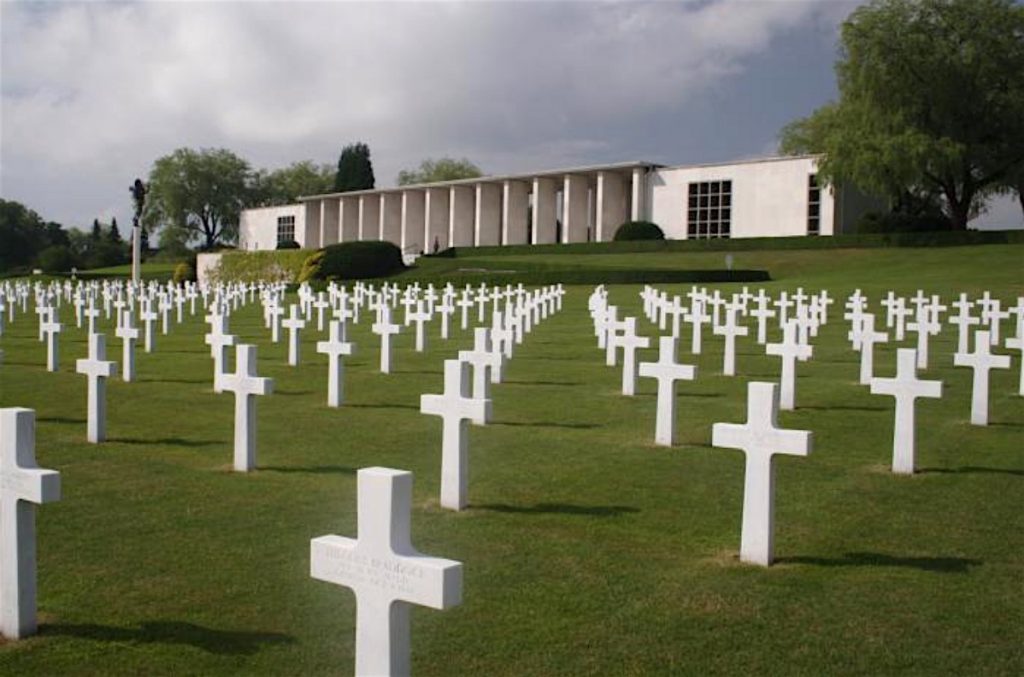
BANNERMAN, JR., FRANK WILSON (1924-1944). Private first class, Army Air Force. As per an article about his death in an unidentified local newspaper, Bannerman was born in Brooklyn and was the only child of Frank and Florence Bannerman; however, his Find A Grave page indicates that he had a younger sister, Ethel Mae. His father was a bus driver for the Green Bus Lines and was a veteran of the 106th Infantry in World War I where he served overseas. That article notes that Frank Jr. lived most of his life in Queens, was a graduate of P.S. 134 in Bellerose and Andrew Jackson High School in St. Albans, Queens, in 1943. Two months after his graduation, he joined the Army Air Force.
Bannerman died in a plane crash on October 29, 1944, while training in Avon Park Lakes in Highlands County, Florida, just a few days short of his 20th birthday. The aforementioned newspaper article reports that he was one of a crew of ten who took off in a B-17 Flying Fortress. Shortly after take-off, at an altitude of 2,500 feet, one of the plane’s engines caught fire and an explosion ensued. The plane then nose-dived near the flying field. Bannerman and the lone survivor were thrown from the plane; the others were trapped in the nose of the aircraft.
He last lived at 110-22 213th Street in Queens Village. His funeral was held at the Stutzmann Funeral Home at 224-39 Jamaica Avenue in Queens Village. His gravestone bears the inscription, PFC, US ARMY AIR FORCES WORLD WAR II. Section 63, lot 31132.
BARBARINO, DOMINICK (or DOMENICO, DOMENICK) JOHN (1921-1993). Sergeant, United States Marines. Domenico Barbarino was born in Brooklyn. According to the 1920 federal census, recorded one year before Dominick’s birth, his parents, Sebastian, age 45, and Carmela Sicari, age 32, were living in a mortgaged home at 1278 East 10th Street in Brooklyn. There were also 12 other family members living at that address, including the couple’s five children, Sebastiana (Anna – born in 1906), Vincent (1908), Palma (1910), Virginia (1911), and Viola (1916.) Another child, Violante, was born in 1913 and died in 1914. Sebastian and Carmela were both born in Augusta, Italy, and Sebastian had immigrated to the United States in 1896, although 1899 appears in another record. Carmela immigrated in 1903. Carmela’s parents, who lived in the household, were also born in Italy and the family spoke Italian at home. Sebastian was a laborer in the shipping industry.
The 1925 New York State census shows Dominick’s parents residing at the same East 10th Street address in Brooklyn with their six children. Sebastiana (Anna), at 19, was an embroiderer and Vincent, 16, an automobile mechanic. Sebastian had been in the United States for 25 years and was naturalized in 1917. Also listed at the same address were Sebastian’s younger brother Frank, 27, and his wife, Annette, 19, both born in Italy. Both Sebastian and Frank were working with cement blocks. At the time of the 1930 federal census, the family was still living at the same address, in a house valued at $13,500. Census records show that Sebastian and Carmela were married at age 31 years and 16 years of age respectively. Neither parent was working, but Vincent was an electrician, Palma, a dressmaker, Virginia, a typist, and Dominick, at 8 years old, attended school. Sebastiana (Anna), the eldest child, was married to Salvatore Tringali and were the parents of two children. They were listed as renters at the same address.
According to the 1940 federal census, Dominick Barbarino was an 18-year-old student and had just completed three years of high school. Sebastian, at age 66, was an unemployed stevedore seeking work, while Carmela continued to tend to housework. Dominick’s brother, Vincent, was married and employed as a beautician; he was listed at living at the same address with his wife, Gertrude, and daughter, Joan.
Dominick Barbarino’s draft registration card was signed on February 16, 1942, in Brooklyn. He was 6′ tall and weighed 170 pounds, with a ruddy complexion, black hair, and brown eyes. Dominick noted that he sported a mustache as a distinguishing characteristic. His father, listed as Sebastine Barbarino, residing at 1278 East 10th Street, and unemployed, was his contact. Private first class Dominick Barbarino enlisted in the United States Marine Corps on March 2, 1942, and he was initially stationed at the Marine Corps Schools Detachment, Marine Barracks, Quantico, Virginia, according to muster rolls. He was then stationed with the Second Recruit Battalion, Recruit Depot, Marine Barracks, Parris Island, South Carolina. In January 1944, he was a corporal, stationed with Headquarters Company, Fifth Marine Division, Fleet Marine Force (Fmf), Camp J. H. Pendleton, Oceanside, California. On July 13, 1944, he was promoted to sergeant at the Marine base, Camp Pendelton, California, per The Brooklyn Daily Eagle. His unit was part of the 5th Marine Division.
Barbarino was wounded on February 22, 1945, and is listed among the Marine Corps casualties transported on the USS Hocking from Iwo Jima to the United States Marine Naval Hospital on Guam on February 27, 1945. Sergeant Barbarino received the Purple Heart.
According to the 1950 federal census, Barbarino had yet to marry and was a New York City patrolman. He continued to live with his parents, who were both naturalized citizens. Residing in the same house were Barbarino’s sister Virginia and her husband, John Tisaranni, with their son James, as well as another sister, Palma, and her husband, Anthony Drago.
A marriage license was registered for Dominick Barbarino and Sheila Burke (recorded as Sheila S. Sosna Burke). It was Dominick’s first marriage and Sheila’s second. Sheila had married William H. Burke in 1947; they had a son, Lance Burke (Barbarino), born in 1951, but the couple divorced.
An October 11, 1955 New York Daily News article reported that simple assault charges were filed against three people for roughing up Patrolman Dominick Barbarino while he was issuing a parking summons. Barbarino appeared again in the Daily News in a November 18, 1955 article when his new $90 camel-hair coat was snatched from a coat tree. Patrolman Barbarino, stationed at the Sheepshead Bay precinct in Brooklyn, gave chase, firing warning shots in the air. The thief was apprehended, but the coat, unfortunately, was never recovered.
In 1956, Barbarino’s father, Sebastian Barbarino, passed away in Brooklyn at age 83. Patrolman Barbarino retired from the New York Police Department in 1958. Three children were born to him and his wife: sons Scott Barbarino, on June 27, 1958, and Gregg Barbarino, on January 26, 1961, and daughter Gina Barbarino, on December 2, 1962.
Barbarino entered politics in 1970, when he unsuccessfully ran in a primary race for the 11th United States Congressional District against Democratic Representative Frank Brasco, according to a May 5, 1970 New York Daily News article. Brasco’s margin of victory was 4 to 1 over Barbarino; Barbarino received 5,314 votes. Barbarino then challenged Brooklyn Democratic leader Meade Esposito in 1972, per a May 12, 1972 article in the New York Daily News. At the time, Barbarino was working as an insurance adjuster and was a progressive politician, seeking reform. He was a former member of Esposito’s political club in Canarsie and was a member of the Police Honor League. An article in The New York Times on June 10, 1872, which cites Barbarino’s challenge to Esposito, notes that Barbarino was opposed to the controversial Harbor Village middle-income housing development in Mill Basin. The next day, The Times reported that Esposito was challenging Barbarino’s petitions to be on the primary ballot. The Daily News reported on January 22, 1973 that New York City Council Member-at-Large Ruth Lerner appointed Barbarino as her campaign manager in her quest to be Brooklyn borough president.
Barbarino, who became a private investigator after leaving the police force, played a role in a conspiracy case that involved Frank Brasco, the man who defeated him in the aforementioned Congressional primary election and who was then a friend. On October 31, 1974, the Canarsie Courier, a local Brooklyn newspaper reported that Barbarino had conducted an extensive series of interviews concluding that the jury that had convicted Brasco of conspiracy had acted improperly. An article about Barbarino’s investigation had previously appeared in the Daily News on October 20 and noted that Brasco had been charged with taking a bribe in exchange for granting a lucrative Post Office contract to a Mafia-controlled trucking company. Jurors were charged with partying, not following orders to sequester and reading prejudicial news clippings about the trial. Although Barbarino was called to the stand at the court hearing on October 20, he refused to answer questions and pled the 5th Amendment. His 14-page affidavit about juror irregularities was admitted as evidence but the verdict convicting Brasco in July was not overturned. The Daily News subsequently reported on October 22 that the jurors were called back to court and that Barbarino admitted that he tape-recorded five jurors using an attaché-case device and a suction-cup recorder; only one juror gave permission to be recorded. That article noted that for his actions, Barbarino could be charged with obstruction of justice and perjury; that would be decided by a grand jury. The New York Times reported on October 22, that Brasco was sentenced to three months in prison and fined $10,000. Barbarino was also active in the Canarsie and Midwood communities and was a founder of the Midwood Civic Action Council.
Barbarino’s mother, Carmela, died in September 1985 in Brooklyn. Sheila Barbarino passed away on October 16, 1989, and was interred in Green-Wood. She was 64 years old and had been married to her husband for 34 years. An obituary in the October 13, 1993 New York Daily News announced Dominick Barbarino’s death on October 12, 1993. His children – Lance, Scott, Greg, and Gina Punzone – were listed in the obituary. Barbarino’s funeral was at St. Brendan’s Roman Catholic Church, in Brooklyn, and he is interred with his wife, Sheila. Section 183, lot 44641, grave 1.
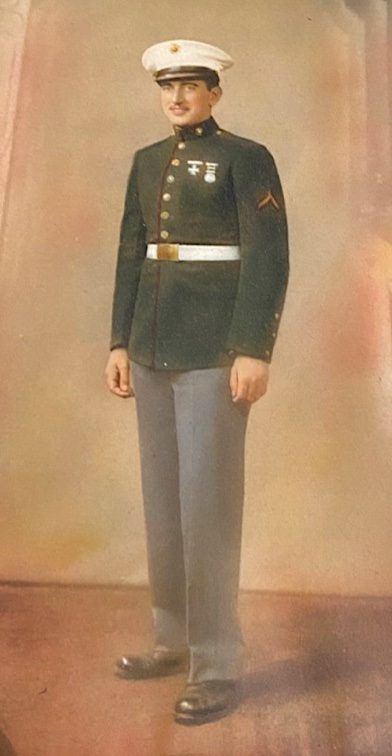


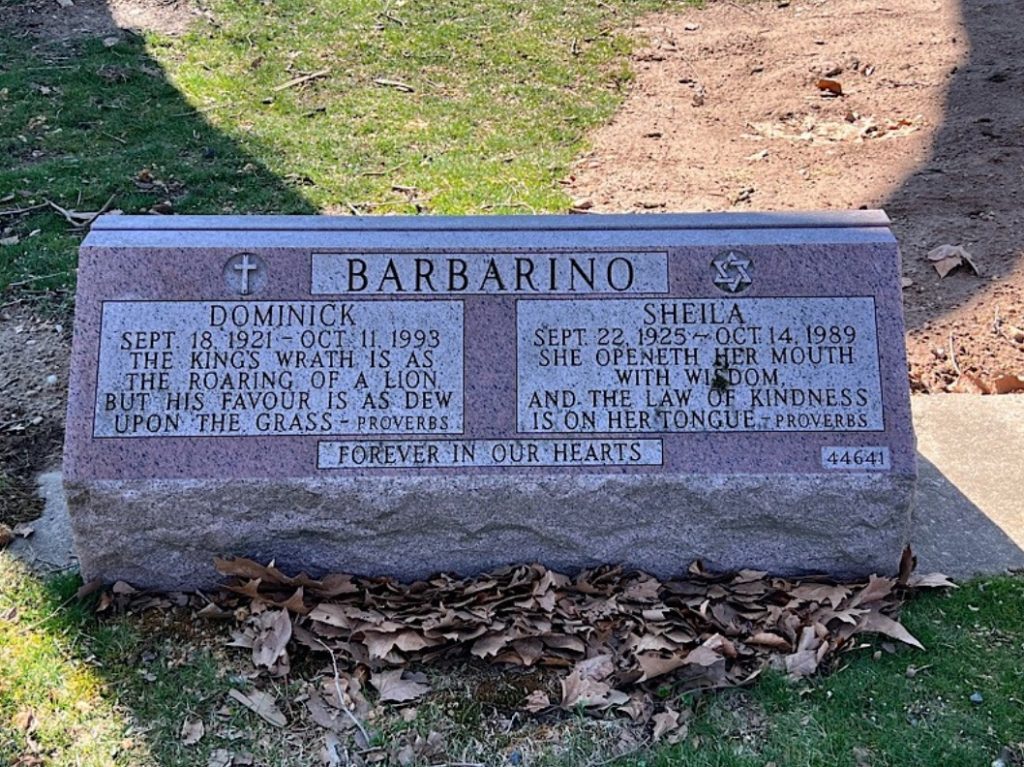
BASSO, ROCCO ANTHONY (1926-2014). Fireman first class, United States Navy. Rocco was born in Brooklyn to parents Nick and Julia Basso who had both immigrated from Italy in 1922. As per the 1930 census, the family lived at 898 New York Avenue in Brooklyn when Rocco was four years old. His father Nick was thirty, had become a naturalized citizen by this time, and owned an ice company, Basso Coal & Ice. Rocco’s mother Julia was twenty-seven years old.
In 1934, two days shy of his eighth birthday, a ship manifest shows Rocco, his brother Giacomo who was four and a half years old, and his mother Julia (listed as Guilia in these records), returning from Italy where they had travelled to visit Julia’s father. They sailed from Naples on October 2nd on the SS Rex, arriving in New York eight days later on October 10th with their final destination being their home, now at 3306 Tilden Avenue in Brooklyn. Rex, the ocean liner they had traveled on was a highly publicized and celebrated in Italy. It was the largest Italian ocean liner with the record highest average speed for crossing the Atlantic Ocean and it continued to make regular voyages even after the outbreak of the World War II before being laid up for safe-keeping. In 1944, this ship was bombed by the Allied Forces, burning for days before sinking.
The 1940 census shows Nick Basso was now forty-two years old and his wife Julia was thirty-eight. Rocco was thirteen, his brother, now listed as Jack, was ten and they had a younger sister named Albina who was three years old.
In 1942, Rocco’s father filed a World War II registration card but did not serve. His registration card shows his full first name as Nicholas, that he was forty-two years old and born in Bari, Italy. It indicates that he was self-employed and his home address, still at Tilden Avenue, was listed as his place of employment. His wife Julia was listed as his contact.
In 1944, on his eighteenth birthday, according to the registration card, Rocco Basso enlisted. The document shows that he was now living at 202 Foster Ave in Brooklyn, was a student, and his father was his contact. Basso was described as white with a light complexion, brown hair and brown eyes, 5′ 8″ in height and 156 pounds. Based on the Navy’s muster rolls, it appears that Basso spent time at Camp Elliot in San Diego, California, which was used by the Marines and then the Navy as a training and redistribution center. This was also the same camp that trained the famous Navajo code talkers.
In October of 1945, after the official end of World War II, as per Navy records, Basso served as F2c or fireman 2nd class on the Tulagi CVE-72, an escort aircraft carrier. Muster rolls from April 1946 show Basso continued his service. Although direct information is not available, based on the timeline of these records and those available on the Tulagi, it is most likely that Basso’s time in the Naval service took him from San Diego to Hawaii and then Samar, Philippines. In 1945, at Samar, the Philippines’ third largest island, the Tulagi loaded planes for transportation back to the United States before reaching Pearl Harbor in October. It returned to San Diego in January the following year and reported to the 19th Fleet at Port Angeles, Washington for deactivation the next month. In July of 1946, Basso was promoted to F1c or fireman 1st class and served on LST 1144, a landing ship; notes in the records indicate a separation from Naval service at this time. Firemen in the Navy performed engineering watches and did maintenance repairs.
Diane Raudino, Basso’s daughter, said of him:
He was an amazing father and he loved serving his country. Times were so different back then. He would tell us his silliest stories of peeling potatoes and working on deck among all his other duties. He would write home every day telling his parents what he did that day and that he was safe because there were times when they got a little scary.
In 1955, as we learn from Basso’s daughter, he married Mamie who went by the name May, in Brooklyn. They had three children: Richard, Jack and Diane. Basso was survived by his wife, children, son-in law Anthony Raudino, daughter-in-law Andrea, sister Albina, granddaughters Sara and Alexis, and a great-grandson Nicholas. Section 133, lot 39388, grave 1.
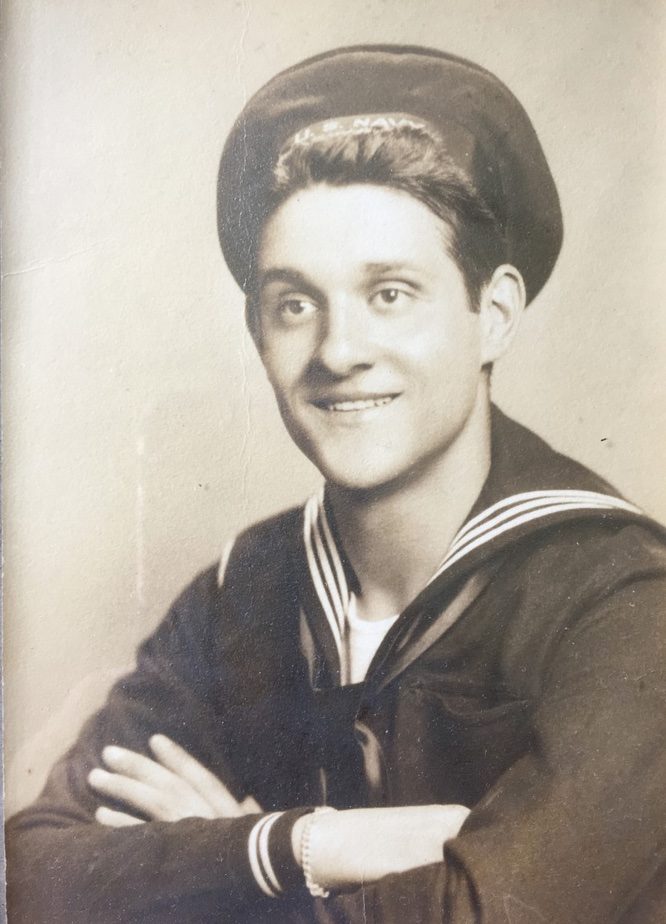

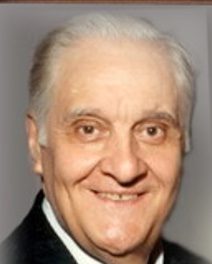
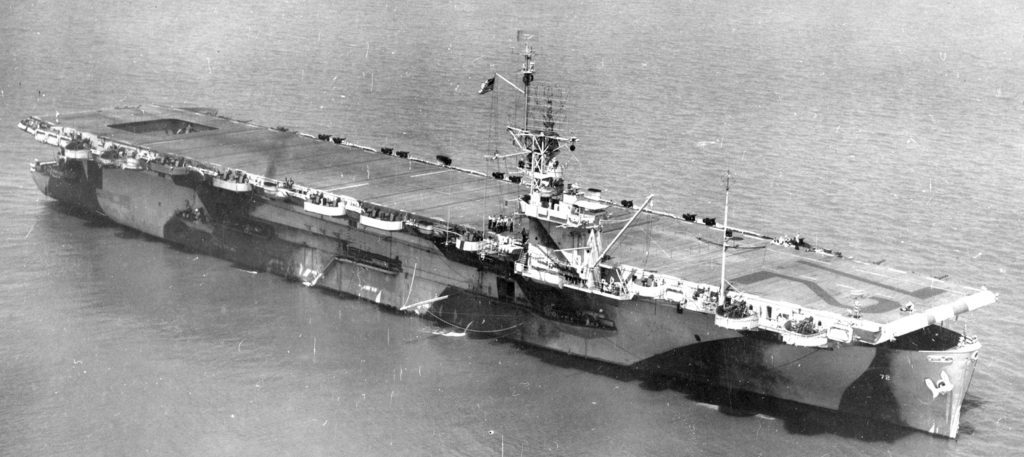
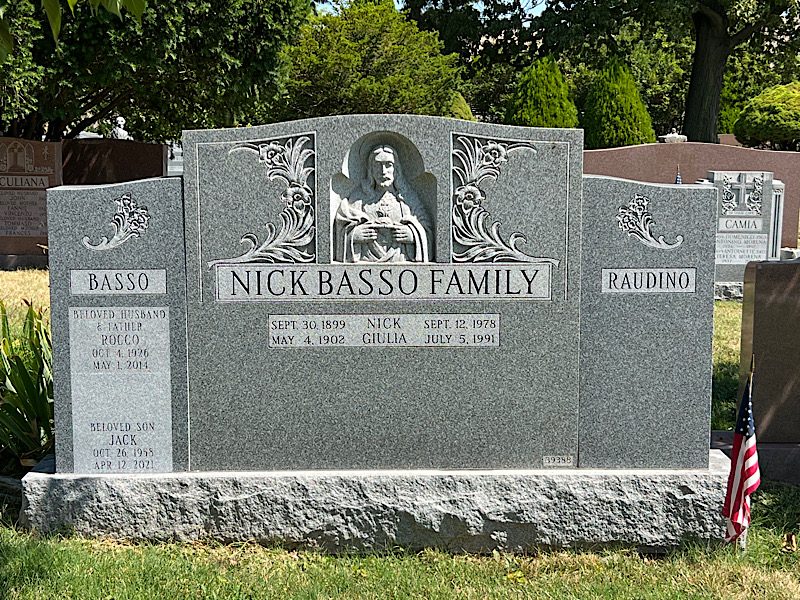
BATOS (or BATOUDAKIS), NICHOLAS (1918-2012). Captain, United States Army. Nicholas Batoudakis was born in Chicopee, Massachusetts on May 11, 1918, but later changed his surname to Batos. Per the 1920 federal census, his parents, Harold and Helen, were Greek immigrants and lived on Chicopee Street in Hampden, Massachusetts. His father had become a naturalized citizen after living in the United States for ten years and worked, on his own account, as a restaurant proprietor. Nicholas’ paternal grandfather (also named Nicholas) lived with the family, as did Nicholas’s sister Eva. According to the 1930 federal census, the family was still living in Hampden, his father owned a retail grocery, and there were two younger brothers, Stephen and Theodore.
By 1940, as shown in the federal census of that year, the Batoudakis family had moved to Brooklyn, living on Flatbush Avenue. Nicholas had graduated high school and worked as a waiter. His father and younger brother Theodore worked as attendants at a billiards academy. By the time Nicholas registered for the draft, in October 1940, he was working in Manhattan at the Shelton Hotel, one of the first “skyscraper” residential hotels, and was living on his own on West 136th Street in Manhattan.
Nicholas enlisted in the Army on April 15, 1941. He listed his occupation at that time as a waiter. According to the registrar’s report, he was 6′ tall and 190 pounds, with brown eyes, black hair, and a light complexion. He served in the Army in the Pacific under his birth name of Batoudakis before legally changing it.
On March 1, 1943, Nicholas married Mary Glacous. They had two children, Mary Ann and Nicholas, and four grandchildren.
Batos was mentioned and quoted in several articles in the New York Times over the years, including in 1972, when he was the managing director of Scandia, a popular seafood buffet restaurant in the Piccadilly Hotel on West 45th Street in Manhattan. Dinner there was $6.95:
Nicholas Batos, a hearty man who is Scandia’s managing director, says the average diner doesn’t overdo it on seafood. “Thank God,” he says, explaining that lobster went as high as $3.40 a pound this year and that large Liberian shrimp are $2.25 a pound. But he does recall the party of three who managed to tuck away 33 lobster halves. “If they were all like that, we’d be out of business.”
Batos died on March 3, 2012. Section 61, lot 44703, grave 72.
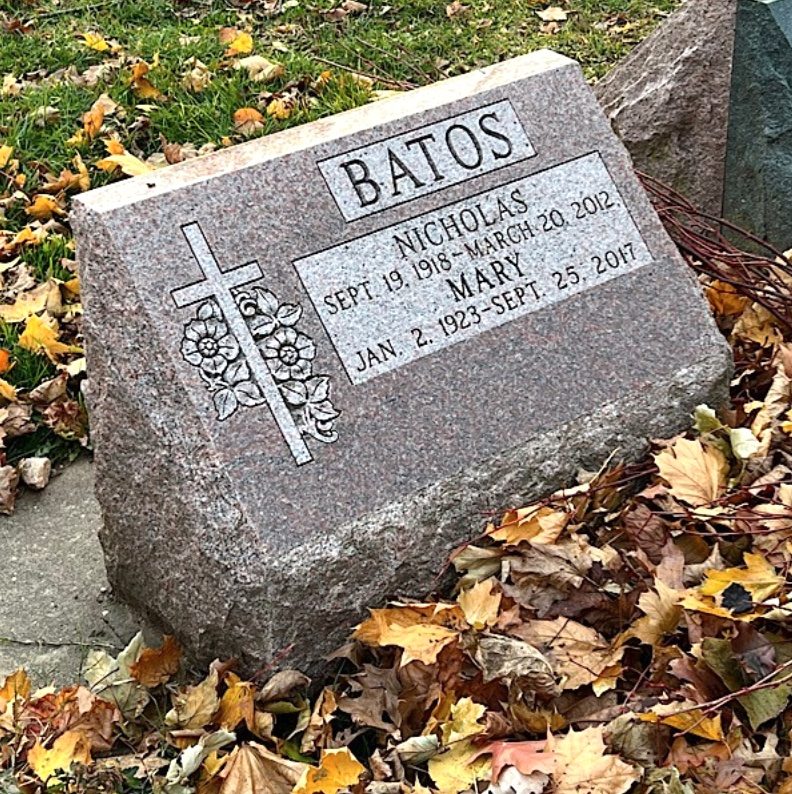
BATTAGLIA, BIAGIO (1909-1991). Lieutenant commander, United States Navy. Biagio Battaglia was born in Manhattan to Salvatore and Frances Battaglia, both natives of Italy. According to the 1915 New York State census, the family included an older half-brother, Phillip Coniglio; younger siblings Fanny and Sadie; Salvatore’s brother Joseph and Joseph’s wife, Angelina; and Frances’s mother. By 1920, according to that year’s federal census, the family, now with the addition of Biagio’s four-year-old sister Mary, still lived in Manhattan, on Monroe Street. Salvatore and stepson Phillip worked as office “boys,” while the now-widowed (and father of a small daughter) brother, Joseph, worked in a barber shop. Frances worked in a factory.
By 1925, the New York State census recorded the family living on 60th Street in Brooklyn. Salvatore was working for the Department of Street Cleaning, forerunner of the New York Sanitation Department. Biagio Battaglia was a student at New Utrecht High School. He went on to Columbia University, then to Columbia College of Physicians and Surgeons, gaining his medical degree in 1933.
In May, 1934, Battaglia married Evangeline Villios in Brooklyn. By 1940, according to the federal census of that year, the couple lived on West 6th Street with their three-year-old daughter, Frances. Battaglia had his own medical practice and also worked part time for the Board of Health. The census worker recorded that he worked 52 weeks in that year.
In October, 1940, 31-year-old Biagio registered for the draft. His registration card describes him as 5′ 7″ tall, 160 pounds, with a ruddy complexion, hazel eyes, and black hair. He did not enter the service until January, 1944, according to government records, enlisting as an officer in the Navy.
Battaglia served on the USS Jason, a repair ship newly commissioned in June 1944. Jason spent the last year of the war in the island groups of the western Pacific Ocean as a “floating shipyard,” servicing and repairing the ships of the Pacific Fleet as they fought their way toward Japan. After Japan’s surrender, the Jason sailed to Korea with the occupation forces of the 7th Fleet, and then to Tsingtao, China, not returning to California until March, 1946. Battaglia was discharged from the Navy in July 1946 with the rank of lieutenant commander, but he remained in the Navy Reserve until 1954.
Upon returning to his family in Brooklyn in 1946, Battaglia resumed his medical practice, specializing in internal medicine and pulmonary diseases. Over the next decades, according to a Columbia University database, he served New York City as a medical officer of the New York Fire Department; as an officer of the Brooklyn Lung Association; as an attending physician at Brooklyn Hospital’s chest clinic, Victory Memorial VA, and Kings County Hospital; and as a clinical associate professor at Downstate Medical Center. His obituary notes that he was “instrumental in introducing fire-retardant uniforms to the Fire Department in the 1970s.”
In an article published in the 1980s, Dr. Battaglia reminisced about his wartime experience aboard the Jason. He told the story of arriving at Okinawa (after the Japanese retreat from the island), and being told that the ship was carrying “the most awesome bomb created by man”—the atomic bomb that would soon end the war. His shipmate was nervous, because their battle station was just above the ship’s ammunition store and Japanese kamikaze pilots were still attacking and terrorizing the fleet. Then, wrote Dr. Battaglia, on the same day that he and his friend disembarked the ship, a kamikaze plane tore through their sleeping quarters on Jason, killing some of their fellow officers. A few days later, the atomic bomb was dropped on Hiroshima, and the war would end.
Dr. Battaglia died at the age of 81. Section 71, lot 44605, grave 313.

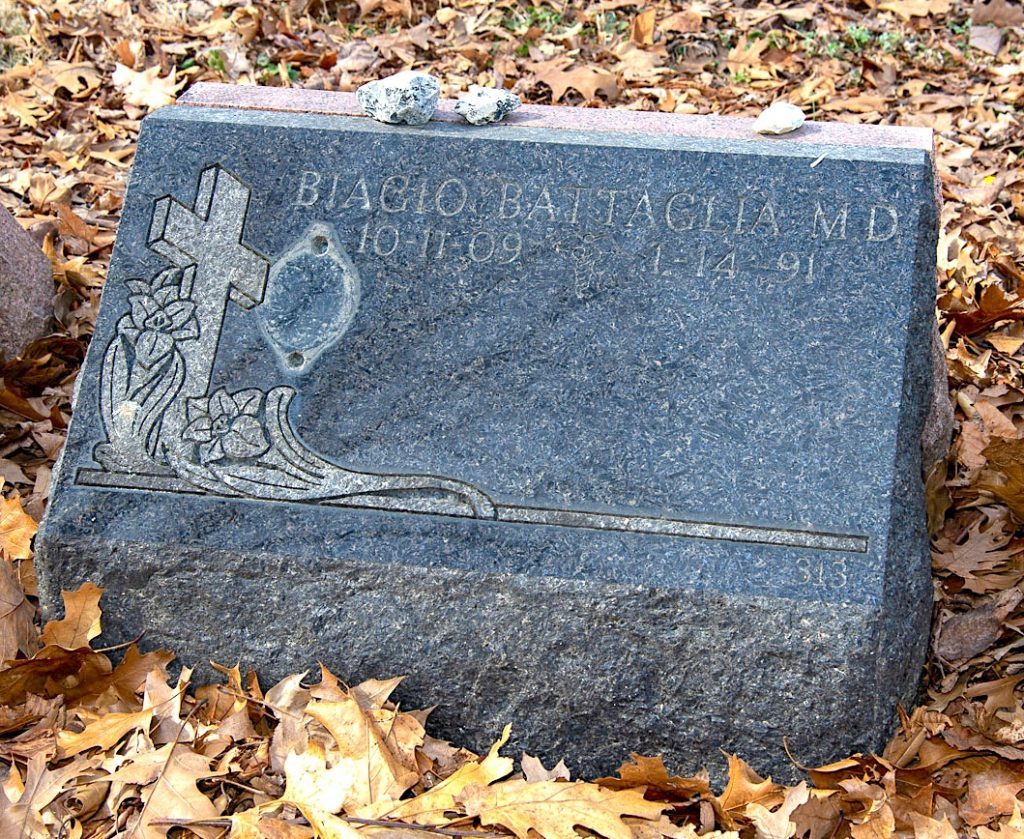
BAUDOUINE, JR., CHARLES ALFRED (1918-2010). Staff sergeant, United States Army. Charles Alfred Baudouine Jr. was born in Larchmont, New York, to Charles Alfred Baudouine and Ruth Leon Baudouine, who had married when they were both 23 years old. Charles was their only child. The Baudouine family was of French Huguenot descent, and the first Charles A. Baudouine, born in 1808, was a famous and wealthy cabinetmaker in New York.
Tragically, Charles’s mother died at 35 years of age, when Charles was only 11 years old. His father was a real estate broker, and, as shown in the 1930 federal census, the family was living in Mamaroneck, New York, where they owned their home and had a radio set. At that time, Charles’ mother’s sister, Virginia Leon, lived with them, as did one servant.
Charles graduated from Mamaroneck High School in 1938, with social studies as his course of study. In 1940, according to his draft registration card he was living in Larchmont and working at the Continental Can Company at 100 East 42nd Street New York City. He listed his aunt as his contact person. At that time, he was 5′ 10″ tall and weighed 146 pounds.
He enlisted on March 18, 1941, at Jamaica, New York. At that time, he was working as a post office clerk. The Daily Times, a local newspaper, listed him as part of a group of young men to depart on that date to fill the second March quota of the Scarsdale-Larchmont Draft Board No. 743. He achieved the rank of staff sergeant in the Army. In 1944, while still in service, he was hospitalized for a streptococcal sore throat and a skin abscess.
Baudouine married Joan E. Crumm of New Rochelle, New York, on May 9, 1953, at St. Patrick’s Cathedral in New York City, and they had three children, Karen, Laurie, and Jeffrey. Charles lived the rest of his life in Mamaroneck. He was buried in the Baudouine family plot in Green-Wood. Section 14, lot 11608.
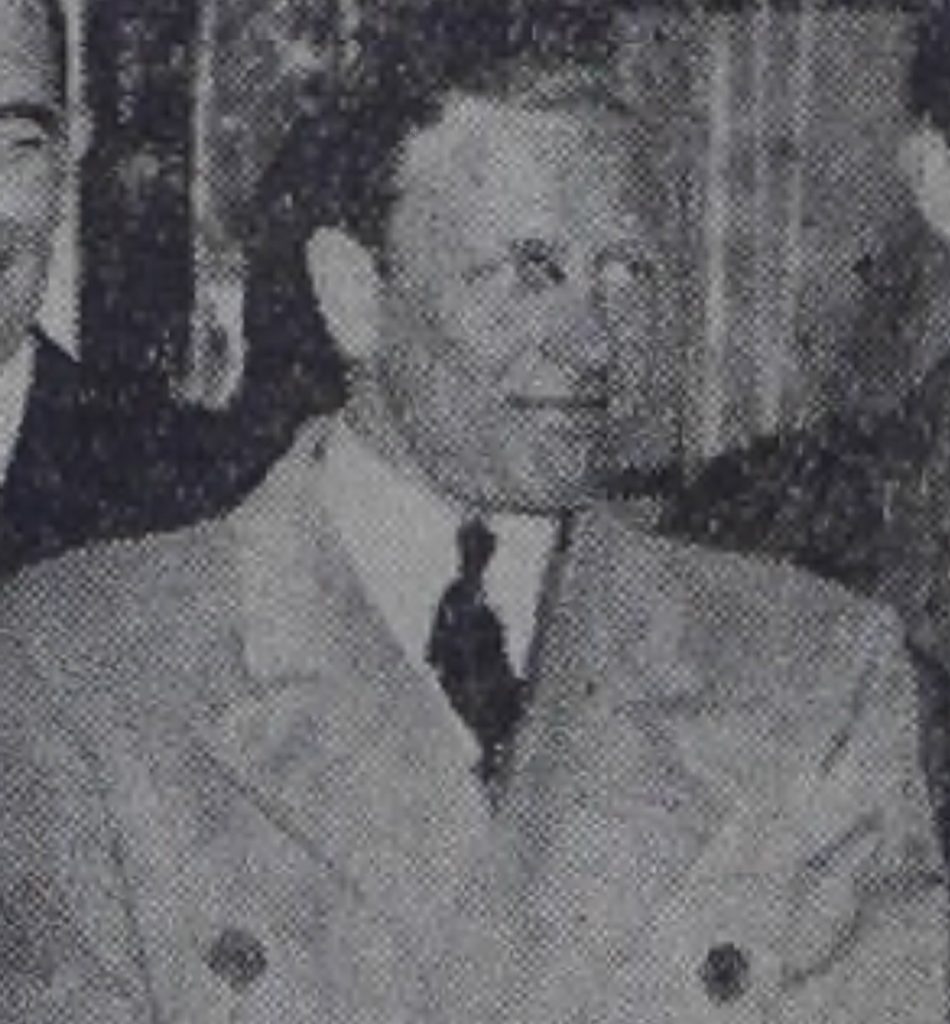
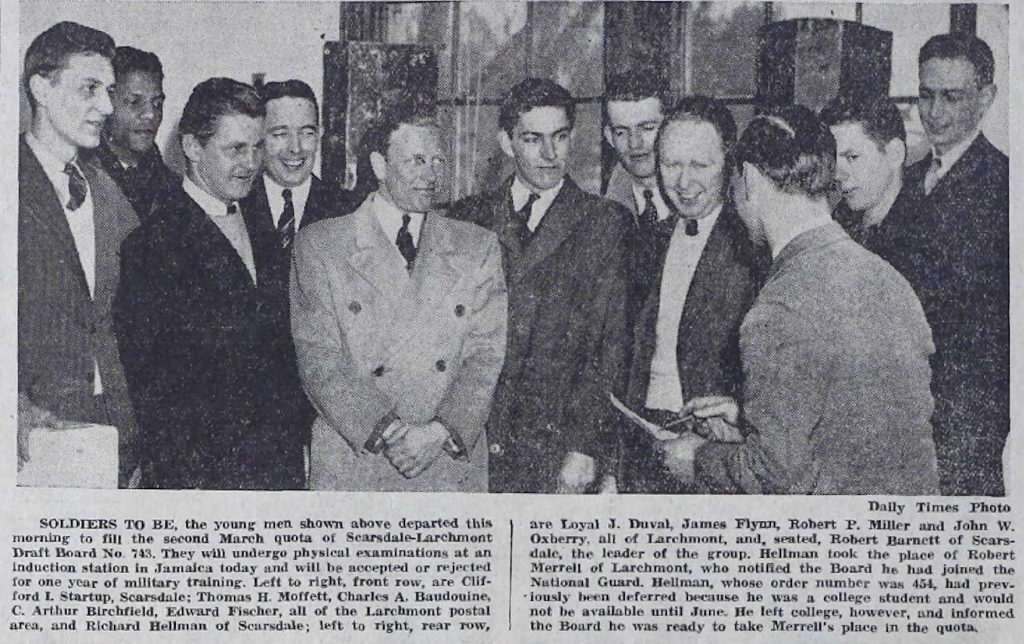
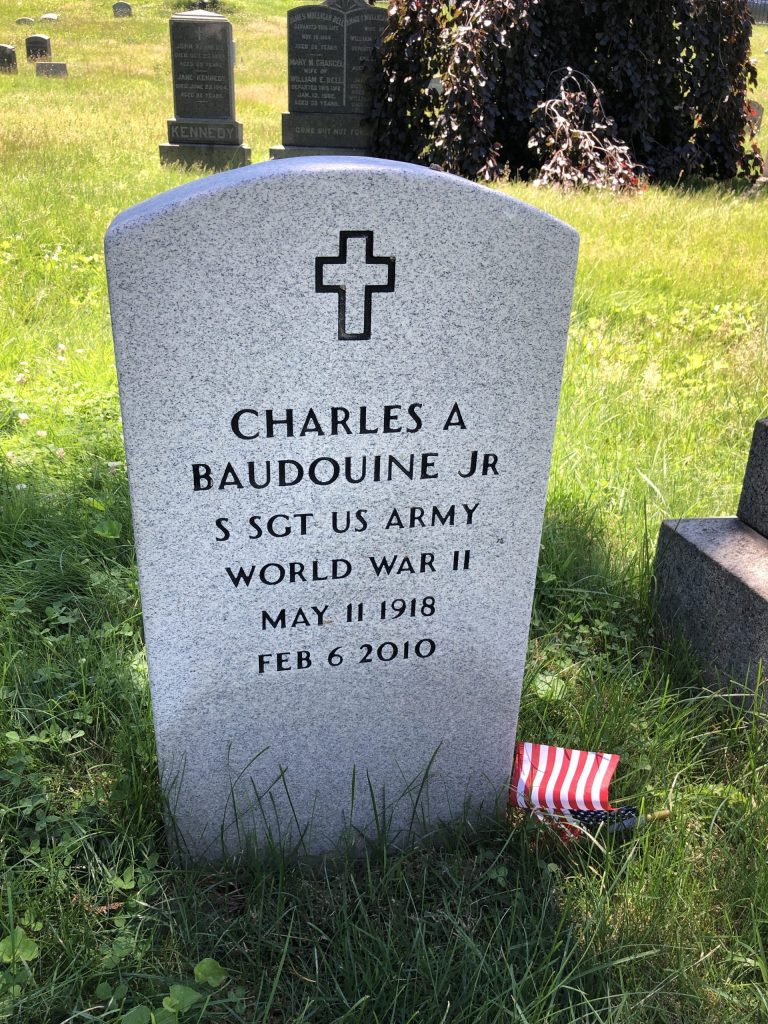
BELL, JR., HIRAM LEWIS (1924-2012). Supply staff sergeant, United States Army. Hiram Lewis Bell Jr., known in his youth as “Lewis,” was born in Charleston, South Carolina. According to the 1930 and 1940 United States census records, he resided in Charleston, with his father, Hiram Bell (born 1880), mother, Louise D. Purvis (born 1894), and younger brother, James A. Bell. As per the Bell Family papers at the Avery Research Center, the Bell family residence at 2 Green Street Charleston, South Carolina, was purchased by Bell’s family in 1844 and was sold to the College of Charleston in 1971; it is considered a historic property by the City of Charleston.
Bell attended Avery Normal Institute, the first accredited secondary school for African Americans in Charleston. He competed four years of high school. While he was in school, he worked for his father’s business as a brick mason, stonemason, and tile setter.
In 1942, while a senior in high school, Bell registered for the draft. On June 26, 1943, he enlisted in the United States Army at Fort Jackson in Columbia, South Carolina. According to Bell’s World War II Army enlistment record, he was single and held the rank of private. During his service in World War II, Bell’s highest rank earned was supply staff sergeant. He served in the South Pacific, specifically the Philippines and New Guinea.
After returning from the war, Bell used his G.I. benefits to enroll at Lincoln University, the nation’s first degree-granting historically Black college and university, in Pennsylvania. There he obtained a Bachelor of Arts degree. Bell was initiated into the Beta Kappa Chi National Honorary Scientific Society in 1949 and has a certificate of initiation into the Alpha Phi Alpha Fraternity.
After graduating Lincoln University, Bell pursued a career in medicine, applying in 1950 to the Medical College of the State of Carolina. According to newspaper reports of October 1950, after applying to the medical college, a cross was burned in front of his home on Green Street in Charleston. Bell’s mother, Louise, believed it was the work of the Ku Klux Klan and was initiated as result of Bell’s application for enrollment to the medical program. Despite experiencing such treatment, Bell persisted in his education. In spring of 1955, he earned a Doctor of Medicine degree from Meharry Medical College in Nashville, Tennessee, one of the nation’s oldest and largest historically Black academic health science educational institutions.
While in his third year of medical college, Bell married Mae Boone of North Carolina, whom he met while taking a undergraduate summer course at Hampton University. They married on September 19, 1953 at the Abyssinian Baptist Church in New York City. The couple had two children, Hiram III and Brian.
After obtaining his medical degree, Bell and his wife resided in Brooklyn, New York. He remained active in his university alumni groups, serving as an officer of the Lincoln University graduates of Brooklyn and Long Island. In 1959, Bell joined the other officers in hosting Commissioner John A. Davis of the State Commission against Discrimination.
As a physician, Bell interned at Kings County Hospital in Brooklyn and, later, completed his residency at the Department of Veterans Affairs Hospital in Manhattan. After completing his residency, Bell accepted a permanent position at the VA Hospital, working there for 36 years, in which he held various positions, including acting director of admitting. As per his daughter-in-law, Donna Grant-Bell, he also had an internal medicine practice in Bedford-Stuyvesant, Brooklyn.
During the last 21 years of Bell’s life, he battled various health conditions. Dr. Bell died in 2012 at the age of 88. His daughter-in-law notes that his widow, Mae Bell, lives in Crown Heights, Brooklyn and, in 2021, is 98 years old. Section 51, lot 45447.
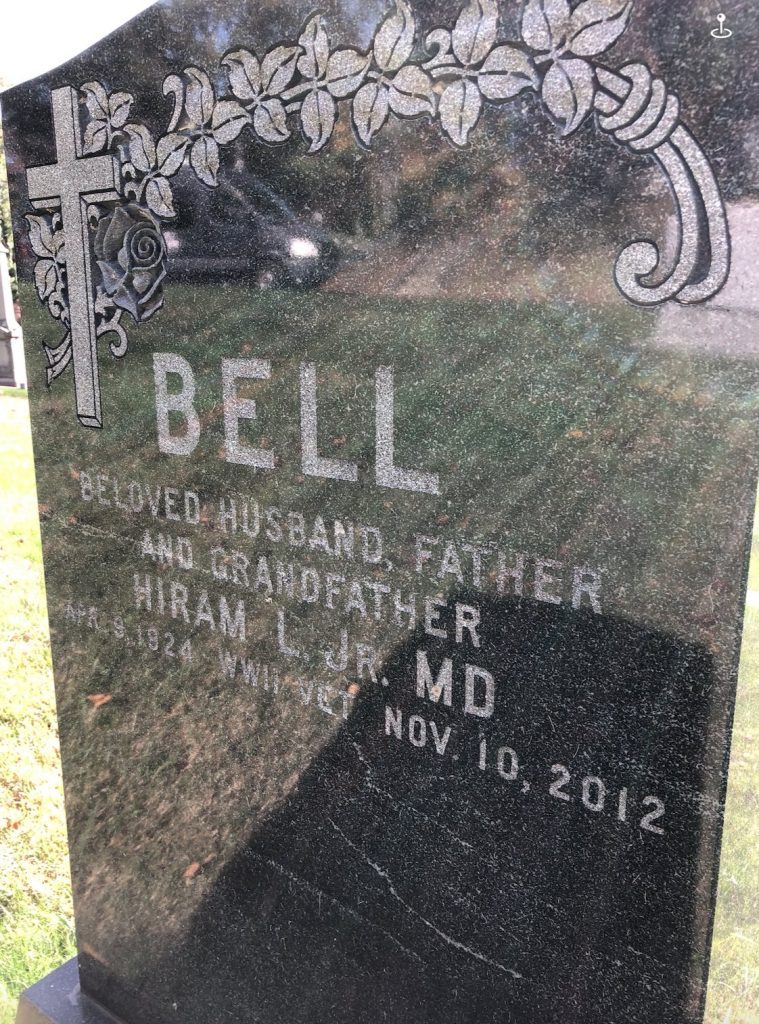
BELLI, ALBERT (1910-1980). Carpenter second class, United States Navy. As per his father’s Petition for Naturalization, Albert was born on June 26, 1910. Albert’s parents, Giulio and Concetta (Vinci), emigrated from Italy. According to his father’s United States, state and federal naturalization records, Giulio was born in Melazzo, Italy. He departed Italy from Naples and arrived in New York on June 3, 1904. The Certificate and Record of Marriage for Albert’s parents documents they were married in Brooklyn on September 5, 1909 at St. Rocco’s Church. His father’s naturalization petition, dated December 16, 1915, records that Giulo was a barber and the family lived at 132 ½ 23rd Street. Albert’s father passed away in 1919. The June 3, 1924 issue of the Brooklyn Daily Eagle reports that his mother and Phillip Carbona of Scranton, Pennsylvania, obtained a marriage license. As per the 1925 New York census, fifteen-year-old Albert lived with his maternal grandparents, Thomas and Rose, on 23rd Street in Brooklyn. Albert worked at a box company and is erroneously listed as their nephew. The 1930 federal census documents that his grandfather was a machine assistant at a paper box manufacturer and Albert, now twenty years old, was a plasterer.
Belli’s World War II draft registration card notes that he was thirty years old and lists his aunt, Francesca Vinci, as next of kin. Originally, his listed address was 209 23rd Street, but it was subsequently updated to 1111 45th Street, Brooklyn. His employer was Herman Torjesen, located at 209 25th Street in Brooklyn. His registrar’s report describes him as 5′ 6″ and 155 pounds with brown eyes, brown hair, and light complexion. According to the Department of Veteran’s Affairs BIRLS (Beneficiary Identification and Records Locator Subsystem) Death File, Albert’s enlistment date was October 15, 1942. The World War II Navy muster rolls for the quarter ending March 31, 1943, records that he was on the USS Tuscaloosa. He was first received on that ship on December 16, 1942 with the rank of carpenter third class (CM3c). As per the muster roll of the USS Duffy (Destroyer Escort DE-27), Belli boarded the destroyer as a CM3c during the month of August, 1943. This roll designates Belli’s branch of service as USNR V6, most likely signifying the United States Naval Reserve, volunteer. Recorded on the January 12, 1944 muster roll for the Duffy, Belli’s rank was CM2c (carpenter, 2nd class).As stated on the February 29, 1944 USS Duffy Muster Roll, Albert was “tried by Deck Court Martial.” According to the Naval Reserve Midshipmen’s Schools manual, Seamanship:
A deck court may be convened by the Commanding Officer of a ship or naval station, or by any officer of the Navy or Marine Corps who is authorized to order a summary court-martial or a general court-martial. The purpose of a deck court is to try enlisted personnel for minor offenses which, however, warrant greater punishment than the Commanding Officer is empowered to impose…An enlisted man who is brought before a deck court for trial must signify his willingness to be tried by such court by signing a statement to that effect in the record. If he objects to being tried by deck court, he is ordered to be tried by summary or general court-martial. Usually, enlisted men do not object to trial by deck court because the limits of punishment awarded by such courts are less than those of higher tribunals.
In the case of Belli, there is no final documentation reporting the results of this court-martial. However, Belli did remain on the muster rolls of the USS Duffy, continuing his service until his transfer to San Francisco, California on September 7, 1945. As per the Veteran’s Affairs BIRLS Death File, he was discharged on September 17, 1945. Since Albert’s tour of duty on the USS Duffy ranged from August 5, 1943 to September 7, 1945, he most likely participated in the following events as outlined in the Naval History and Heritage Command website:
Duffy sailed from San Francisco 2 October 1943 escorting a convoy to Pearl Harbor where she joined in training exercises before joining the 5th Fleet. On 10 November she sailed in the screen for carriers bound for air strikes on Mille, Jaluit, and Makin in the Marshalls. A week later Duffy was detached to escort Neosho (AO-48) during the invasion of the Gilbert Islands, returning to Pearl Harbor 15 December.
Departing Pearl Harbor 22 January 1944 in the escort for an LST convoy, Duffy arrived off Kwajalein 2 February for the assault landings the next day. Two days later she sailed, escorting unladen transports to Funafuti, Ellice Islands, arriving 8 February. Duffy served on escort and patrol duty in the Solomons between 19 February and 28 September, then between Manus and Ulithi until 25 October, and through November in the Marianas. On 30 November she sailed from Saipan escorting a group of LSTs with men, supplies, and equipment, unloading at Leyte 6 to 13 December for the retaking of the Philippines. Protecting the convoy during unloading, Duffy scored several hits on an enemy plane which crashed on the beach during an air raid.
Returning to Saipan 27 December 1944, Duffy served on patrol and local escort duty in the Marianas and to Majuro until 27 May 1945. She covered air strikes on Maloelap, sailing close to the island to stand by for air-sea rescue work if necessary, and on the 29th fired a shore bombardment. Duffy continued to operate from Majuro, bombarding and waging psychological warfare against bypassed Japanese-held islands. On 14 June she took prisoner seven men of the cutoff garrison on Mille Atoll.
Duffy sailed from Kwajalein 13 July 1945 for the west coast, arriving at San Francisco 26 July. She was decommissioned there 9 November 1945 and sold 16 June 1947.
Duffy received two battle stars for World War II service.
Little is known of Albert’s life after the war. According to the Social Security Death Index and the Florida Death Index, Belli passed away in Hollywood, Florida. His obituary in the New York Daily News Death reports he was survived by his spouse, Angela. Section 135, lot 35094, grave FRC.
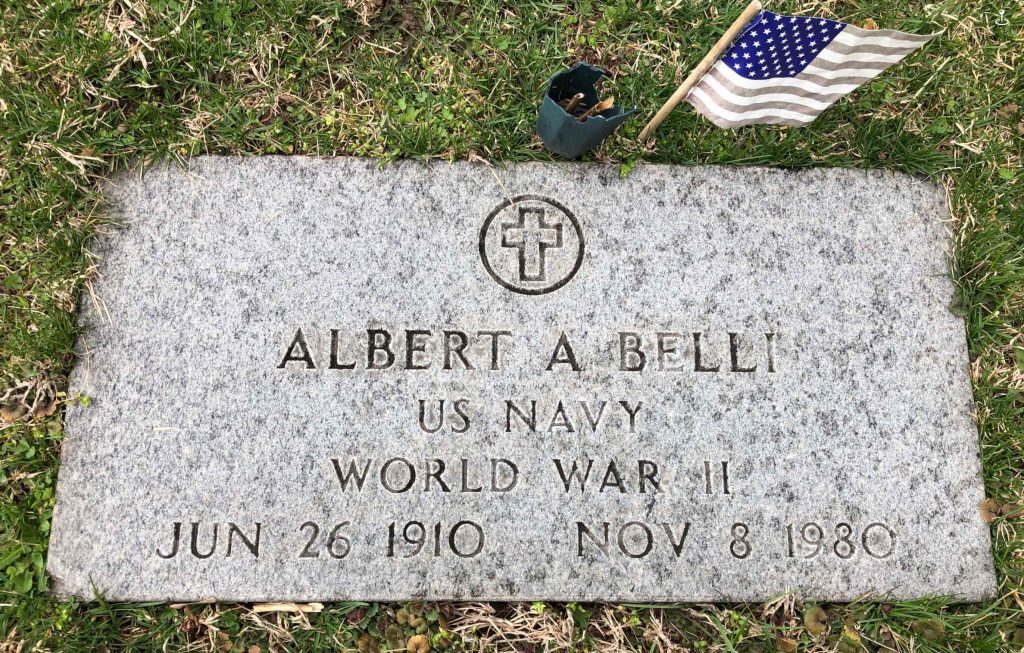
BERGE, JR., WILLIAM RICHARD (1922-1994). Machinist mate second class (AMM2c), United States Navy. Born on Long Island in Freeport, New York, his parents were also born in New York. The 1925 New York State census lists his father’s occupation as electrician machinist. In the 1930 census, his father is recorded as a proprietor of a chemical glass company. The 1940 federal census lists his father as a junior partner in a laboratory supplies company and a homeowner; his mother is listed as a housewife.
According to the 1940 census, William had completed the 11th grade. His draft registration card, dated June 30, 1942, records that he was 20 years old, lived with his parents in Freeport, and working at Grumman Aircraft in Bethpage, New York.
Based on Navy muster rolls, Berge sailed on the USS Matagorda, arriving in Casablanca, Morocco, on January 6, 1944. He was awarded the Navy Air Medal for participating in a successful attack on May 15, 1944. By August 22, 1944, he arrived back in New York from French Morocco. On December 4, 1944, he is listed as a passenger on the USS Humboldt and his final disposition on the muster roll is listed as Comairlant, FFA. Comairlant stands for Commander, Naval Air Force Atlantic. According to Wikipedia, Comairlant controlled all Navy aviation units in the Atlantic.
Additional records show Berge serving on the USS Air Ferry Squadron Four (VRF-4), NAS, NY (Naval Air Station, NY). The final record found saw him on the USS Air Ferry Squadron Three, on October 1, 1945. The mission of the Ferry Command was to ferry aircraft from factories to the fleet, according to Wikipedia. VRF-4 was established in December 1944 to specialize in ferrying newly completed seaplanes to the Navy. This is what Berge’s ships were doing.
Following the war, Berge returned to work at Grumman, now called Grumman Corporation, in Bethpage. He would work there for 40 years, retiring in 1988. In the Grumman Plane News, dated July 26, 1977, his work designation is “final assembly, structure.”
No records were found on his personal life. It does not appear that he ever married. His last known address was in Bay Shore on Long Island. Section 112, lot 17914.
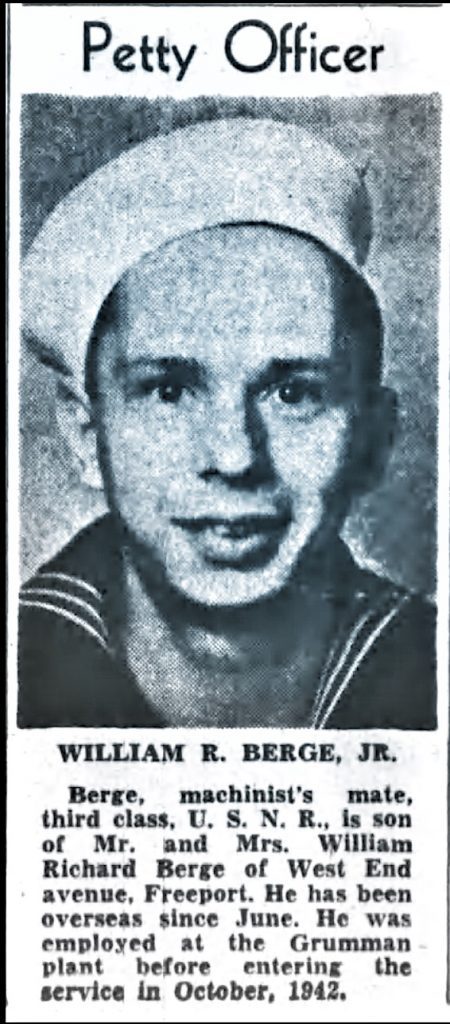
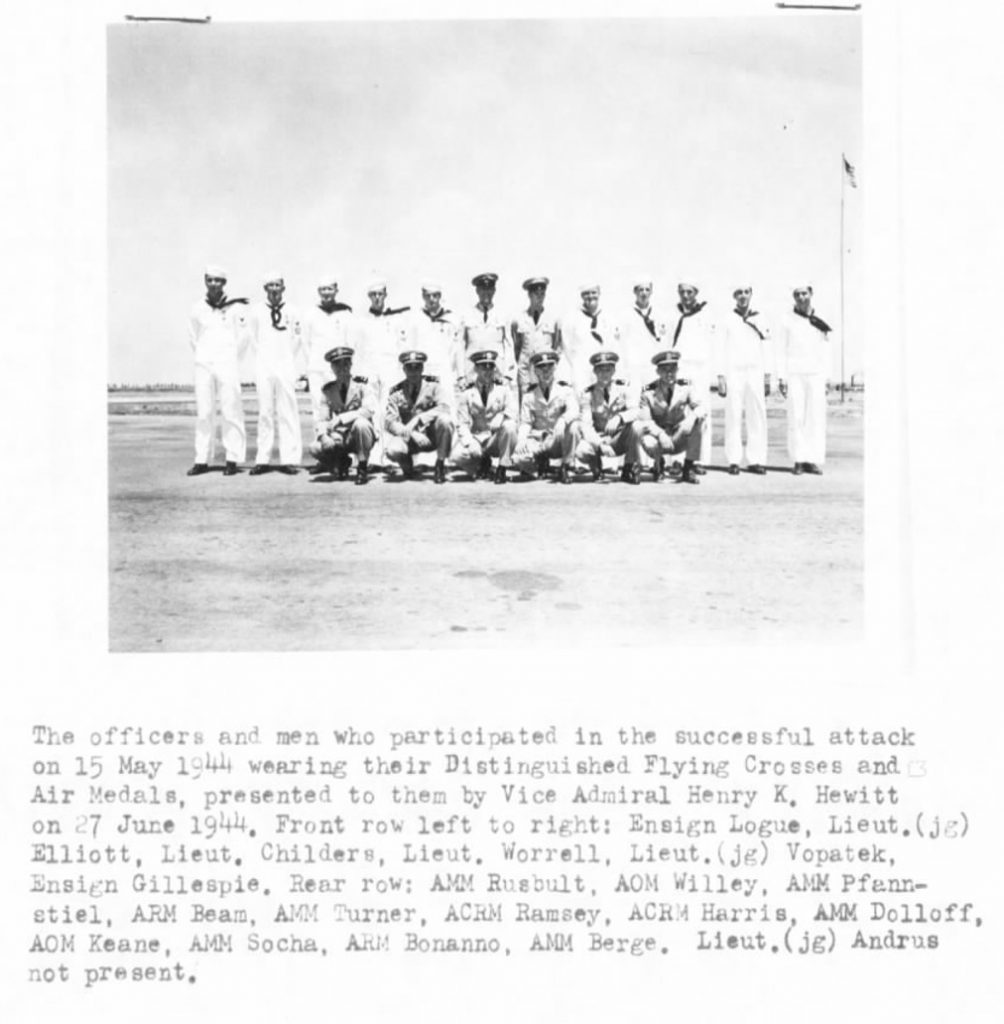
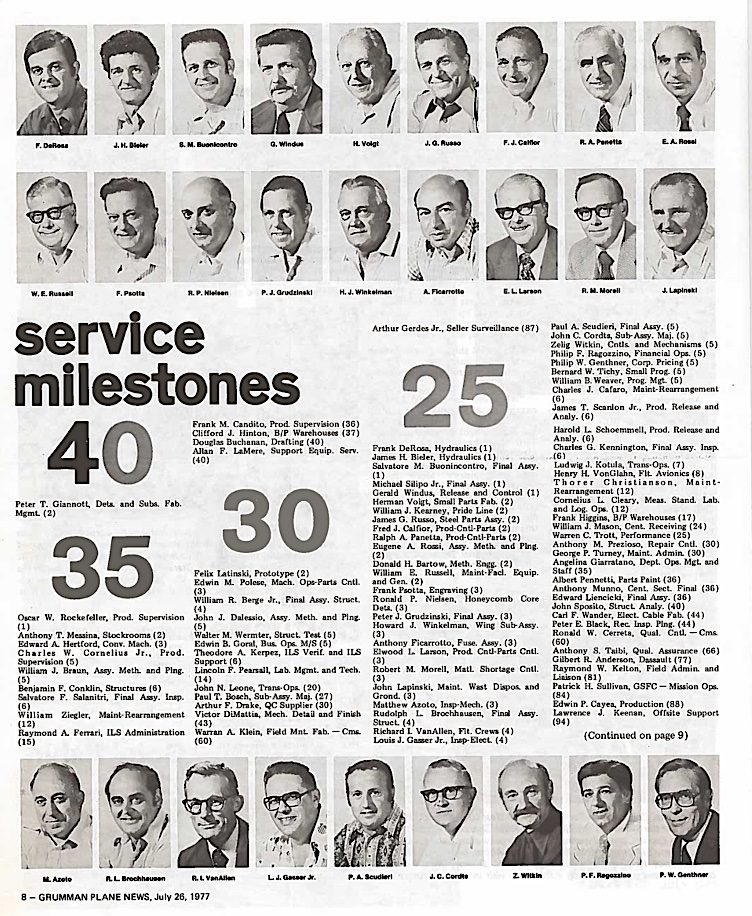
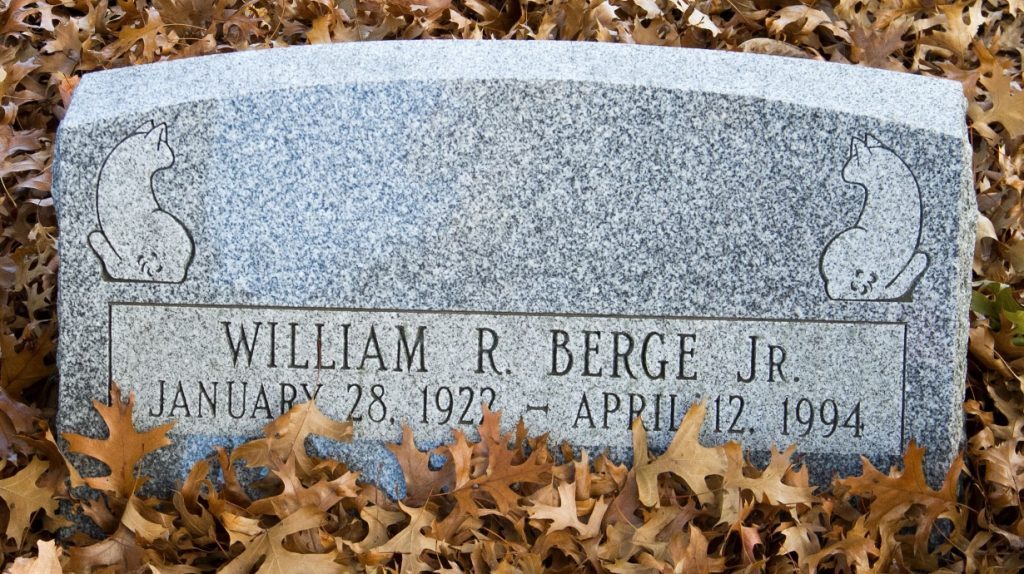
BERNSTEIN, FELIX I. (1923-2000). Pilot, United States Army Air Corps. A Brooklyn native, the 1930 census reports that he lived in the home of his uncle and aunt on Neptune Avenue, along with his four cousins, his parents, his three older siblings, and a boarder. Both of his parents were Russian immigrants; his father was a civil engineer. By 1940, when Felix was in his first year of college, his family had moved into their own place, still on Neptune Avenue, along with his grandmother.
Bernstein’s draft registration, dated June 30, 1942, has him living on Eastern Parkway with his mother, whom he listed as his emergency contact, and working for Delissey Machine & Tool in Manhattan. That document describes him as 6′ 1″ tall and 160 pounds. Felix married Natalie E. Guttelman in February, 1943. According to his obituary in The New York Times, he served as a pilot in the Army Air Corps during World War II.
After the war, Felix Bernstein (known as “Phillie”) and his wife Natalie (known as “Nikki”) raised two sons, Mitchell and Steve, and he continued to live on Neptune Avenue into his 70s. The couple was married for 57 years. His obituary, written by his family, notes that he loved to travel. They wrote, “He was a man of good nature, wit and charm, who truly cared for his fellow man.” He was survived by his widow, his sons and his sister. Section 61, lot 44703, grave 131.
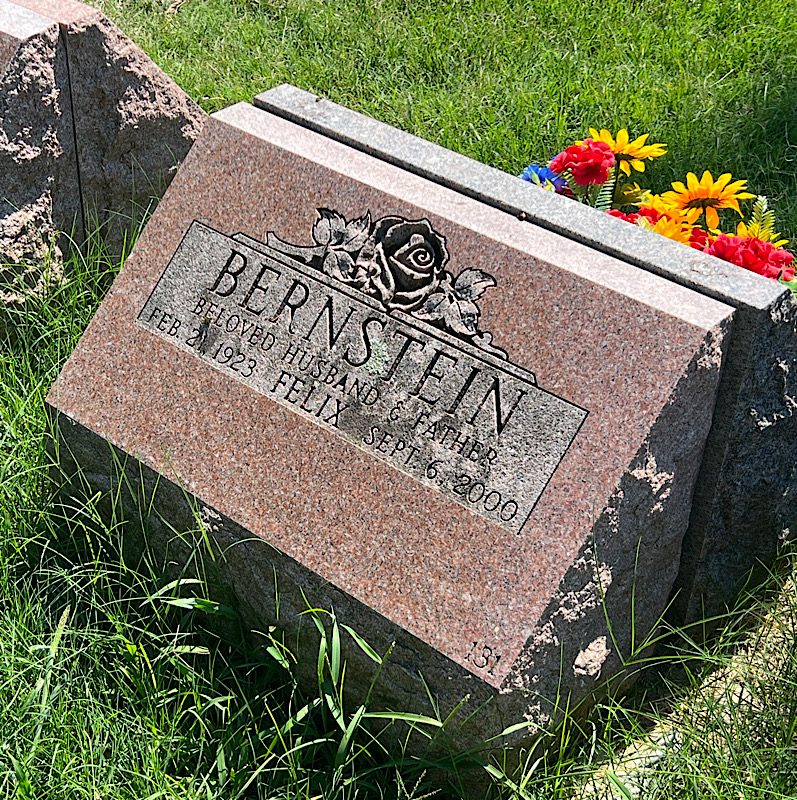
BERNSTEIN, SID (or SIDNEY) SIMCHA (1918-2013). Rank unknown, Anti-aircraft Battalion, United States Army. Music promoter, producer, and impresario, Sid Bernstein was born in Manhattan in 1918. According to his August 21, 2013 New York Times obituary, he rarely used his full given name, Sidney. He was adopted by Yiddish-speaking Russian immigrants who also called him Simcha, a Hebrew name meaning joy or gladness. The 1925 New York State census reports his family living at 302 116th Street in Manhattan. Israel Bernstein was the head of the family and, at age 35, was a tailor. His wife, Ida, was 33.
According to Find A Grave’s website and his August 22, 2013 obituary in The Guardian newspaper, Bernstein attended James Monroe High School in the East Bronx and worked in his father’s tailor shop, making deliveries. While studying journalism at Columbia University, he took a job at a Brooklyn ballroom that featured Latin music.
Bernstein registered for the draft on October 16, 1940, giving his date of birth as August 12, 1918, and his address as 1808 Marmion Avenue, Bronx, New York. His mother, at the same address, was his contact and his father, at the same address, was listed as his employer. Bernstein was 5′ 7″ tall and weighed 210 pounds. He had brown hair and eyes and a light complexion.
Bernstein’s New York Times and Guardian obituaries reveal that he joined the United States Army in 1943 and served in an anti-aircraft battalion in the Battle of the Bulge in Europe. He was also stationed in Britain during the war and, after the war, while stationed in France, he set up and ran a nightclub for American soldiers.
After demobilization, according to his newspaper obituaries, Bernstein returned to New York and the entertainment industry. He organized singles weekends at hotels in the Catskill Mountains, as well as weekly dances at the Tremont Terrace, a Bronx nightclub. He then changed its name to the Trocadero to better reflect the changing demographics of the neighborhood, hosting both Latin concerts and bar mitzvahs.
In the early 1950s, Bernstein joined General Artists Corporation (GAC), booking concerts for musical giants Tony Bennett, Judy Garland, Miles Davis, and Nina Simone. His concerts crossed many genres of music. With the rise in rock ‘n roll music, he started to work with GAC’s teenage singers, including Dion and Chubby Checker, and helped arrange rock ‘n roll shows with pioneer Alan Freed. As his career progressed, he promoted Ray Charles, the Drifters, and Bo Diddley for a show at the Brooklyn Paramount Theater, and oversaw performances by rhythm and blues performers, such as James Brown and Ruth Brown. He arranged a folk festival at Carnegie Hall with Mississippi John Hurt, Doc Watson, and Tom Paxton and a jazz concert with Duke Ellington, Louis Armstrong, and John Coltrane. In 1961 he took over the organization of the Newport Jazz Festival and included Bob Hope and Judy Garland on the bill. He showcased Judy Garland at Carnegie Hall in 1961 and Tony Bennett there in 1962.
In early 1963, after having presented a West Coast tour by Tito Puente, he began to read about a British group called the Beatles. Intrigued by stories of Beatlemania, but discouraged by his company’s representative in London, who insisted the Beatles were just a local phenomena, Bernstein nevertheless telephoned Brian Epstein, manager of the Beatles, in England, and offered to present the band in New York. Epstein, though concerned that the Beatles were not known in America, agreed to a contract, and Bernstein got Capital Records to invest in promoting their songs.
After the great and unexpected success of the Beatles at a sold-out Carnegie Hall in February 1964, Bernstein then presented the Rolling Stones, also at Carnegie Hall, and brought other British groups, such as the Kinks, the Animals, Herman’s Hermits, and the Moody Blues, to the United States. He arranged the 1965 and 1966 Beatles concerts at Shea Stadium and was the first to stage a rock concert at Madison Square Garden.
As the 1960s progressed, Bernstein managed the careers of the Rascals and Laura Nyro. He presented concerts by or arranged tours for Jimi Hendrix, Fleetwood Mac, Frank Sinatra, Melanie, Sly & the Family Stone, and Laura Branigan. In 1964, he brought many Israeli singers to the United States for their first major concerts. He co-produced the Winter and Summer Festivals for Peace in 1970 with Peter Yarrow and Phil Friedman, at Madison Square Garden and Shea Stadium. Among the artists were Jimi Hendrix, Janis Joplin, Peter, Paul, and Mary, Miles Davis, Paul Simon, Steppenwolf, CCR, Dionne Warwick, Herbie Hancock, and others. He arranged ABBA’s first American appearances. In 1972, he produced “Star-Spangled Women for McGovern-Shriver” with Shirley MacLaine. He promoted the United Kingdom’s Bay City Rollers tour in the United States in 1975.
In 1963, Bernstein married Geraldine Gale in New York. They had six children: sons Adam, Etienne, Beau, and Dylan; and daughters Casey Bernstein Deutsch and Denise Bernstein. United States Public Records Indices show that he was living at 1000 Park Avenue in Manhattan in 1986 and 355 East 72nd Street in Manhattan in 1995. He also had lived in New Rochelle, New York, and at 313 East 74th Street in Manhattan. He later resided in Virginia.
He was appointed cultural ambassador by the Liverpool councilors in the 1990s. The New York Times reported that his 2000 memoir, Not Just the Beatles . . ., written with Arthur Aaron, was republished in 2002 as “It’s Sid Bernstein Calling.” In 2010, he was the subject of a feature-length documentary film by Jason Ressler and Evan Strome, Sid Bernstein Presents . . . . At age 93, he recorded an album of his favorite show tunes, also called Sid Bernstein Presents . . . .
On August 21, 2013, Sid Bernstein died in his sleep at Lenox Hill Hospital in Manhattan. He was survived by his wife of more than 40 years, his children, and six grandchildren. His gravestone reads: “Sidney Simcha Bernstein – Family Friends – All for One, One for All” and, at the bottom, “Have an Egg Cream.” Section 45492, lot 36, grave PREM.
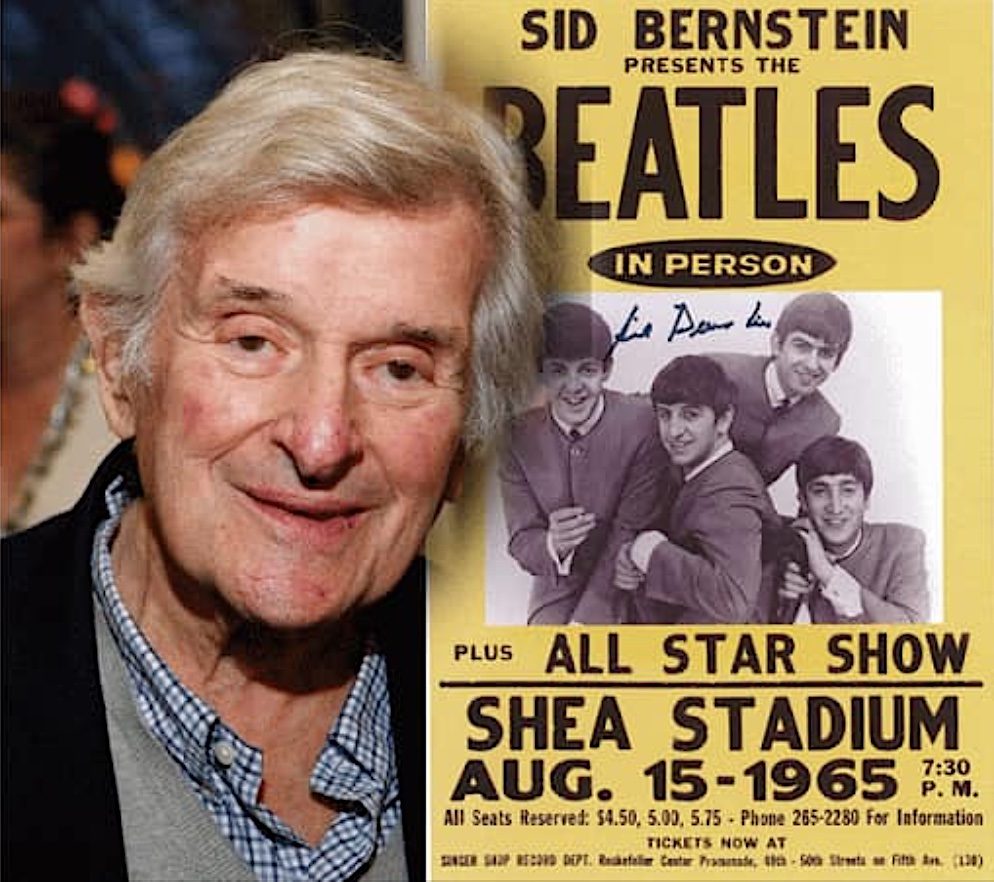

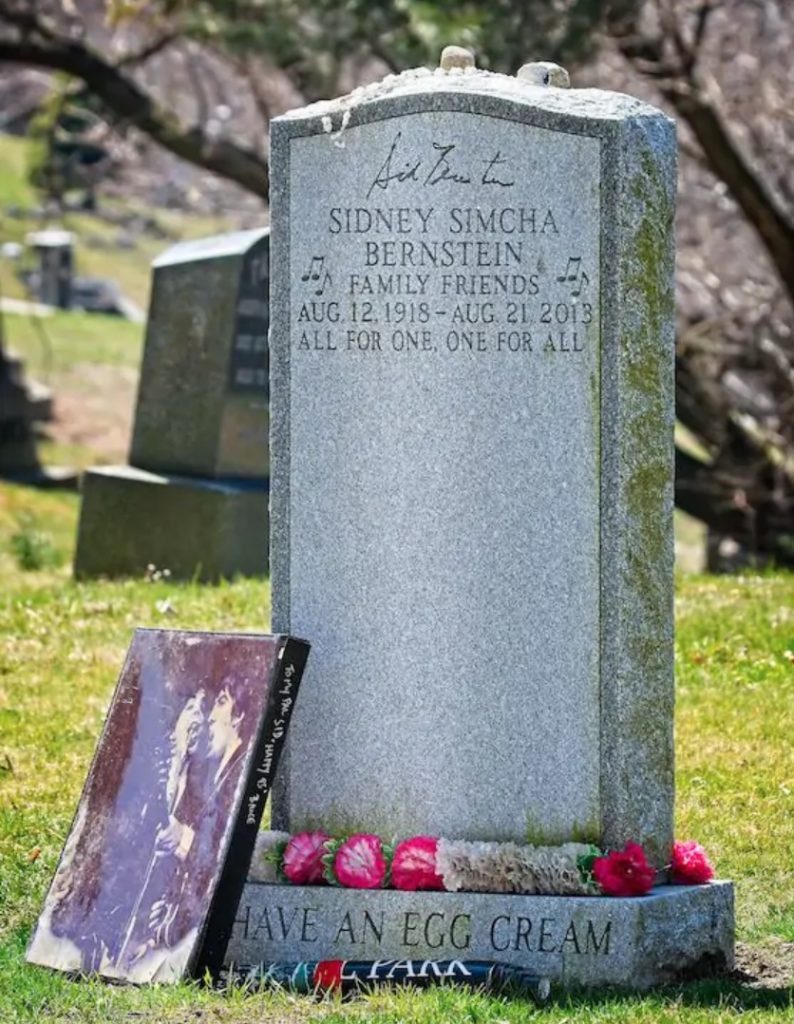
BIELEFELD, STANLEY F. (1906- 1984). Warrant officer, United States Army. Stanley F. Bielefeld was born to parents John and Harriet Bielefeld, German and English immigrants respectively. He spent his formative years in Brooklyn, and a local newspaper shows that he was confirmed in 1922 at Emanuel Lutheran Church on 7th Street and 6th Avenue. Bielefeld went to work as a chauffeur at W. & J. Sloane, a luxury furniture retailer and decorating firm that provided interiors for both the White House and the Breakers in Newport, Rhode Island.
According to military records, Bielefeld enlisted in the United States Army at Fort Jay on Governors Island in 1942. Bielefeld was made a warrant officer and worked in the motor pool throughout his service. According to his niece, he served in Ireland, where he drove Army trucks. He was admitted to a military hospital in 1943 for a pre-existing health condition and discharged for medical reasons in 1944.
However, Bielefeld’s health had sufficiently improved by 1949, when The Miami Herald recorded that Bielefeld caught a 13-pound-2-ounce snapper while reef fishing. He also made another catch in 1957, when he was married to Muriel Landry, as noted by The Brooklyn Eagle. Unfortunately, his wife predeceased him in 1970. Bielefeld having relocated to Dania, Florida, passed away in 1984, as his death notice in The Miami Herald indicated. He was brought home and laid to rest in Brooklyn. Section 101, lot 40240.
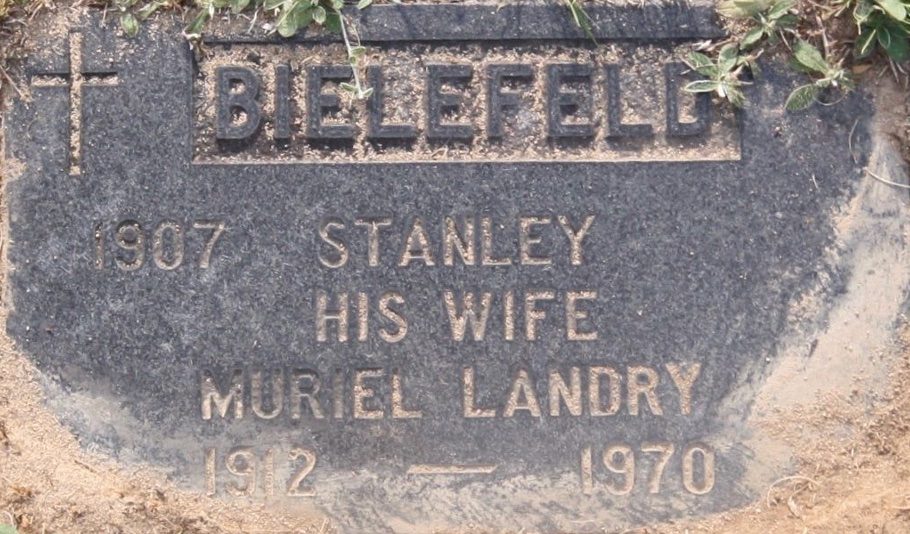
BLONDEL, DOROTHY MARGUERITE (1895-1957). Lieutenant, United States Naval Reserve (WAVES). Born in New York City, Blondel was the youngest of four children of Theodore and Emma Blondel, living on West 131st Street, per the 1900 census. According to the 1940 federal census, she was single, residing in New York City on West End Avenue with her eldest brother, Ransom Blondel, and her eldest sister, Elisabeth Blondel. Blondel graduated from Barnard College, the first college in New York City to offer degrees to women, and which from its inception was known for its rigorous academic programming. Per notes from Barnard files, Blondel studied at Teachers College and at Cornell University. She then taught at George Washington High School, St. Agatha’s School, and the Packer Institute. She retired from her role as head of the biology department at Curtis High School around 1939. Per her death notice, later in life she was named honorary perpetual president of her college class at Barnard.
United States Select Military Registers document that she served in the WAVES (Women Accepted for Voluntary Emergency Service) from August 24, 1943 to July 1, 1944, and again from December 1, 1944 to April 1, 1951. This was at a time when women were unable to enlist in other services. She received an honorable service pin as well as a marksmanship medal during her service.
Blondel died on September 4, 1957 at her home on Stilson Hill Road in New Milford, Litchfield County, Connecticut. Her only survivor was a sister, Mrs. Edward H. Gardner of Gaylordsville, Connecticut, who, in 1958, made application for a government headstone to mark Dorothy’s grave. Section 158, lot 15146.
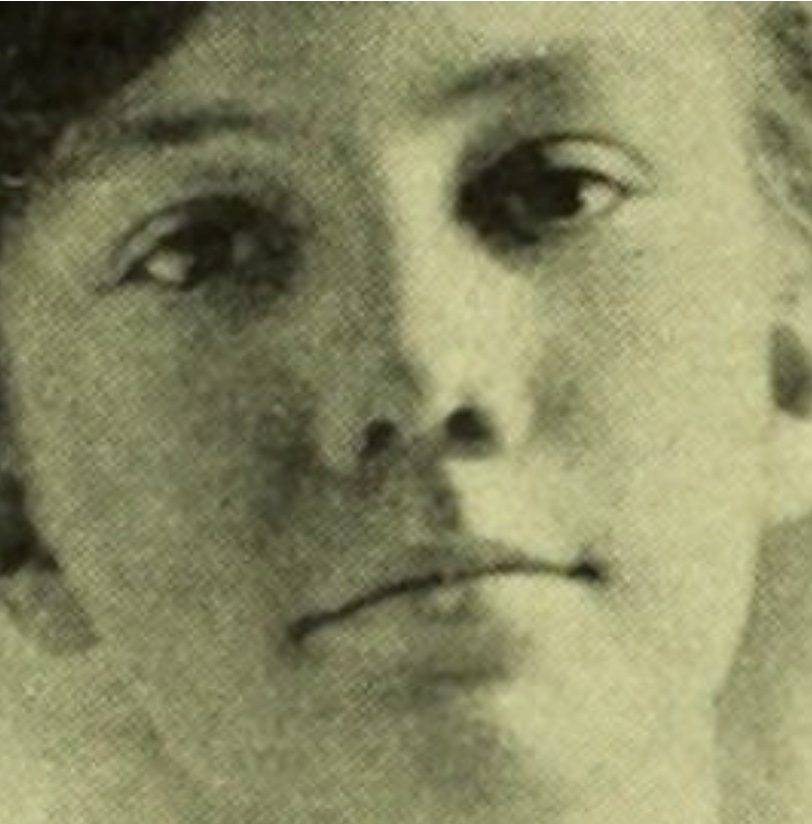
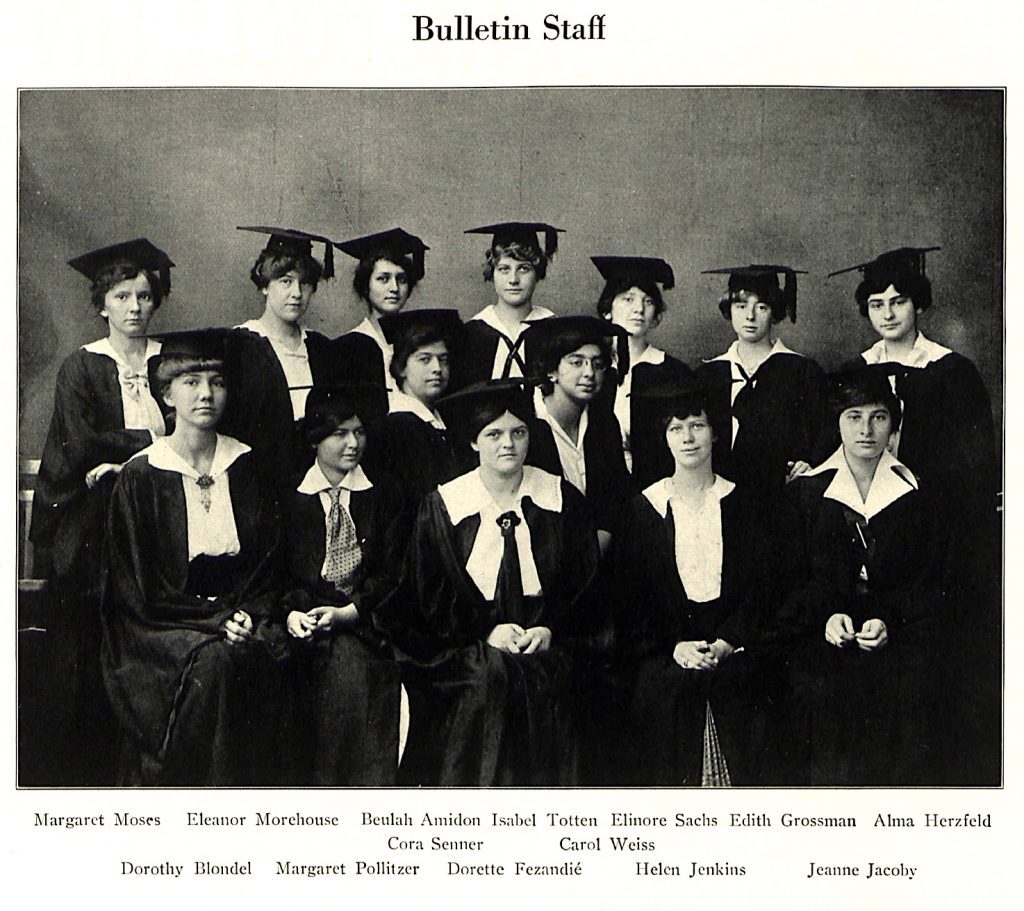
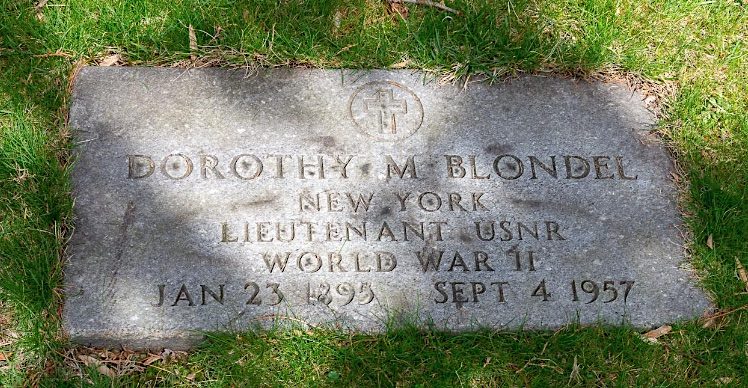
BOERI, ANITA (1912-2008). Sergeant, United States Marine Corps Women’s Reserve. Born on July 6, 1912 to Louise (or Louisa) and Rinaldo Boeri in East Harlem, New York City, Anita was listed in the 1920 federal census as Annetta Bolri, living with her parents, both age 30, and six-year-old brother, Arthur, in Hempstead, Nassau County, New York. Both of her parents were born in Italy and her father was a clerk in the insurance industry. At seven years old, Anita was attending school, and could speak, read, and write English.
Anita moved to Brooklyn with her parents and her brother in 1925. By the 1940 federal census, she was living with her parents at 115 Parkville Avenue in Brooklyn and working full-time as a secretary. She graduated from Erasmus Hall High School and then attended Pratt Institute, School of Home Economics, obtaining a dietician degree. She also completed courses at the School of Business in Brooklyn and performed various secretarial duties, leading to positions as office manager and private secretary, and personal assistant to high-ranking corporate officers. Her income per year was $1,200.
After the outbreak of World War II, Anita volunteered for various wartime organizations, including “formation and commencement” activities of the War Committee of the Bar of the City of New York. At age 31, after a call for female volunteers was made, she enlisted in the Marine Corps on September 22, 1943. This had also been done in World War I, and, in both wars, women volunteers were sought for the “Free a Marine to Fight” program. Almost 400,000 women served in United States armed forces during World War II and 18,460 of those were assigned to active duty in the Marine Corps Women’s Reserve, according to an article about Anita in the November 13, 2005 issue of Newsday.
Anita’s active duty began with basic training on November 30, 1943, at Camp Lejeune, North Carolina. Women performed many activities as difficult as their male counterparts. By mid-January 1944, Anita was a member of the first contingent of Women’s Reserve Battalion to arrive at Parris Island, South Carolina and, after a week’s orientation, she was assigned clerical duties in the office of the commanding general. She was promoted to the rank of sergeant and became confidential clerk to Major General Clayton B. Vogel, Commanding General, Parris Island.
Although General Vogel recommended Anita for Officers Training School, Marine Corps Women’s Reserve, the war came to an end and, on November 26, 1945, she was honorably discharged from military service and returned to civilian life. From 1946 to 1962, she worked as executive secretary and assistant to the vice president and assistant treasurer of Seaboard Finance Company.
In 1961, Anita was invited to move with Seaboard Finance Company to Los Angeles, but refused, preferring to remain in Brooklyn to help her mother care for her ailing father. Anita then spent the next 35 years caring for both her parents, with another six years caring for an ailing uncle who lived in the apartment above her. During this difficult time, she was an active member of St. Rose of Lima Catholic Church in Brooklyn.
In 1998, Anita moved to what is now Atria Huntington, in Huntington Station, New York, a retirement community on Long Island. Her last residence was in Smithtown on Long Island, per the United States Social Security Death Index, 1935-2014. She died February 22, 2008, leaving at least two grand-nephews and their families, including Ronald Boeri, 38, of Nesconset, New York. Section YARD, lot 39000, grave 1224.
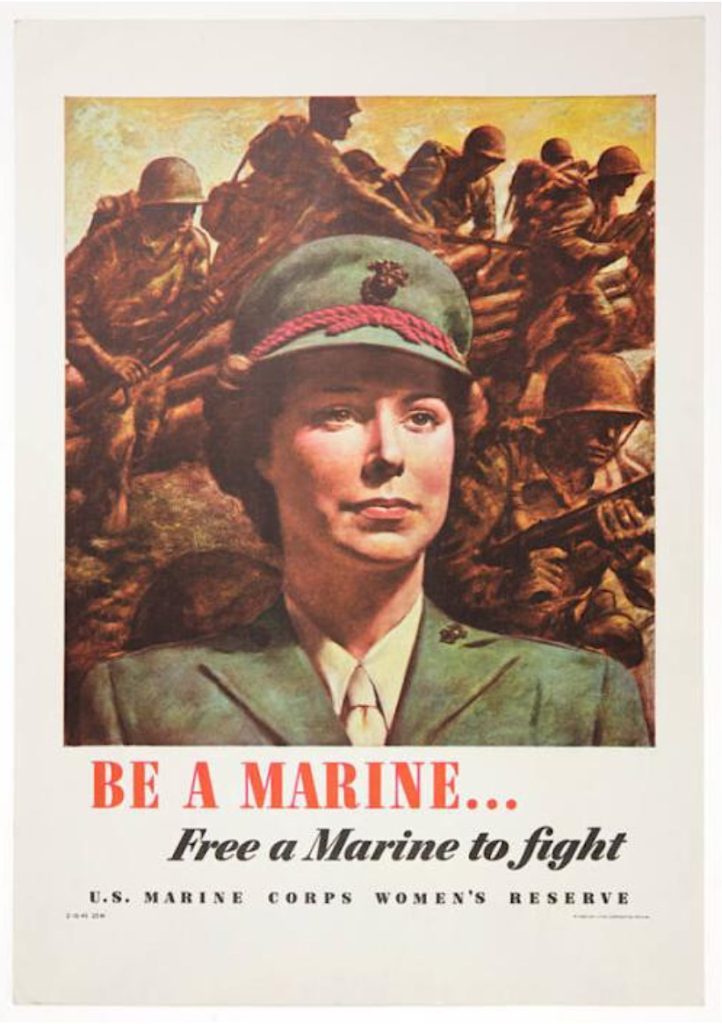
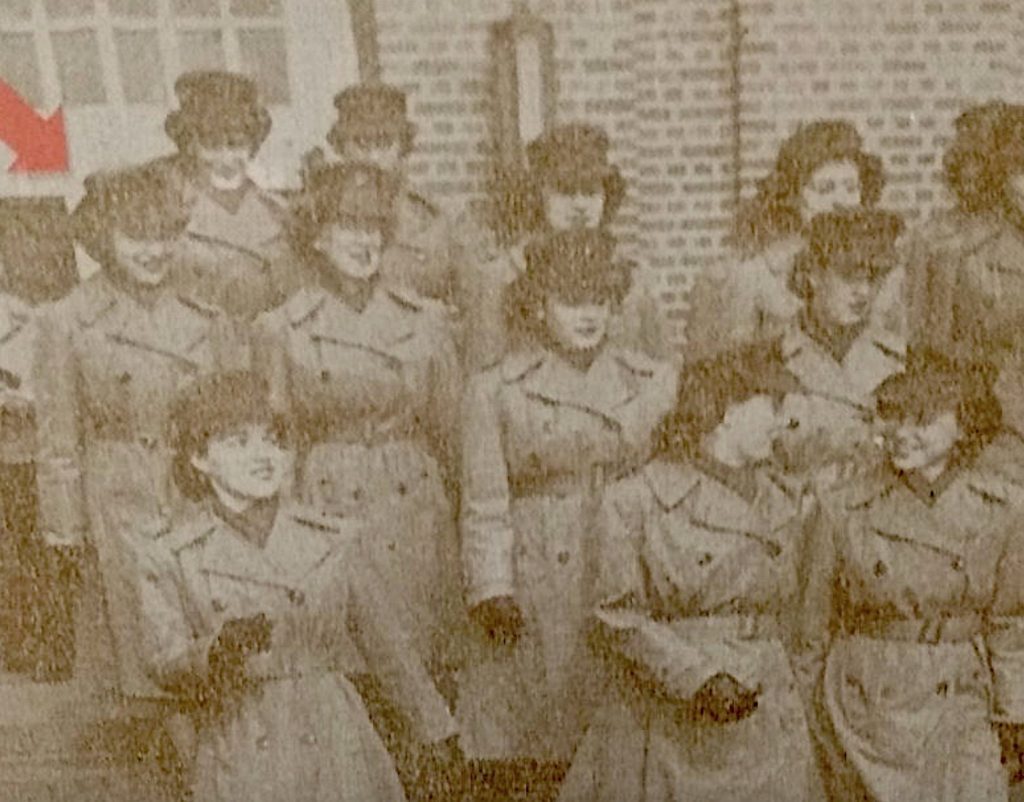


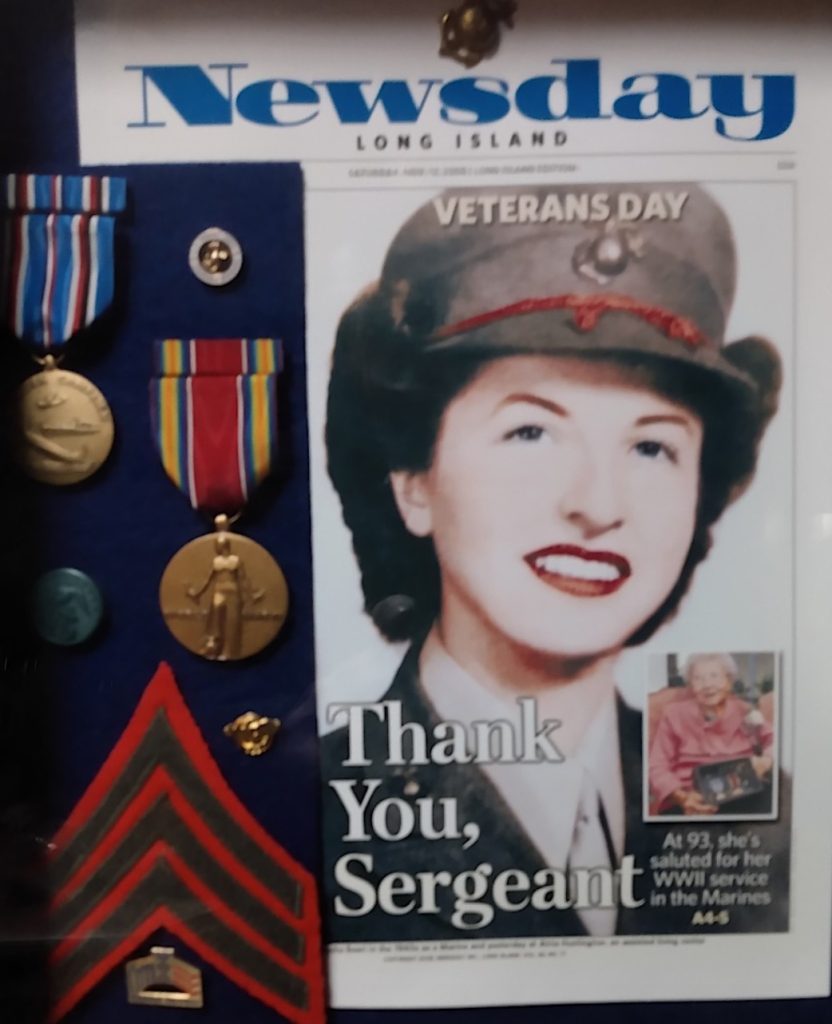
BONGIORNO, WALTER BARTHOLEMO (1917-1996). Private first class, United States Army. According to the 1925 New York State census, Walter Bongiorno was born in Brooklyn, as were his younger brother and sister. Both his parents were born in Italy; his father was a bricklayer and his mother a dressmaker. At the time of the 1930 census, when Walter was 12, he lived with his family, now including his mother’s parents, on East 12th Street. By 1940, 22-year-old Walter was working, possibly in dress manufacturing, and living with his family on East 6th Street. That census report states that he had completed the 7th grade in school.
Just before his 23rd birthday, Bongiorno registered for the draft, listing his employer as Andrew Asaro of Brooklyn. His registrar’s report describes him as 5′ 10″ tall and 185 pounds; by the time he was drafted, 18 months later, Walter was listed as 5′ 8″ in height and 179 pounds. During the war, Bongiorno served in a field artillery unit, first in Africa and then in central Europe. He was hospitalized, probably for frostbite, in January 1944, and then returned to duty. He was discharged from service in October 1945, and married Lillie Sciarabba three weeks later. According to his widow, he had been awarded the European–African–Middle Eastern Campaign Medal; the American Service Medal; and the Silver Star for gallantry in action, for his wartime service. Arbor, lot 3900, grave 1534.


BONO, STEPHEN (or STEFANO) ANTHONY (1918-1999). Private, United States Army. Bono’s birth certificate states that his birth name was Stefano and that he was born in Brooklyn. The 1920 census shows that he lived with his Italian-born parents and five siblings, all of whom were born in New York; Stephen’s father, Vincent, was a barber. His father died in 1928. Stephen was educated in the Brooklyn public schools through high school. The 1930 census reports that he lived with his mother and four siblings in Brooklyn in a house valued at $11,000; although his mother, who immigrated to the United States in 1912, was not employed, his older siblings were all working. He was listed among the graduates of P.S. 102 in the July 5, 1933, edition of the Brooklyn Daily Eagle.
As per the 1940 census, he was single, lived with his mother, sister and brother at 234 61st Street in Brooklyn, had completed high school and was employed. On his draft registration card, filed in October 1940, he recorded that he lived with his mother at 234 61st Street in Brooklyn and they had a home telephone; he listed his mother, Frances Bono, as his next of kin. At that time, he worked for the Service Baking Company at 211 60th Street in Brooklyn. His registrar’s report stated that he was 5′ 3″ tall, 125 pounds, with brown eyes, brown hair and a dark complexion; the employment information was the same as that on his draft registration.
According to his World War II enlistment records, Bono enlisted as a private at Fort Dix, New Jersey, on October 7, 1941. That document notes that he was single, 5′ 1″ tall, 117 pounds, and had completed three years of high school, in contrast to the 1940 census that notes that he had graduated. As per articles in the Brooklyn Daily Eagle on October 17 and 18, 1941, Bono was listed as among the Brooklynites who left Fort Dix, New Jersey, for the Field Artillery Replacement Training Center at Fort Bragg, North Carolina. His son-in-law, Artie Tacopino, states that Bono served in France and Germany.
His son-in-law also indicates that Bono delivered business machines for 45 years. An interesting fact is that Bono was aboard the Andrea Doria, sailing from Genoa, Italy, and arriving in New York City on July 25, 1955, a year before that vessel sunk in a tragic accident. The family moved from Brooklyn to Eltingville, Staten Island, in 1994. He was survived by wife of 52 years, Mary née Gorman, his daughter and a son. Section 129, lot lot 37028, grave 3.
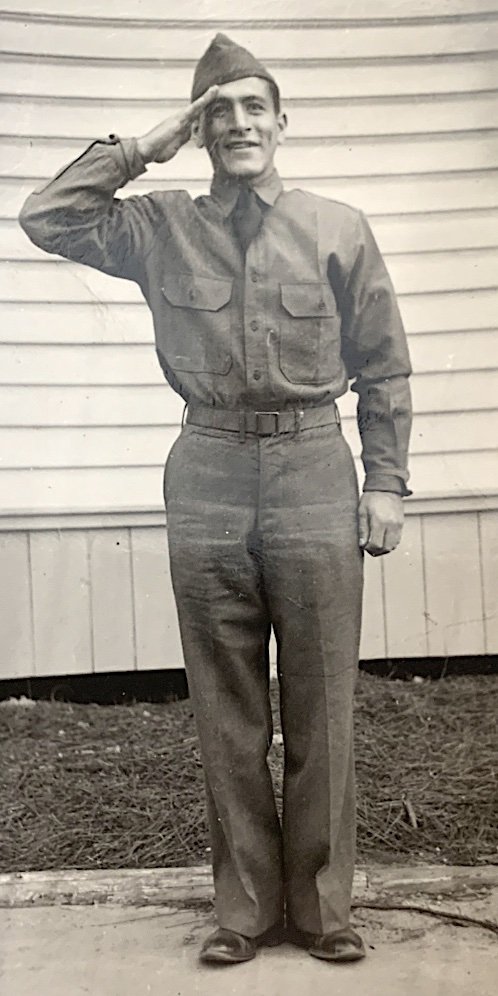
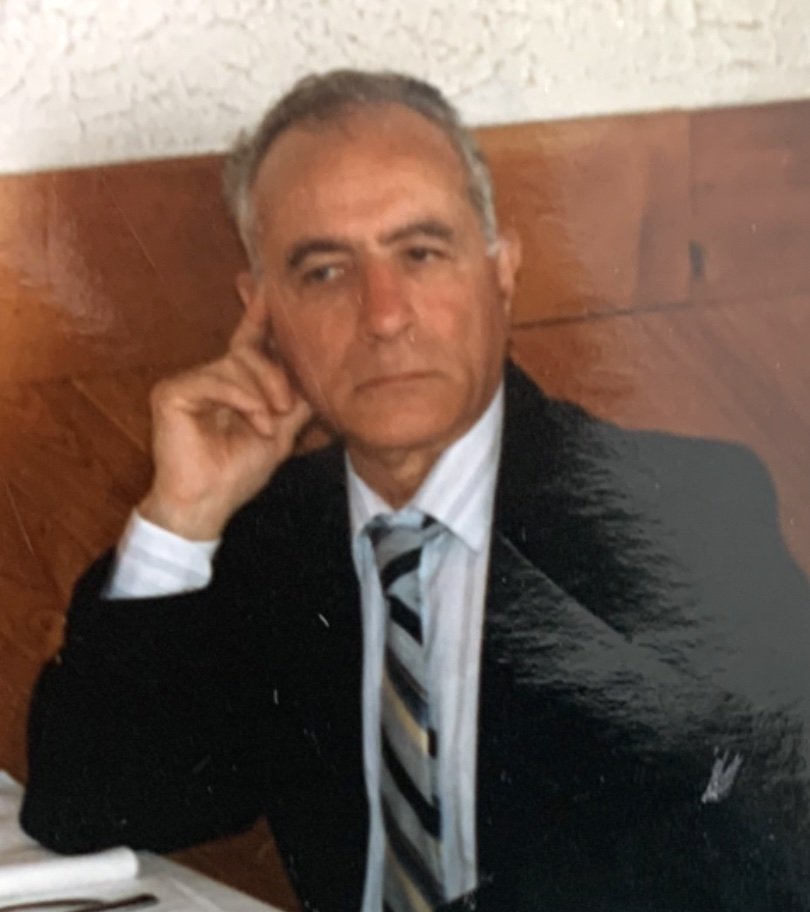
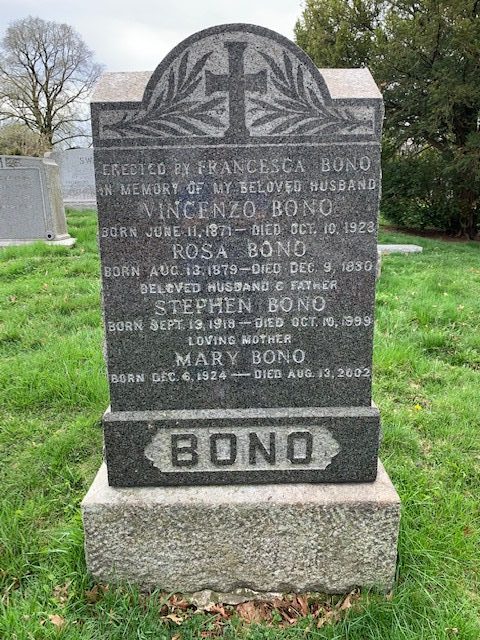
BOTTIGLIERE, ANTHONY (or ANTONIO) FRANK (1916-1961). Private first class, 607th Tank Destroyer Battalion, Company A, United States Army. Antonio Bottigliere was born in New York City on July 8, 1916. His given name remained Antonio through the 1920 and 1925 censuses, but he was using the English version, Anthony, by the 1930 census. Both his parents, Joseph and Antoinette Bottigliere, were born in Italy.
In 1920, according to the federal census of that year, the Bottigliere family (although the family name was then recorded as Bottifiero) lived on 20th Street in Brooklyn and Joseph was a bricklayer. There were four sons, including Anthony, and one daughter, Jennie. Italian was listed as the native language of each family member. By the 1925 New York State census, another daughter, Susan, had been born. Joseph was still working as a bricklayer and Antoinette was a housewife. According to the 1930 federal and 1940 censuses, the family was living on 21st Street in Brooklyn. Anthony, who had completed the 8th grade, was a wage earner in private industry although, at the time he registered for the draft, he was unemployed. The 1940 census records that he was a power press operator.
When Bottigliere registered for the draft, he lived at 331 21st Street in Brooklyn. He listed his sister Jennie as his contact. He was 5′ 6″ tall and weighed 135 pounds, with brown hair and eyes and a dark complexion. Per the Department of Defense headstone application, submitted by his widow, Filomena, less than a month after his death, he enlisted in the United States Army on May 2, 1941, and attained the rank of private first class. He served with Company A, 607th Tank Destroyer Battalion, which landed in Normandy soon after D-Day. He was honorably discharged on October 30, 1945.
Anthony married Filomena A. Biscuti just months after his discharge from service. They obtained their marriage license in Brooklyn on April 30, 1946. The couple had three children: Annette, Carl, and Joseph. Bottigliere died on June 23, 1961. Filomena died in 2009; she is interred with Anthony at Green-Wood. Section 39, lot 38325, grave 855.
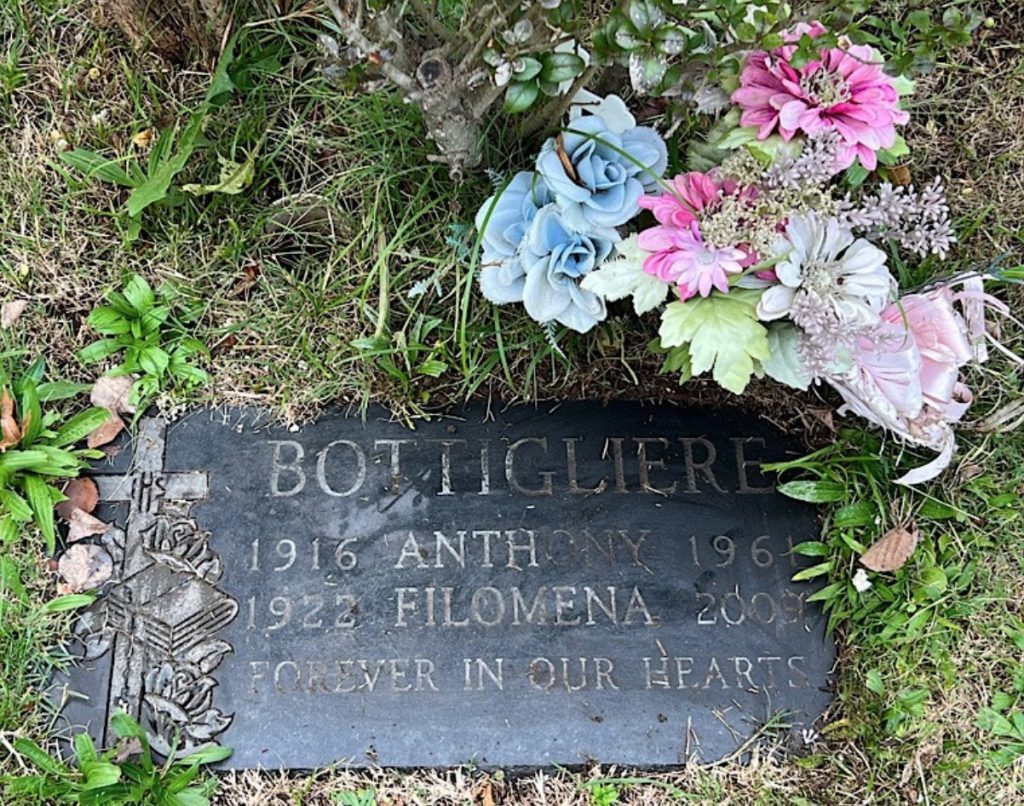
BOYCE, EDWARD WARREN (1920-1998). Rank unknown, unit unknown, United States Army. Edward was born in Brooklyn to father Hiram Abiff Boyce and mother Mary A. Otoole (O’Toole). According to Hiram Boyce’s World War I draft resignation card, completed in 1918, he was a steamfitter. Edward grew up at 130 Vanderbilt Avenue. As per the 1930 census, Edward was listed as Warren (his middle name) and lived at this address. By the 1940 census, Edward’s occupation was recorded as grocery clerk.
At the time of his World War II draft registration card in 1942, Edward Boyce was 21 years old and worked at the A&P Tea Company at 392 Myrtle Avenue in Brooklyn. He was 5′ 8″ tall, 158 pounds, with blue eyes, brown hair, a light complexion, and a scar on his scalp. “Name And Address Of Person Who Will Always Know Your Address” was listed as Ann Boyce at 183 Windsor Place in Brooklyn. This was Edwards’s mailing address but he listed “Place of Residence” as 130 Vanderbilt Avenue in Brooklyn. According to Edward W. Boyce’s marriage license, he married Anne F. Whalen on December 22, 1941.
Edward Warren Boyce enlisted on November 12, 1942, in the United States Army, and was honorably discharged on November 10, 1945.
Edward had seven siblings. His father, Hiram Boyce passed away in 1949 in Brooklyn. Edward’s mother, Mary, passed away in 1954 and is interred at Holy Cross Cemetery. Edward’s wife, Anne, died in 2004 and is interred with him. Section 135, lot 30010.
BOYCE, JOHN TURKINGTON (1919–1963). Seaman first class, United States Navy. He was born to father, Alexander T. Boyce, and mother Maude Boyce, in Brooklyn. According to the 1920 federal census, when Alexander was 37 years old he was an auto mechanics foreman, and the family lived on 62nd Street, Brooklyn. Maude (Maud) was 29 years old and John was 11 months old. By 1925, at 6 years old, John was listed as Jack in the New York State census, with a younger sister, Maude, an infant. However, by the 1930 census younger sister Maude was no longer listed with the family; she did not survive. John was 11 years old and the family resided at 707 Vanderbilt Avenue in Brooklyn. He was attending school, was able to read and write, and had a five-year-old sister, Alice. According to this census, Alexander, was also born in Connecticut and mother, Maude, was born in New York. Sadly, Alexander, John’s father, passed away on June 22, 1938.
According to his World War II draft registration card, signed October 16, 1940, John and his mother lived at 285 Prospect Place in Brooklyn. He listed January 4, 1918 as his birthday and was 22 years old. “Name Of Person Who Will Always Know Your Address” was his mother, and he worked at Lenz & Riecker, a publisher, at 75 Varick Street in Manhattan. He was 6′ 1″ tall, 180 pounds with gray eyes, blond hair, and a light complexion. He enlisted January 14, 1943, served as a seaman first class in the United States Navy, and was honorably discharged on December 19, 1945.
His mother, still living at 285 Prospect Place, submitted a United States Headstone Application for Military Veterans, on behalf of John, in May 1964, about seven months after his death. She requested an upright marble headstone with a Latin cross on it. It marks his grave. Both his mother and his father are interred in the same lot with him. Section 149, lot 19666.
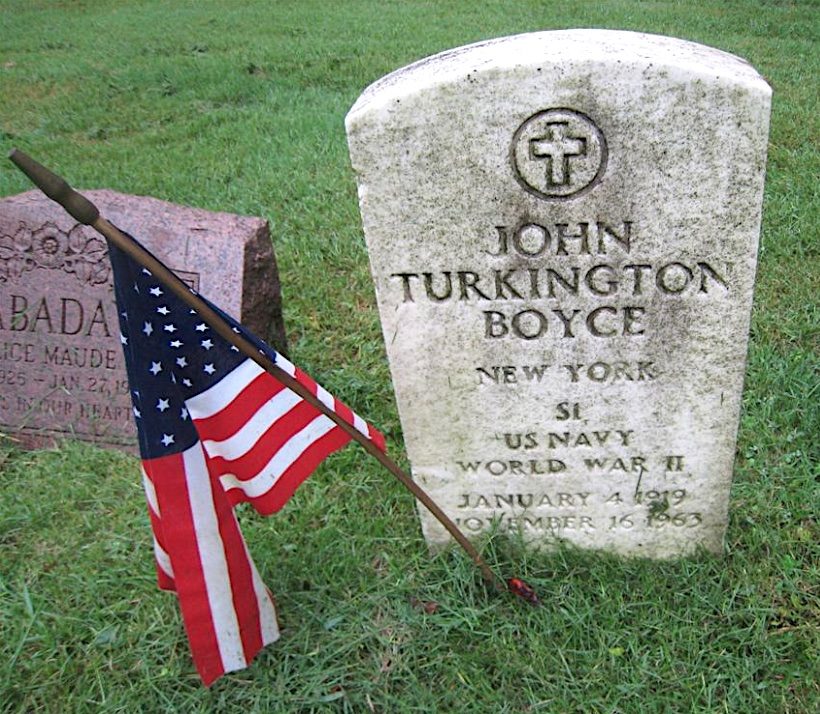
BRADFORD, JR., WILLIAM J. (1923-2003). Commander, United States Navy. Born in Stapleton, Staten Island, young William Bradford was included in the New York State census of 1925. He was two years old, living in Huntington, Long Island, with his father, William Bradford Sr., age 41, his mother, 32, and Mary E. Bradford, his younger sister, age 1. Other household members included Eliza McNair, a cousin, age 55, and Olea Kaalflaat, age 22, perhaps a servant.
The 1930 federal census shows the family continuing to live on Long Island, at 208 Woodbine Avenue in Northport, New York. At six years old, Bradford was attending school, and could read and write. Both his parents were born in New York. Household members in 1930 included – in addition to his parents, sister, and cousin Eliza McNair – Susan Clouter, age 50.
Ship passenger lists show that Bradford went on several trips as a child. On March 25, 1929, at age 5, he arrived in New York from Puerto Rico on the American steam passenger ship Coamo. It also appears that he went on a trip to Bermuda in 1934 when he was 10 years old. An arrival record for the Queen of Bermuda, a British ocean liner that sailed regularly between New York and Hamilton, Bermuda, shows that he sailed from Hamilton to the Port of New York, arriving on February 26, 1934.
The 1940 federal census lists the family still living on Woodbine Avenue in Huntington, but there is now a second sister, Joan Bradford, age 8, along with Bradford’s parents, sister Mary, and cousin Eliza McNair. Janet McCready, age 72, is also listed as a household member. Bradford has completed his second year of high school. Bradford’s mother’s first name is listed on various censuses as Schria (1925), Selena (1930), Selma (1940), and Selina (1950), but her Green-Wood cemetery burial record records her name as Selina Schantz Bradford.
Bradford graduated from Northport High School in 1941. As per his high school yearbook, he was the president of the Honor Society and elected vice-president of his senior class. He was also a member of the Traffic Squad. According to his obituary and his engagement announcement, he graduated Brown University and attended the United States Merchant Marine Academy, in Kings Point, New York.
Bradford served during both World War II and the Korean War as a lieutenant in the United States Navy, and retired as a United States Navy commander, per his obituary. His engagement announcement explains that he returned to service at the onset of the Korean War and served two years before resuming civilian life.
According to the 1945 Florida State census, Bradford, at age 23, was living in Okaloosa County, Florida. However, by the 1950 federal census, he was living with his parents, his two sisters, and his cousin Eliza on Woodbine Avenue in Northport. Emma Jameson, a 70-year-old maid, also lived with the family. Bradford was working as a clerk in an insurance company. His initial social security card was issued before 1951 in the state of Virginia.
Bradford married Jeannette Lorraine Frolli, of San Francisco, California, on November 23, 1952, at a ceremony at St. Vincent de Paul Catholic Church in San Francisco. At the time he worked for a marine insurance company in New York City, but also was a lieutenant in the United States Navy. His bride was a graduate of Stanford University, with a B.S. in nursing, and had been a surgical nurse at Stanford Hospital in San Francisco.
The Bradfords were living at 16 Harbor Ridge Drive, in Centerport, Long Island, New York in 1993, according to the United States Public Records Index. They had four children: Mary Jo Mugavin, Judith Ann Bowlby, William John Bradford III, and Jeannette Elizabeth Boccuzzi. According to Bradford’s obituary, there were five grandchildren: Marybeth and Patrick Mugavin, Joseph and Timothy Bradford, and Erica Bowlby. Bradford retired as a vice president of Chubb Insurance Company and was a founding member of the Centerport Yacht Club. He died on July 27, 2003. Other family members interred at Green-Wood in the same lot are Bradford’s parents – his father died on December 15, 1958, and his mother on December 21, 1978 – as well as his sister Mary E. Bradford, MD, who died on April 23, 1999, and his wife, Jeannette, who passed away on May 28, 2011. Section 182, lot 37546, grave FRC.
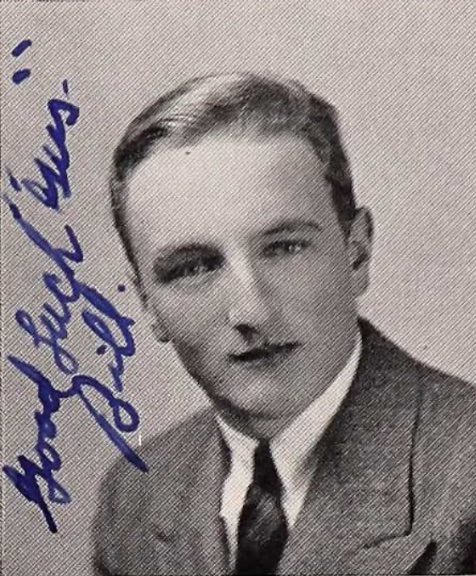
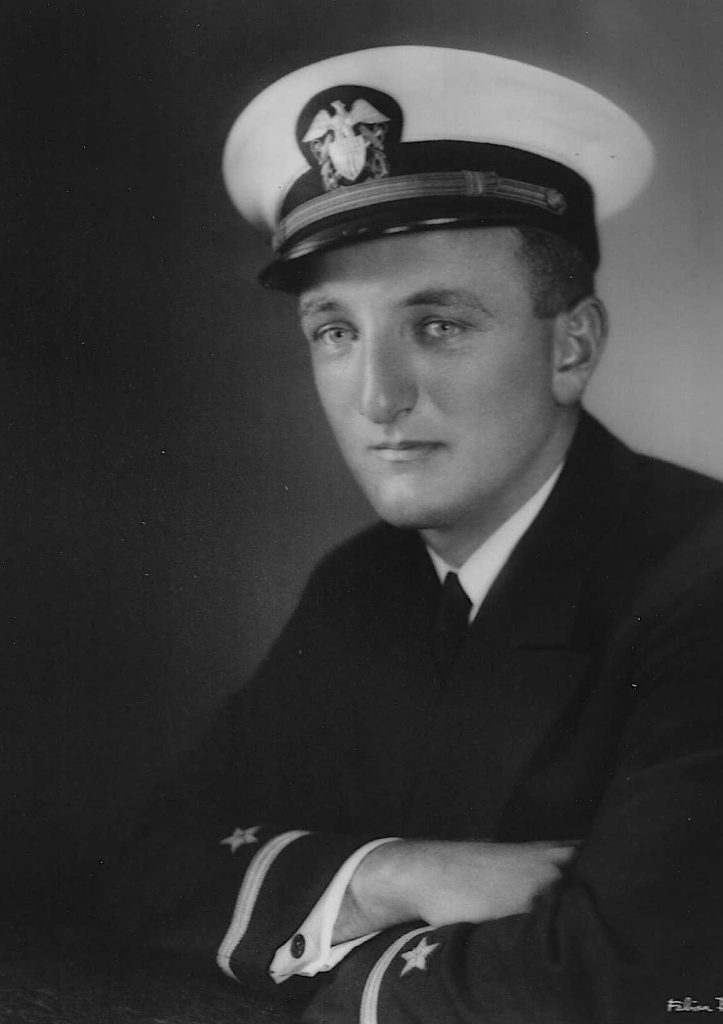
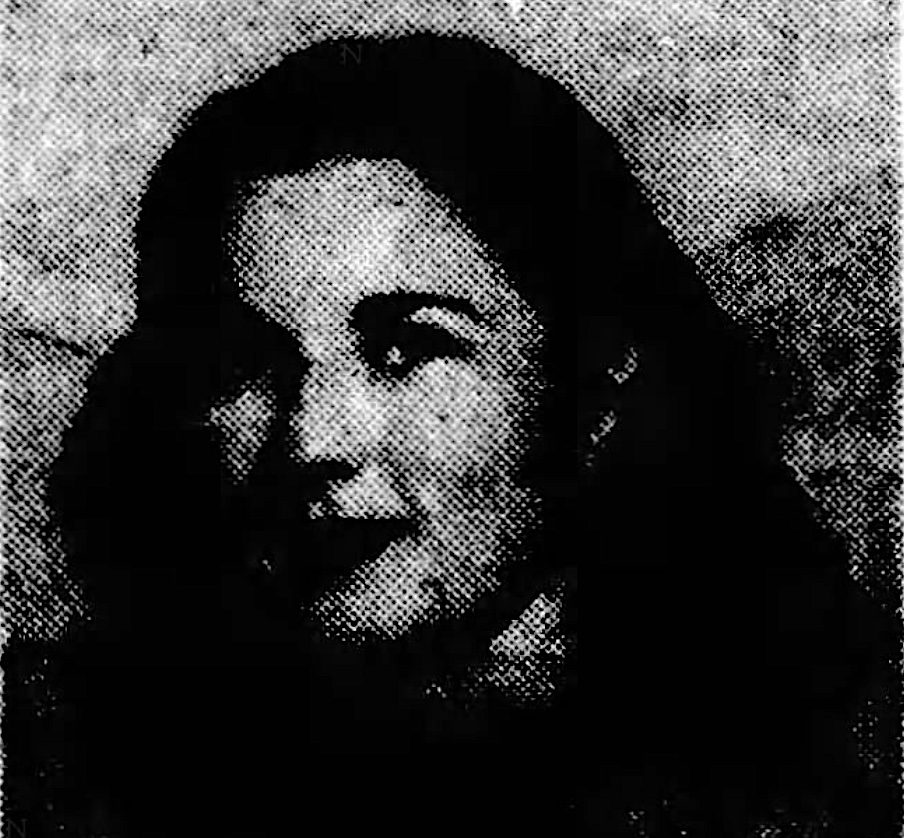

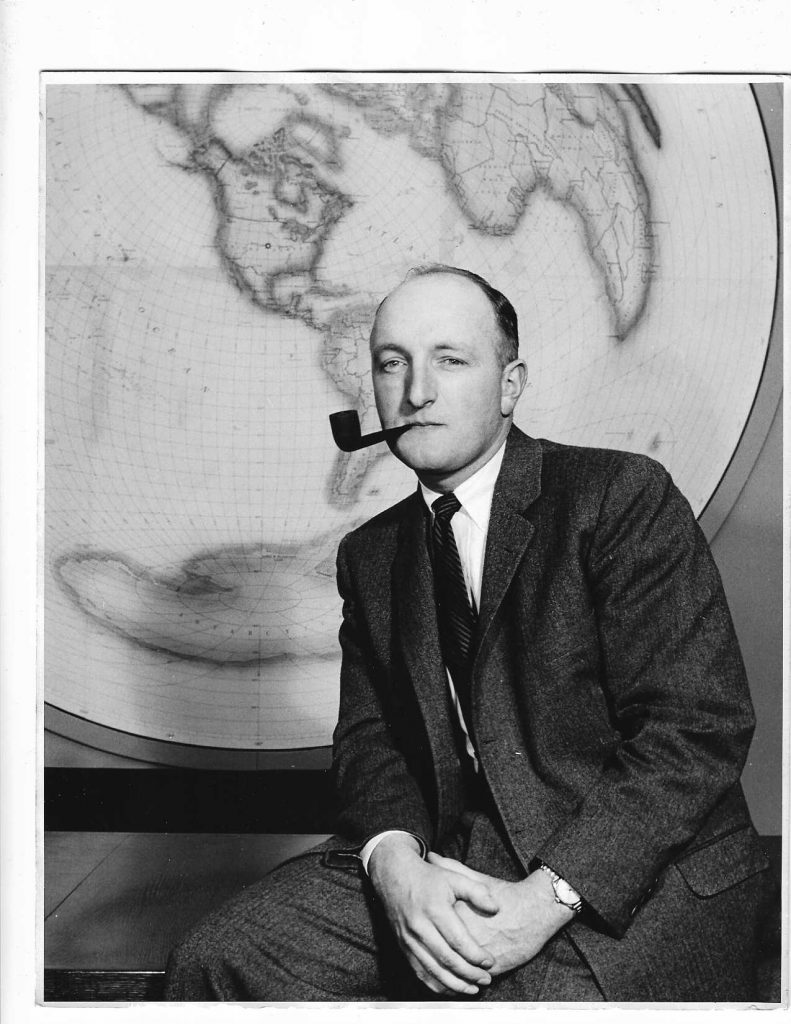
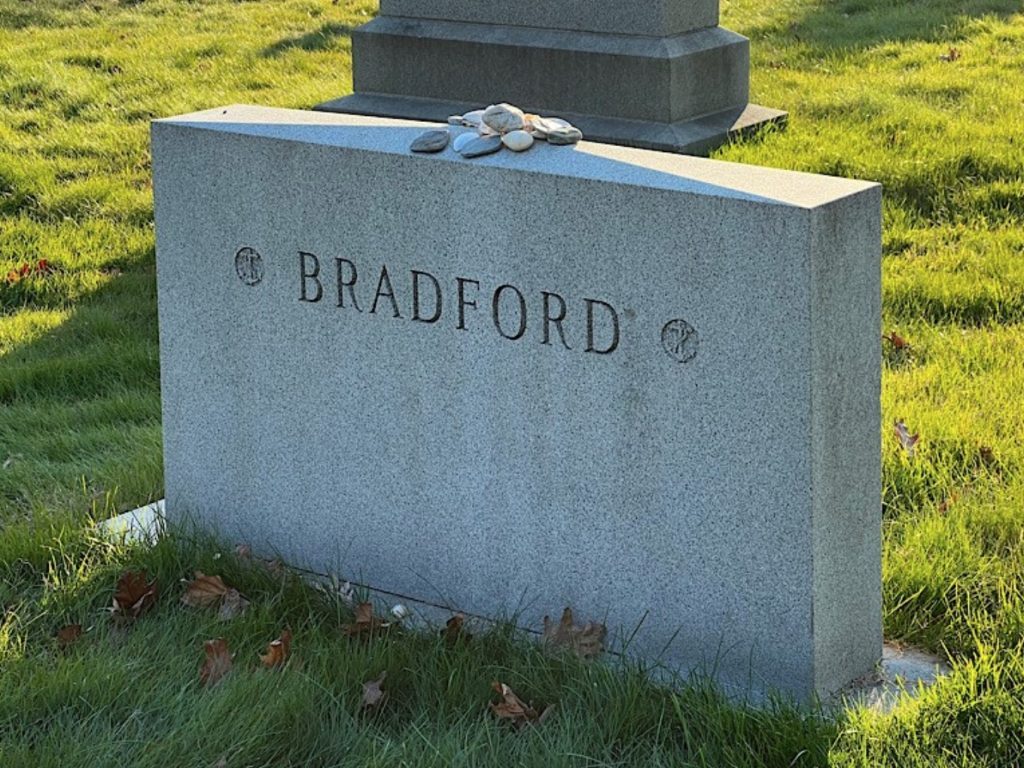
BRENNAN, LEONARD (1918-2010). Second lieutenant, 659th Quartermaster Corps, United States Army. Brennan was born in Ripon, California. His older brother, John Edgin Brennan, was born in Colorado. In the 1920 census, the family lived in Walnut Creek, near Berkeley; his father, who was born in Minnesota, is listed as a herdsman, employed at University Farms. The Brennan family lived in Oakland through Leonard’s school years; he graduated Claremont Junior High in 1933, Oakland’s University High School and was an Eagle Scout. In 1940, Brennan received his bachelor’s degree from University of California-Berkeley, and worked as a playground director, according to the 1940 census. When he registered for the draft later that year, on his 22nd birthday, he was living at home and listed the University as his employer.
His World War II Army enlistment record notes that he enlisted as a private on September 22, 1942, and left the service on December 6, 1945. He served with the Quartermaster Corps in England and in France. Helen Cleary Brennan, his widow, reports that he was promoted to battalion sergeant major and then second lieutenant. Ms. Brennan notes that he was in the United States from September 1942 through July 1943, England from July 8, 1943 through October 1944, and France from October 1944 through December 1945. As per his obituary in The New York Times, he was a master sergeant while in England and a second lieutenant during his service in France. He participated in the Battle of the Bulge. Among the honors that he was awarded was the Bronze Service Star for participation in the Germany Campaign, the Rhineland Campaign Medal, and the American Theater Service Medal.
Brennan, while stationed in France, sent the following letter to his parents in Oakland, California, on May 4, 1945, four days before V-E Day. The original language is used, paragraphs added for ease in reading:
By the time this reaches you V-E day may have come and gone. I Hope So!….It seems strange that less than a year ago we were in England working hard for that day when we would be able to obtain even a fingerhold on the continent. It seems sort of strange too, to find myself more concerned with a place called San Francisco than I have ever been before. Many of us here felt just as a good many people at home have, that even tho the war in Europe may be a “fini” soon, the real battle has just begun-the one in good old SF….I’m conducting an I&E program (information and education) in our company and it is rather interesting to see what a very representative cross-section of Americana looks like. As usual the men are primarily concerned about what is going to happen to them. First in terms of the immediate military situation—going home, staying here, going to the pacific, i.e., when they are going to get “OUT”….secondly, there is a growing concern over what happens when they get back to civvy street.
We have begun to discuss the so-called GI Bill of Rights. I’m not yet certain what the general feeling is—whether the govt “owes me a living” or “just give me the opportunity to work…” We have every kind of man in our outfit….laborers, mechanics, clerks, students, Poles, Italians, Southerners (who are still fighting the Civil War and contemplating the coming war with the “n……”)…men from Ohio, New Mexico, California, Kentucky, even one man who left Germany as late as 1938 and who knows the present “Redoubt [place of retreat]” quite well since he was born and raised in that part of Germany. They work well as a team and get things done. They only retain about 14% of each months pay. Most of them have only been overseas about 9 months but all agree that they took America for granted in a great many ways. They are still more concerned about local politics than the national or international scene, but there is a gradual change.
We were waiting in line the other night for the GI show in town—in front were several American officers and just behind us were several English officers, The Yanks were talking about social issues at home and the Limeys were knocking themselves out over world affairs. To me this is the essential difference between American and English thought. The average man in my outfit doesn’t even begin to compare with the average British soldier when it comes to knowing what is going on in the world.
But I would stake my last franc on our boys when it comes to getting things done. They have a radio in the day room and in less time than it takes to write this, they have run wires into half-dozen bedrooms and created small amplifying sets out of old parts picked here and there. One of the boys ran a wire from the radio out the window and down the hill to the supply room about 25 yards away, connected it with a French phone so that you can now hear the program there as well. I believe they work harder than any other army in this world and play harder too.
The French and English don’t know what work is compared to American standards. Of course they probably live longer if you want to think of it in that light. You would be amazed at what a group of 150-200 men will do to a French Chateau to make it comfortable. There is no hot water so they create it. The place is drafty so they run a good-old American pot-bellied stove into every room and fix the windows. These men can make anything over here. They understand the French only to the point that it serves their purposes. If there is a dozen eggs, some bread and a couple of bottles of Champagne needed for a midnight snack someone will get it. When they find a Frenchman who treats them square and fair they fall all over themselves to do things for him. When they find they’ve been stuck-but good-they return in kind with all the yankee ingenuity (?) they have for making things. They are rough, crude, sentimental, generous and a sucker for anything. When in town they look more like a construction gang of engineers than a company of soldiers. I think this is one of the main reasons we are here instead of still back in England.
After the war, according to his widow, Helen Cleary Brennan, Leonard (or Len) continued his education, earning his master’s degree from Columbia University in 1947 and his EdD there in 1970. His first marriage was to Inez in 1947; they divorced in 1969; Inez and Leonard had two children, Kim, who died of leukemia at age five in the 1950s, and Heidi. He worked as an administrator in the Oakland, California, and U.S. Virgin Islands Departments of Education, and then as a professor of Education at Brooklyn College for ten years, retiring in 1977.
He married Helen Cleary, an alumna of Brooklyn College, class of 1961, in Maine, on May 21, 1983; the couple was together as of 1970. The couple lived in Brooklyn Heights at 6 Montague Terrace. As per his obituary in The New York Times, “His joys included gardening, listening to classical music, becoming an Eagle Scout, working at Yosemite National Park, and overseeing the design and building of two homes, one in the Oakland hills and the other on the North Fork of Long Island. Len was the exemplar of the gentle man, kind, caring, witty but never harsh.” Brennan died in St. Vincent’s Hospital in New York City. Niche, Tranquility Garden, FO7-3a.
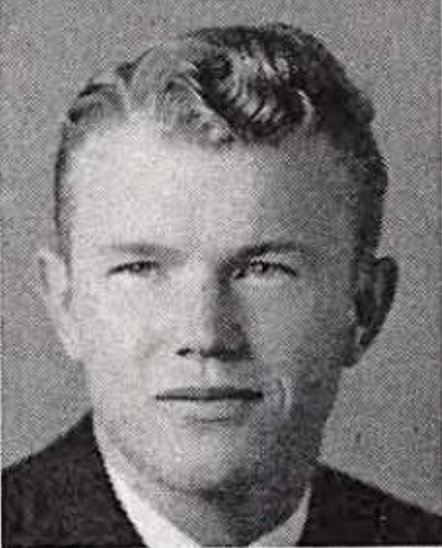
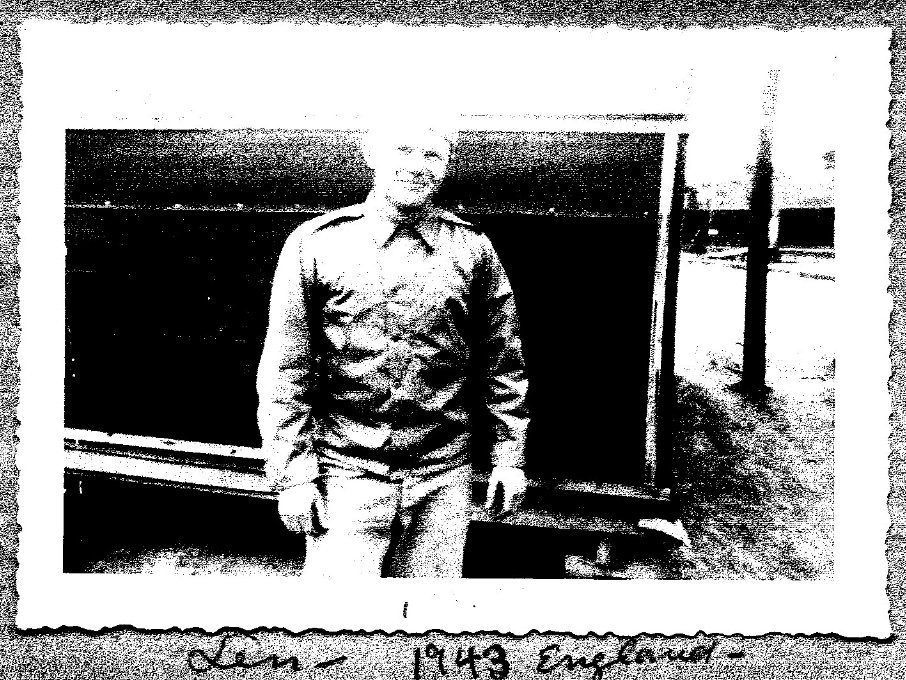
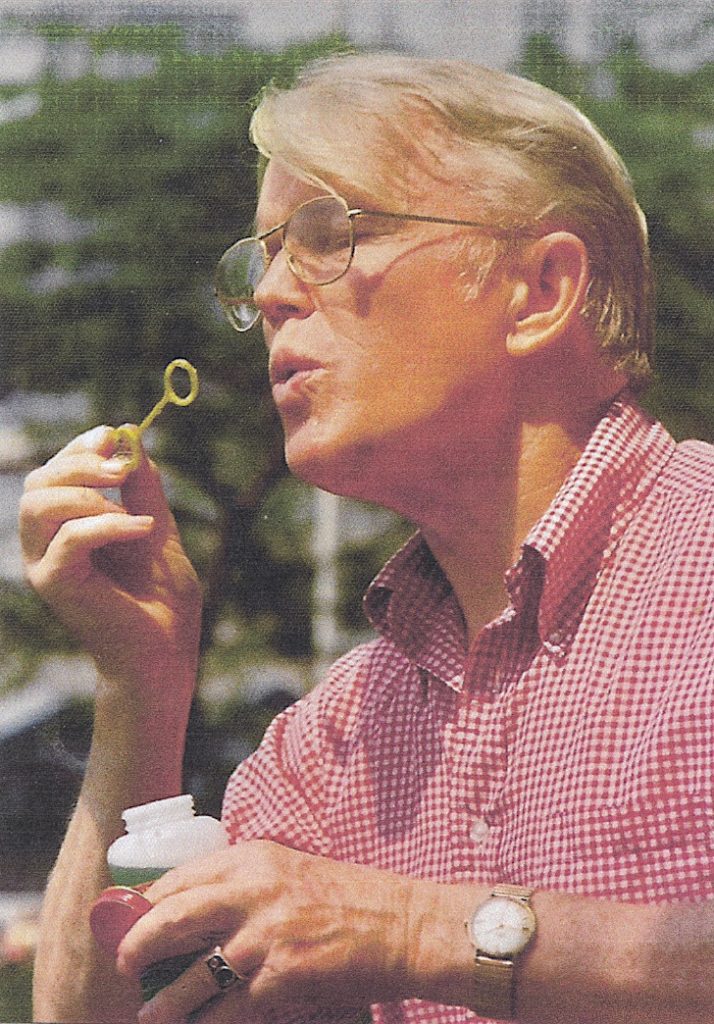
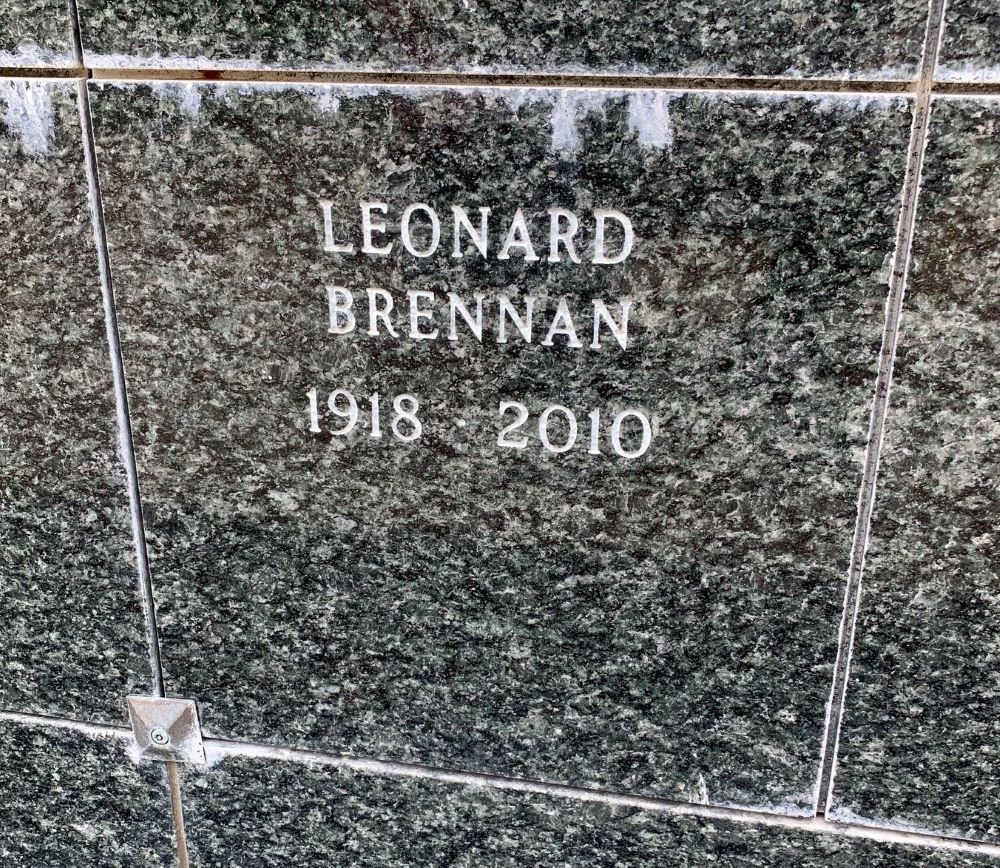
BROWN, BERNARD (or BILL). (1925-1990). Rank unknown, Naval Construction Battalions (also known as Seabees), United States Navy. Bernard Brown was born in Brooklyn Jewish Hospital, and, based on the biography provided by his daughter Sally, he was raised in East New York by his mother, Leah, Aunt Sally, and his grandfather. His parents divorced when he was two years old. He started working after junior high school to help his family during the depression.
Brown registered for the draft at the age of 18. He reported that he was living at 1546 St. John’s Place in Brooklyn, that he was unemployed, white, 5′ 9″ tall, weighed 184 pounds, had blue eyes and brown hair, and wore glasses. He served in the New York State National Guard, 23rd Regiment, Company I, from June 2, 1942, to August 31, 1943. Enlisting in the Navy on September 25, 1943, he served until March 21, 1946. Brown served in the South Pacific in a construction battalion “building bridges,” as per his daughter. General Douglas MacArthur, who commanded all United States Army forces in the Far East during World War II, very much appreciated the vital work done by the Seabees, remarking in 1944 to an admiral, “The only trouble with your Seabees is that I do not have enough of them.”
After service, he worked the docks in the Brooklyn Navy Yard. He would marry Thelma, from Brighton Beach, in his 30s. They opened a variety store. After their daughter, Sally, was born, they moved to Kensington, where they raised their family, which ultimately included a son, Bill. Bernard went on to drive a cab in Manhattan. Eventually, he bought his own medallion and cab. His daughter Sally recalls: “He was always very honest. Mom was always mailing back wallets and other objects found in the back of his cab to tourists all across the U.S.”
Sally further recalls her father:
Bill loved his family more than anything else. He was always home by 6 pm for dinner that we all ate together. He wanted to be to his kids, the dad he never had. He loved leading lively debates on controversial topics at the table. He always gave us big bear hugs, said “I love you,” and really wanted to know how you were doing. His big blue eyes radiated with love for us. He took his family on yearly vacations on the East Coast. He and his wife bought a lake house in Massachusetts, too.
Bernard (Bill) Brown died at New York University Hospital in 1990 following open heart surgery. His ashes are interred between two birch trees; birch was his favorite tree. Urn Garden, section 1632G.


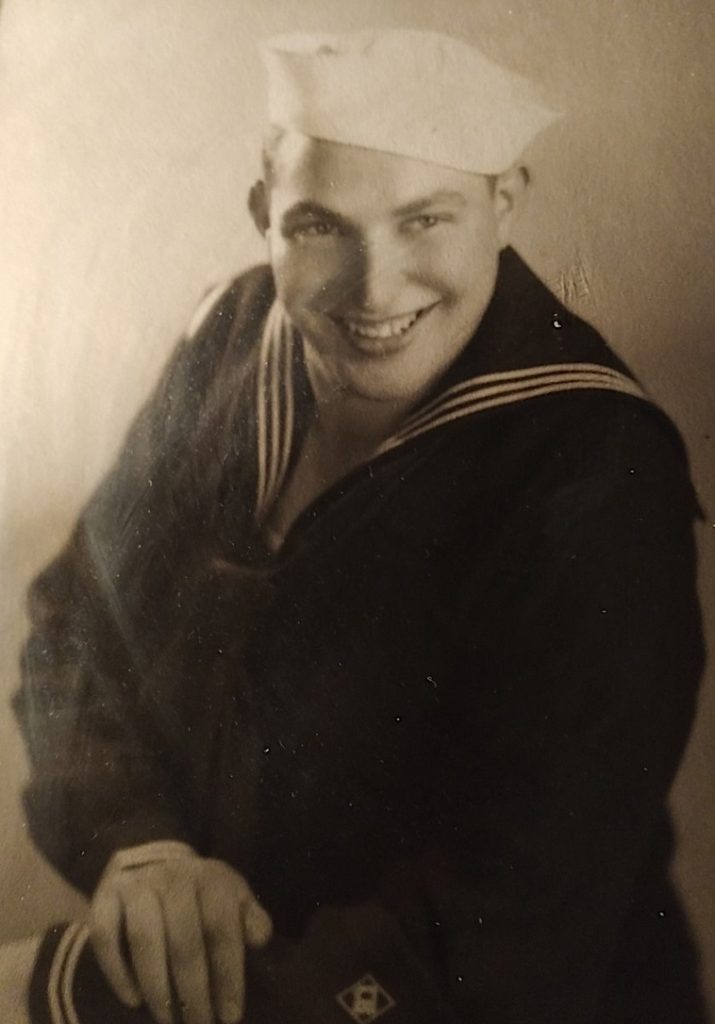
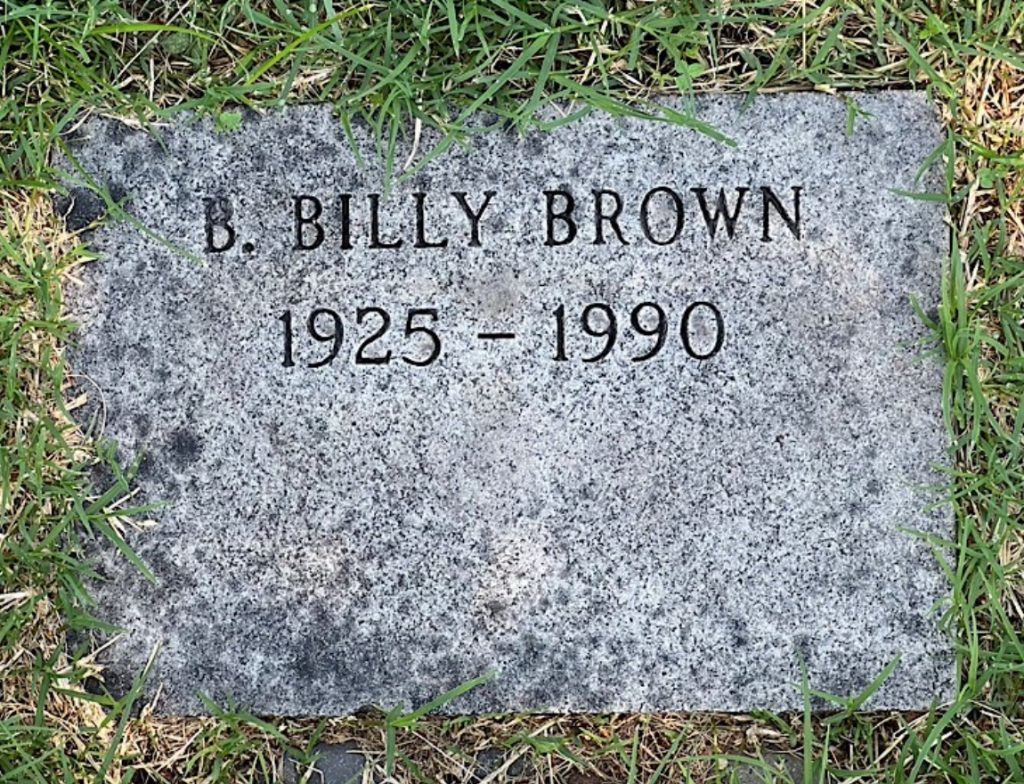
BRYAN, HARRY JOHN (1906-1969). Captain, Engineer Corps, United States Army. Harry John Bryan was born in Brooklyn to Harry W. and Anna F. Bryan. According to the 1910 federal census, Harry W., a butter and egg salesman, was born in Missouri, and Anna was born in New York. In addition to Harry John, the family consisted of his older sisters, Alice, Camilla, and Ruth.
By 1920, the family was living in Hackensack, New Jersey, and Harry W. was recorded by the federal census of that year as owning a produce warehouse. Two more children—William and Warren—had arrived. Harry W.’s parents, Henry, a naturalized citizen born in England, and Alice, born in Kentucky, also lived with the family. Ten years later, Harry was the oldest child at home in Maywood, New Jersey. According to that year’s federal census, he worked as an engineering contractor.
Harry Bryan married Lillian Elsbeth Friedlaender in Fort Lauderdale, Florida on February 10, 1939. He was 32 years old. Lillian, who had been living in Oakland, California, was divorced from her previous husband.
Bryan’s draft registration records his residence as Saddle River, New Jersey, and his employer as Tidewater Stone and Supply Company of Hackensack. He enlisted in the Army on July 8, 1943. He served in the engineer corps, which built, rebuilt, and sometimes blew up strategic bridges and roads; prepared landing areas for amphibious assault craft; and built fortifications, among many other construction/destruction projects, often in front of advancing enemy troops.
Bryan was discharged from service on February 2, 1946, but his engineering skills were called upon again in 1951, when he re-enlisted on January 14 and served in Korea, leaving the United States Army with the rank of captain on July 2, 1952.
According to a notice in The Herald-News, Bryan continued to live in Saddle River, New Jersey, until his death in August 1969. He was survived by two children, Joan, and H. John Bryan Jr. The latter applied for a military veteran’s headstone for his father’s grave. Section 111, lot 2019.
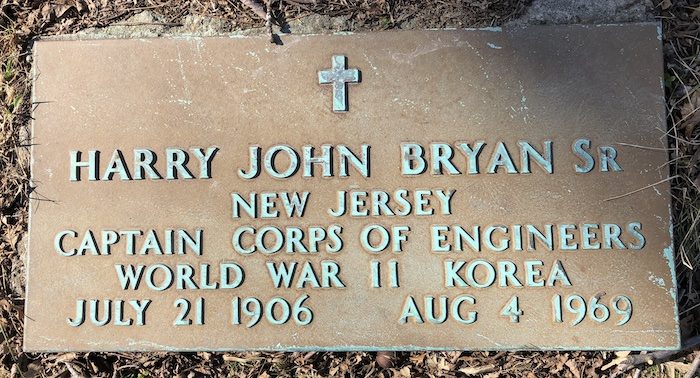
BUDGELL, FREDERICK (1929-2000). Private, United States Army. Budgell was born in Brooklyn. As per the 1930 census, he lived in Brooklyn with his Canadian-born and French-speaking parents and sister, who was born in New York; his father was an ironworker who settled in the United States in 1921. The 1940 census states that he lived in Brooklyn with his parents and siblings.
His obituary in the New York Daily News states that he was a World War II veteran. As per his daughter, Debra Healy, he served in Japan. Apparently, he served after the war ended during the Japanese Occupation. As per enlistment records, he enlisted as a private on at New York City on October 17, 1946. That document indicates that he was white, single and had completed two years of high school. That enlistment was also announced in the Brooklyn Citizen on October 22, 1946. As per the Denis Hamill article in the Daily News on June 19, 2005, Budgell met his wife in the lobby of the Sanders Theater (renamed the Pavilion) in Park Slope when he returned from post-World War II Japan in 1948.
He married Gertrude Kelly on August 5, 1949, and had nine children. He was a union ironworker in locals 40 and 361; he retired from the latter local after 45 years. His obituary notes that his funeral took place at the Memorial Baptist Church at 16th Street and Eighth Avenue in Brooklyn. Budgell was survived by his wife, children, fifteen grandchildren, two great-grandchildren, a brother and a sister.
On June 19, 2005, Denis Hamill wrote a feature article for Father’s Day in the New York Daily News celebrating Budgell’s life and the remembrances of his daughter, Susan Budgell. Susan noted that her father loved looking at his beloved New York City from atop its towers, where he worked on restorations as a union ironworker. She remembered that her father and grandfather worked together atop the Empire State Building; her grandfather also helped build the iconic Parachute Jump in Coney Island, a “vacation” spot for her family. She recalled that her father helped build the hangars at LaGuardia Airport, the Unisphere and Shea Stadium in Flushing and the Sheraton Hotel in Manhattan, among other edifices and bridges. Hamill notes that the steel structures were jobs that put food on the table but to his daughter were “timeless monuments to a father who would buy ice cream for all the kids on the block.”
Susan Budgell said of her father, “He enjoyed a beer and a ballgame and hard work. He never went to college, but he read library books about war, history, science. Especially astronomy. He set up a telescope on the roof and loved looking at the stars. Maybe because he spent so much time working up in the sky. …He instilled in us a deep sense of pride, independence and self-respect. He told us to get good educations so that we’d get good jobs and never have to rely on anyone.” Sadly, his life was also touched by tragedy. His younger brother died from a fall from a high iron job in 1970 and a grandson, Fred III, was murdered outside a bar in Park Slope in 1995. Budgell died from colon cancer, and after learning of his illness, bought a plot at Green-Wood, his own tombstone, and made his children promise to get colonoscopies—a procedure that would have saved his life. Section 61, lot 44703, grave 79.
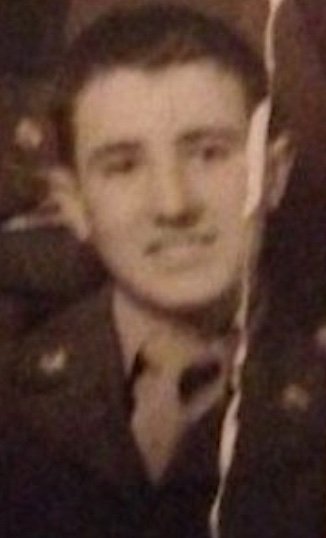

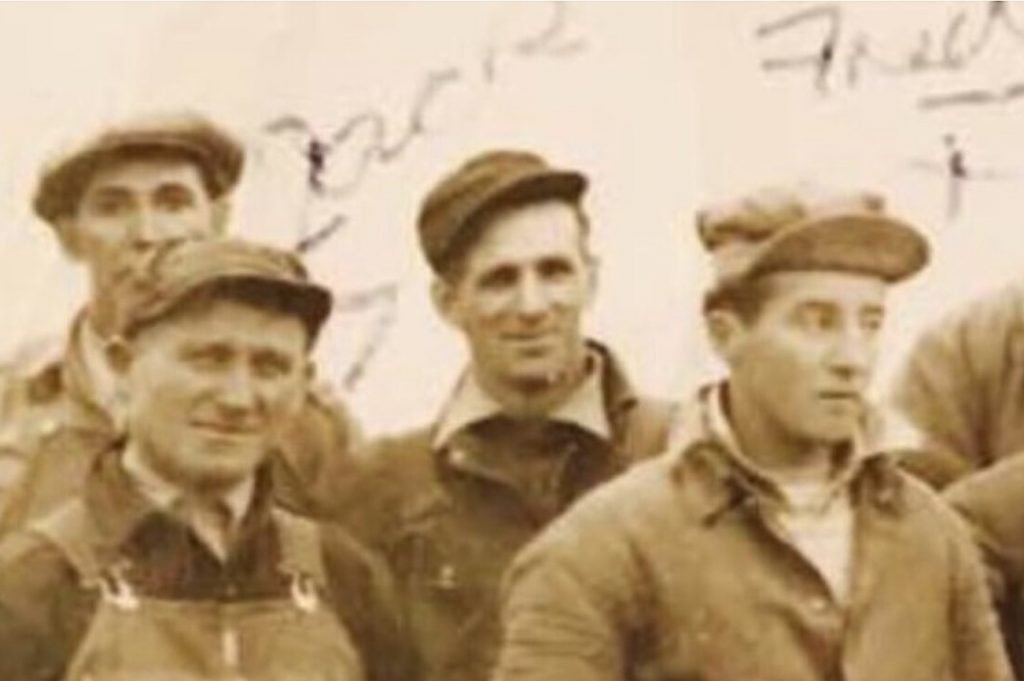

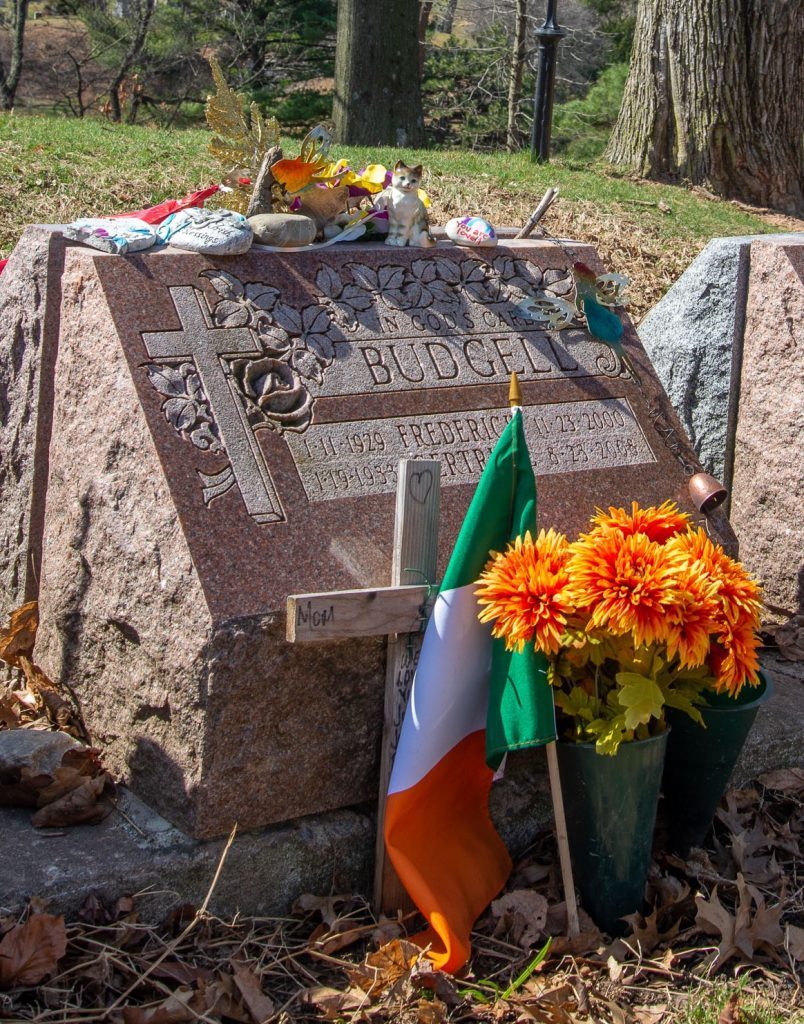
BUDINGTON, WILLIAM GUNTON (1915-2008). Lieutenant commander, United States Navy. Born in Michigan, the 1920 census reports that he resided with his parents, Walter and Cecilia, and his younger brother, Thomas G., in Brooklyn. His father was born in New York and his mother was born and baptized in Canada. According to the 1925 New York State census, the family resided in Orangetown in Rockland County, New York. As per the 1930 census, Budington’s father was a doctor. William Budington attended Columbia University and was a member of its track and field as well as touch football teams from 1934 to 1935. He was a major asset, and his accomplishments were reported numerous times in the Columbia Daily Spectator. Articles that cited his athleticism were published on March 5, 1934 (shot put), April 26, 1934 (javelin throw), May 15, 1934 (weight-throwing), November 8 and 26, 1934 (touch football) and, November 11, 1935 (discus throw). The June 5, 1934 issue reports that he was awarded a varsity insignia. In The Medical College Announcements for 1935-1936 from Cornell University Official Publication, he was admitted to the college under Clause II. Clause II states that “Seniors in good standing in approved colleges or scientific schools upon condition that their faculty will permit them to substitute the first year in Cornell University Medical College for the fourth year of their college course, and will confer upon them the bachelor’s degree upon the satisfactory completion of the first year’s work in medicine. No student admitted under this clause is permitted to enter the second year of the curriculum without having obtained a bachelor’s degree.” According to the Sept./Oct. ’08 Obituaries from the Cornell Alumni Magazine, Budington graduated in 1939.
The 1940 federal census records him as twenty-five years of age, single, an intern, and living at the United States Marine Hospital in Norfolk City, Virginia. On May 20, 1940, he was nominated as an assistant surgeon in the U.S. Public Health Service. His nomination was endorsed by President Franklin D. Roosevelt, is recorded in the Senate Congressional Record, and was confirmed by the Senate on June 26, 1943. He married Ann Gottenborg, born in Becker, Minnesota, in 1904, on October 19, 1940. The House Congressional Record states that he was confirmed as a temporary surgeon, effective August 1, 1944.
There are no records for his enlistment into the Navy. According to his nephew, he was stationed in “Iceland where he was helicoptered out to passing ships to administer to injured GIs.” Budington is listed on the Wall of Honor in the National Air and Space Museum of the Smithsonian. The inscription reads: “From March 1942 to February 1943 William Budington, M.D. served on North Atlantic convoy duty with the U.S. Coast Guard in the mid-ocean escort group. In 1944, he attended the U.S. Navy School of Aviation Medicine, Pensacola, Florida, before serving as flight surgeon at the Coast Guard Air Station, Elizabeth City, North Carolina. He participated in Air-Sea Rescue Operations at Coast Guard headquarters from 1945 to 1996.” As per his nephew, “After the war he was stationed in a service hospital near Chicago when penicillin became available for service members suffering from STDs (sexually transmitted diseases). He was the doctor in charge of two floors, one of which was veterans with STDs. After receiving a shipment of penicillin and administering it to all on the floor, the floor was empty in two days!” The October 1947 issue of the Coast Guard Bulletin reports that Budington was awarded a Commandant’s Citation.
According to an unspecified record for Ernest G. Budington, his uncle, Budington’s place of residence on February 17, 1948, was Washington D.C. As per the Journal of the Executive Proceedings of the Senate of the U.S. of America, he was confirmed as a senior surgeon on September 18, 1951. During a meeting of the Board of Medical Examiners of North Carolina, held from October 12th to 13th at the Washington Duke Hotel in Durham, he “was approved by the board for license to practice medicine in the State of North Carolina.” However, due to his failure to appear before the same board at a meeting held from June 15th to 19th, 1958, “it was resolved that the license of the physicians listed below (Budington included) be suspended for failure to register as requested by the General Statutes of N.C.”
His 1962 California voter registration card records that he lived at 752 S. Wilton Pl., Los Angeles, California, and his party affiliation was Republican. He is listed in the 1962 and 1966 California Physicians Directory, as well as the 1961, 1972, 1973, and 1979 Directory of Aviation Medical Examiners. An overview blurb from his Seal Beach Practice states that “Dr. Budington graduated from Weill Cornell Medical College in 1939. He works in Orange, CA and specializes in Diagnostic Radiology, Occupational Medicine and Physical Medicine and Rehabilitation.”
Budington’s wife passed away in California in August 1998. The couple had no children. His residence was 10547 Mohegan Lake, Westchester, New York. He is buried with his parents and grandparents. Budington’s brother, Thomas, passed away on May 17, 1990, but is not buried at Green-Wood Cemetery. His nephew relates that, “My father (who also graduated from Columbia & Cornell and was a POW in Stalag 3C) and mother are buried in Westchester Co. as our mother was a Bronx girl and did not want to be buried in Brooklyn!” In 2008, Budington’s 1916 baby book entitled, “Baby’s First Birthday” was found at a garage sale in Seal Beach. Section 196, lot 31910.
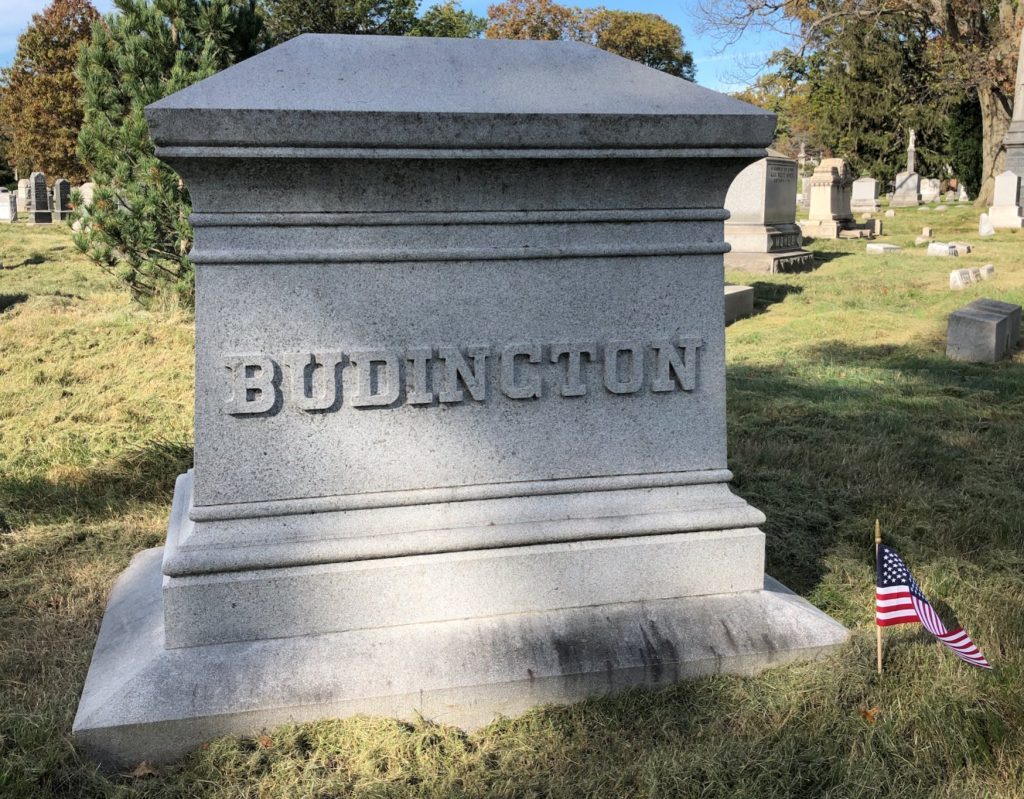
BUONO, ANTHONY STEPHEN (1926-1994). Private first class, Supply and Maintenance Battalion, Fleet Marine Force Pacific, United States Marines. Buono was born in Brooklyn. The 1940 census notes that his father, who owned a drugstore, and mother, a housewife, were both born in New York. All four grandparents were born in Italy. Anthony lived then with his parents and younger sister, Emily, at 135 Carroll Street in Brooklyn. In 1944, when Anthony was 18 and registering for the draft, he lived with his family on 6th Avenue in Brooklyn and worked for Jarka Corporation, one of the world’s largest stevedoring companies, at the Brooklyn Army Base.
Soon after, by April of 1945, he had enlisted in the Marines, according to the muster roll at Parris Island, South Carolina, the site of the Marine Corps boot camp. He then spent the rest of 1945 and at least until July 1946 in Guam, in the Mariana Islands. The muster roll of the 5th Service Depot, Service Command, lists his duty as “ck striker” in the HQ command; he was probably training as a clerk. The Battle of Guam, in which Americans recaptured the United States territory from the Japanese, took place from July 21 through August 10, 1944. Guam then became a base for Allied operations; five airfields were built there to serve the B-29 bombers attacking targets in the Western Pacific and on mainland Japan. Buono was a part of that enormous effort to support the final push to the war’s end in August 1945.
Buono returned to Brooklyn after his discharge for what became a lifetime of interesting occupations. According to his grandson Robert Nash, he worked as a chef at the Hotel St. George in Brooklyn Heights, as a union longshoreman on the Brooklyn docks, as a taxi driver, and as an NYPD police officer in Brooklyn’s 66th Precinct. Some of his crime-fighting exploits, including a high-speed car chase, were noted in news reports of the time. Upon retiring after 20 years with the NYPD, Buono pursued several other business interests. According to his grandson, he became a licensed dietician, owned and managed Brooklyn rental real estate as well as a fruit store and a dress factory, and bought and sold stocks, antiques and coins. He also was an avid pigeon flyer. Buono married Eleanor Joan Santillo, who died in 1998, and is buried alongside her husband and in-laws.
Robert Nash had this to say about his grandfather: “He was a proud American of Italian descent. America always came first in my grandfather’s eyes and he taught his family to act accordingly. To this day, in and around the area where he raised his children, (80th Street and 13th Avenue), you could ask the old timers about him and I guarantee you, if they knew him, they have fond memories of my grandfather. He was loved by all, showed his love through generosity, was understanding, strong, wise, and was an amazing man.” Section 109, lot 42261.
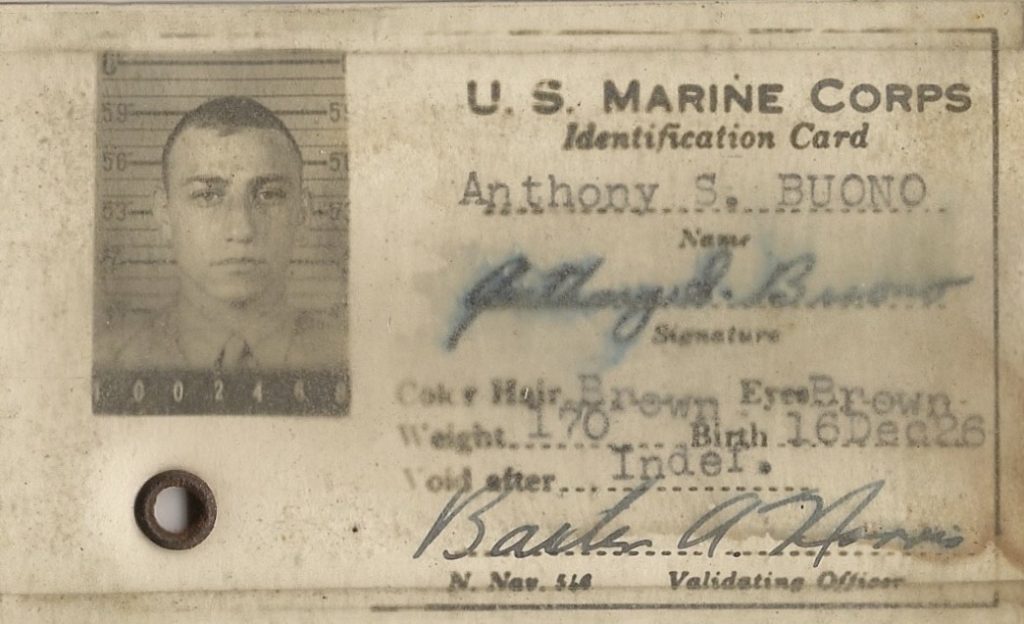
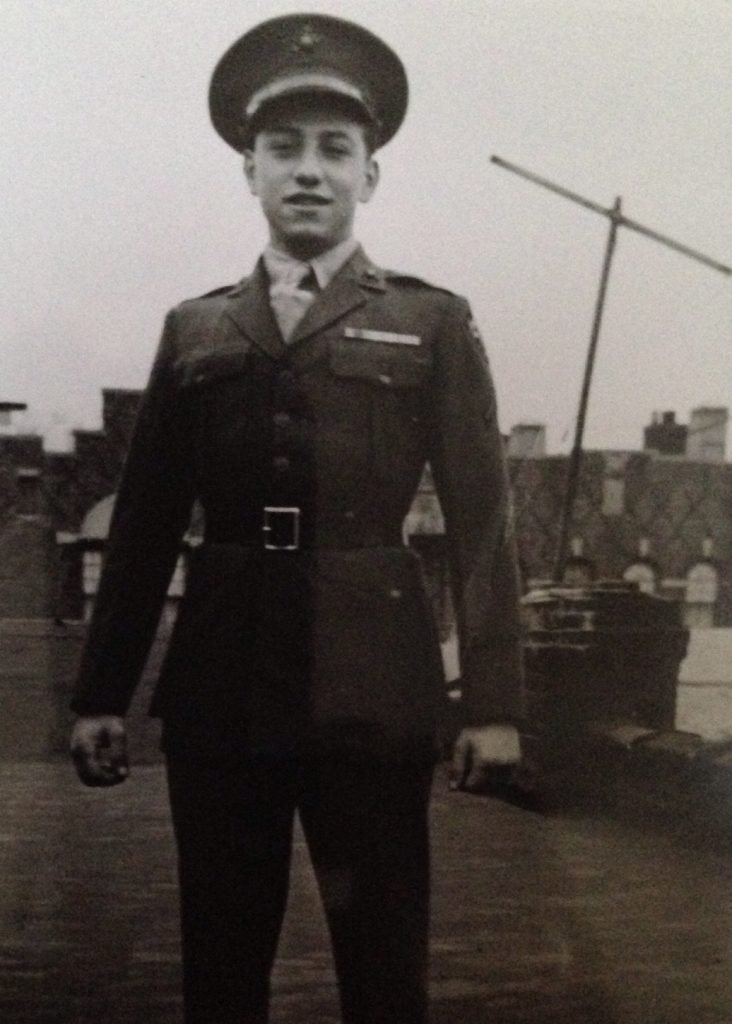
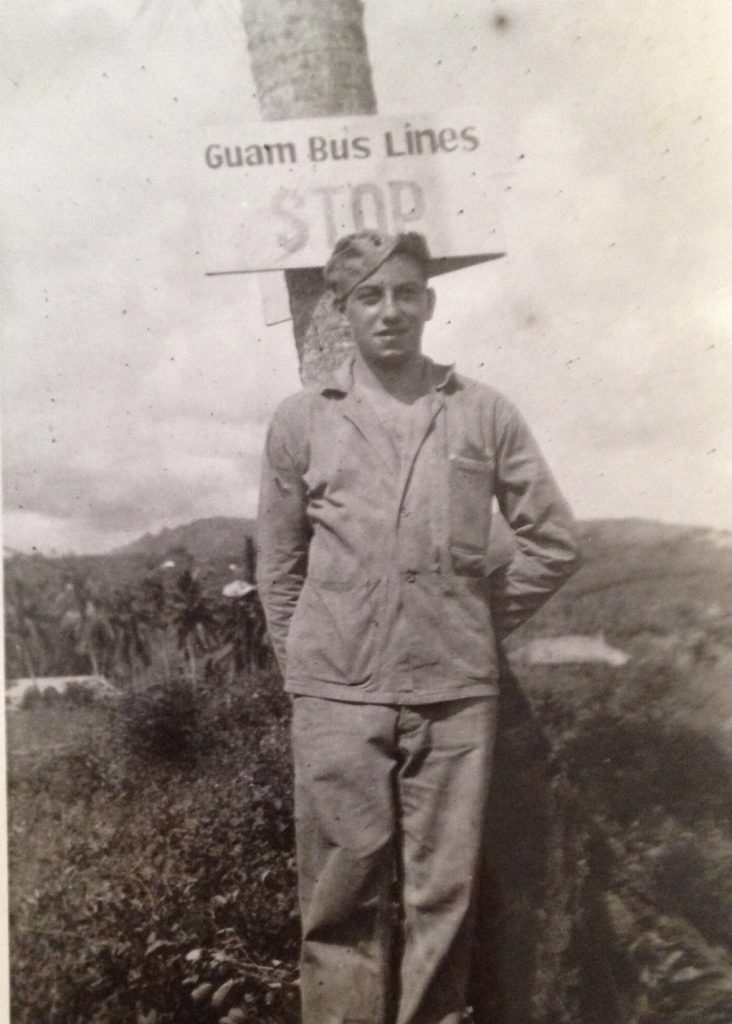
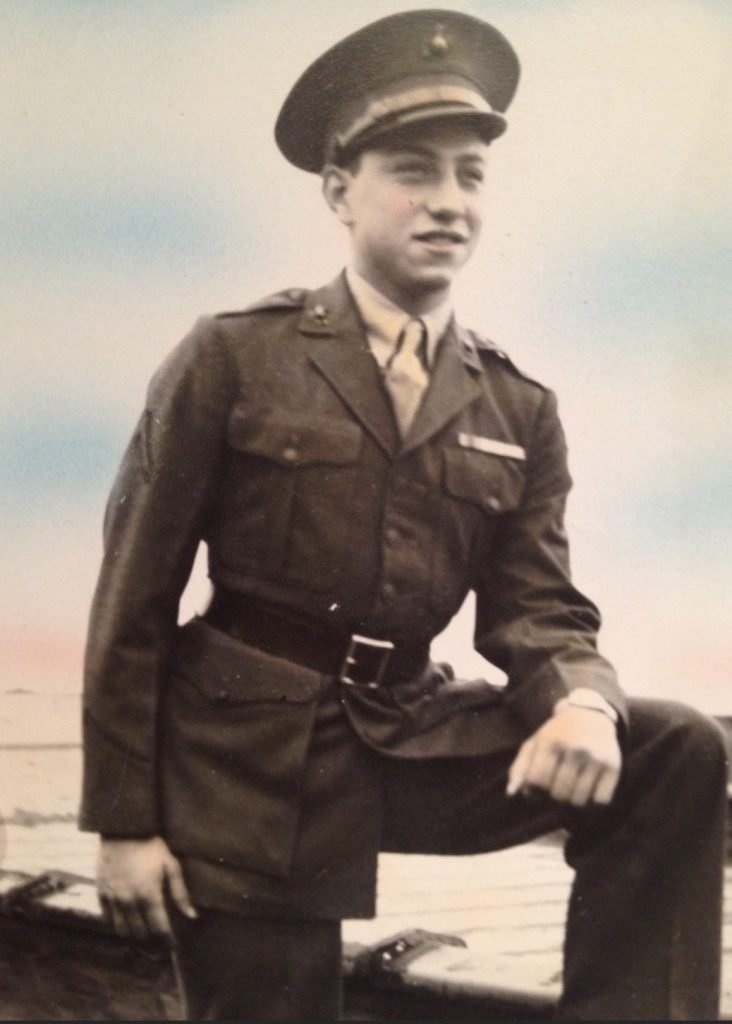
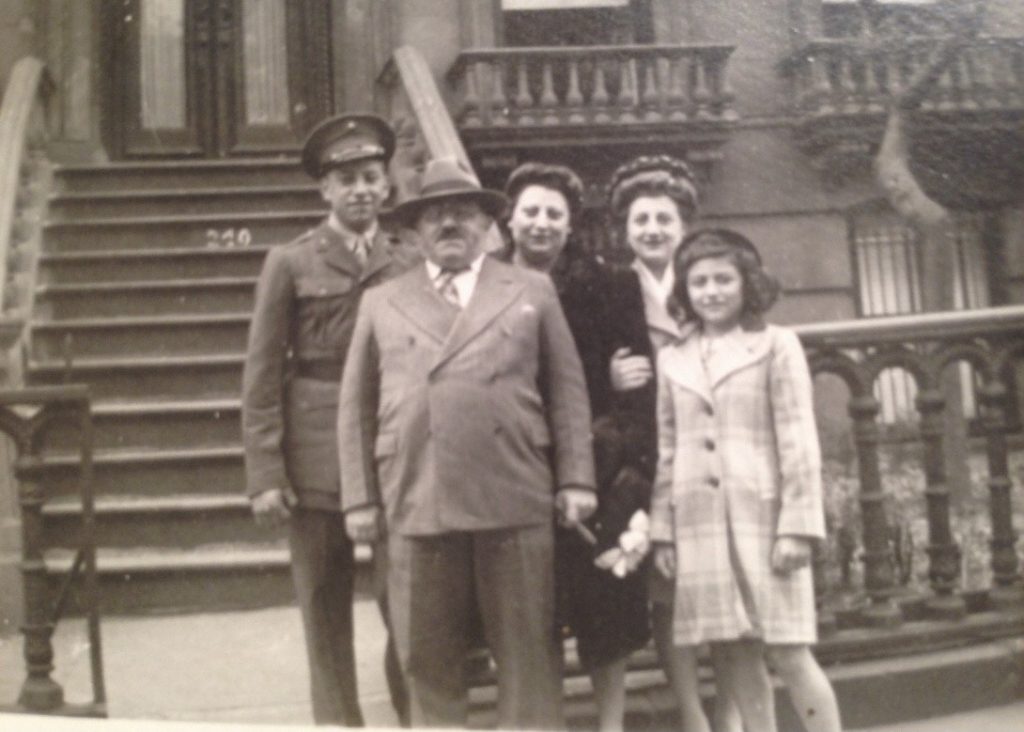
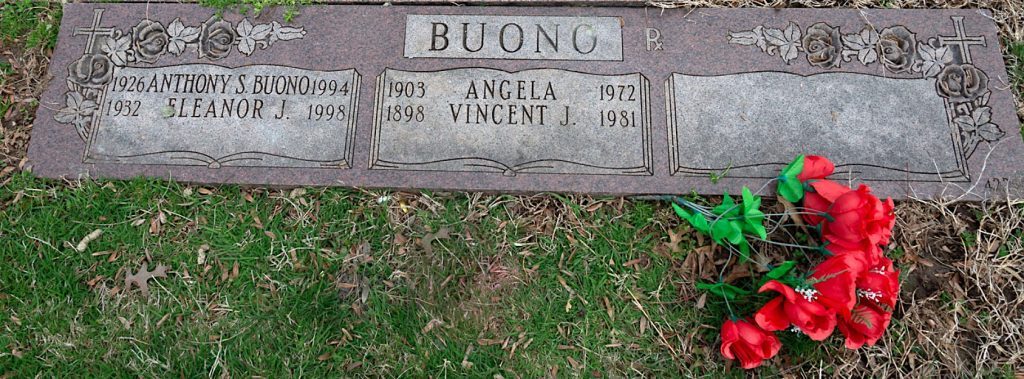
BUONOCORE, RALPH (or LEW) (1912-2002). Private first class, Troop “A”, 89th Cavalry Reconnaissance Squadron, United States Army. Ralph Buonocore was born in Brooklyn. The inscription on the headstone at his final resting place in Green-Wood indicates Buonocore sometimes went by the nickname “Lew.”
Buonocore grew up in Red Hook, Brooklyn, as one of nine siblings born to Italian immigrant parents, Anthony and Josephine Buonocore. Ralph, his two brothers; Francis and Joseph, and his six sisters; Emanuella, Marie, Diamante, Anna, Carmela, and Rose, were all born in the United States. According to the 1920 census, the family resided in a house on Van Brunt Street, followed by a house on Coffey Street, according to the 1930 census. Buonocore’s father provided for his family by working as a longshoreman for many years, according to the New York State and federal censuses from 1915, 1920, and 1930.
Ralph Buonocore received a grammar school education. While he was a student, his oldest brother, Joseph, worked as an electrician, and his sisters, Emanuella, Marie, and Diamante, worked as dressmakers. Upon leaving school, Buonocore followed in his older brother’s footsteps, taking up work as an electrician in a shop, according to the 1930 census.
Buonocore registered for the draft on October 16, 1940. On his draft registration card, he listed his address as 90 Wolcott Street, Brooklyn. According to the 1940 United States federal census he was living at this address with his parents and his youngest sister, Rose. At the time of registration, Buonocore was 28 years old and employed at Acorn Insulated Wire Company, in Brooklyn. According to the information he provided, Buonocore was 5′ 3″ tall and 128 pounds. Another detail included on the registration card was that he was missing part of the third finger on his right hand.
According to Ralph’s nephew, he served in Troop A, in the 89th Cavalry Reconnaissance Squadron, and was stationed in Africa, Italy, France, and Germany. His nephew provided a photograph of a patch from that squadron and reported his uncle’s rank as private first class. The 89th Cavalry Reconnaissance Squadron is included in a list of World War II American Mechanized Cavalry Reconnaissance Squadron and Armored Reconnaissance Battalion Profiles, provided by author Harry Yeide. According to Yeide, the squadron was formed in July 1941 as Troop A (Buonocore’s troop), and went on to participate in actions across Europe, from the United Kingdom to Luxembourg, Belgium, and locations along the Rhine River.
Buonocore returned to Brooklyn after the war and, according to the United States Marriage License Index provided by Ancestry.com, he was married in 1954 to Louise Caramico. Louise died in 1995 and was buried at Green-Wood. Buonocore died seven years later on December 30, 2002. The couple’s names are listed together on their shared gravestone. Section 6, lot 39360, grave 435.


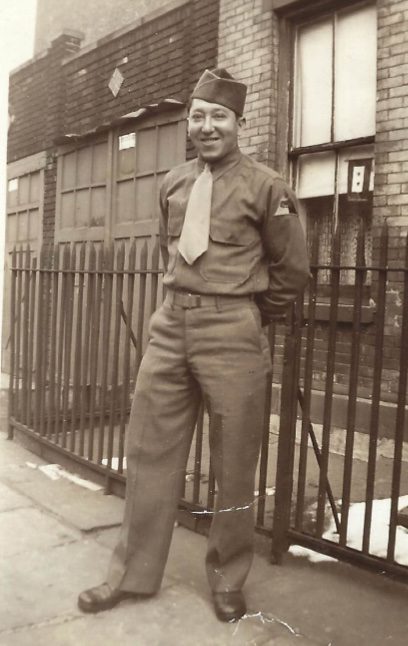
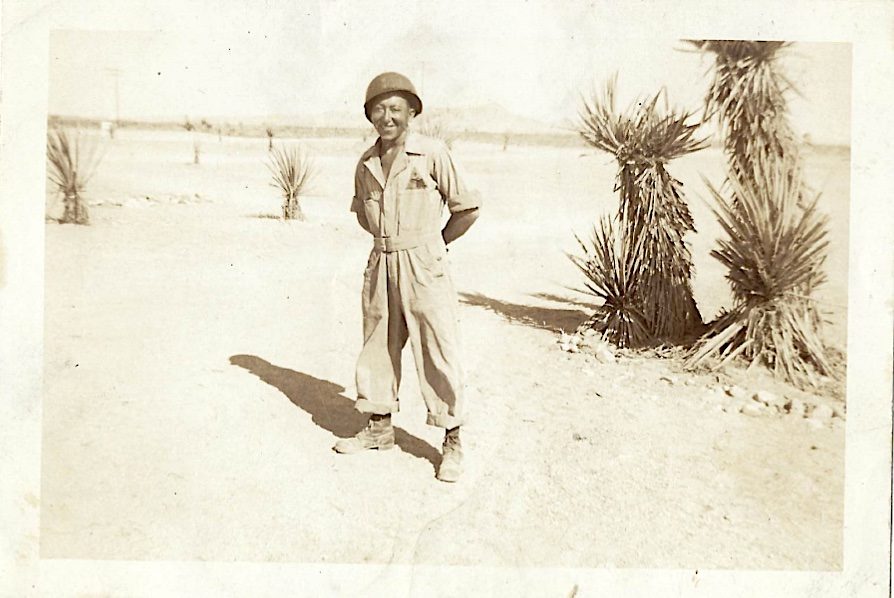
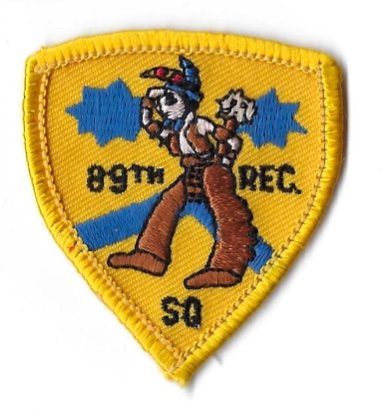
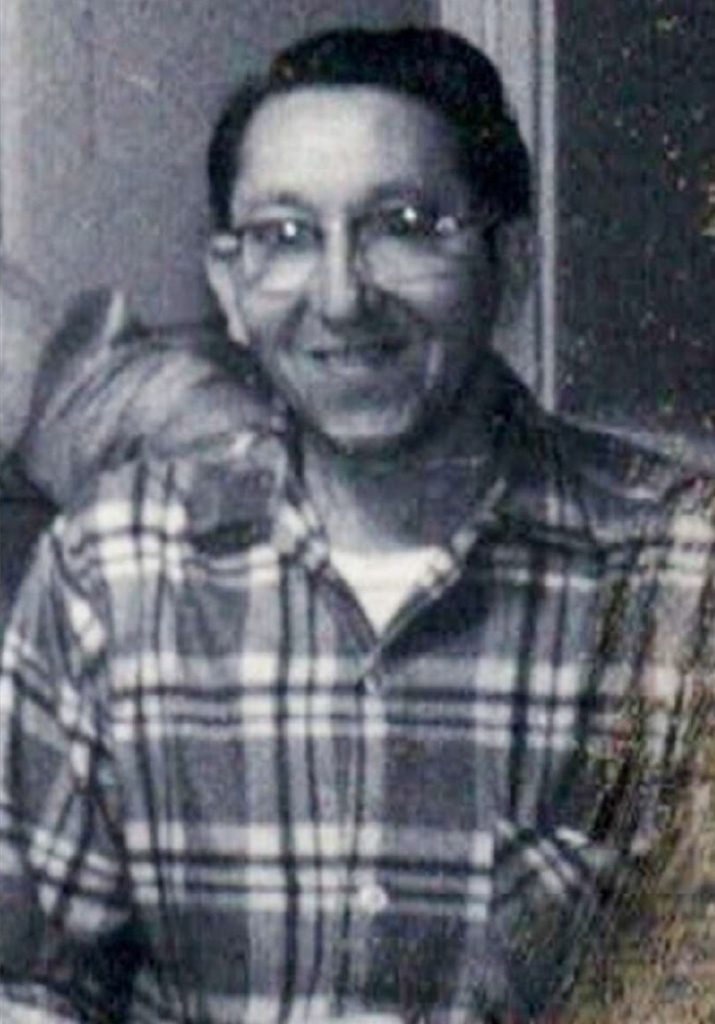
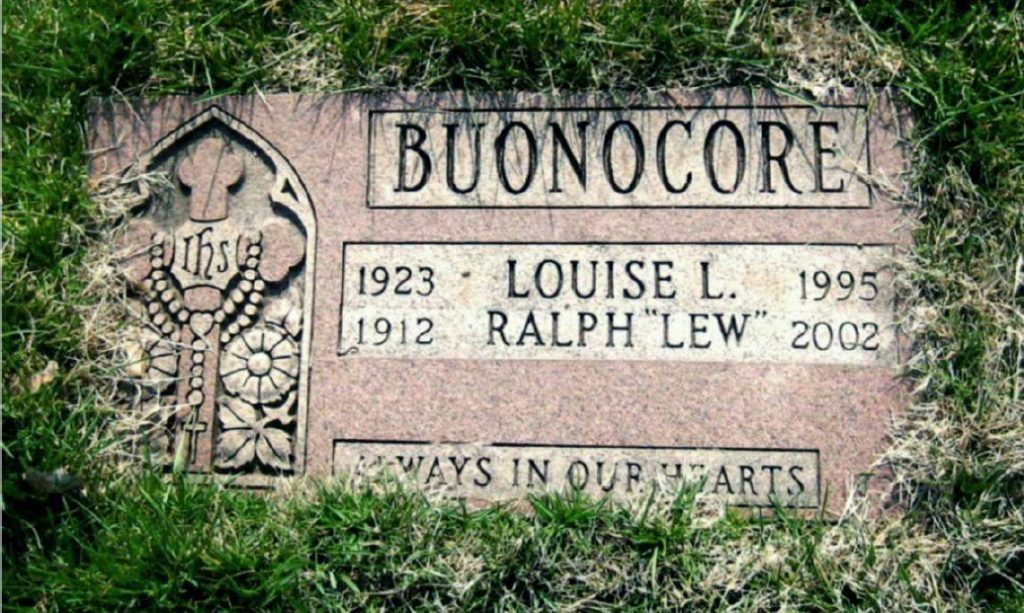
BUSCHEN, ROBERT H. (1925-1945). Private first class, 271st Infantry, Company G, 69th Infantry Division, United States Army. Robert “Bob” Buschen was born to Henry and Edna Buschen. He was their only child. Buschen’s father was a German immigrant and his mother was American born. Two months after Buschen’s birth, on January 17, 1926, his mother passed away.
According to the 1930 census, at age four, Buschen was living with his father and his maternal grandparents, Edward and Mary I. Brown. His grandfather was listed as the head of household. The extended family members lived together under one roof in Queens, New York. Buschen’s father worked as an estimator in the building construction industry and his grandfather worked as an executive at a wholesale and retail book company.
The 1940 census reports Buschen as residing solely with his grandparents at the same address in Queens. According to Ancestry.com, the SJD Family Tree, Robert’s father got remarried to Hazel Florence Carlock and the couple had two daughters, Diane F. and Marylin V. Buschen.
After grade school, Buschen went on to attend Richmond Hill High School in Queens. In his high school yearbook he is seen posing for a group photo with the Sixth Term Arista group, also known as the National Honor Society at Richmond Hill High. The photo’s caption indicates that Buschen served as the president of this group and along with the other members, he is credited with hosting impressive theatrical performances and school events.
After graduating from Richmond Hill High School in 1942, Buschen attended Norwich University, a private military college in Vermont. A Norwich University yearbook includes testimonies from his past teachers, describing Buschen as “popular, versatile, and modest.” The teachers refer to him as “Bob” and paint a picture of a well-rounded student, adding that he had been “a Scout leader, active in dramatic productions, and graduated second in his class.”
According to his draft registration card, Buschen registered for the draft three days after his eighteenth birthday, on November 13, 1943. He had brown hair and blue eyes, 5′ 10″ tall and 163 pounds. He also listed a scar on his left index finger as an identifying physical feature. The World War II Army enlistment records show Buschen enlisted in the United States Army on January 28, 1944 as a private.
Buschen left school and turned down an opportunity to go to the United States Military Academy at West Point in order to join the war effort overseas, as per the Norwich University yearbook. According to the Rosters of World War II Dead, Buschen was promoted from private to private first class during his military service.
The Norwich University yearbook biography describes Buschen’s military service in more detail:
He was a member of Company G of the 271st Infantry in their advance toward Dickenshied, Germany, in the Siegfried Line. On February 28, 1945, after ten days of active combat in which he had earned the Combat Infantry Badge, he was killed by enemy machine gun fire after exposing himself so that he could deliver fire.
This information is confirmed by United States World War II Hospital Admission Card Files, 1942-1954 on Ancestry.com, which recorded the diagnosis for Buschen as “killed in action.”
The efforts of the 271st Infantry, 69th Division are memorialized by Lt. John F. Higgins, 2nd Battalion, in his book Trespass Against Them: History of the 271st Infantry Regiment. The text includes specific information about Company G during February 27-28, 1945.
An obituary in the Brooklyn Daily Eagle published Buschen’s death on March 16, 1945. He died at nineteen years old. Though originally buried in the Henri Chapelle Cemetery in Belgium, his remains were eventually repatriated to Green-Wood Cemetery.
According to America’s World War II Burial Program, the repatriation of the remains of American soldiers who were killed in action was delayed until at least two years after the end of World War II. Identification and exhumations of remains took place concurrently in Europe and the Pacific. Depending on family decisions, the bodies were moved to a permanent overseas cemetery. Buschen was buried at Green-Wood Cemetery on November 22, 1947. He shares a gravestone with his late mother, Edna Buschen. Section 200, lot 34024.
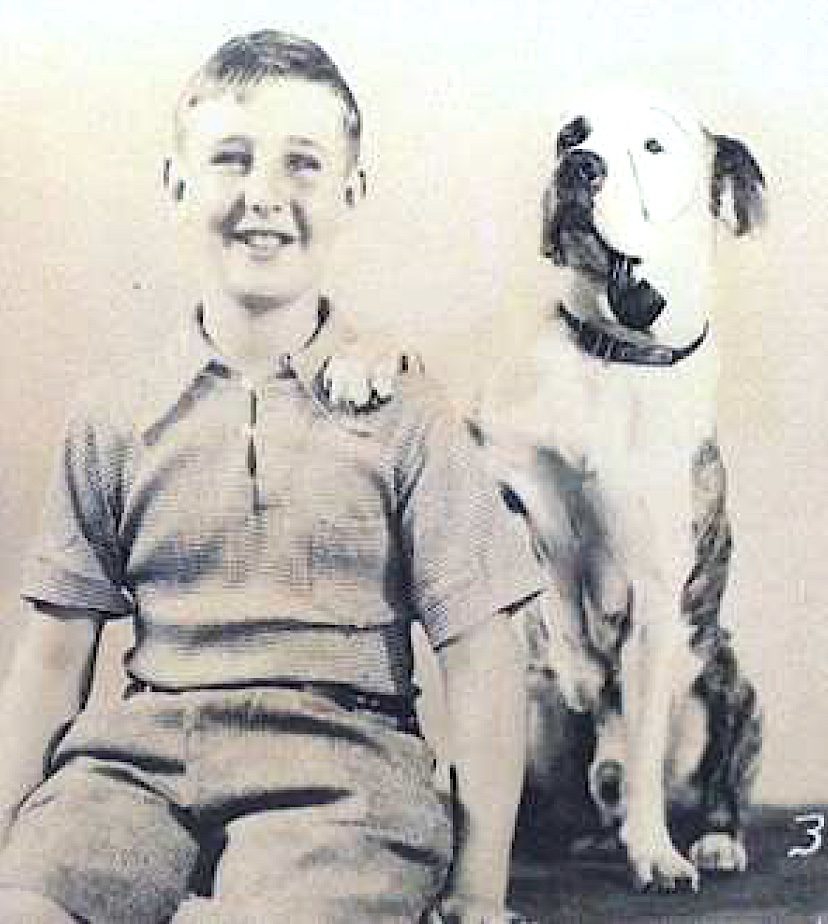
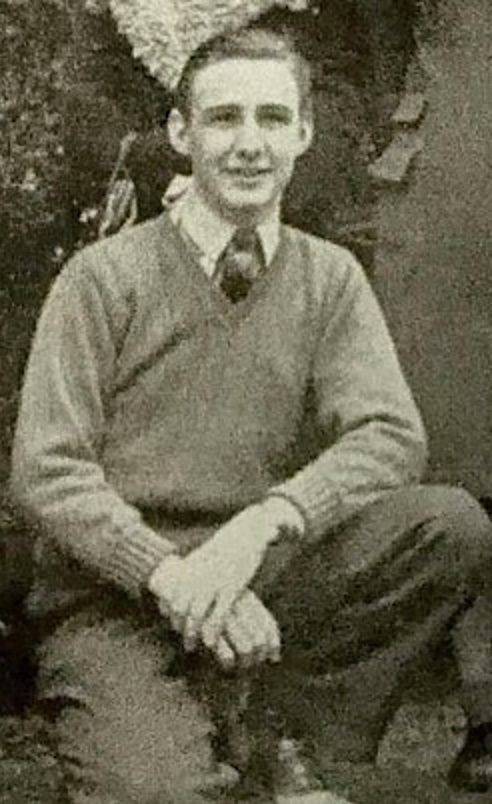
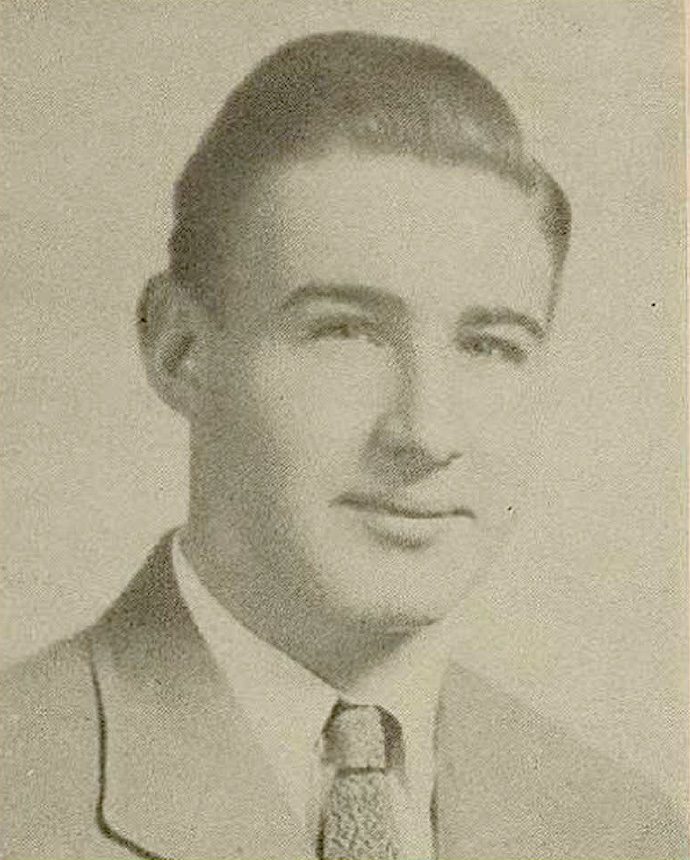
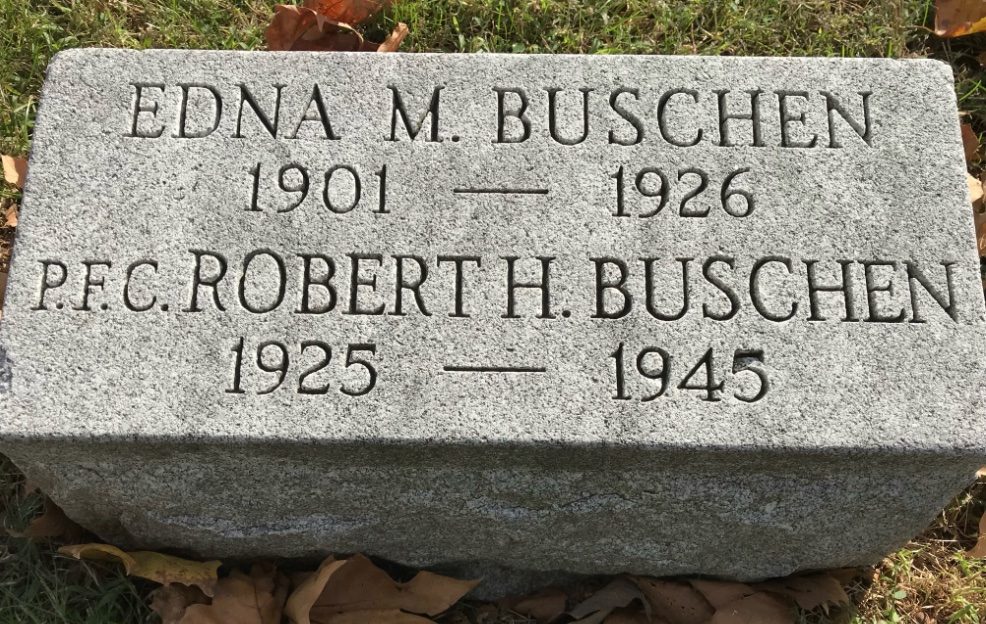
BUTLER, JOHN E. (19123-1944). Second lieutenant, 15th Air Force, 461st Bombardment Group, 766th Bomb Squad, United States Army Air Force. John was in Brooklyn. As per the 1940 federal census, his parents, Eugene and Loretta, owned their house at 6646 Sedgwick Place, Brooklyn. They had two children living at home, Eleanor, 19 years old, and John, 17. Little is known about John’s early life. From an article in The Brooklyn Daily Eagle, published upon his death, we know that he attended St. Saviour’s School and St. Francis Preparatory School.
Butler’s World Word II draft enlistment card records he was nineteen years old when he registered on June 30, 1942, and describes him as 5′ 9″ tall and 160 pounds with hazel eyes, brown hair, and a ruddy complexion. At the time of the registration, he was not employed and his mother is listed as next of kin. As per the Application for Headstone or Marker, submitted by his mother, his enlistment date was January 7, 1943, his rank is second lieutenant, and he served in the 15th Air Force, 461st Bomb Group, 766th Bomb Squad. According to the website of the Army Air Corps Library and Museum:
The 15th Air Force’s primary function was strategic bombardment of Italy, France, Germany, Romania, Hungary, Poland, Czechoslovakia, Austria, Yugoslavia and Greece. It was constituted as the Fifteenth Air Force on October 30, 1943 and activated in the Mediterranean theater on November 1, 1943. Operations began on November 2 and it was inactivated in Italy on September 15, 1945. Its personnel were stationed at Tunis, Tunisia, November 1, 1943; Bari, Italy, December 1, 1943-15 Sep 1945. This unit saw action in: Air Combat, the European-African-Middle Eastern Theater; Air Offensive, Europe; Naples-Foggia; Anzio; Rome-Arno; Normandy; Northern France; Southern France; North Apennines; Rhineland; Central Europe; Po Valley.
Given that John’s tour of duty began on January 7, 1943 and ended on October 18, 1944, he most likely participated in the following 461st Bombardment Group events as described by the Army Air Corps Library and Museum:
The group was constituted as 461st Bombardment Group (Heavy) on May 19, 1943. It was activated on July 1, 1943. It moved to the Mediterranean theater, Jan-Feb 1944, the air echelon flying B-24’s via the South Atlantic and stopping in North Africa before joining the ground echelon in Italy. Began combat with Fifteenth Air Force in Apr 1944. Engaged chiefly in bombardment of communications, industries, and other strategic objectives in Italy, France, Germany, Czechoslovakia, Hungary, Austria, Rumania, Yugoslavia, and Greece. Supported Fifteenth AF’s counter-air operations by bombing enemy airdromes and aircraft centers, receiving a DUC (ribbon) for a mission on April 13, 1944 when the group battled its way through enemy defenses to attack an aircraft components plant in Budapest. Participated in the effort against the enemy’s oil supply by flying missions to such oil centers as Brux, Blechhammer, Moosbierbaum, Vienna, and Ploesti. Received second DUC for a mission against oil facilities at Ploesti in July 1944 when, despite flak, clouds, smoke, and fighter attacks, the group bombed its objective. Also operated in support of ground forces and flew some interdictory missions. Hit artillery positions in support of the invasion of Southern France in August 1944 and flew supply missions to France in September.
Sadly, John passed away on October 18, 1944 when his B-24 J aircraft crashed while on a mission in Italy. Details regarding this unfortunate incident are documented in various reports. According to The Missing Air Crew Report from the War Department Headquarters Army Air Forces, dated October 19, 1944, the event occurred in Torretta, Italy. John and his crew members were on a combat mission flying to Linz, Austria. The aircraft was believed to be lost as a result of enemy aircraft. There were ten crew members on board: 2nd Lt. Roy Kuhlman, pilot; 2nd Lt. Thomas Keeney, co-pilot; 2nd Lt. Robert Hays, navigator; T/Sgt. Wiley Hawkins, waist gunner; T/Sgt. Richard Reichard, waist gunner; Pfc. Dale Van Gundy, tail gunner; Pfc. John Hovancik, tail gunner; S/Sgt. Joseph Horanzy, ball turret gunner; S/Sgt Robert Vallee, tail gunner; and, John Butler, bombardier.
In a statement given by 1st Lieutenant Stanley O. Hutchinson, he relates:
I was leading “B” Flight, 1st attack unit on October 16, 1944. Airplane #45 was flying no 5 position and I was under the impression he was in formation until 1315 hours which put us close to the coast of Italy. He was calling us on the radio the entire mission at about 15-minute intervals. He wasn’t receiving because he never answered the planes calling. His transmissions were loud and clear and the last contact he tried to make was 1325 which was very clear. No message was given.
Another report, from Teddy Plowman, dated December 22, 1944, reads:
Ten airmen bailed out about October 17 at Vazariste in Goapic area. This refers to your #49. Plane crashed and burned. Partisan Terenski Radnici were in region where 6 dropped. Butler and Haynes not able to walk and were secreted in woods and the remaining 4 were smuggled through to me. Regard to my 28 of 22 October. A Ustashi Patrol found out the location of Butler and Hayes and 2 days later attacked them. One Partisan was wounded twice, but escaped, one Partisan was killed. Hayes and Butler were machine gunned at once and stripped of their personal goods. Thereafter, Ustashi left. Bodies later buried together in woods at Buzin Selo. Three others of crew dropped beside a Utashi barracks at Gudin-Klanac. They were put to death and stripped the next morning. Places of burial unknown. Other crew member landed at Jadovno. Was found by Terenski Radnici, who later infiltrated him to Ciasth source in 35 Division and questioning of twice wounded Partisan by myself.
According to the Report on Shot-Down Aircraft, the casualty number is ME-2314, the place of crash was Kroation, and the type of aircraft was a Liberator. As per this report, three crew members, Second Lieutenant Thomas Keeney, Second Lieutenant Roy Kuhlman, and Sergeant Dale Van Gundy, were captured.
An excerpt from The Brooklyn Daily Eagle’s article entitled “Lt. John E. Butler, of 15th Air Force,” published on June 17, 1949, reports: “A solemn requiem mass for Lt. John E. Butler was offered recently in Our Lady of Angels Roman Catholic Church, 4th Avenue and 74th Street…. Lieutenant Butler, who was assigned to the 15th Air Force in Italy, died of wounds after his plane was shot down by flak on October 18. 1944.” In 1949, Loretta M. Butler, his mother, applied to the federal government for an upright marble headstone to mark his grave. Section 19, lot 5397, grave RRC.
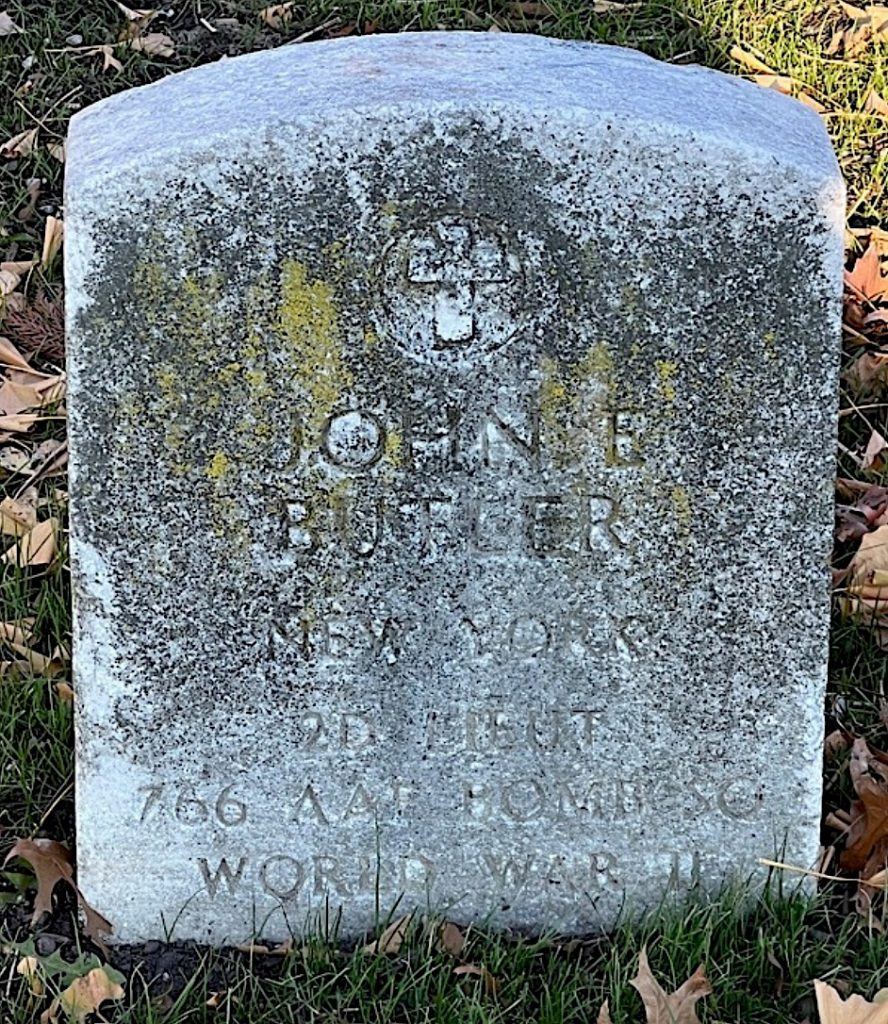
BYRD, JR., GEORGE WALTER (1919-2007). Captain, 13th Armored Division, United States Army. George W. Byrd was born in Jefferson County, Florida, to George Sr., and Mattie Byrd. According to the 1920 federal census, infant George was living with his parents and older sisters Hazel and Alline in Midway, Florida, where his father was working as a farmer.
Ten years later, the Byrd family had added another daughter, Lois, and had moved to Crestview, Florida. George Sr. was working as a contractor, building roads. By the time of the 1935 Florida State census, the Byrd family had relocated to Pahokee, Florida. George Sr. had returned to farming, and 16-year-old George was a student at Pahokee High School.
In 1940, according to that year’s federal census, 21-year-old George was a junior at the University of Florida in Gainesville. In June of that year, he attended ROTC camp at Fort McClellan, Alabama, as reported in the Palm Beach Post. In October, he was appointed as a second lieutenant cadet officer in the university’s artillery ROTC regiment. After his graduation from the University of Florida, in June 1941, George Byrd entered active service in the United States Army.
In March 1943, Byrd, who was stationed at Camp Beale, California, in the 13th Armored Division, received a promotion to captain, according to the Miami Herald. Two months later, he married Rose Roberta Giglio in Katonah, New York. At the end of his 20-day furlough, he reported back to active service at Camp Beale, with his bride.
The 13th Armored Division, known as the Black Cats, arrived in France in January 1945, and remained in Europe until July, when it returned to California. At some point after 1944, Byrd must have been transferred to a motorized division (probably the 1st Armored) that participated in the spring 1945 Italian campaigns in Bologna and the Po Valley; according to his obituary, George was there.
The Miami Herald noted Captain Byrd’s return to the United States in July 1945, after four months as an instructor for the “the motorized units in the Armored Infantry division.” Three weeks later, the Palm Beach Post reported Byrd’s new assignment to the staff and faculty of the Field Artillery School at Fort Sill, Oklahoma. George, Rose, and their one-year-old daughter, Claudia, would live in Lawton, Oklahoma.
Although Byrd returned safely from Europe, his family did not escape tragedy. His brother-in-law, Francis Angelo “Frank” Giglio (see), a Marine, was killed in action in Okinawa, Japan, in April 1945, in the final, brutal phase of the war. Frank was one month shy of his 19th birthday and had been in the Marines for less than a year. He is also buried in Green-Wood.
By the end of 1951, the Byrd family was living on Long Island, New York; once again, it was the Palm Beach Post that reported the November birth of George’s son, George III, in Lynbrook. Byrd became a high school auto mechanics teacher, a logical outgrowth of his wartime and postwar experiences in training and instruction. He was shown in the 1966 yearbook for Earl Vandermeullen High School in Port Jefferson, New York. According to his obituary, he had also been a college professor at State University of New York— Farmingdale, on Long Island. Section 128, lot 37296, grave 5.
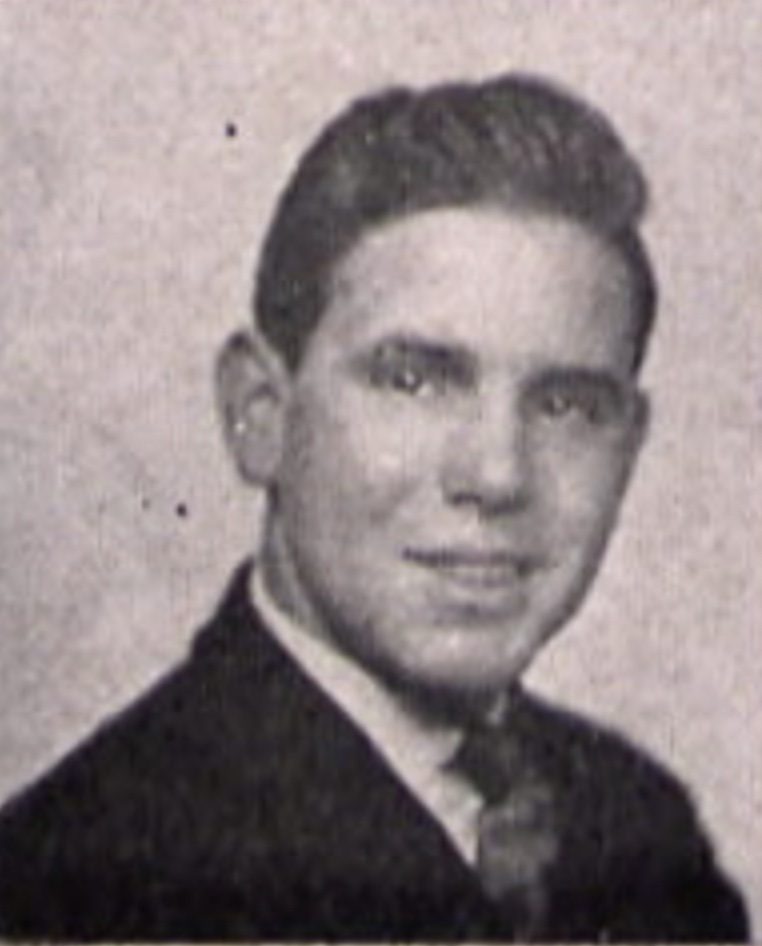

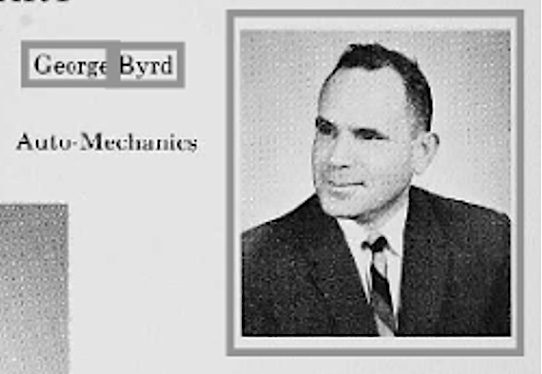
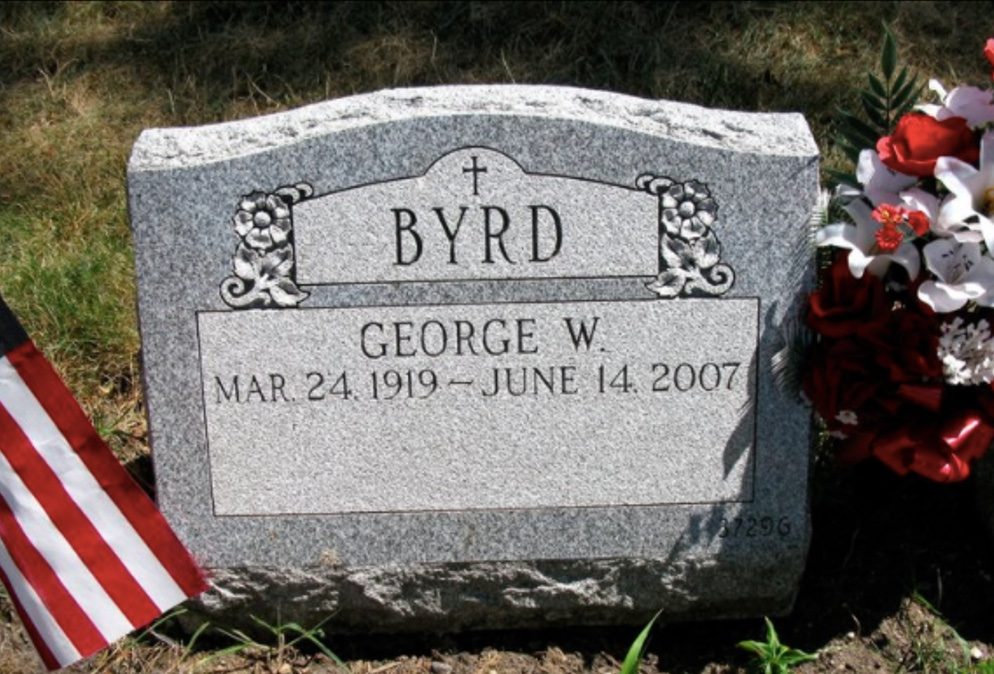
CALACANIS (or KALACANIS), GEORGE JOHN (1916- 1976).Corporal, United States Marine Corps Forces Reserve. George Calacanis was born in Manhattan to parents John and Mary Calacanis, both immigrants from Greece. The 1920 federal census shows that Calacanis’s two oldest siblings were born in Greece, while the rest of his siblings were born in New York City. The family moved several times during his childhood, relocating to the Bronx, where Calacanis’s father worked as a hotel proprietor, and then to South Brooklyn, where the family was living in 1925 when Calacanis’s father died. In 1930, George Calacanis was listed in The Brooklyn Eagle as a graduate of Dewey Junior High School. He went to high school for three years, and remained in Brooklyn until 1940, where the federal census lists him as a clerk in the retail fruit business. However, by the fall of 1940, he was in Greenwich, Connecticut, where he filed his draft registration form. The form describes him as 5′ 11″ tall, weighing 190 pounds, having brown hair with black eyes, and a scar on his right cheek near his mouth.
Calacanis first appeared on United States Marine Corps muster rolls in 1942, when he was sent to the Marine Corps Recruit Depot at Parris Island, South Carolina. At the time, Calacanis’s uncle, Angelo Kaliakoudas, was serving as a merchant marine on the Steamship Coamo. Kaliakoudas was one of the 186 personnel and crew who perished when the Coamo was torpedoed by a German U-boat, the greatest single loss on any United States flag merchant vessel during World War II. During this tragedy, Calacanis was on the other side of the world, serving as a corporal in Company K, 3rd Battalion, 3rd Marines, 2nd Brigade, a unit that was deployed to the Pacific, including American Samoa, New Zealand, and Guadalcanal. In 1943, the 3rd Battalion was part of the Bouganville campaign, where it suffered numerous casualties from Japanese mortar and artillery fire. In 1944, muster rolls indicate that Calacanis was wounded in action in the Mariana Islands, suffering shrapnel wounds to his feet. He was removed to San Diego in 1945, where he was honorably discharged.
By 1954, Calacanis was back in Brooklyn, where he and Lena Katavolos married. A daughter, Mary, followed in 1955, and a son, Michael, in 1956. Calacanis was remarried to Anne Adinolfi in 1974, and remained living in Brooklyn with her until his death in 1976. He was survived by Anne, his children, Mary and Michael, and four of his siblings. Section 66, lot 38661.

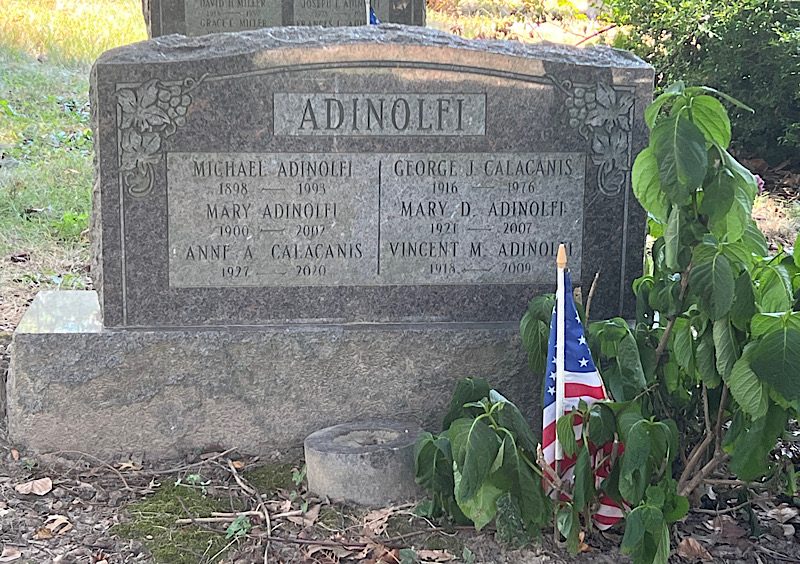
CAMMARERI, ANDREW (1919-1985). Sergeant, 4th Armored Division, United States Army. Cammareri was born in Brooklyn to Nicolo Cammareri and Maria Bocconi Cammareri. His father immigrated from Palermo, Italy, on the vessel Perugia and arrived at Ellis Island in 1907. His mother, also from Palermo, immigrated in 1912. The couple had nine children. Five of Cammareri’s siblings, Provindenza (Prudence), Francesco Paolo (Paul), Salvatore, Francis, and Joseph were born in Italy and came to the United States with their mother. He and three siblings, Grace, Angelina, and Mario were born in Brooklyn. The 1920 census reports that his father was a longshoreman. Although the date of Cammareri’s baptism is unknown, his name is documented as “Andrea” on his baptismal records. His daughter relates that Cammareri attended P. S. 29 in Brooklyn and his highest level of education was eighth grade. His father established a bakery, Cammareri’s, in 1921. This establishment remained in the family for three generations and became world renowned when it was featured in the 1987 movie, Moonstruck. As per the 1940 census, the family lived on Sackett Street. Cammareri, then twenty-one years old, worked as a chauffeur for his father and a baker for the family business. He was the best man for his brother, Joseph, as cited in the wedding announcements in the November 4, 1940, issue of the Brooklyn Daily Eagle.
His military record, dated August 11, 1942, erroneously documents his birthplace as Hawaii. His World War II draft card reveals that he was 21 years old, lived at 502 Henry Street, and listed his father as his contact person. His employer was Cammareri’s Bakery located at the same address as his residence. According to the Veterans Affairs BIRLS (Beneficiary Identification and Records Locator Subsystem), he enlisted in the army on May 13, 1941 and was discharged from service on October 9, 1945. As per his daughter, he served under General George S. Patton.
After the war, Cammareri took over the family bakery business. Records show that he married Catherine Brasco on June 17, 1948. The couple had three children, Maria, Nicholas, and Anthony. His obituary was published in the Daily News. Section 88, lot 42116, section E.
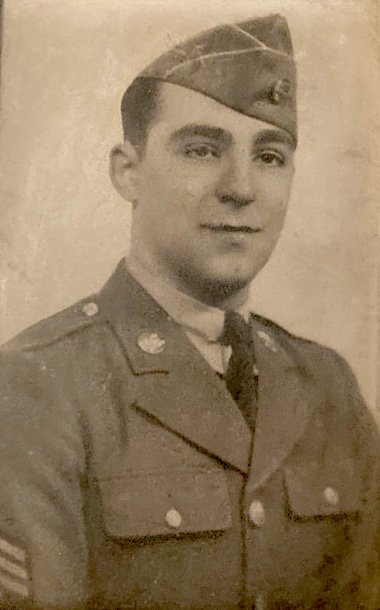

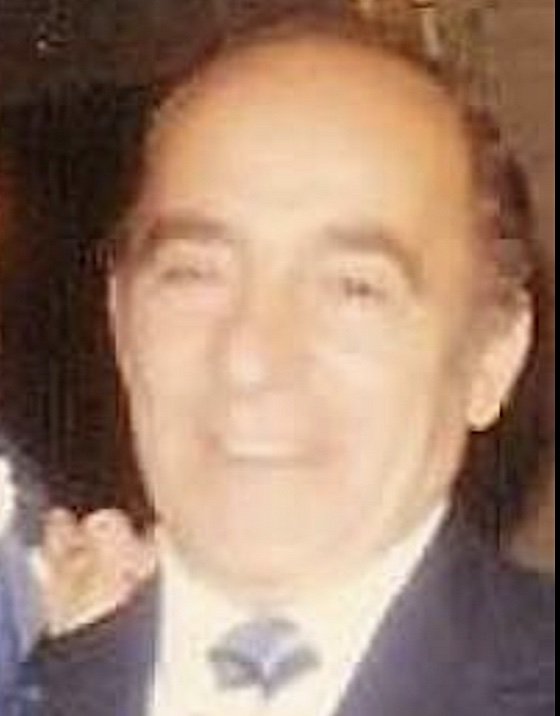
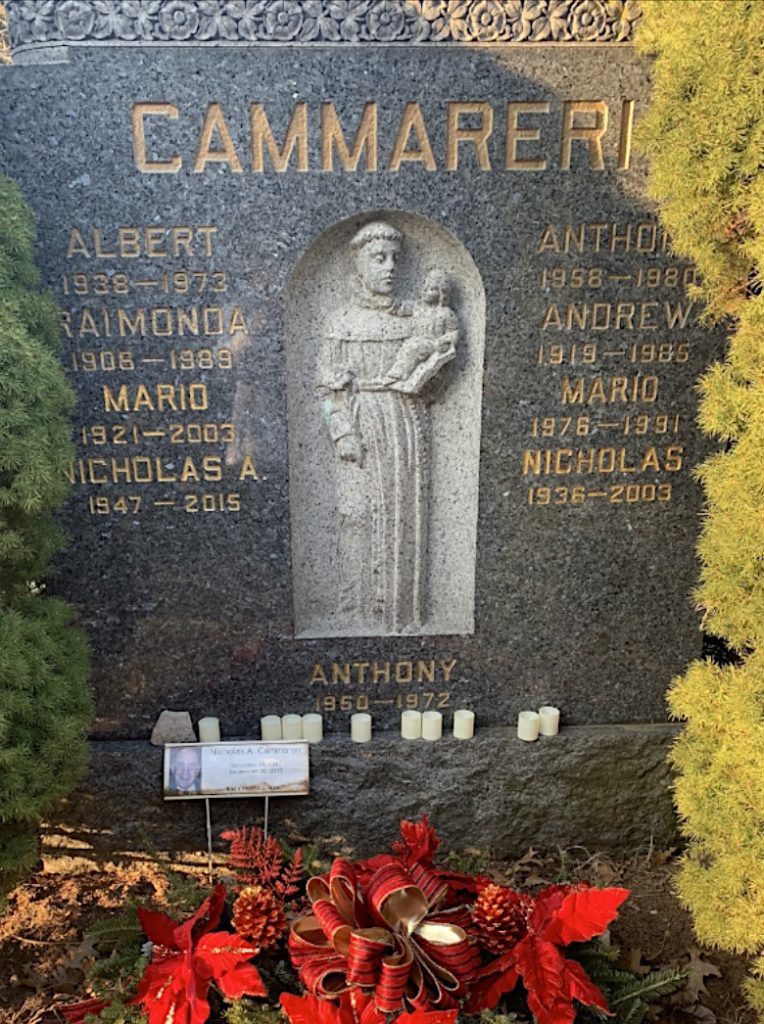
CAMPION, RAYMOND FRANCIS (1906-1949). Lieutenant, United States Naval Reserves. Raymond Francis Campion was born in Brooklyn to a seafaring family. According to the 1910 federal census, his parents, Joseph and Sara Campion, resided on Coffee Street with Sara’s father and brother, Ambrose Jayne and Ambrose Jayne Jr., who were both tugboat pilots. Campion followed in their footsteps, as he is listed on the 1930 federal census as a tugboat captain, at the age of 24 years old. In January of 1933, Campion and his uncle Ambrose are listed on a manifest for a ship returning to Key West, Florida from Cuba. It must have been a fascinating journey to make during the very last year of Prohibition, when Cuba was a popular destination for many thirsty Americans.
However, Campion was soon back in Brooklyn, where the New York Marriage Index indicates that he wed Elizabeth Kominski on July 8, 1935. By the time of the 1940 census, he was living on 95th Street in Brooklyn, with his wife and their one-year-old son, Robert. Campion signed his draft registration form on October 16, 1940, which shows that he was working as a New York harbor pilot. His was described as 5′ 6″ tall, 168 pounds, white with a light complexion, blue eyes and brown hair.
According to the veteran headstone application that Campion’s mother filled out, his enlistment date was June 26, 1942. United States Navy muster rolls specify that Raymond boarded the USS Sagamore on October 7, 1944, serving as a lieutenant. The Sagamore was an ocean-going tugboat that was commissioned in 1918 and was in service during both World War I and World War II. During World War II, the Sagamore continued to perform essential towing duty from her home yard, New York, to Norfolk, Philadelphia, New London, and to bases as far north as Newfoundland, Canada. As an experienced tugboat captain, Campion would have been well-equipped to guide ships to safe harbor or reposition valuable naval resources during the Battle of the Atlantic, the longest continuous military campaign of World War II. Campion’s mother wrote that he was honorably discharged from naval service on February 3, 1945.
After his wartime service, he continued to work as a merchant sailor. In 1947, he was listed on a crew manifest as master of the MIV Detroiter, a ship regularly traveling from Nova Scotia to New York. Captain Campion was at home in Brooklyn when he passed away. His obituary shares that “he was licensed to pilot ships in all world ports and to command ships of all sizes,” and that he was a member of the national order of Masters, Mates and Pilots AFL. He was survived by his wife, Elizabeth, his son, Robert, and his mother, Sara. Section 1, lot 8320.
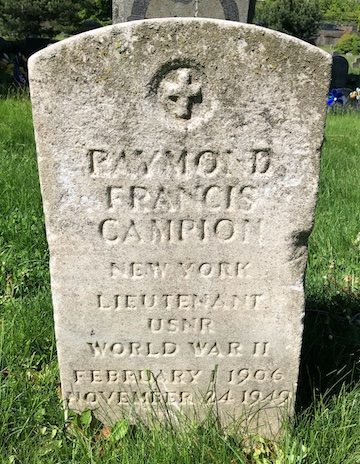
CAPALBO, JOHN J. (1918-1998). Sergeant, 927th Signal Battalion, United States Army. John Capalbo was born in Brooklyn. John’s father Mariano immigrated from Italy in 1900 and was a New York City railroad worker. His mother Angelina also immigrated from Italy that same year. The 1930 and 1940 censuses report that the family was living on Dahlgren Place in Brooklyn and owned their own home. The Capalbos had nine children, all of whom were born in Brooklyn. John was their sixth child. On the 1940 census, John stated that he was seeking work as a driver for a coal yard.
On the draft registration card that he signed on October 16, 1940, John Capalbo was described as white with a dark complexion, 22 years old, 5′ 7″ tall, 145 pounds, with brown eyes and brown hair. He listed his father as his key contact. At the time he signed his draft registration card, John was employed by Losquardo Ice and Coal Company in Brooklyn, most likely as a driver.
Capalbo enlisted in the United States Army on February 19, 1942. His enlistment card showed that John’s education level was grammar school and his civilian occupation was semi-skilled chauffeur and driver, bus, taxi, truck and tractor. He initially went for training at Camp Upton, Yaphank, Suffolk County, New York. From there he was assigned to the Army 927th Signal Battalion in the European Theater of Operations. In November 1942 that unit was part of Operation Torch – the invasion of North Africa. The pro-Germany French Vichy government surrendered and the 927th advanced to Tunisia in February 1943. The Africa campaign ended in June 1943. The 927th received a letter of appreciation from the Brigadier General of the 12th Air Support Command. It read, in part:
You have installed, operated and maintained the various channels of signal communications throughout the campaign in a highly efficient manner. Without these communications the successful conclusion of the entire operation would have been exceedingly difficult if not impossible.
The 927th participated in the invasion of Sicily (code named Operation Husky) which began the Allies re-entry into Europe. After Sicily that unit went to Pompeii near Naples. Rome was liberated by the Allies in May 1944 and the 927th continued to Southern France in Operation Dragoon. Christmas 1944 saw them in the bitter cold and massive Battle of the Bulge. Germany surrendered in May 1945.
At the end of the German campaign the 927th received a letter of appreciation from the Brigadier General of the 12th Tactical Air Command. The letter said, in part:
In a period of 5 weeks, this Command moved over 500 miles and operated from 6 different command posts. This necessitated the laying of more than 1500 miles of spiral-four cables. Wire facilities were built and dependable circuits were available at each command post location.
As per his son, Capalbo had been in charge of 30 men installing and maintaining telephone lines for military use. He received the European-African-Middle Eastern Service Medal and the Good Conduct Medal. He fought in Algeria, French Morocco, Tunisia, Central Europe, Naples, Foggia, Northern France, Rhineland, Rome, Arno, Sicily, and Southern France. Capalbo returned to New York with his unit aboard the Queen Elizabeth in 1945. He had achieved the rank of sergeant.
On November 24, 1945, he married Catherine D. Scarola in Brooklyn. They had two children and he worked in construction. Urn Site, lot 1801H.
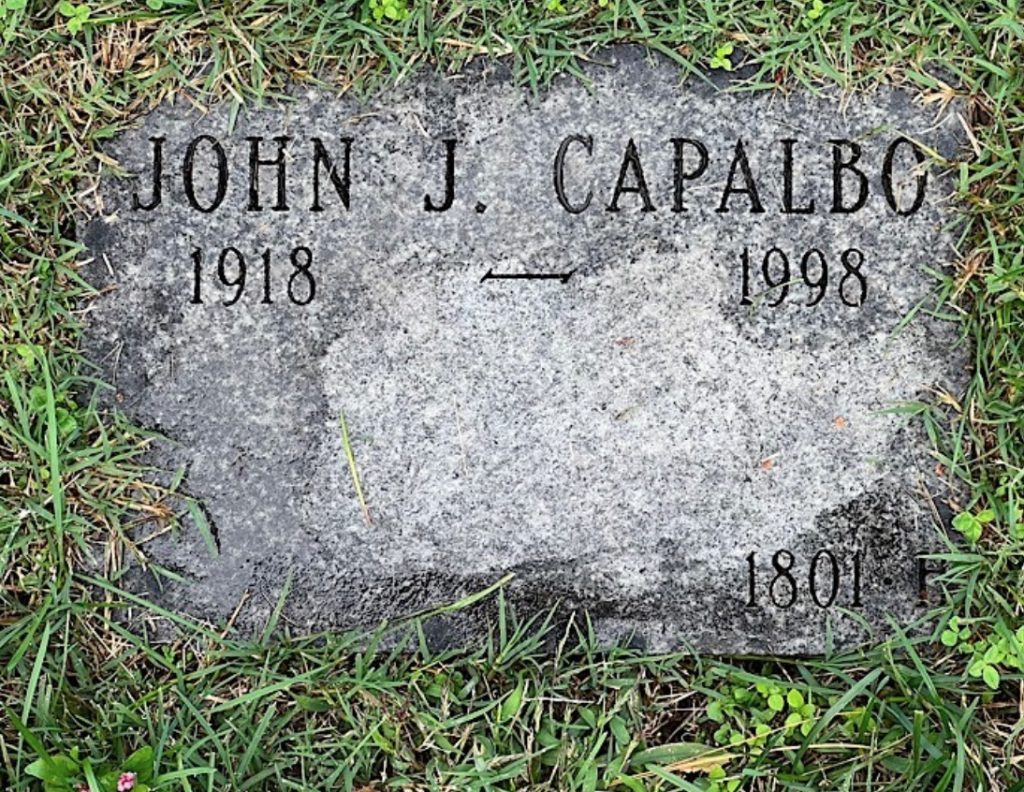
CAPUTO, DONATO THOMAS (1920-1992). Private, United States Army. A Brooklyn native, the 1940 census indicates that the Caputo family consisted of father Nunzio, 59 years old, and his wife Elizabeth (Raccanelli) who was 53. Both of Donato’s parents were born in Italy; all the Caputo children were born in New York. In 1939, Nunzio was in the oil business and earned $800. Donato was the middle of three children. He had an older sister Rose (22) and a younger sister Rita (14). The Caputos owned their own home at 591 18th Street in Brooklyn, valued at $1,650.
Donato Caputo registered for the draft on July 1, 1941. According to his draft registration card, he was 21 years old and lived at 591 18th Street in Brooklyn. Donato was 5′ 3½” tall and weighed 188 pounds. He had black hair, brown eyes and a dark complexion. His occupation is identified as “frame maker” working for F. Bagnato at 923 39th street in Brooklyn. The U.S. World War II Army enlistment record for Donato T. Caputo states that he was an army private, had completed two years of high school and was not married. He enlisted on May 12, 1942, at Fort Jay, Governors Island, New York Harbor.
His niece, Diane Inniss, reports that he served in Africa during his time in the Army. Given the lack of surviving military records, that information could not be verified. He did begin his military service during what is known as the “North Africa Campaign,” so it is likely he participated in that campaign. The North African Campaign began in June 10, 1940 and continued until May 13, 1943 as Axis and Allied forces pushed each other back and forth across the desert. At the beginning of the war, Libya had been an Italian colony for several decades and British forces had been in neighboring Egypt since 1882. The two armies began skirmishing almost as soon as Italy declared war on the Allied Nations in 1940. Italy invaded Egypt in September 1940, and in a December counterattack, British and Indian forces captured some 130,000 Italians. Hitler’s response to this loss was to send in the newly formed “Afrika Korps,” led by General Erwin Rommel. The United States officially entered the war in December 1941 and began direct military action in North Africa on May 11, 1942. Several long, brutal pushes back and forth across Libya and Egypt reached a turning point in the Second Battle of El Alamein in late 1942, when Lieutenant-General Bernard Montgomery’s British Eighth Army broke out and drove the Axis forces all the way from Egypt to Tunisia. In November, Operation Torch brought in thousands of British and American forces. They landed across western North Africa and joined the attack, eventually helping force the surrender of all remaining Axis troops in Tunisia in May 1943 and ending the Campaign for North Africa. Donato’s draft card notes that he was discharged on November 14, 1945.
Caputo married Anna Patton in 1963, as evidenced by their marriage license. Eventually Anna Caputo and Donato Caputo resided at 591 18th Street, 2nd floor, Donato’s childhood address. No additional information could be found about the couple, including whether they had any children. He last lived in Brooklyn. Section 126, lot 44600, grave 2.

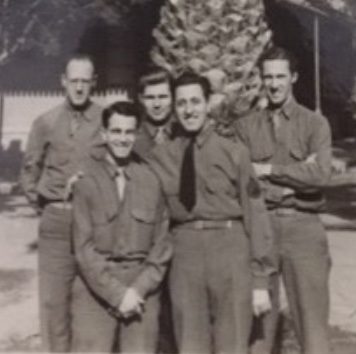
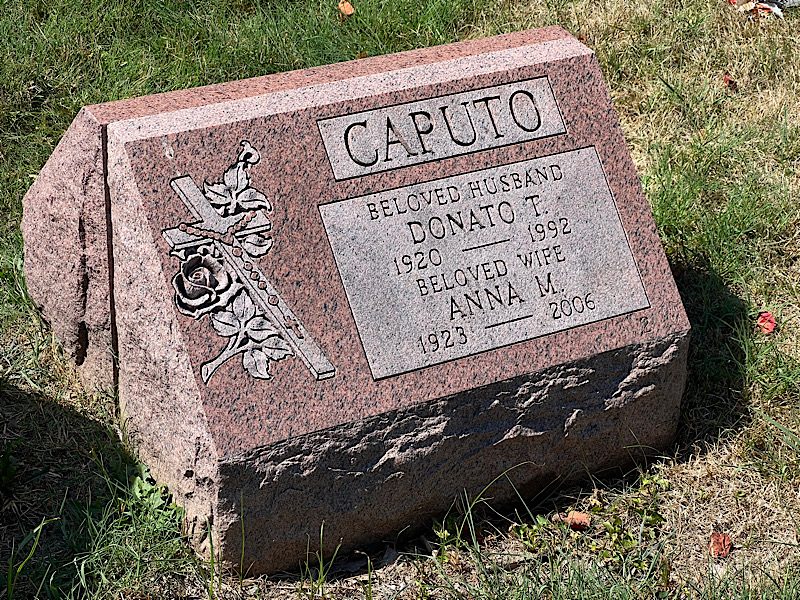
CARUSO, LOUIS ENRICO (1921-2017). Private, 25th Infantry Medical Unit, Company C, United States Army. Caruso was born in New York City. The 1930 census reports that he lived in Brooklyn with his parents, who were both naturalized citizens of Italian birth, and an older sister and younger brother. His father was in the egg business. The family owned their home at 90 Bay 14th Street. As per his son, Ronald Caruso, he was a 1938 graduate of New Utrecht High School in Brooklyn.
His draft registration card states that Caruso lived at the Bay 14th Street address, had no home telephone, and worked for the Electromatic Radio Distributors Corporation at 88 University Place in Manhattan; he listed his father as his emergency contact. He enlisted as a private at Fort Jay at Governors Island, New York, on September 10, 1942. His World War II enlistment record notes that he was 5′ 9″ tall, 155 pounds, was semi-skilled in the manufacture of radios and phonographs and had completed four years of high school. The Brooklyn Daily Eagle’s column, With Our Fighting Men, reported on October 28, 1942, that Caruso was among the Brooklynites who were first stationed at Camp Pickett, Virginia.
As per his son, Caruso served in Company C of the 25th Medical Unit in Guadalcanal in the Pacific Theater. His unit was at Guadalcanal from December 17, 1942 through February 5, 1943; the Battle of Guadalcanal, which resulted in an Allied victory, took place from August 7, 1942 through February 9, 1943. Medical units removed evacuees to aid stations, prepared evacuees for further evacuations, and transported evacuees to medical facilities behind the front lines, known officially as Division Clearing Stations. In September 1943, Caruso was admitted to the hospital and was discharged as a disabled veteran in January 1944. Although no disease was listed, it was indicated that his “injury” occurred in the line of duty and that he was diagnosed with myopia (near-sightedness). That hospital record indicates that Caruso had been in service for one year. His son reports that he contracted malaria twice while on duty in the Pacific. Like all members of the United States Armed Forces who served in the Pacific from 1941 through 1945, Caruso was a recipient of the Asiatic-Pacific Campaign Medal.
In May 1947, he married Angela (Ann) M. Bruno; the couple had one son. Their marriage record lists May 3 but their son states that their anniversary was celebrated on May 18. In civilian life, he was in the furniture business. Ann Caruso died in 1998 and is interred with her husband. Section 69, lot 44700, grave 199.
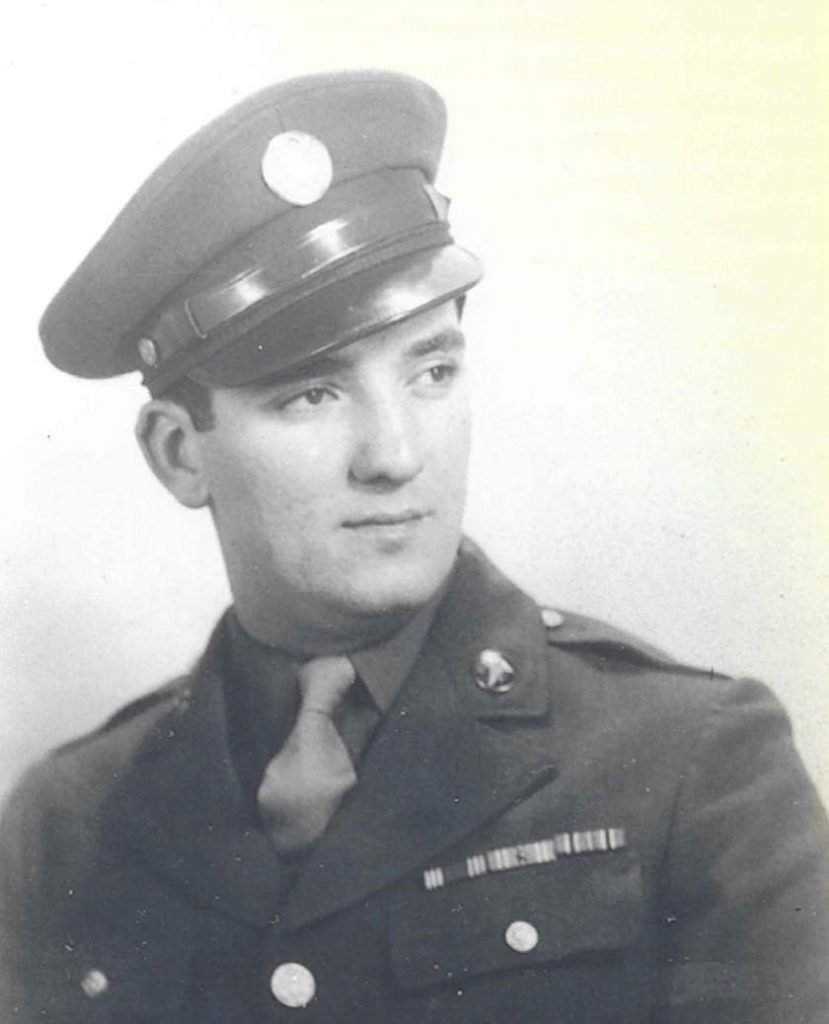
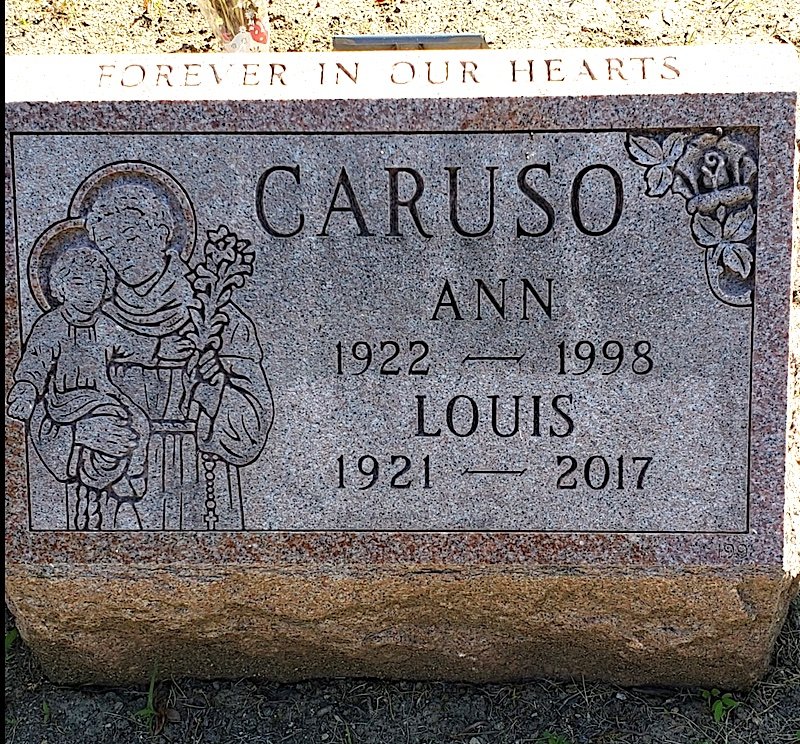
CHECKLE, STEVEN FRANCIS (1924-2011). Private, 342nd Armored Field Artillery Battalion, United States Army. Steven was born in Uniontown, Pennsylvania to Andrew Ceckle and Rose Bartock Checkle. He was part of a large family of 12 children, although one was stillborn. His father was a coal miner. According to the 1930 census, the family had moved to Georges, Pennsylvania. As per the 1940 census, the family had moved to East Huntingdon, Pennsylvania. Steven registered for the draft in 1942. According to his registration card, Steven was 5′ 7″ tall and weighed 140 pounds, with brown hair, blue eyes and a ruddy complexion. He was single, had one year of high school and was employed by Bryce Brothers in Mt. Pleasant, Pennsylvania.
Steven enlisted as a private in the United States Army on March 19, 1943. He was stationed at Camp Hood, Texas, and joined the 342nd Armored Field Artillery Battalion. They sailed for Europe in October 1944. The battalion supported armored columns and infantry troops with self-propelled 105-mm howitzers in Germany during 1945. One of his unit’s first combat operations was a daring, daylight raid on a German command post in Schaffhausen, Germany. It inflicted heavy casualties and took 13 prisoners. Steven was given an honorable discharge on February 2, 1946.
After the war, Steven moved to Brooklyn. There he met and married Vincenza A. Filinger on May 17, 1947. Steven and Vincenza had three children and three grandchildren. He is interred in the Hillside Mausoleum, phase I, crypt 1117A.
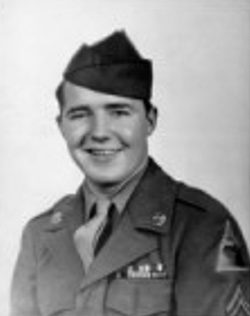
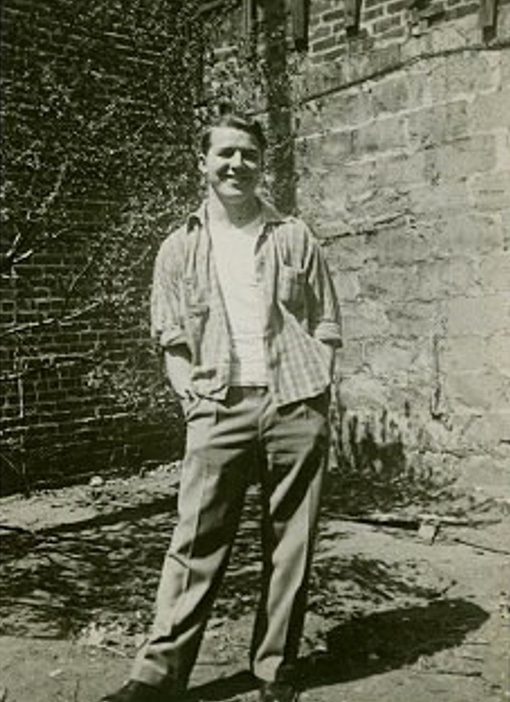
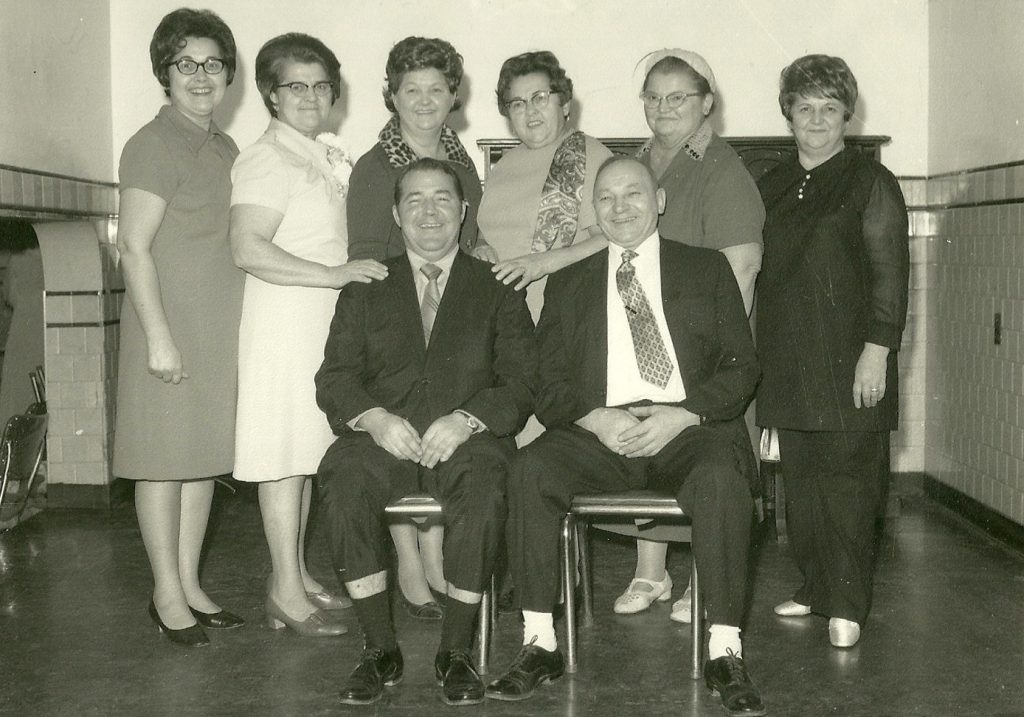


CHIAPPONE, PHILIP (or PHILLIP) MICHAEL (1922-2013). Corporal, United States Army Air Force. Chiappone was born in New York City. As per the 1925 New York State census, he lived in Manhattan with his Italian-born parents, as well as his brother, sister and Italian-born father-in-law; his father was a peddler and his mother was a homemaker. The 1940 census reports that he lived in Brooklyn with his parents, three sisters and his brother; his father was a fruit peddler. As per his daughter, Linda Ferry, Chiappone attended New Utrecht High School in Brooklyn.
According to his draft registration card, filed in 1941, which spells his name as Phillip, although he signed his name to it as Philip, he lived at 8324 15th Avenue in Brooklyn and worked at the Brooklyn Navy Yard; he named his mother, Josephine, as his emergency contact. His daughter reports that he was in the Army Air Force stationed in Rio de Janeiro, Brazil, where he trained forces there. Brazil joined the Allied forces and the Brazilian Expeditionary Force, or FEB (Força Expedicionária Brasileira), was a division in the Army of an independent country placed under United States command. The naval airbase in Brazil was the busiest air transport base in the world. About 25,900 troops joined the FEB which fought with the Allies in the Mediterranean; about 1,500 lost their lives. Notably, Brazil was the only independent country in South America to send ground troops to fight in World War II. Chiappone did not participate in any battles of World War II and achieved the rank of corporal.
On May 11, 1952, he married Mary Carolina La Carrubba; the couple had three children; one son predeceased him in 2010 and is interred with his parents. In civilian life, he worked for the Fire Department, capacity unknown. His obituary in the New York Daily News states that his funeral took place at St. Bernadette Roman Catholic Church in Brooklyn. He was survived by his wife, one son, his daughters and six grandchildren. Hillside Mausoleum Phase IV Crypt, Section 4563A.
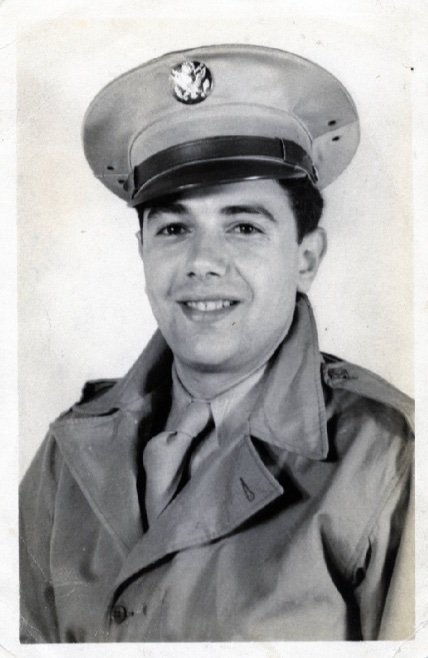
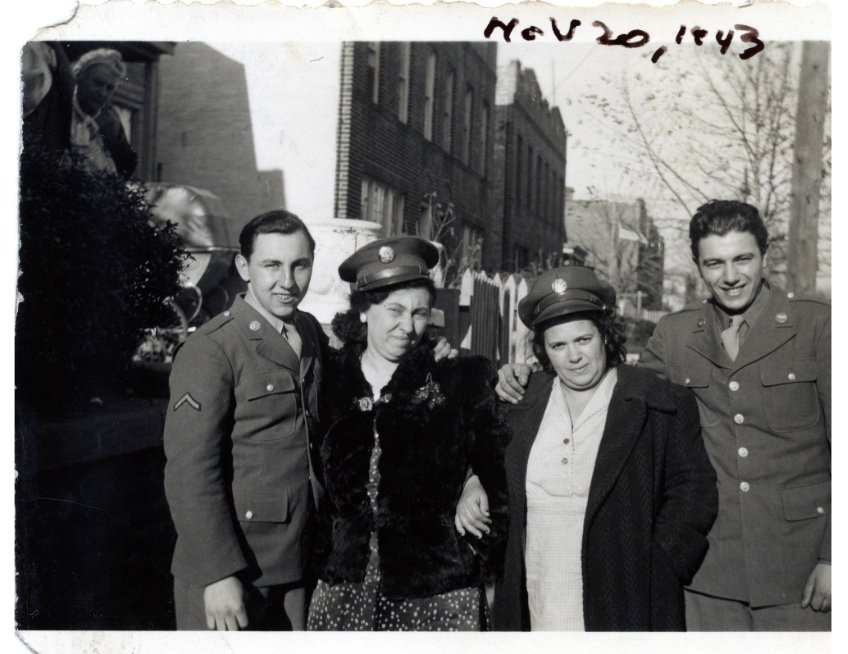
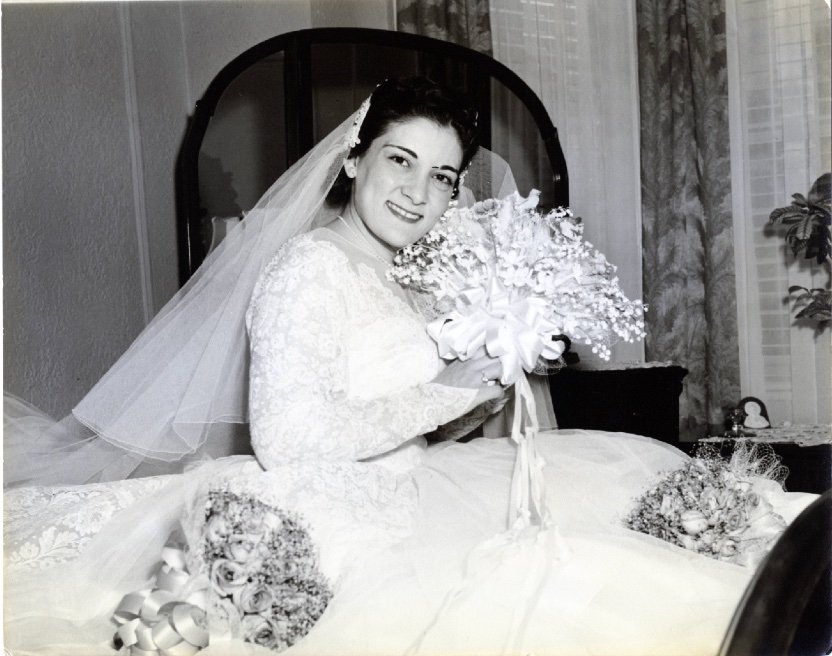
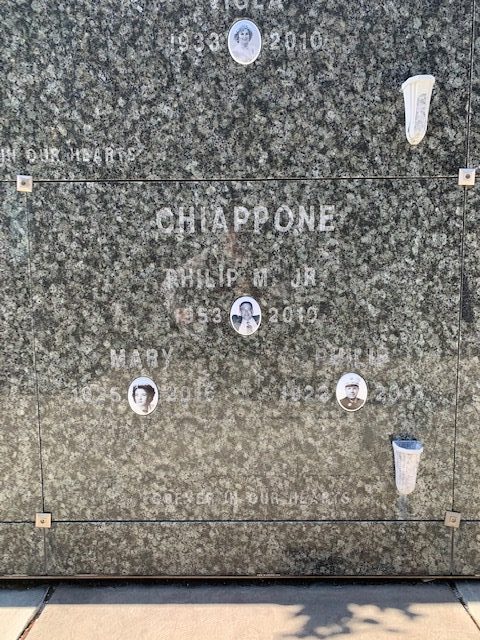
CHITTUM, ROBERT LESTER (1906-1976). Technician fifth grade, United States Army. Chittum was born in Huntingdon, West Virginia, to Robert A. and Ida M. Chittum. They had two more children, Margaret and Eugene. According to the 1920 census, the family moved to Washington D.C., where his father worked as a manager at a bottling plant. There they had two more daughters, Sarah and Mary. Robert had completed one year of high school.
The 1930 census shows that Robert Chittum had moved to Philadelphia, Pennsylvania, with his new wife Marion. There Chittum worked as foreman at a beverage plant. Tragically, Marion died in 1931 of pneumonia. As per the 1940 census, Chittum was now 33 years old and had moved to the Upper West Side of Manhattan. He worked at the Pilsner Brewing Co. in the Bronx as a machinist. In New York, he met his soon-to-be wife, Gertrude H. Dalziel; they were married on September 30, 1942, after he had enlisted in the United States Army. According to his draft registration, he was 5′ 10″ tall, white race, with a ruddy complexion, blue eyes and brown hair.
He enlisted as a private on June 19, 1942 and was assigned to Fort Jay, Governors Island, in New York Harbor. Perhaps because of his work as a machinist at Pilsner, he also received the rank of technician fifth grade, which was given to only to people with specialized skills. Soldiers with this rank were also given higher command authority and higher pay. He was discharged on October 23, 1945.
Eventually Chittum and his wife moved to St. Augustine, Florida, where he died. According to his obituary published in The St. Augustine Record they had two sons: Robert Chittum of New York and Donald Chittum of Philadelphia. Section ?, lot ?.

CILIONE, PAUL (1924-2005). Corporal, United States Marine Corps Military Police. The 1930 census shows Paul Cilione, at age 5, living at 114 East 4th Street in Manhattan with his father, Bruno Cilione, age 50, and his mother, Francesca Malara Cilione, age 46. Both parents were born in Italy. Also living in the household were Paul Cilione’s six older siblings: Joseph, 19; Angelina, 17; Tessie (Teresa), 15; Katie (Catherine), 14; Loretta, 11; and Orlando, 8. Paul was able to speak English.
Bruno Cilione’s Declaration of Intention to become an American citizen, signed March 25, 1942, shows that the family was then living at 32 East 2nd Street in Manhattan. Bruno Cilione was born in Calabria, Italy, on May 26, 1887, and married his wife, now known as Frances, on February 18, 1907, in Calabria, Italy. The document states that Bruno Cilione had seven children – although a statement from his daughter, Camille Cilione Ullo, declares that Paul Cilione was the youngest of nine children – and all resided in New York, New York, except for Angelina, Teresa, and Loretta, who lived in Brooklyn. Paul was the youngest, born on November 14, 1924. The document shows that Bruno’s last place of foreign residence was Calabria, Italy, and he “entered the United States at New York, New York on August 5, 1809 [sic],” but later states that he emigrated from Naples, Italy to the United States on May 8, 1908, on the SS Princess Irene.
Paul Cilione registered for the draft on December 26, 1942, when he was 18 years old. He lived at 32 East 2nd Street in Manhattan. He listed Philip Miller of 279 Bowery, New York City, as his contact and his employer as Seward Park High School in Manhattan. He was 5′ 10″ tall and weighed 140 pounds, with a dark complexion. He had a scar on his left hand and one over his left eye.
Camille Cilione Ullo reports that her father graduated from high school in Manhattan and enlisted in the Marine Corps on March 5, 1943, at 18 years of age. He did not tell his parents because he knew they would object. His older brother Orlando (Lenny) was already serving with the Army in the Mediterranean. The Brooklyn Daily Eagle, of December 14, 1943, lists Private Paul Cilione of 60 Chester Avenue, Brooklyn, as serving in the Marine Corps. He was first shipped off to Hawaii, then sent to several of the embattled islands of the South Pacific. He was open about his war memories and told his family that the Battles of Okinawa and Iwo Jima were the most disturbing, memorable, and grueling. He was stationed on Iwo Jima from February through March 1945 and was present for the raising of the flag on Mount Suribachi, recalling the victory there. His most troubling recollection was the stench of burning flesh from flame throwers torching the Japanese enemy in their tunnels throughout Iwo Jima. Cilione spoke of the beach landing and difficulty of maneuvering through the volcanic ash that the troops found on the island in place of sand. Every Thanksgiving he would tell the story of how the Air Force patrol dropped turkeys and other food on the islands during the holiday while he was in combat. Whenever he referred to his “buddies” lost in battle he was quite upset and angered. He never idealized the war but grew somber and agitated when reflecting on combat. The horrors of war, especially the Battle of Iwo Jima, were extraordinarily memorable for a 20-year-old young man. He also visited the islands of Saipan, Samoa, and Pago Pago. His daughter recalled that he often spoke of the beauty of those Pacific Islands where there was no fighting.
United States Marine Corps muster rolls from 1943 through 1946 document Paul Cilione’s enlistment, discharge, and service in the V Amphibious Corps, Samoan Defense Force, and Marine Military Police. They show that he was stationed in Samoa in 1943 with the 7th Marine Defense Battalion. He also was stationed in San Francisco, California, with the V Amphibious Corps and the Third Provisional Military Police Battalion in 1944 and 1945, and, in 1946, with the Fifth Marine Division in Oceanside, California. The V Amphibious Corps was involved in the battle for Iwo Jima, among other Pacific Theater engagements. A note exists, written by Paul Cilione himself, stating that, while in Maui, Hawaii, Cilione, at 5′ 10″ tall, weighed only 118 pounds. Upon his return to the United States from Iwo Jima, he stated that he had lost 20 pounds. Cilione was honorably discharged in January 1946 from the United States Naval Training Center in Bainbridge, Maryland. He had received Rifle Sharpshooter and Good Conduct Medals while in the service.
Camille Cilione Ullo reports that her father and mother, Vita Marie (Mary) Scarola married on March 5, 1950. They had applied for their marriage license on February 24, 1950, in Brooklyn. They had four children: Bruno, Angelo, and Paul, as well as Camille. Cilione was employed by the New York City Department of Sanitation. In 1961, a New York Daily News article reports that, while Cilione was working in the Borough Park section of Brooklyn, New York, he and two coworkers lifted a wire trash basket into their Sanitation Department truck and discovered two guns and ammunition. The article reported that the police speculated a possible connection of the weapons to “Gallo gang warfare.” In 2000, Paul was living at 134 Chester Avenue in Brooklyn, as per public records. He also lived for a time at 51 Shirra Avenue in Staten Island. Cilione was a member of the Brooklyn chapter of Veterans of Foreign Wars. Section G, lot 40277, grave 2.
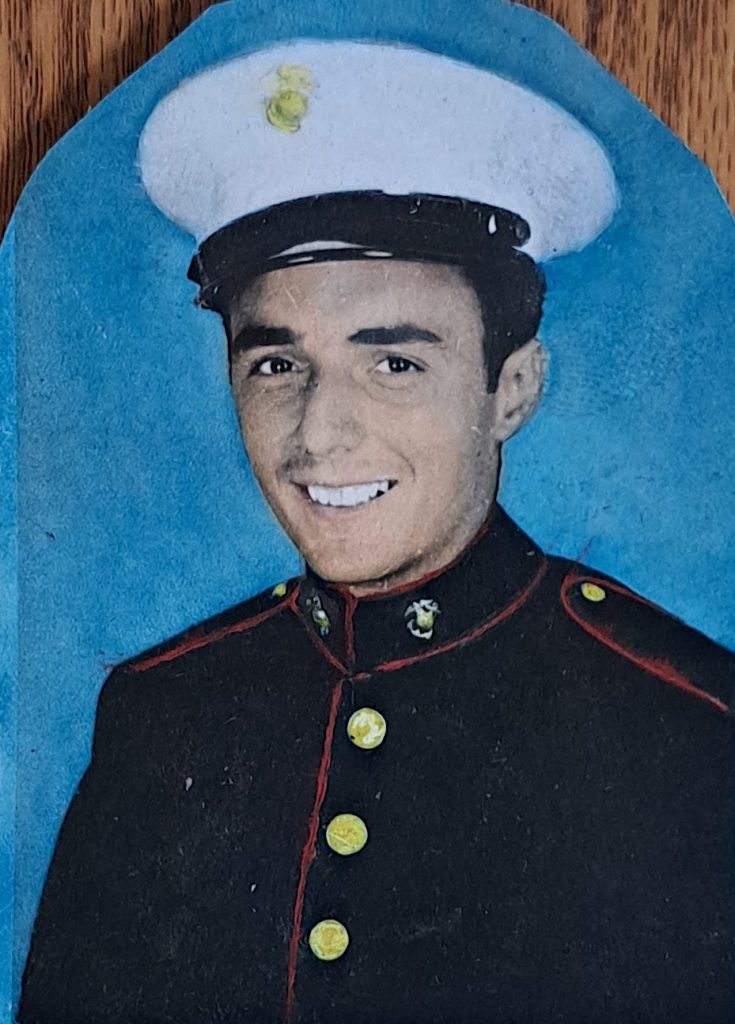
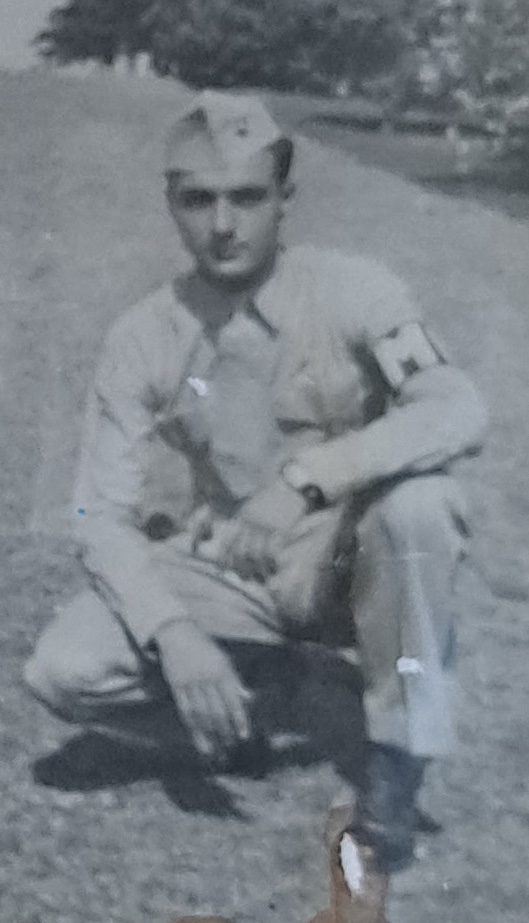
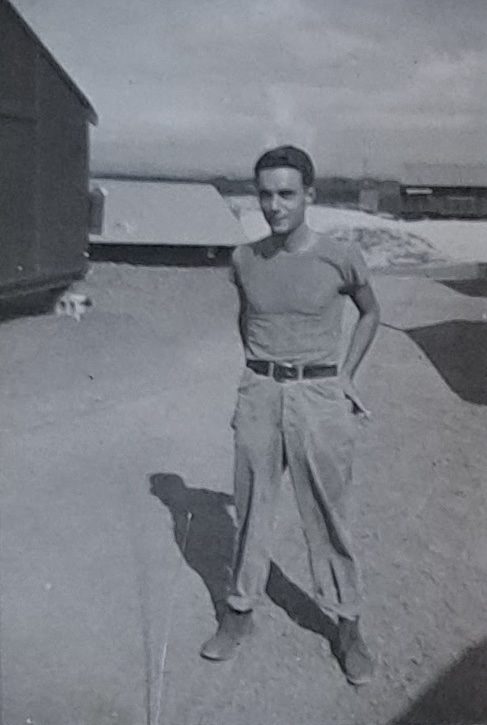
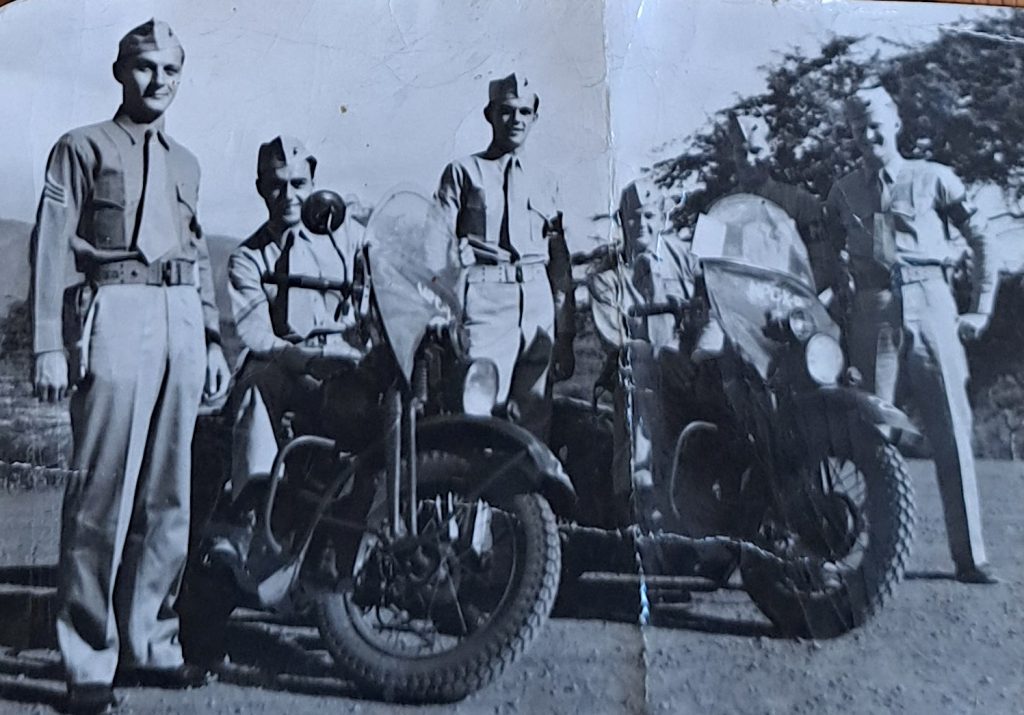
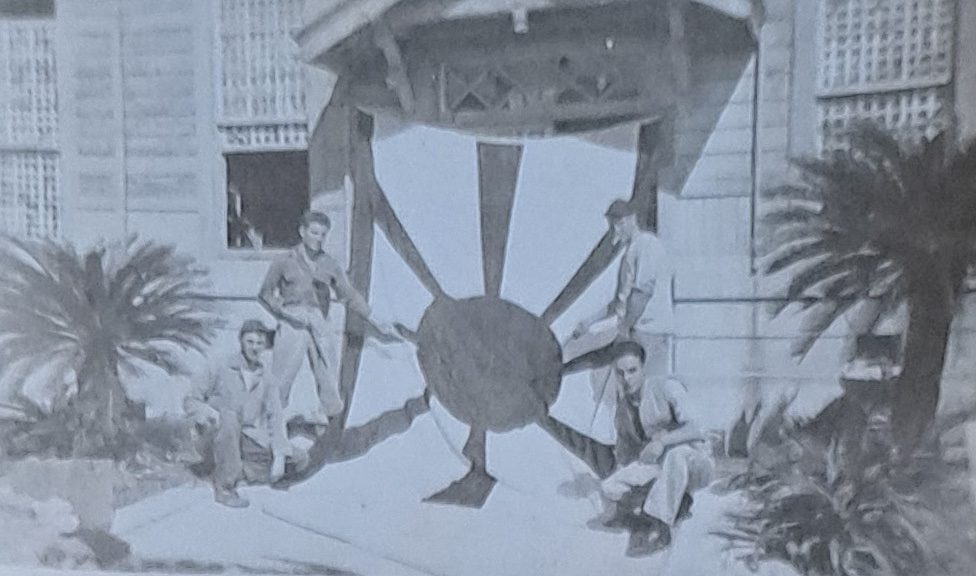
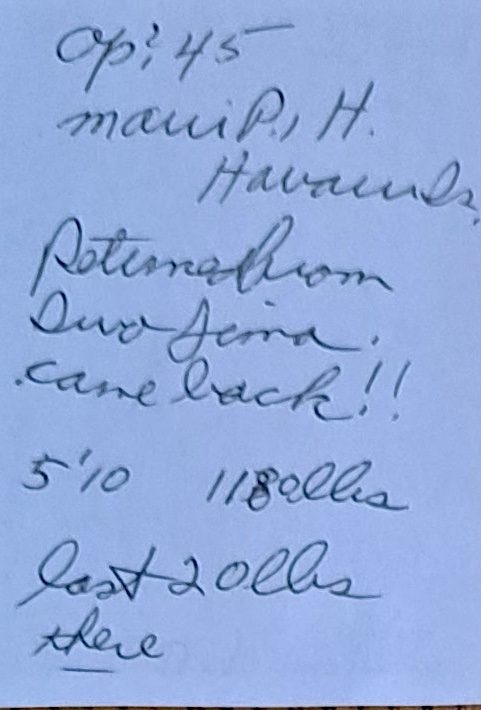
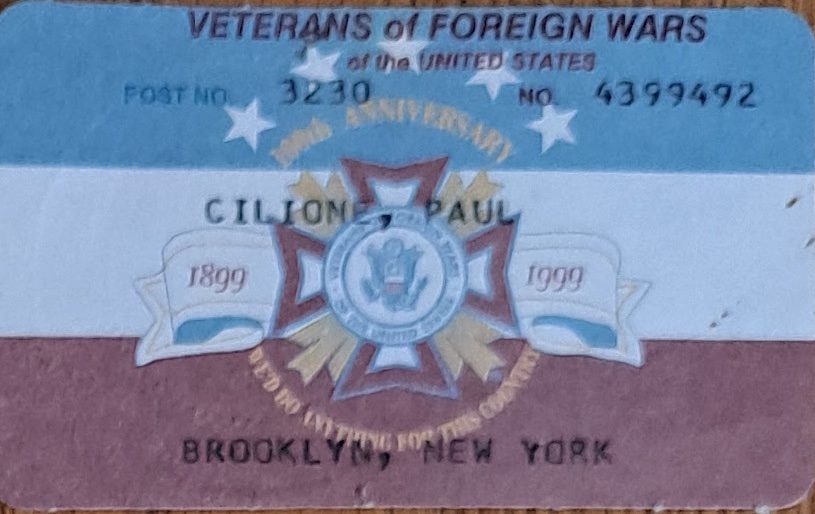
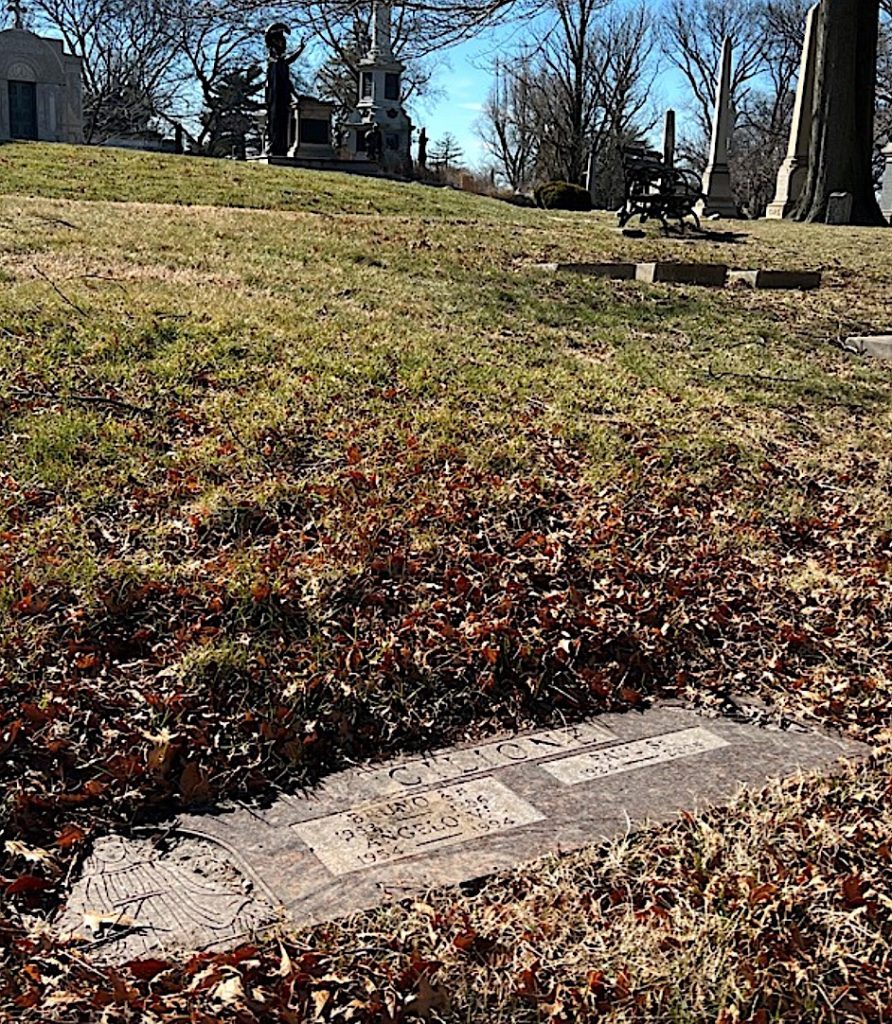
CIRELLO, JR., JAMES (1920-1982). Private first class, 37th Army Division, United States Army. Cirello was born in Brooklyn. As per the 1930 federal census, the ten-year-old Cirello lived with his parents, James Sr. and Mary, and four siblings at 250 Gold Street in Brooklyn. His father was born in Rhode Island and owned his own trucking business. His mother was born in Italy and immigrated to the United States in 1911. The family’s last name is erroneously transcribed as Cuello. The 1940 federal census documents that the family still resided on Gold Street and Cirello’s father was a printer at a sign company. The census also records that Cirello was nineteen-years-old, had completed his education through grade 8 and was described as a “new worker.” As in the previous transcription, the family name is erroneously recorded – this time as Schnello. There is also a note on the census which states that the information about the Cirello family was provided by a neighbor, Mrs. Rago.
Cirello’s World Word II draft registration card records he was twenty-one years old and was employed by Mandell, located at 195 Front Street, Brooklyn, as a pressman. Tom Pinto of 250 Gold Street is designated as next of kin. His registrar’s report, dated July 1, 1941, describes him as 5′ 8½” and 140 pounds with brown eyes, black hair, and dark complexion. According to his World War II enlistment records, James entered the service as a private on January 21, 1942. This document records he had completed two years of high school and his civil occupation was as a motor vehicle repairman.
An article in The Brooklyn Citizen, published on May 23, 1944, with the headline: BOUGAINVILLE HERO AWARDED PURPLE HEART: Injured in Action when His Convoy was Attacked by Japs, states:
With the 37th Army Division on Bougainville: PFC. James L. Cirello of No. 250 Gold Street, Brooklyn, New York, has been awarded the Purple Heart medal for injuries received in action when his convoy was attacked while enroute to Bougainville.
He is a machine gunner with a medium artillery battalion, which has been recently engaged in the defense of the Empress Augusta Bay beachhead on Bougainville. This same battalion played an important role in the successful campaign at New Georgia.
Pfc. Cirello was inducted into the army in 1941.
There is much documentation regarding the 37th Army Division and its campaigns during World War II. With his enlistment on January 21, 1942 and the newspaper report of his award of the Purple Heart in Bougainville, James may have participated in the following events as detailed on the United States Army Divisions website:
The 37th Infantry Division arrived in the Fiji Islands in June 1942 to fortify the islands against possible invasion. The Division continued its training on the islands. With the end of ground fighting on Guadalcanal, the Division moved to that island in April 1943, continued training, and staged for the Munda campaign. Two battalions joined the Marines on New Georgia, 5 July 1943, while the remainder of the Division landed, 22 July, and assisted the 43d Infantry Division in taking Munda airfield in heavy fighting. After mopping up on New Georgia, the Division returned to Guadalcanal, 9 September 1943, for rest and rehabilitation. The Division’s next assignment was Bougainville. Relieving Marine units, 8-19 November 1943, the 37th took over the perimeter defense of the area, constructed roads and bridges and engaged in extensive patrol activity. In March 1944, two Japanese divisions made eight major attacks, but Division lines held. In April patrols cleared the Laruma Valley area of major enemy units. The Division remained on Bougainville and trained for the Luzon campaign.
There are no hospital records regarding treatment of wounds James sustained during his action in Bougainville. However, World War II Hospital Administration Card Files record that he was admitted during November 1944 for a non-combat-related illness. His discharge date from the hospital is not clear, but it was during the same month as his admission. According to the United States Department of Veterans Affairs BIRLS (Beneficiary Identification and Records Locator Subsystem) Death File, James was discharged from the Army on January 6, 1945.
As detailed earlier, Cirillo was awarded a Purple Heart Medal for his service. He is not the only member of his family who served during World War II: he is the cousin of Anthony Pennino (see), who served in the United States Navy.
After the war, as per the New York Marriage License Indexes, James and Venora Farasciano applied for a license on September 8, 1945. The 1950 federal census documents that James was head of household and a longshoreman in the stevedore industry. He, his wife, and their two older children lived on Degraw Street in Brooklyn. The census recorder documents his last name as Sirello and the transcription erroneously reports that he was in the teaching industry. According to his obituary in the New York Daily News, published on December 13, 1982, James passed away on December 11, 1982 and was survived by his wife and three children, James, Mary and Frank. Section ROSE, lot 43900.
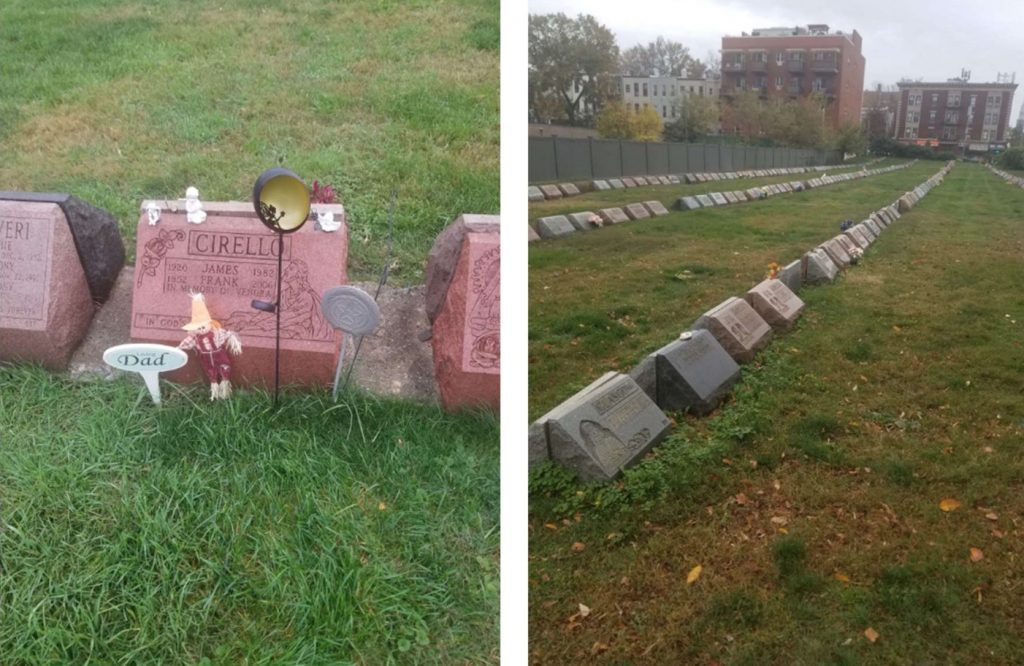
CLIREHUGH, JOHN (or JACK) CUMMINGS (1919-2010). Warrant electrician, United States Navy. Born in Hillside, New Jersey, his obituary in the May 18, 2010 issue of The Times-Tribune of Scranton, Pennsylvania, reports that he was the eldest of two children. His parents, John A. Clirehugh and Marion Hawkins Gray, were, respectively, of Scottish and German ancestry. He was the fourth generation of Clirehughs in America. According to the 1920 census, he lived with his parents and grandmother in Hillside, New Jersey. His father worked in a refinery. The 1930 census indicates that Clirehugh was living with his mother, father, and sister in East Windsor, New Jersey. His father’s occupation is recorded as farmer. As per a memorial detailed in Find A Grave, Clirehugh attended primary, grammar, and high school in Hightstown, New Jersey. The memorial also states he had an interest in electronics at a young age and he attended a diesel engine school upon graduating from high school.
During an interview on November 15, 2003, for the Veterans History Project, Clirehurgh relates that he enlisted in the Navy in 1939 in response to a Navy poster he saw while in New York City. Obituaries in both The Times-Tribune and the Susquehanna County Independent state that he served on three submarines (USS O-7 SS68, USS Pollack SS180, and USS Tautog SS199). His tours of duty included Honolulu and the western coast of Australia. He was stationed in Pearl Harbor on December 7, 1941, and was on board the docked Tautog when the Japanese planes attacked. He remained below decks and passed ammunition to the sailors manning the machine gun. The Tautog crew is credited for shooting down at least one Japanese war plane. Clirehugh was a Pearl Harbor survivor and was awarded the Bronze Star “for heroism in action against the Japanese in Pacific waters.” The Veterans History Project lists his dates of service as 1939 to 1948, however, as per the Department of Veterans Affairs BIRLS (Beneficiary Identification and Records Locator Subsystem) Death File, his enlistment date was June 14, 1939, and his release date was October 1, 1949.
Upon retiring from active duty, he attended the University of Pennsylvania where he studied electrical engineering. In 1953, he co-authored an article entitled “Automatic Calibration of Electrokymograph Cardiac Densograms” which was published in the Journal of Applied Physiology. His civilian occupations included working for Philco to set up a microwave communication system in France. He then settled in Pennsylvania and worked for Link Aviation in Binghamton, New York, on a flight simulator. On December 7, 1998, an article in Press and Sun-Bulletin in Binghamton, New York, reported that Clirehugh was president of the Binghamton Pearl Harbor Survivors Association, and quoted his reference to the attack on Pearl Harbor: “It was a real surprise. They (the military planners) didn’t think they’d get that far. There was no radar, no air patrol that morning. A scout plane would have seen an entire Japanese fleet.” He was also interviewed by Ted Brewster in 2003 for the Veterans History Project. The 90-minute interview is available on its website. His wife, Doris Roesener Clirehugh, predeceased him in 2000. Clirehugh’s name was submitted for Green-Wood Cemetery’s World War II Veterans Project by a Patriot Guard Rider, an organization of volunteers that honor and provide assistance to veterans and first responders. Section 15, lot 7859.


COLLUCCIO, PHILIP W. (1915-2007). Private, United States Army Air Force. Born in Brooklyn, the 1925 New York State census reports that ten-year-old Philip Colluccio lived with his younger brother, Vincent, at St. John’s Orphan Home for Boys, located on Albany and St. Marks Avenues in Brooklyn. The 1930 census records that he still resided at the St. John’s Home for Boys, but his brother was no longer listed there; his parents were Italian-born. On May 9, 1931, the issue of the Catholic newspaper, The Tablet, reported that Colluccio, representing St. John’s Orphan Home for Boys, came in 2nd place in the Century 100-yard dash. According to the 1940 census, he resided at 6712 13th Avenue, Brooklyn, with his mother, Maria, and three younger siblings, Vincent, Frank and Rose; his father, Frank, is not listed as a household member. That census states that Philip was twenty-four, worked 52 weeks in 1939, earned $800 as a launderer, and that he had completed 8th grade. He married Lucy Cianflone on February 17, 1940.
Colluccio’s draft registration card, likely completed in 1940, states that he was twenty-four years old and lived at 1252 53rd Street, Brooklyn. His employer at that time was Harry Seldin and his place of employment was at 941 61st Street. His World War II Army enlistment record states that he enlisted on September 9, 1942, and his rank was private; the Department of Veteran Affairs records his enlistment date as September 1, 1942. His World War II enlistment record also details his height as 5′ 7″ and his weight as 141 pounds. His civil occupation included laundering, cleaning, dyeing and pressing apparel. He was discharged on September 1, 1945. According to his daughter, he served in the Army Air Force. He and his wife passed away within seven months of each other in 2007. A widower, he was survived by two daughters, Marie and Barbara. Hillside Mausoleum, Phase III, Crypt, Section 3160A.
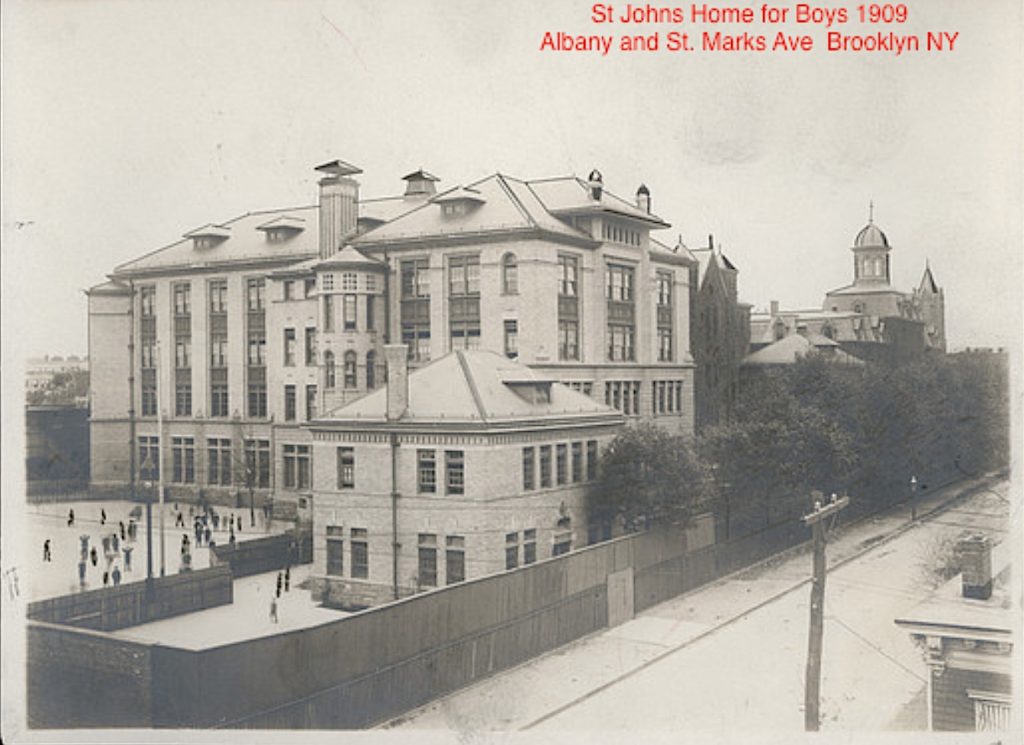
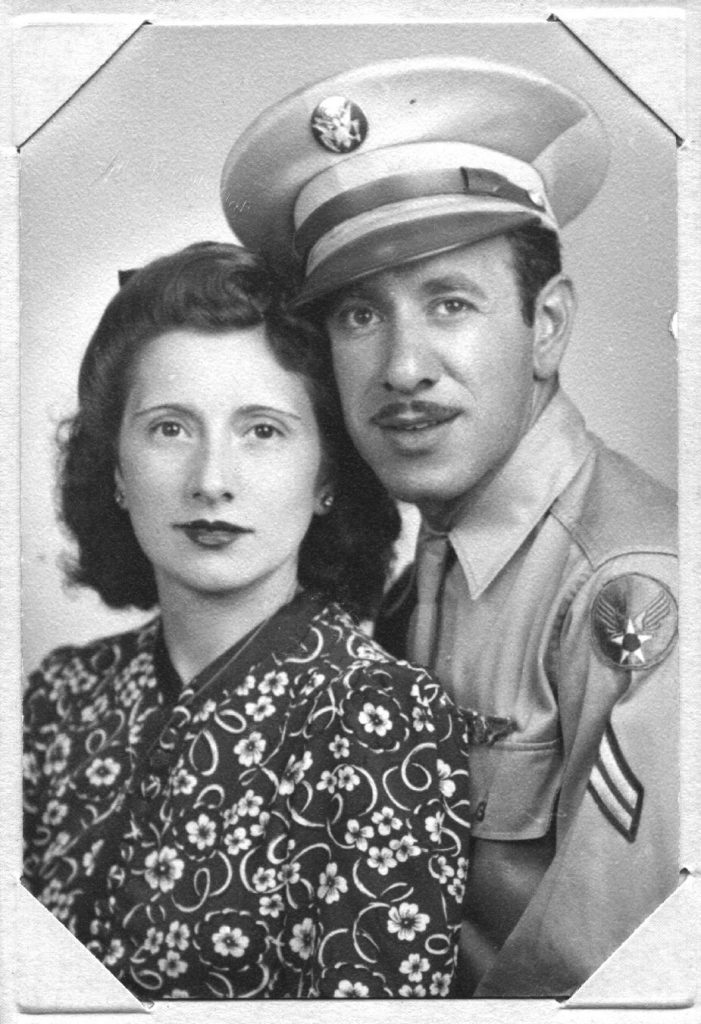
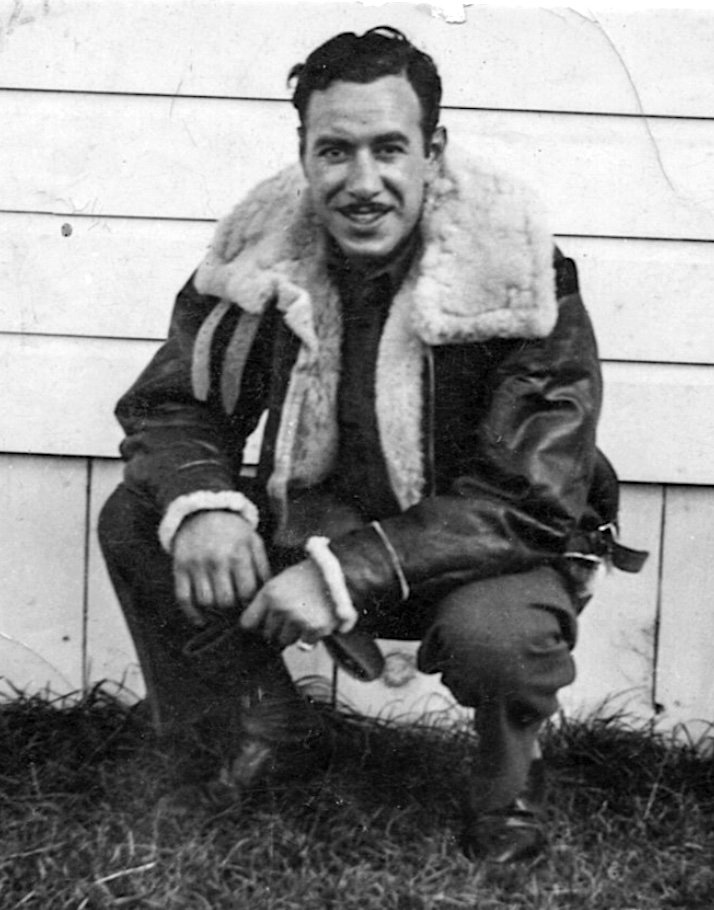
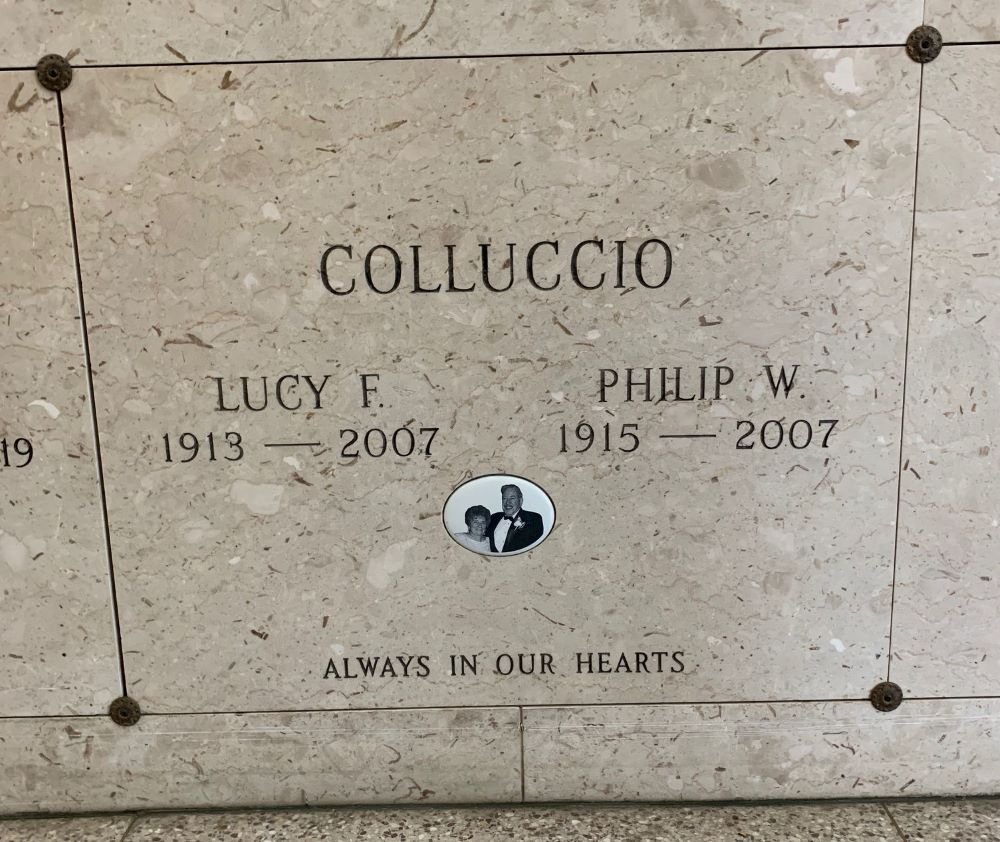
COMMONER, BARRY (1917-2012). Lieutenant, United States Navy. scientist and environmental activist. Barry Commoner was born in Brooklyn. The 1930 federal census shows the “Comenar” family living at 1082 East 32nd Street in Brooklyn. Parents Isidor, age 47, and Gussie, age 44, had been born in Russia, were Jewish, and could speak English. In addition to Barry, there was a daughter, Florence, age 19. The New York Times obituary explains that “the original family name, Comenar, was Anglicized” to Commoner. His October 1, 2012 obituary in the Los Angeles Times discloses that “Commoner was the son of a Russian Jewish tailor and seamstress. He ran with a street gang as a youth but discovered a passion for biology in high school.” The New York Times mentions his mother as “the former Goldie Yarmolinsky,” and reports that Barry Commoner went to James Madison High School in Brooklyn, then earned a bachelor’s degree in zoology with honors from Columbia University in 1937. He received his master’s degree in 1938 and a doctorate in cellular biology in 1941, both from Harvard University, then began his teaching career as a biology instructor at Queens College, 1940-1942.
Barry Commoner’s draft registration card, signed on October 16, 1940, when he was 23 years old, lists his address as 1082 East 32nd Street in Brooklyn, with his mother, Mrs. Gussie Commoner, residing at the same address, listed as his contact. Barry Commoner was 5′ 11″ tall and weighed 150 pounds, with brown eyes, black hair, and a dark complexion. He wore eyeglasses and was employed at Queens College in Flushing, New York. Dr. Commoner served as a lieutenant in the United States Navy as a science officer during World War II. “He took part in spraying Pacific islands against insect-borne diseases with the new wonder chemical DDT, unaware as yet that indiscriminate use of such toxins was an invitation to environmental disaster,” according to the website encyclopedia. On October 3, 2012, the Chicago Tribune noted, in Dr. Commoner’s obituary: “To his dismay, the mosquito population ballooned and the fish that normally ate them died. He would recall the experience later when he reflected on the development of his ideas about the worlds of men and nature sharing one ecosystem.”
By the time of the 1950 federal census, Dr. Commoner was living in St. Louis, Missouri, at 210 Millbrook Boulevard and had married Gloria Gordon, a St. Louis psychologist. He was working as a professor of plant physiology at Washington University, researching viruses and genetics, and was part of a team that discovered that abnormal free radicals may be the earliest sign of cancer in laboratory rats.
Dr. Commoner’s October 1, 2012 obituary in the Los Angeles Times sums up his exceptional career:
In the mid-1950s, alarmed by the proliferation of nuclear tests, he helped organize scientists as the Committee for Nuclear Information. Later called the Committee on Environmental Information, it conducted a nationwide study that found levels of strontium-90 in babies’ teeth. The alarming findings were a crucial factor in President Kennedy’s support of the 1963 nuclear test ban treaty. That work led Commoner to develop his ideas about the effect of technology on the environment. He began to examine an array of environmental problems, including sewage, pesticides, auto pollution and atomic power plants. In 1966 he founded the Center for the Biology of Natural Systems at Washington University in St. Louis, the first environmental research center of its kind in the United States. He moved the center to Queens College in Flushing, New York in 1981.
In 1970, the year of the first Earth Day, Dr. Commoner appeared on the cover of Time magazine and was referred to as the “Paul Revere of Ecology.” His 1971 bestselling book The Closing Circle suggested that the United States economy should be restructured to conform to ecology’s laws, argued polluting products should be replaced with natural products, and brought the idea of sustainability to a mass audience. Subsequent books by Dr. Commoner became best-sellers: The Poverty of Power (1976), and Making Peace with the Planet (1990).
He entered the 1980 United States presidential race as a third-party nominee. According to an October 2, 2012 Boston Globe obituary, he received about 234,000 votes as the head of his Citizens’ Party.
On August 26, 1980, Dr. Commoner, age 63, married Lisa M. Feiner, age 35, in Wisconsin. The bride was a Wisconsin resident. Dr. Commoner resided at 52 Remsen St., #A, in Brooklyn Heights, in 1988, according to the United States Public Records Index, 1950-1993.
Dr. Commoner died in a hospital in Manhattan on September 30, 2012. He was a resident of Brooklyn at the time of his death. According to numerous obituaries, he was survived by his wife Lisa as well as two children from his first marriage, Lucy Alison Commoner and Frederic Commoner, and a granddaughter. Section 36, lot 45467.
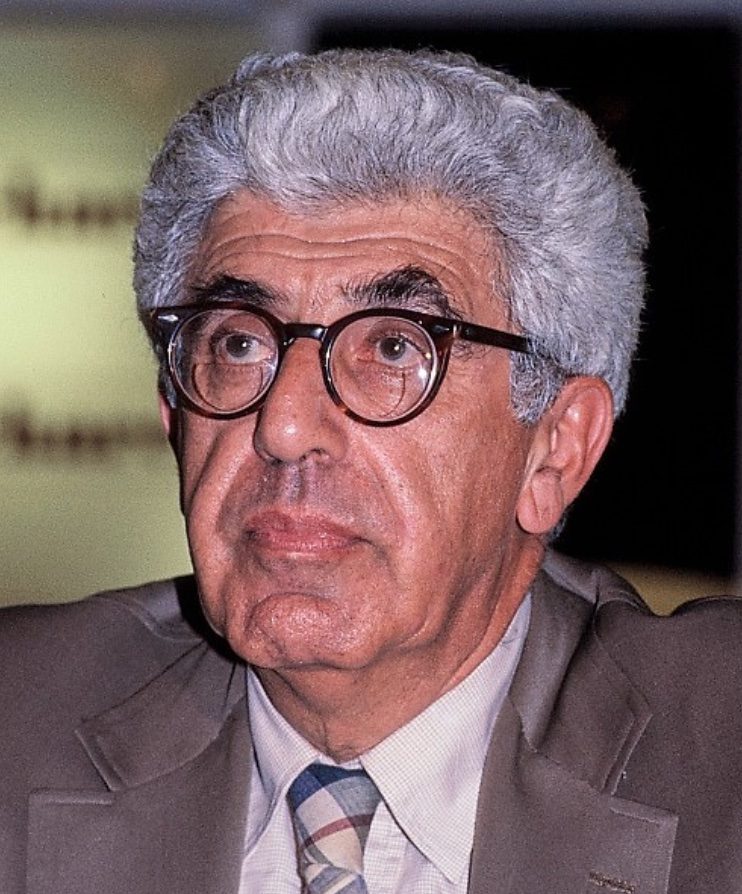

CONGIUSTA, ANTHONY D. (1924-2016). Sergeant, 346th Infantry Canon Company, United States Army. According to the New York birth index, Congiusta was born in Brooklyn. As per the 1930 census, he lived with his older brother, Alfred, older sister, Mary, and younger brother, Pasquale. The sixteen-year-old Alfred is listed as head of the household, and his occupation as shipping clerk in the lighting industry. The 1940 census states that his father and mother, Joseph and Jennie, immigrated from Calabria, Italy. Sixteen-year-old Anthony, his twenty-eight-year-old brother, Leonard, and his fourteen-year-old brother Patsy (Pasquale) are also listed in the household. The family resided at 1264 64th Street and his father and older brother co-owned a poultry market.
According to his son, Anthony graduated from Brooklyn’s New Utrecht High School, class of 1942. His World War II draft card notes that his registration date was December 14, 1942, he was 18 years old, and his father was named as next of kin. He is described as 5′ 11″ tall, 152 pounds, with brown hair, gray eyes, and dark complexion. His registration card lists his middle name as “Domnick” and his employer as “student.”
As per his World War II enlistment record, he enlisted on March 20, 1943, had completed four years of high school, and entered service as a private. It erroneously records his height as 88″ (7′ 4″) and his weight as 105 pounds. According to his son, Congiusta was stationed in France and Germany during World War II, and took part in battles in the Ardennes, Central Europe, and the Rhineland. His military specialty was radio operator, low speed. He was awarded the American Service Medal, the European-African-Middle Eastern Service Medal, the Good Conduct Medal, and the World War II Victory Medal.
On May 29, 1950, Conguista obtained a marriage license; his spouse was Anna R. Agostino. However, his son shared that the couple married on July 4, 1950. The couple had three children. According to his son, Anthony worked for the Dole Food Company for forty-two years. In 1980, his residence was 2115 64th Street, Brooklyn. He died at the age of ninety-one. Section P, lot 39847, grave 2.

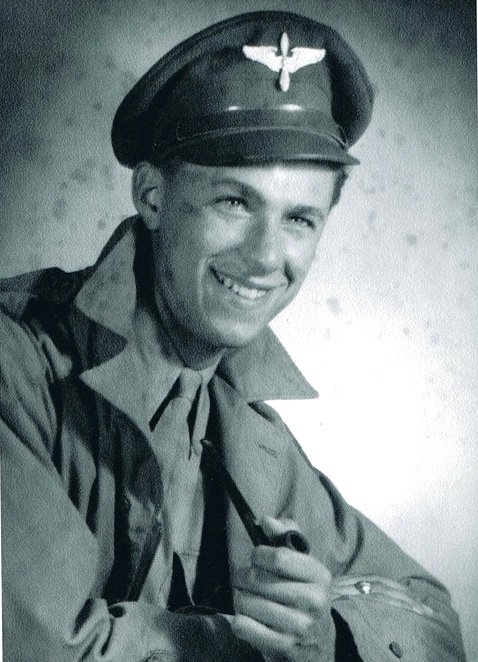
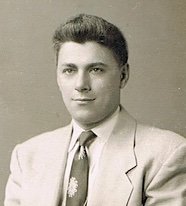
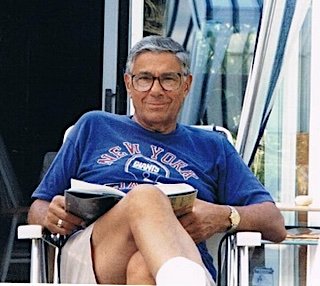
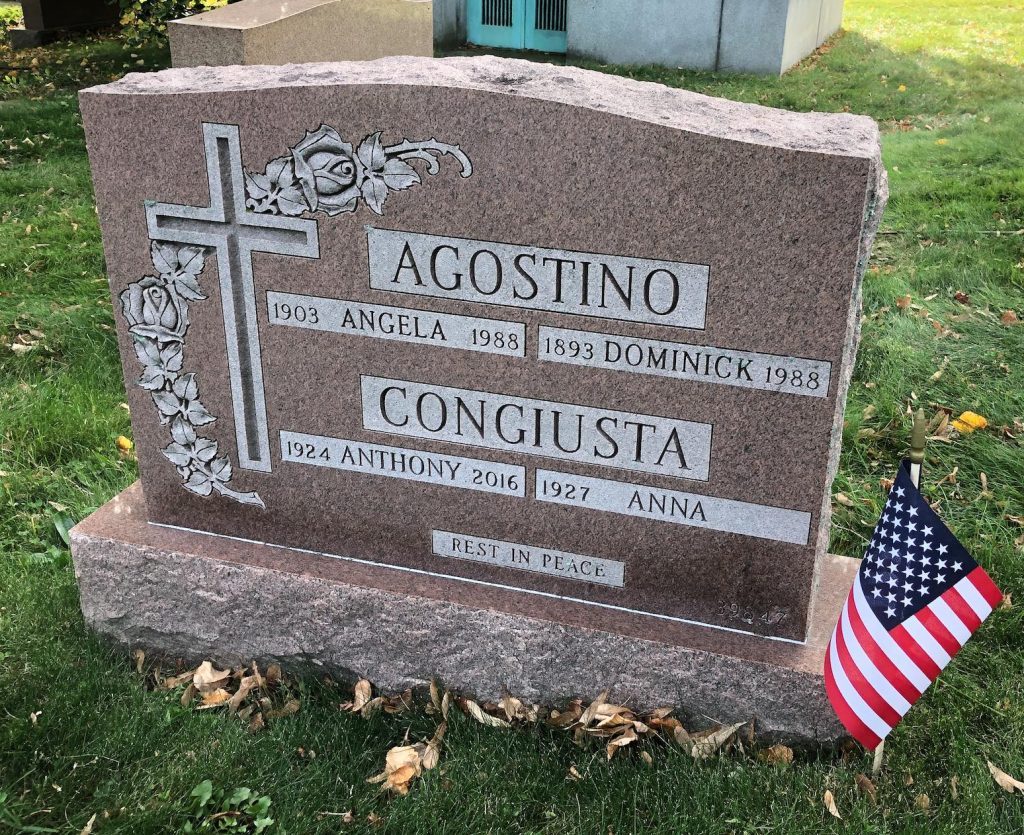
CONTI, VINCENT JOSEPH (1918-2002). Private, 230th Anti-Aircraft Artillery Battalion, United States Army. Vincent Joseph Conti was born in Brooklyn to Salvatore Conti and Seraphina (Sophie) née Figlozzi. Both of his parents had been born in Italy and immigrated to the United States before 1900. According to the 1920 federal census, the Conti family resided on Fourth Avenue in Brooklyn. Salvatore worked as a shoemaker in a factory. One-year-old Vincent was the youngest of nine Conti children still living at home.
By 1925, according to the New York State census, the Contis lived on Dahill Road, with the addition of younger sisters Dorothy and Evelyn and daughter-in-law Mary. Sons George and Dominick followed their father into the shoe trade. In 1930, according to that year’s federal census, there were still nine children living at home; five of them were of school age. At the end of that year, Vincent’s father, Salvatore, died. His name is listed first on the Conti family headstone in Green-Wood.
In 1940, 21-year-old Vincent Conti was working as a pharmacist at Active Drugs on Flatbush Avenue and living on Dahill Road with his mother and five of his siblings. His older brother Frank was also a pharmacist. Conti’s draft registration form of the same year described him as 5′ 6″ tall, with brown eyes, black hair, and a dark complexion.
Conti was inducted into the United States Army as a private on December 14, 1943. By then he was living in Hudson, New Jersey. His enlistment record notes that he had completed three years of high school and that his civil occupation category was “skilled compositors and typesetters.” His previous employment as a pharmacist was not mentioned. The Brooklyn Daily Eagle reported that Private Vincent J. Conti was at Fort Bliss, Texas, while his brother Frank W. Conti was in the Navy at Key West, Florida.
Fort Bliss became the center of Anti-Aircraft Artillery (AAA) training during World War II. It was also the site of an internment camp for Prisoners of War and another camp for German, and Italian-Americans, and for Japanese-Americans from Hawaii, who were arrested as potential fifth columnists. After the war, Fort Bliss was the location of German aerospace engineers recruited during the government’s Operation Paperclip, a secret intelligence campaign that recruited former German scientists, engineers and technicians.
According to his obituary, Conti served with the 230th AAA Battalion in the Pacific Theater of the war. The 230th was what was known as a “searchlight” battalion, responsible for operating 60″ defensive searchlights that spotted and then continued to illuminate enemy aircraft for targeting by anti-aircraft artillery and friendly fighter planes. The 230th, based in Hawaii, operated in the Philippines and eventually on Okinawa during the war.
According to marriage records, Conti married Josephine Giamonna, in Brooklyn, on June 17, 1947. He returned to his work as a pharmacist and was a third and fourth Degree member of the Knights of Columbus, according to his obituary. From 1951 to 1984, Conti was director of pharmacy at the Hospital for Special Surgery in Manhattan. He also lived in Staten Island, New Jersey, and finally, in Maine. He and his wife had two sons: Vincent S. and John M. Conti. Section J, lot 35931, grave 5.
